TRAVEL GUIDE
HELSINKI
The culinary centre of Europe bursting with celebration
TRAVEL GUIDE
BROOKLYN
A rustic diamond in the treasure trove of New York City

TRAVEL GUIDE
The culinary centre of Europe bursting with celebration
TRAVEL GUIDE
BROOKLYN
A rustic diamond in the treasure trove of New York City
Outstanding indigenous wildlife and endless adventurous pursuits TRAVEL GUIDE
A TRAVEL PHOTOGRAPHER WHOSE CATALOGUE SPANS CONTINENTS, CULTURES, AND CLIMATES, BEN PIPE SHOWCASES SOME OF HIS MOST EXCITING WORK























Africa Outlook, APAC Outlook, EME Outlook, North America Outlook, Mining Outlook, Healthcare Outlook, Manufacturing Outlook, and Supply Chain Outlook are digital publications aimed at boardroom and hands-on decisionmakers, reaching an audience of more than 800,000 people around the world. With original and exclusive content compiled by our experienced editorial team, we look to promote the latest in engaging news, industry trends and success stories from across the globe. Your company can join the leading industry heavyweights enjoying the free exposure we provide across our platforms with a free marketing brochure, extensive social media saturation, enhanced B2B networking opportunities, and a readymade forum to attract new investment and to help you grow your business. Visit www.outlookpublishing.com/work-with-us for details on how your company can feature for free in one of our upcoming editions.
Head of Editorial: Jack Salter
jack.salter@outlookpublishing.com
Senior Editor: Lucy Pilgrim lucy.pilgrim@outlookpublishing.com
Editor: Lily Sawyer lily.sawyer@outlookpublishing.com
Editor: Ed Budds ed.budds@outlookpublishing.com
Junior Editor: Rachel Carr rachel.carr@outlookpublishing.com
Junior Editor: Lauren Kania lauren.kania@outlookpublishing.com
PRODUCTION
Art Director: Stephen Giles steve.giles@outlookpublishing.com





Senior Designer: Devon Collins devon.collins@outlookpublishing.com

Designer: Louisa Martin louisa.martin@outlookpublishing.com
Production Manager: Alex James alex..james@outlookpublishing.com
Digital Marketing Director: Fox Tucker fox.tucker@outlookpublishing.com
Web Editor: Oliver Shrouder oliver.shrouder@outlookpublishing.com
Social Media Executive: Jake Crickmore jake.crickmore@outlookpublishing.com
BUSINESS
Chief Executive Officer: Ben Weaver ben.weaver@outlookpublishing.com
Managing Director: James Mitchell james.mitchell@outlookpublishing.com
Chief Commercial Officer: Nick Norris nick.norris@outlookpublishing.com
Training & Development Director: Joshua Mann joshua.mann@outlookpublishing.com
Business Development Director: Thomas Arnold thomas.arnold@outlookpublishing.com
TRAVEL GUIDES
Head of Projects: Deane Anderton deane.anderton@outlookpublishing.com
Project Manager: Alfie Wilson alfie.wilson@outlookpublishing.com
Project Manager: Joseph Perfitt joseph.perfitt@outlookpublishing.com
Project Manager: Krisha Canlas krisha.canlas@outlookpublishing.com
ADMINISTRATION
Finance Director: Suzanne Welsh suzanne.welsh@outlookpublishing.com
Finance Assistant: Suzie Kittle suzie.kittle@outlookpublishing.com
Finance Assistant: Victoria McAllister victoria.mcallister@outlookpublishing.com
CONTACT
Outlook Travel magazine
Norvic House, 29-33 Chapelfield Road
Norwich, NR2 1RP, United Kingdom
Sales: +44 (0) 1603 363631
Editorial: +44 (0) 1603 363655
SUBSCRIPTIONS
Tel: +44 (0) 1603 363655 jack.salter@outlookpublishing.com www.outlooktravelmag.com
Twitter: @outlooktravel1
Instagram: www.instagram.com/outlooktravelmagazine
Linkedin: www.linkedin.com/showcase/outlook-travel-magazine
Facebook: facebook.com/outlooktravelmag

Welcome to our 17th edition of Outlook Travel magazine.
Time moves at its own pace on the quiet, unspoiled oasis of St Kitts, where the art of enjoying life is taken seriously.
Slow and gentle living in the Sugar City is as sweet as the spirit of the people is proud, warm, and welcoming.
Meeting the locals is among the island’s innumerable allures, along with its rich culture, vibrant history, and captivating traditions.
“One of the most enchanting qualities of St Kitts is undeniably her people,” says Honourable Marsha T. Henderson, Minister of Tourism at the St Kitts Tourism Authority.
“We welcome visitors with open arms, so whether you’re exploring local markets, attending a festival or event, or relaxing on the beach, you’ll be greeted with warmth and hospitality.”
The people of Finland likewise enjoy life’s simple pleasures and, curiously, consume the most coffee and ice cream per capita in the world.
Leena Lassila, Director of Visitor Attraction at Helsinki Partners, suggests the best spots for authentic cuisine in the Finnish capital and the world’s happiest city, which has earned a reputation for outstanding culinary experiences.
“We are proud of our wide selection of restaurants, cafés, and food experiences in the city – there is always something new and exciting for visitors to try!” excites Lassila.
If you’re craving to find out more about New York City’s most populous borough, meanwhile, go beyond major tourist spots such as the iconic Brooklyn Bridge and immerse yourself in its undeniably authentic atmosphere, which can be felt up and down every sidewalk.
Each of Brooklyn’s 51 energetic and charming neighbourhoods has a distinctively unique character that is well worth exploration.
“We’ve really got it all here – a short walk of just a few blocks and it can feel like a completely different place,” prides Randy Peers, President and CEO of the Brooklyn Chamber of Commerce.
This issue also guides you through the dramatic limestone outcrop of Gibraltar, the unparalleled beauty and irresistible charm of Anguilla, the complex and culturally rich islands of the Philippines, and more.
Enjoy your read and happy travels!
Jack Salter Head of Editorial, Outlook Publishing






Discover the power of mobile engagement with Outlook Travel magazine’s social media platforms.

Our Instagram feed showcases inspiring photographs of the destinations we cover, as well as featuring shots of our favourite hand-selected hotels.
Meanwhile, our Twitter feed keeps you up-to-date with the latest travel news and provides you with a dedicated network of travel professionals to connect with. You can also find us on Facebook and LinkedIn.

Follow us on social media for updates and travel inspiration


Where the Earth awakens
Discover an authentically warm and welcoming island
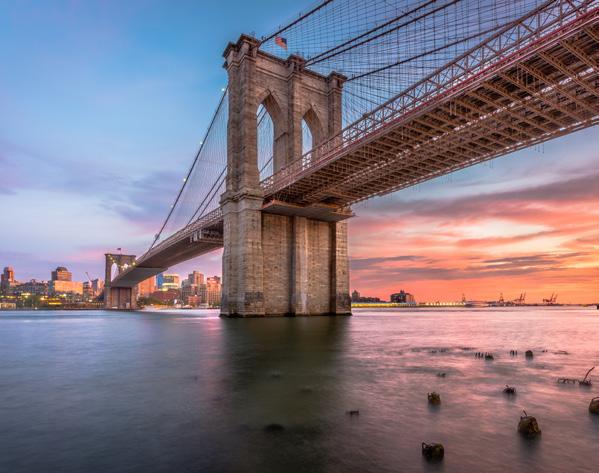
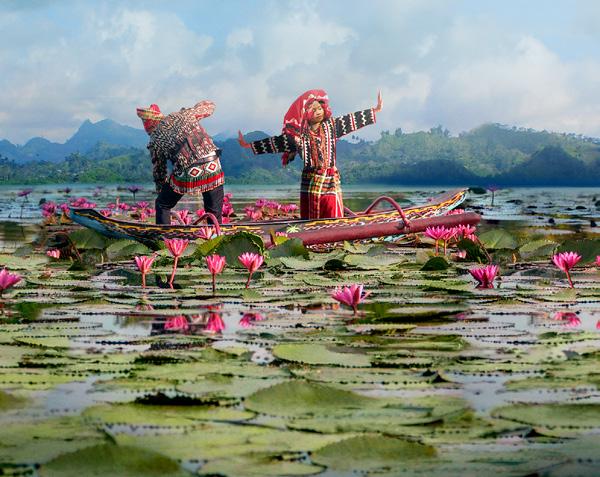
Thousands of islands graced with irresistible charm
Europe’s showpiece
The culinary centre of Europe bursting with celebration
A rock honeycombed with history
Sun-dappled splendour
An
A
The Canadian treasure you need to visit
A cultural epicentre of history and tradition
A rustic diamond in the treasure trove of
Outstanding indigenous wildlife and endless adventurous pursuits
An idyll for adventurers, beach
Exploring life through a different lens
Achieving a balance between humanity and the ocean

INTENDED TO REDUCE queues, improve the passenger experience, and detect potential threats efficiently, high-tech scanners will soon be introduced at airport security across the UK.
The computed tomography (CT) scanners’ advanced X-ray technology creates 3D images of objects to help staff better identify the contents of a passenger’s bag. As such, the current 100 millilitre (ml)

limit for cabin baggage is anticipated to be scrapped.
London City Airport has already introduced the technology, whilst trials are underway at Heathrow.
Elsewhere in Europe, the technology has been in operation for some time. Amsterdam’s Schiphol Airport introduced the CT scanners in May 2021, whilst Shannon Airport in Ireland lifted its limit on liquids 18 months ago.
SOMABAY IS CELEBRATING Ocean
Month with an exciting programme of sustainability-focused events this June. Marine conservation panel discussions will be an integral part of the busy programme, as well as educational boat trips to the nearby Red Sea.
TRAVEL COMPANY TUI Group (TUI) has stepped in to assist those affected by the demise of German tour operator, FTI Touristik (FTI).
TUI will take over support of FTI customers who intend to travel to destinations such as the Balearic Islands, Greece, the Maldives, Mexico, Cuba, and the Dominican Republic this summer.
By partnering with various hoteliers and tourist boards, as well as local authorities in Spain, Greece, Turkey, and Egypt, TUI hopes to support holidaymakers and ensure their trips go ahead.
The assistance comes after the Munich-based group, formerly Europe’s third-largest tour operator, filed for insolvency earlier this year despite a €125 million investment from a Certares-led consortium in April.

Other events include a series of ocean clean-ups in collaboration with local hotels, introductory diving lessons for resort guests and residents, and marine biodiversity education sessions for children.
In addition, for World Sea Turtle Day on 16th June, the resort is partnering with Turtle Watch Egypt at S. Cape Beach Club, furthering its commitment to marine conservation.
VIETNAM AIRLINES HAS recently signed a cooperation agreement to participate in CO2 Connect, an International Air Transport Association (IATA) project to measure airlines’ CO2 emissions.
As the national air carrier for Vietnam, the airline is the country’s first to join the project. Under the agreement, Vietnam Airlines will share operational data with IATA. Using this data, the association’s emissions calculator uses industry standard RP-1726 methodology to calculate
HOSTED BY THE Department of Tourism (DoT) in Cebu, the Philippines, the first-ever UN Tourism Regional Forum on Gastronomy Tourism for Asia and the Pacific is due to run from 26th to 27th June this year.
Expected to draw over 300 attendees, including the likes of ministers from UN member states,
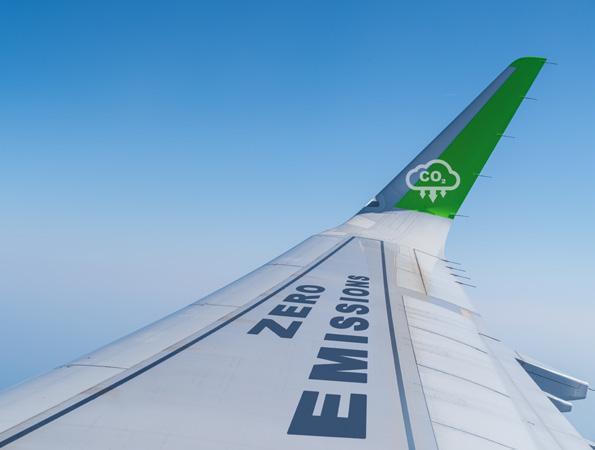
CO2 emissions per passenger for each route and aircraft.
By participating in the project, Vietnam Airlines demonstrates its commitment to sustainability and the global goal of achieving net zero emissions by 2050 in line with the country’s pledge at COP26 in 2021.
affiliates, and tourism stakeholders, the forum will discuss the policy framework for the development of food tourism in the region.
It will also outline cost-effective and environmentally conscious strategies to reduce food waste, promote local produce, and discuss best practices in gastronomy.
Attendees will also be able to sample Filipino flavours in a showcase by the country’s best chefs.
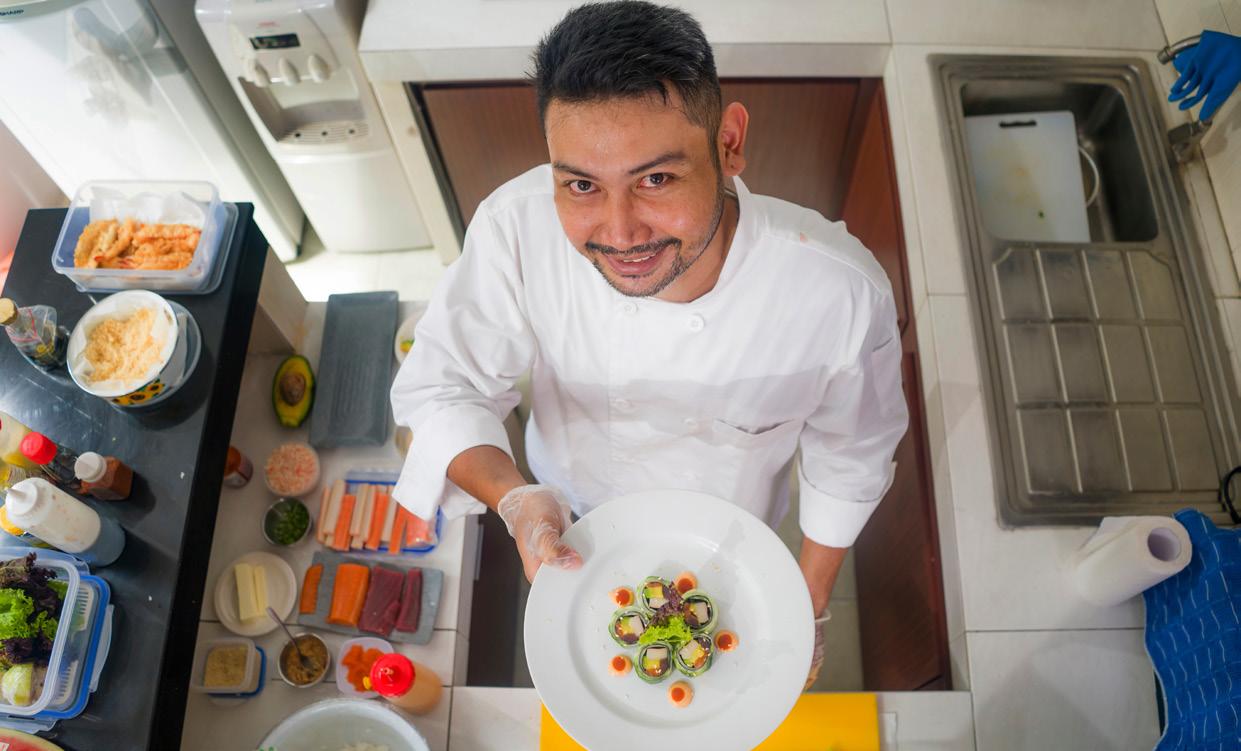
THE YUNTAI MOUNTAIN Waterfall in China finds itself at the centre of some unusual controversy after a hiker discovered a pipe at the top of the rockface that is seemingly responsible for the flow of water.
A video clip depicting the pipe received millions of views online, prompting operators of the Yuntai Mountain Geopark to comment.
The park’s officials revealed that the ‘small enhancement’ was made during the region’s dry season, reportedly to limit dissatisfaction amongst visitors if water was not flowing.
The waterfall, which stands at just over 1,000 feet, is currently China’s highest waterfall and one of the country’s favourite tourist attractions. Many believe its reputation could be in jeopardy following the discovery of the infamous pipe.
TOURISM DESPITE THE COUNTRY enjoying its sought-after status as a leading Spanish tourist destination, residents of Tenerife have taken to the streets to protest overcrowding.
The public demonstration calls for a temporary limit on tourism to curb an increase in short-term holiday rentals, address environmental concerns, and pause hotel construction that is reportedly driving up local housing costs.
However, over 35 percent of the country’s gross domestic product (GDP) is generated by tourism.
As such, authorities are expected to draft a law that strengthens rules on short lets to satisfy the demands of local people.



As a travel photographer whose extensive catalogue spans continents, cultures, and climates, Ben Pipe showcases some of his most exciting work. From his recent pursuits in Nicaragua and Costa Rica to the arid plains of South Africa, Ben reflects on his career to date and shares his ambitions for the future
Writer: Lily Sawyer | Photography: Ben Pipe
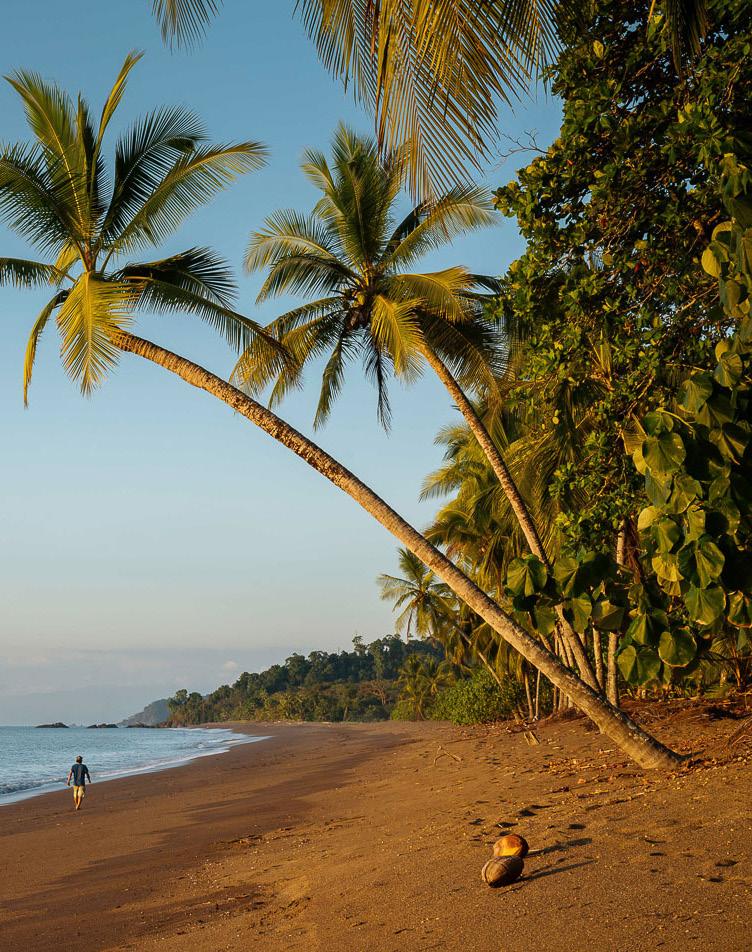
In the ever-changing landscape of travel photography, staying abreast of evolving trends and digital advancements can pose unique challenges.
Armed with a collection of prestigious accolades as a two-time finalist for the Travel Photographer of the Year (TPOTY) and having shot five feature assignments for National Geographic Traveller magazine, Ben is well equipped to navigate potential obstacles within the industry.
As such, he emerges as a celebrated professional not only in travel, but in lifestyle, architectural, and interior photography.
Ben’s love for photography can be traced back to his 15th birthday, when he was gifted an Olympus OM1 camera, sparking his creative interest. Just a handful of years later, he emerged from university with a first-class degree in photography.
Today, Ben’s work has transported him to over 70 countries and counting. From the Accursed Mountains of Albania to the raw beauty of Kruger National Park in South Africa and the majestic peaks of the Himalayas in Nepal, Ben revels in the opportunity his work presents him to capture the often-complex cultures and unique landscapes of these sought-after locations.
Prestigious contracts from global brands such as Chevron in Kazakhstan and Chrysler-Jeep in Hong Kong are a testament to Ben’s professionalism, competence, and deep understanding of client requirements.
With plans to add to his ever-growing repertoire of international pursuits, Ben hopes to continue capturing the very essence of Earth’s most exciting destinations through his photography.
Outlook Travel (OT): Firstly, what drew you to work in travel photography?
Ben Pipe (BP): I was always interested in art as a child, and photography was a natural progression. At school, we had to choose between those two subjects as optional GCSEs, as you couldn’t do both, so I had to make a choice.
My uncle, David Norton, is a renowned travel photographer, and seeing the postcards of the exotic destinations he had visited to shoot inspired me to follow his career path and see the world through my art.
OT: What do you find most exciting about this kind of work?
BP: I enjoy the variety of being a freelance photographer. This job has given me such privileged access to so many incredible places and people, and hopefully there is more still to come.
OT: On the flip side, what are the biggest challenges?
BP: Making a living from travel photography is certainly

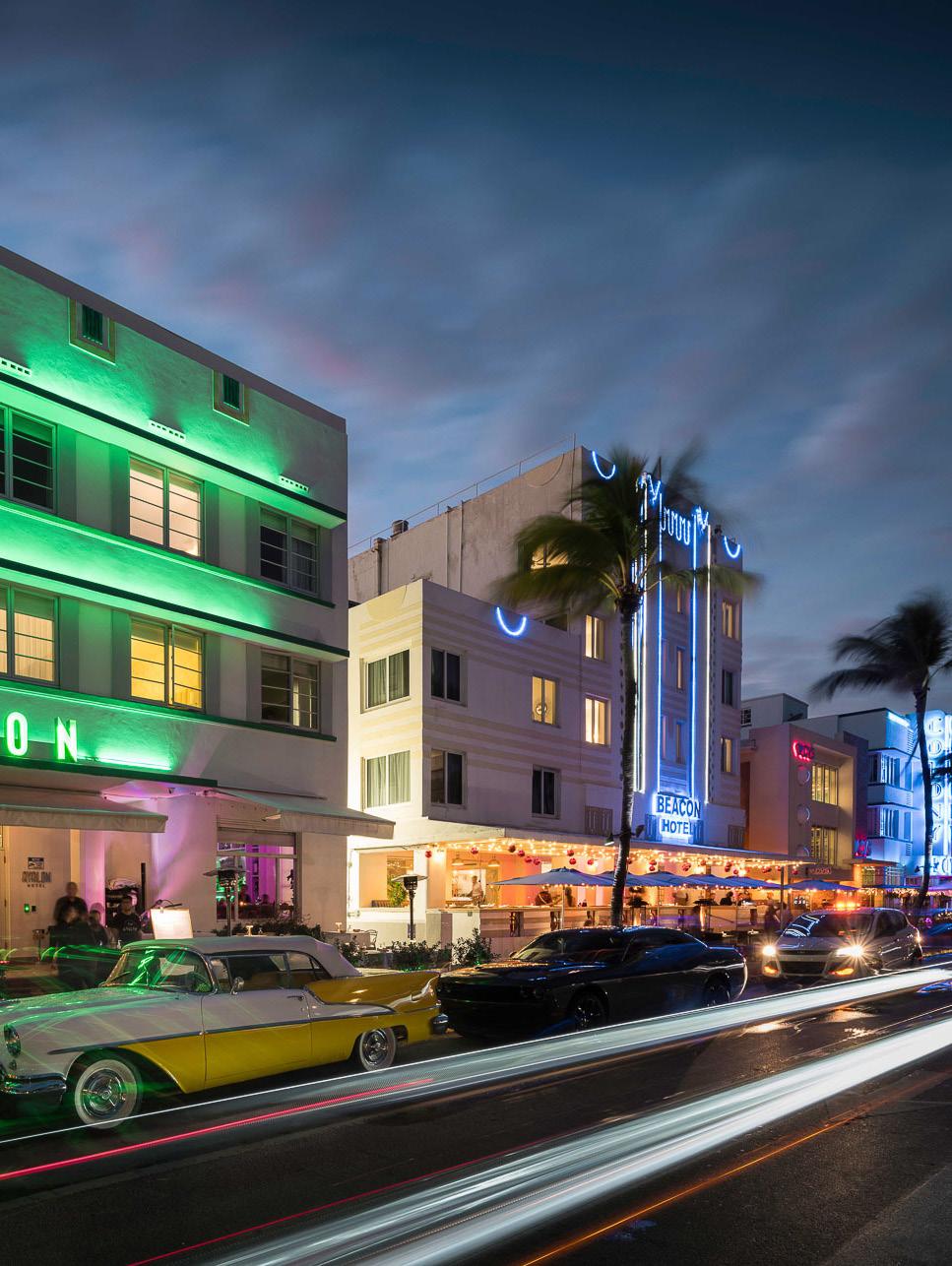

a challenge. In the past, good photographers could live off the stock sales from their shoots. However, since the dawn of the digital age and the birth of the internet, the value per image has come down significantly, which means photographers today have to find other ways to make income.
For me, that has been about commercial photography, particularly shooting architecture and interiors for clients in and around London.
OT: How would you describe your style of photography?
BP: Often, my travel work is about trying to capture tradition in foreign cultures, which is a romantic way of viewing the world. I also aim for pictorial work that showcases the beauty and drama of nature.
Then, some of my architectural photography can be about showing geometry and symmetry in man-made structures, and sometimes, I just enjoy documenting rare or unusual lighting on a subject.
OT: What has been one of your favourite destinations to capture?
BP: Photographing the Himalayan mountains in Nepal was a great experience. I spent six weeks shooting personal work in the country, so I had the opportunity to conduct extensive exploration; it was so different to anywhere else I had ever been.



OT: Have you been involved in any interesting assignments or projects recently?
BP: I was assigned to photograph South Africa for National Geographic Traveller magazine, which was a dream job. The writer and I spent nine days in the Kruger and Marataba National Parks, doing safari drives and hikes every day. It was a truly magical time, and I shot so much great work.
OT: Finally, what’s next for the future? Are there any new destinations you’d like to cross off your bucket list?
BP: There are always so many places still to visit! I’ve just returned from Costa Rica and Nicaragua, and I would love to revisit Vietnam and Japan as I feel like I could do a much better job shooting with more current photography equipment and years of experience. Jordan, Egypt, Canada, Bhutan, and Norway are also all on my to-do list going forwards.

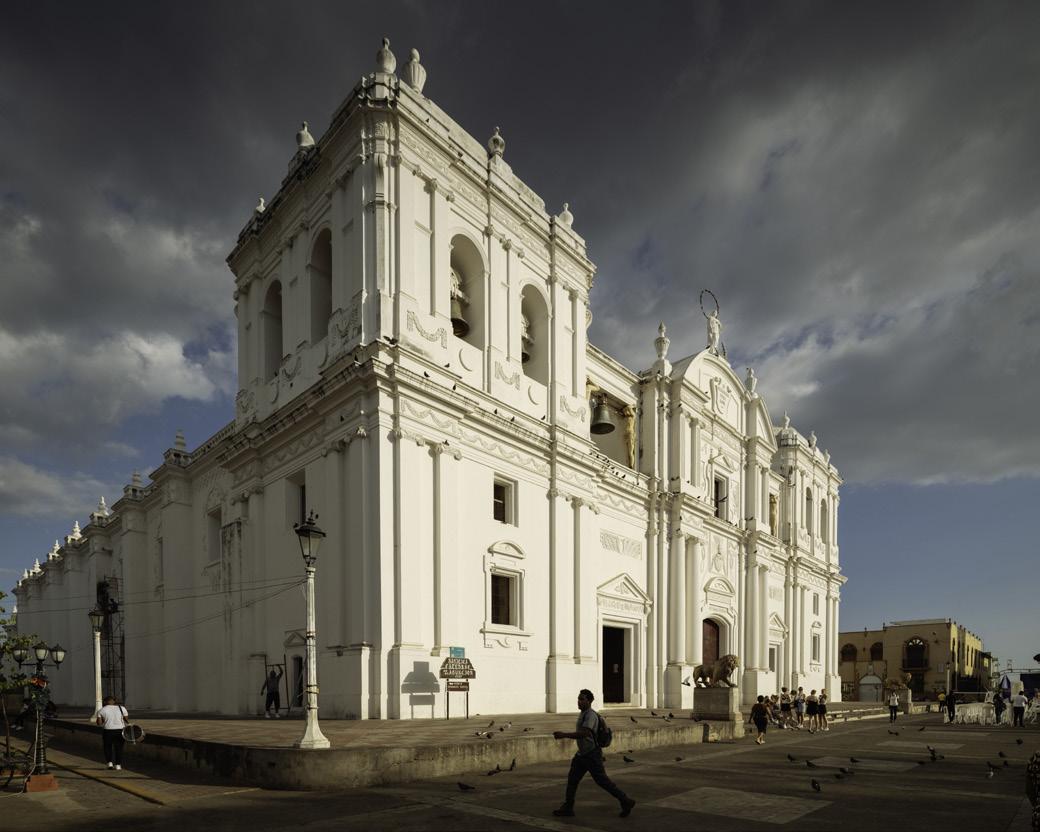


HOW I GOT THIS PHOTO :
BP: Getting to Wolfberg Arch in the Cederberg Mountains of South Africa required a strenuous hike and, being one of the hottest days of the year, nobody else had braved the conditions; this meant I had the arch to myself at golden hour.
The sun was behind clouds for most of that last hour, but in the final five minutes before the sun set, it passed below the clouds and illuminated the scene in this rich, warm glow. I’ve got a big print of this particular photograph at home to remind me of the perseverance needed for great work.
Ben Pipe: 07743 639702 info@benpipe.com www.benpipe.com


As Germany welcomes the EURO 2024 football tournament, cities staging the summer
WRITER: JACK

HOW: Travel to the city centre is convenient from Berlin Brandenburg Airport, which is located 30 kilometres (km) to the south-east. To get to Berlin by train, Berlin Central Station is the main transfer point between long-distance and local transport services. From here, you can easily reach some of the city’s iconic sights on foot, by bike, or via public transport. continent to this year’s tournament, we round up the 10 host summer showpiece


A thriving cosmopolitan metropolis in the heart of Europe, Berlin pulsates as one of Germany’s most exciting and diverse cities.
The capital is brimming with culture and a moving history, one that hardly any other city has experienced. Memories of the Berlin Wall are still very much alive, with remnants of the former Cold War divide between East and West remaining a physical part of the urban fabric to this day, 35 years after it fell.
Along with sightseeing opportunities of historical significance, Berlin’s trendy neighbourhoods also
offer countless restaurants and clubs, making it a destination of choice for people the world over.
The EURO 2024 final will be held on July 14th at Olympiastadion Berlin, which has a capacity of 71,000 and is the tournament’s biggest venue.


Sat on the picturesque River Rhine, Cologne is Germany’s oldest city and home to the country’s most visited landmark.
Cologne Cathedral, a UNESCO World Heritage Site since 1996, attracts an average of six million people a year and stands as the world’s tallest twin-spired church. Construction of this Gothic masterpiece, which began in 1248, took place in several stages and was not completed until 1880.
The cathedral is a powerful testimony to the strength and persistence of Christianity in both medieval and modern Europe, containing unique treasures such as the Shrine of the Three Kings.
Cologne Stadium, the home of 1. FC Köln, is hosting five matches during EURO 2024 – four group games and a Round of 16 fixture.

HOW: Cologne Bonn Airport and Cologne Central Station both have frequent connections to major European cities by air and rail, respectively. Once in the city, it is pedestrian-friendly and easy to explore all the main sights.



Once predominantly known for coal, steel, and beer, the vibrant and lively cultural heart of the Ruhr region has evolved into a major technology hub over the past half a century.
With its rich sporting heritage on show at the German Football Museum, the city lives and breathes the beautiful game and is home to the internationally renowned powerhouse, Borussia Dortmund. The club’s ground, BVB Stadion Dortmund, is staging six games during the tournament, including one of the semi-finals.
The sport plays a significant role in the community, which eagerly awaits the arrival of fans from across Europe for this summer’s showpiece. Expect a warm welcome from the residents of Dortmund as you explore the city’s exciting industrial culture and embrace the football festivities.
To truly experience Dortmund, visit its energetic bars and local pubs, where you can enjoy both traditional and modern dishes and drinks.
HOW: By air, Dortmund Airport and Düsseldorf Airport are both good options. Dortmund Central Station is the main transport hub, with around 130,000 daily travellers and 16 platforms just a few minutes’ walk from the centre. Navigating between key sites in this city of short distances is a breeze.


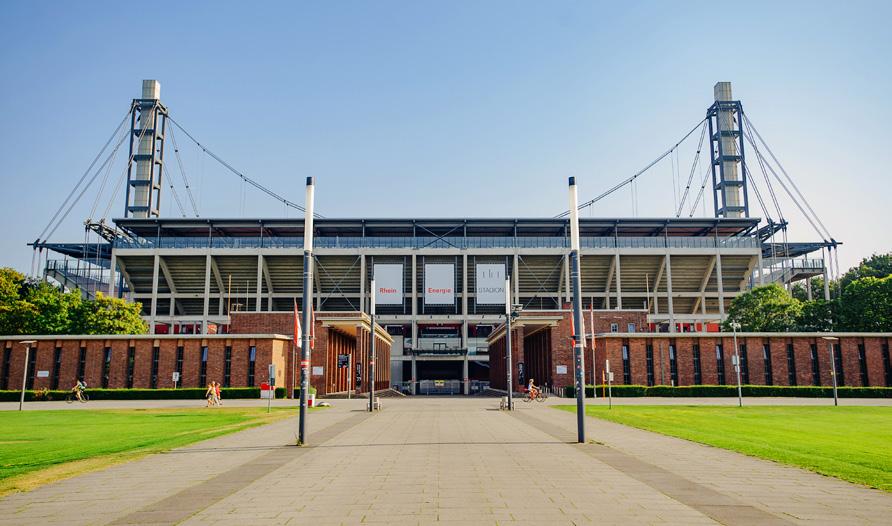

Everything is close at hand in the capital of North Rhine-Westphalia, as the country’s only major city to retain the German word for ‘village’ in its name – ‘dorf’.
Düsseldorf’s Altstadt (Old Town) is a celebration of beer culture like no other and has been dubbed ‘the longest bar in the world’. With over 250 beer houses and restaurants packed into half a square kilometre, you will not be short of places to eat and drink.
Interaction with the locals comes easily here, particularly over a drink at a local brewery, as their warm demeanour shapes life in this village city. A short walk from the central station, the Little Tokyo area of Düsseldorf is also home to Europe’s third-largest Japanese community after London and Paris, offering high-quality sushi, ramen, and soba.
The Fortuna Kiosk marks the start of the Rhine Walk, which offers a scenic route to the 47,000-seater Düsseldorf Arena, where five EURO 2024 games will be played, including one of the four quarter-finals.
HOW: Düsseldorf Airport is Germany’s third largest, and a central hub for international air traffic, connecting the city to over 200 destinations across the world. On Germany’s busiest railway line, more than 300 Deutsche Bahn trains stop at Düsseldorf Central Station every day.


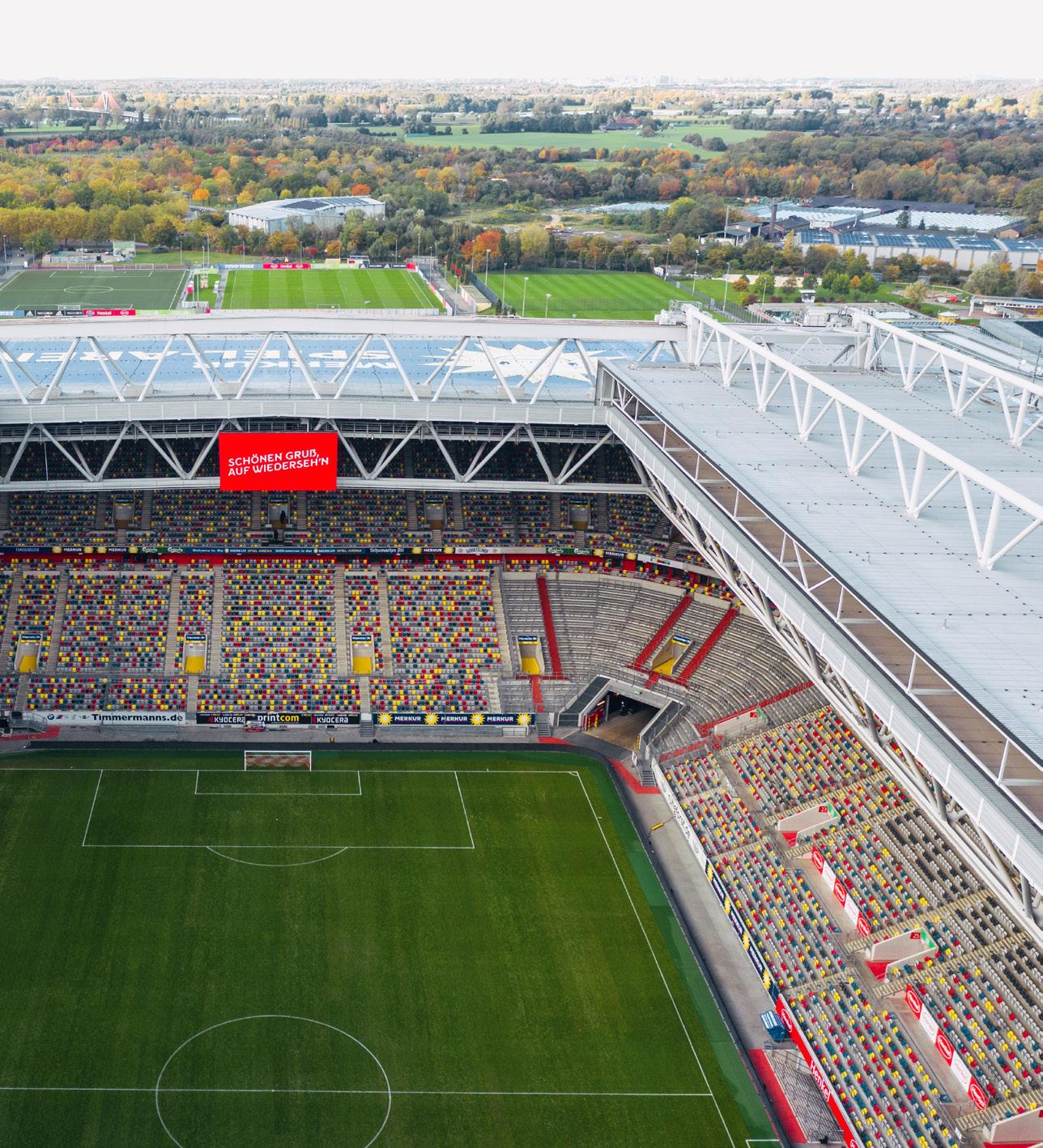




Situated on the banks of the River Main, Germany’s fifth-largest city is a global hub for commerce and finance whose distinct, unique skyline has been affectionately nicknamed ‘Mainhattan’.
One of the most popular photo spots is the Eiserner Steg footbridge, which provides iconic views of Germany’s only skyline, with over 10,000 pedestrians crossing the iron and concrete bridge every day. To see Frankfurt from above, enjoy spectacular panoramic views from the Main Tower rooftop observation platform.

For a glimpse into the history of this vibrant and diverse city, walk through Römerberg to experience Frankfurt through its numerous eras and architectural styles.
Five EURO 2024 games will be played at Frankfurt Arena, which was built 99 years ago, including England’s second group stage match against Denmark.
HOW: Multiple lines go from Frankfurt Airport’s S-Bahn station to Frankfurt Central Station, which is located right in the centre. Frankfurt’s dense public transport network is the easiest way to get around as it covers the entire city.

Historically known for coal mining and steelmaking, Gelsenkirchen is dubbed ‘the city of 1,000 fires’ after the mines and blast furnaces that once characterised the area.
Today, the city blends its industrial pedigree with art and leisure. The 1960s marked a turning point for Gelsenkirchen, as mines became recreational areas and cultural sites, and old railway tracks were repurposed into cycling routes.
Musiktheater im Revier is considered one of the most important theatre buildings of the post-war era, where art and architecture merge.
Gelsenkirchen is home to the fallen footballing giant and seven-time German champions, Schalke 04, whose impressive Arena AufSchalke will stage four EURO 2024 fixtures.
HOW: Fly to Düsseldorf Airport, which is located about 40km southwest of the city, and take a 35-minute direct train to Gelsenkirchen Central Station. Alternatively, a taxi journey takes up to an hour and costs about €100. Most attractions are within walking distance from the station.


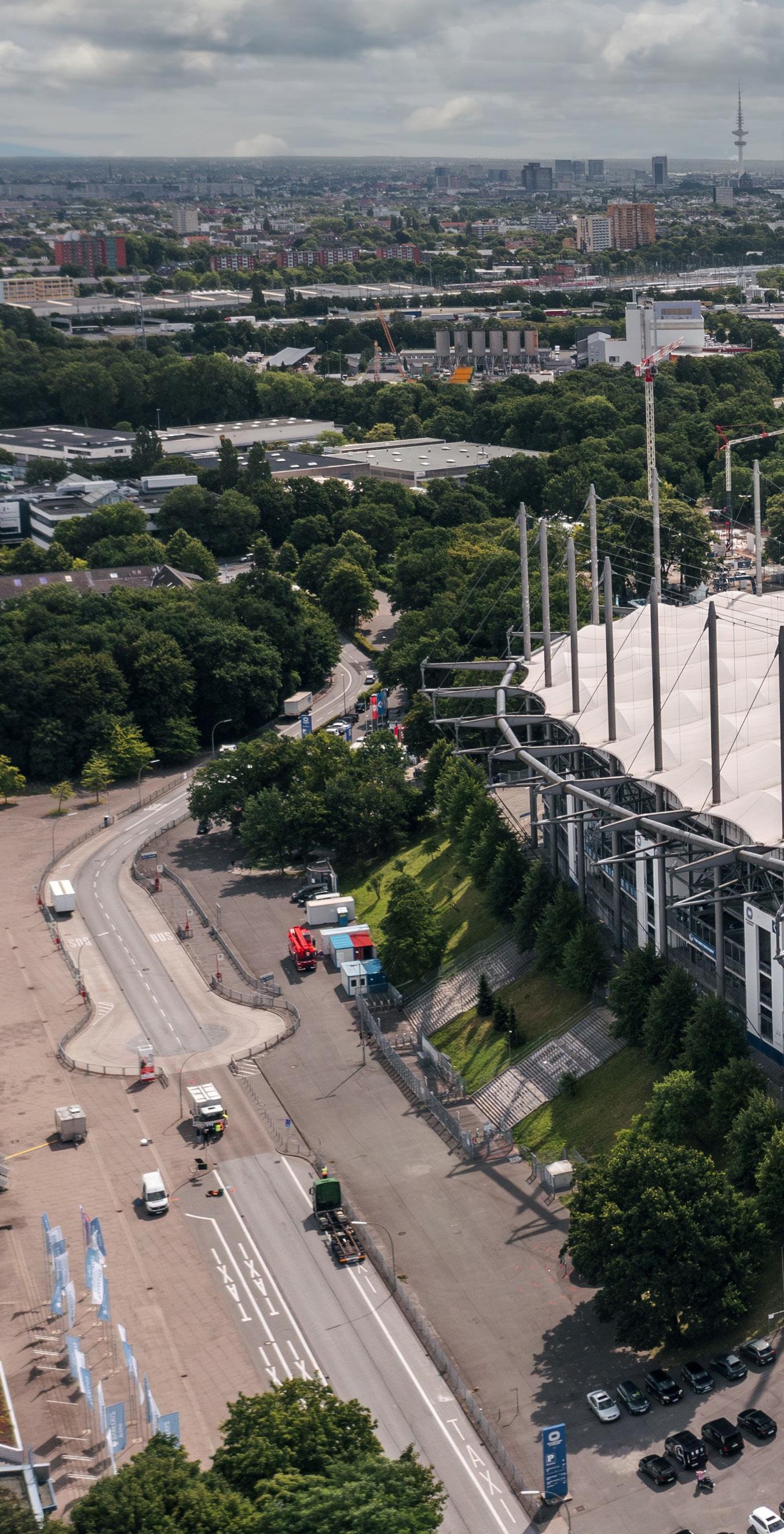




A bucket list destination for many, Hamburg is the third-biggest city in Europe that is not the capital of its country.
The city’s world-famous Port of Hamburg is Germany’s gateway to the world and a distinctive landmark, whose largest landing site, the St. Pauli Piers, is a major attraction in itself.
Hamburg also boasts impressive architecture, including many beautiful old buildings characterised by clinker brick façades, as well as an electric nightlife. The Reeperbahn in the St. Pauli district is more than just an entertainment area for tourists, as The Beatles first made their name at the street’s Indra music club.
Volksparkstadion Hamburg, which received a significant upgrade in 2000, will be the venue for five games during the tournament.
HOW: Flying to Hamburg, you will land at Hamburg Airport Helmut Schmidt, where trains run every 10 minutes that will take you to Hamburg Central Station in just over half an hour. Buses, taxis, and rideshare services can also be used from the airport. The city centre can be easily explored by using any means of transport.

Leipzig is steeped in culture and history, which combine to fascinating effect in its renowned rich musical traditions and exquisite architecture.
At 142.5 metres in height, it is impossible to miss Panorama Tower, whose 31st-floor observation deck offers breathtaking views of the city and region.
A thriving arts scene also awaits, including the Leipzig Panometer, a distinct artistic facility that takes you to strange, fascinating worlds and offers unforgettable experiences and historical insights with its 360-degree panoramas.
Four EURO 2024 matches will be staged at Leipzig Stadium, the home of RB Leipzig, which opened in 2004 after being rebuilt inside the former shell of Zentralstadion.
HOW: It takes just under 15 minutes to get from Leipzig/ Halle Airport to the city centre on public transport. Leipzig Central Station offers regular long-distance domestic services and was ranked the best European train station in 2021.

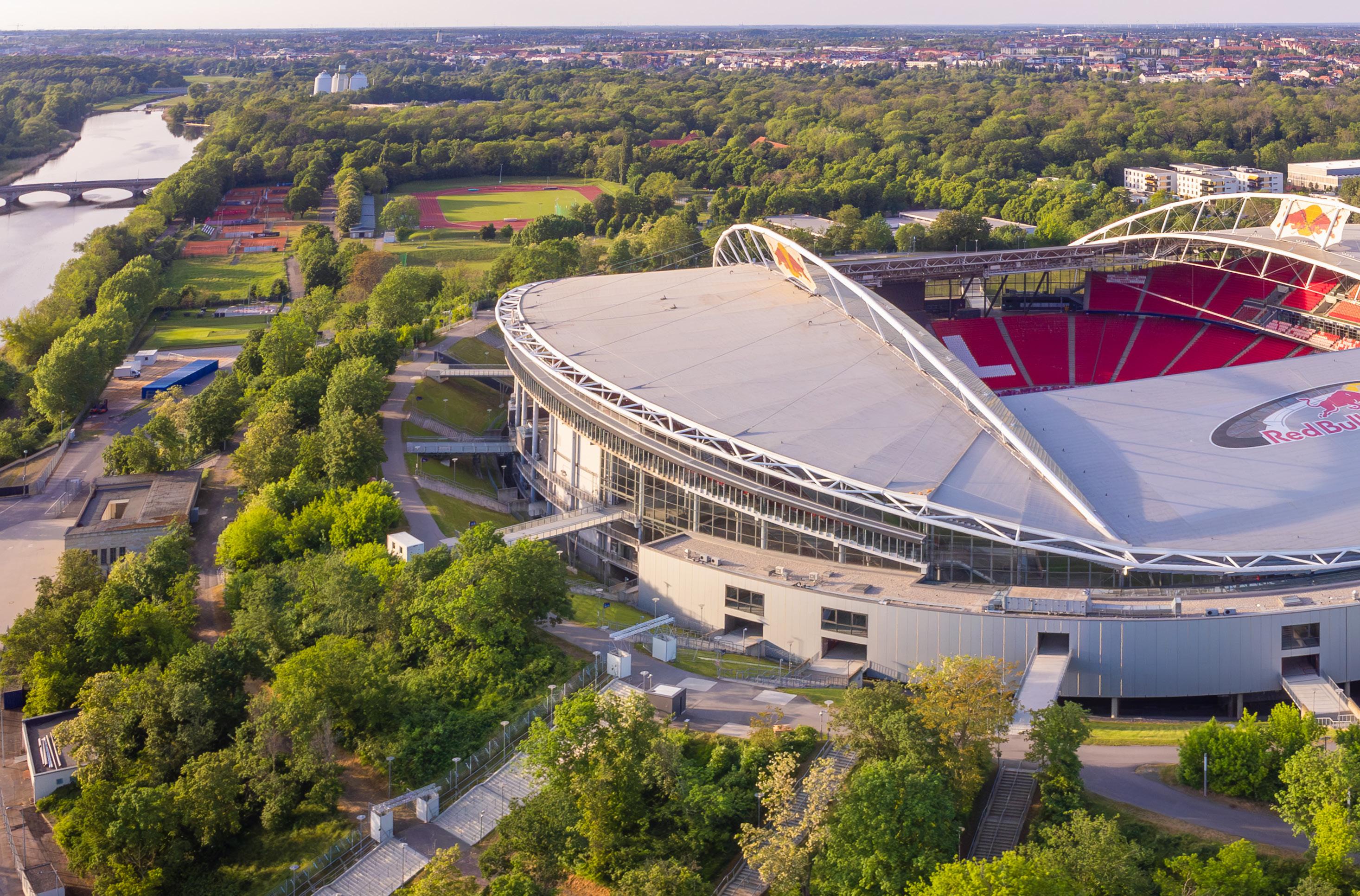


Mercedes and Porsche, two of the world’s most famous luxury car manufacturers, are based in Stuttgart, whose history in the automotive industry is outstanding.
The city also produces a wide variety of high-quality wines, owing to its mild climate in the heart of southwest Germany and the rich soils of the Neckar Valley.
Enjoy spectacular views from the vineyards or by hiking on the surrounding hills. Alternatively, Stuttgart TV Tower offers sweeping sights of the city and the surrounding area from its two-storey viewing platform.
Stuttgart Arena has a capacity of 51,000 and will host a total of five games during the tournament – four in the group stage and one in the quarter-finals.
HOW: Stuttgart International Airport connects passengers to over 120 destinations worldwide. From the airport, it takes less than half an hour to reach Stuttgart Central Station, which is located in the heart of the city. Stuttgart’s blend of modern and traditional architecture is best enjoyed on foot.






Several of Germany’s largest breweries can be found in Munich, which is famed for its annual Oktoberfest celebrations.
Elsewhere in the Bavarian capital, check out the Deutsches Museum, one of the largest science and technology museums in the world, and the Olympic Park, a prime example of how to successfully repurpose an Olympic venue complete with beer gardens, museums, and impressive viewing areas.
Connect with nature in The English Garden, an extensive inner-city park that covers an area of around 640 football pitches, and explore everything on offer at Viktualienmarkt, a food market and square that has been held daily since 1807 with the exception of Sundays and public holidays.
The Allianz Arena hosted the opener between Germany and Scotland on Friday 14th June, with a further five fixtures to follow, including a semi-final.
HOW: Two terminals serve travellers from more than 140 European destinations at Munich International Airport, which is well connected by public transport to the city centre. There are also frequent rail services to Munich Central Station. The city’s transport network is the most efficient and cheapest way to get around.
WoW Sun Tours, a family-run tour company in the heart of Tuscany, provides uniquely curated travel experiences for small groups of solo women.
Leia Russell, Managing Director, explains how the region’s charming beauty and culture, combined with her hand-picked itineraries and deep-rooted local knowledge, make for an Italian adventure with a difference
WRITER: LILY
SAWYER
Having made Tuscany their home in 2004, the Russell family, originally hailing from Drymen, Scotland, have fully integrated into Italian life.
Driven by a desire to share this beautiful region with the world, the family recently devised WoW Sun Tours to offer groups of solo women travellers a true taste of ‘la dolce vita’.
With vast experience in the tourism sector as founders of ski company, WoW Ski Tours, the family is well-versed in curating unique, one-of-a-kind experiences for guests.
Dedicated to showcasing the real Tuscany, the tours are designed to provide small groups of solo women travellers an experience of shared adventure and discovery from the comfort of a group environment.
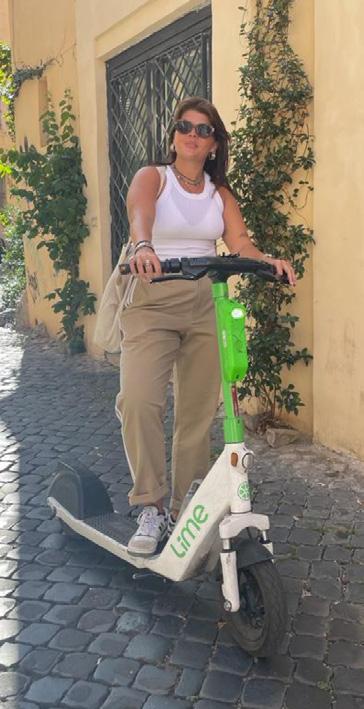
Leia Russell, Managing Director
Hosted in the luxurious local foothills of historical Cortona, guests can expect to gain true, authentic insights into the region’s food, wine, history, and culture from a family who have made Tuscany their home over the past 20 years.
Managing Director, Leia Russell, who leads the tours, shares her deep passion for the region and explains how Tuscany’s unmatched beauty continues to provide her with inspiration and intrigue.
Outlook Travel (OT): Firstly, can you introduce us to WoW Sun Tours and explain how the concept came about?
Leia Russell, Managing Director (LR): WoW Sun Tours is the second iteration of WoW’s solo women tours. The idea was originally born from my family’s ski company, WoW Ski Tours, where we run women-only ski weekends to provide a safe environment for females to travel alone and do something they love without feeling judged or unsafe.
To give context, in 2004, we moved from our family home in Drymen, Scotland, to Tuscany, Italy, in pursuit of ‘la dolce vita’. Our proximity to the Dolomites enabled us, as a young family, to embrace our love of skiing without having to use so many planes, trains, and automobiles.
Building on the success of WoW Ski Tours and having lived in Cortona, Tuscany for over 17 years, we officially launched WoW Sun Tours in 2021. Who better to share in a Tuscan adventure than an expat family who moved to the area years prior and haven’t left since?
At WoW Sun Tours, we aim to show the highlights of our hard-earned, local knowledge and grant exclusive access to the real Tuscany.
OT: What makes Tuscany an inspiring place to discover?
LR: For me, Tuscany is the region of sun, fun, food, wine, and afternoon strolls.

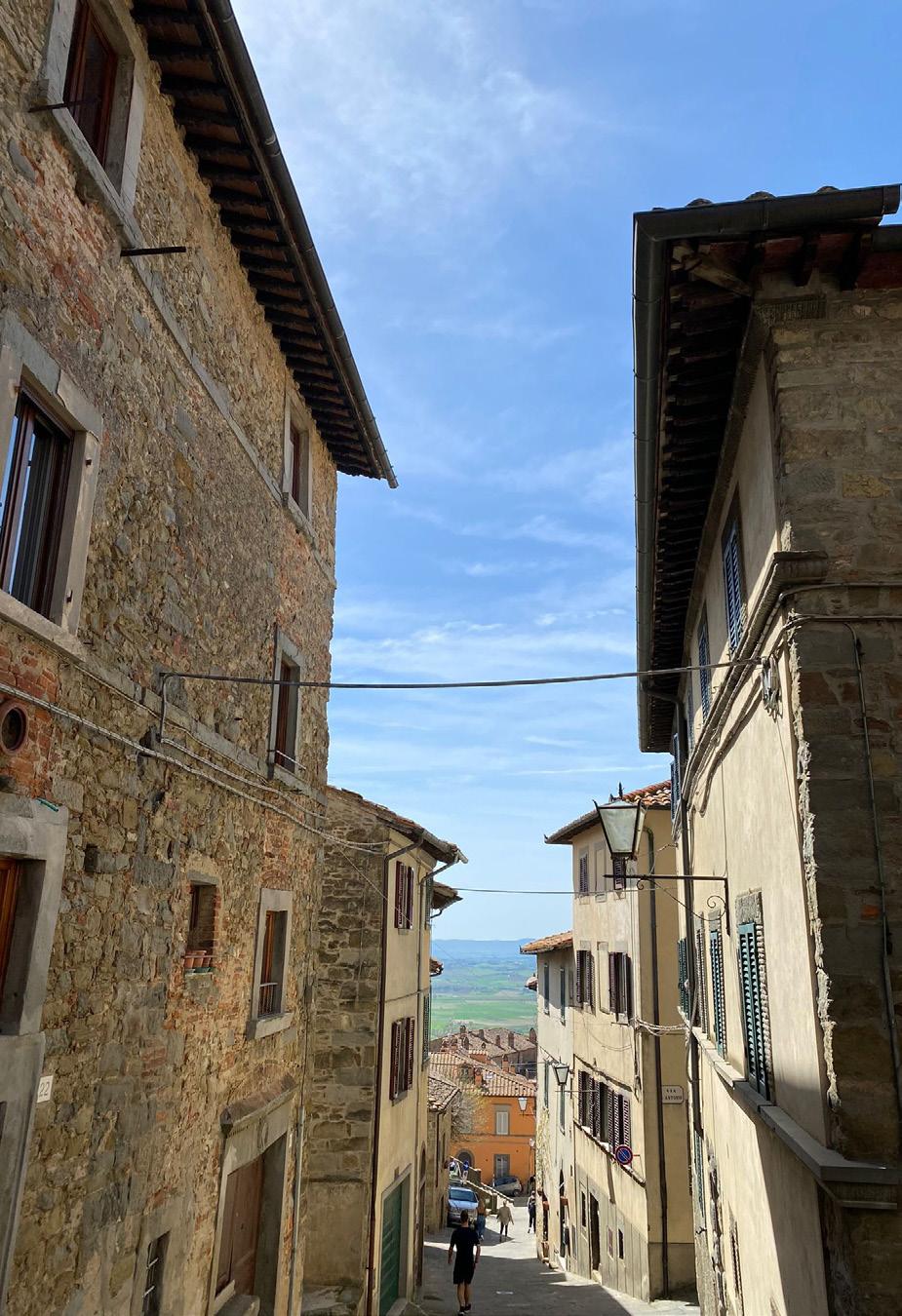
“At WoW Sun Tours, we aim to show the highlights of our hard-earned, local knowledge and grant exclusive access to the real Tuscany”
– LEIA RUSSELL, MANAGING DIRECTOR, WOW SUN TOURS
Just recently, the sun was shining, and a friend and I hiked up to Cortona’s main fortress. We sat munching on fresh, local fruit whilst gazing down at the breathtaking views of the Valdichiana valley.
We then strolled back to the main town where we relaxed in the piazza with a beer in hand – peoplewatching, chatting, and basking in the sun’s warm rays. For lunch, we ordered a charcuterie board from the local trattoria, a glass of wine, and watched the world go by.
I don’t know what it is about Tuscany, but life here is magical. It has something to do with the tranquillity of life; nobody is in a rush, nobody is in a bad mood, and nobody complains.
Tuscany is personified by the quick morning coffee; the daily pausa pranzo (lunch break) from 1pm to 4pm where people simply eat and doze before going back to work; the sudden buzz of bars as the sun goes down; the evening
aperitivo; the Sunday passeggiata (stroll) through towns that look like movie sets; the walk to your friend’s garden to pick some vegetables for your evening meal – and oh, so much more!
I could go on for hours. I don’t think anyone realises how incredible this region is until they come here. My only advice to travellers is, if you’re going to visit Tuscany, do it the Italian way. Live like a local and embrace the true Tuscan lifestyle!
OT: What are some key locations and exclusive experiences that your guests can participate in?
LR: At WoW Sun Tours, our varied daily itineraries are designed to have guests acting and thinking like an Italian in no time, so you get the very best out of your experience.
Tuscany is a region revered for its breathtaking landscapes of cypress trees and sunflowers, outstanding preserved history, endless hilltop towns, and world-famous art in its capital, Florence.
Unlike other tour companies, our aim is not to take you to the places you could potentially visit on your own – it is precisely the opposite.
We want to show you the hidden gems that make Tuscany our home – the olive picking in October, the midday coffee, the lettuce picking from nonno’s garden just before dinner, the wine tasting in the non-traditional cantine (wine cellars), and the unmissable cooking classes
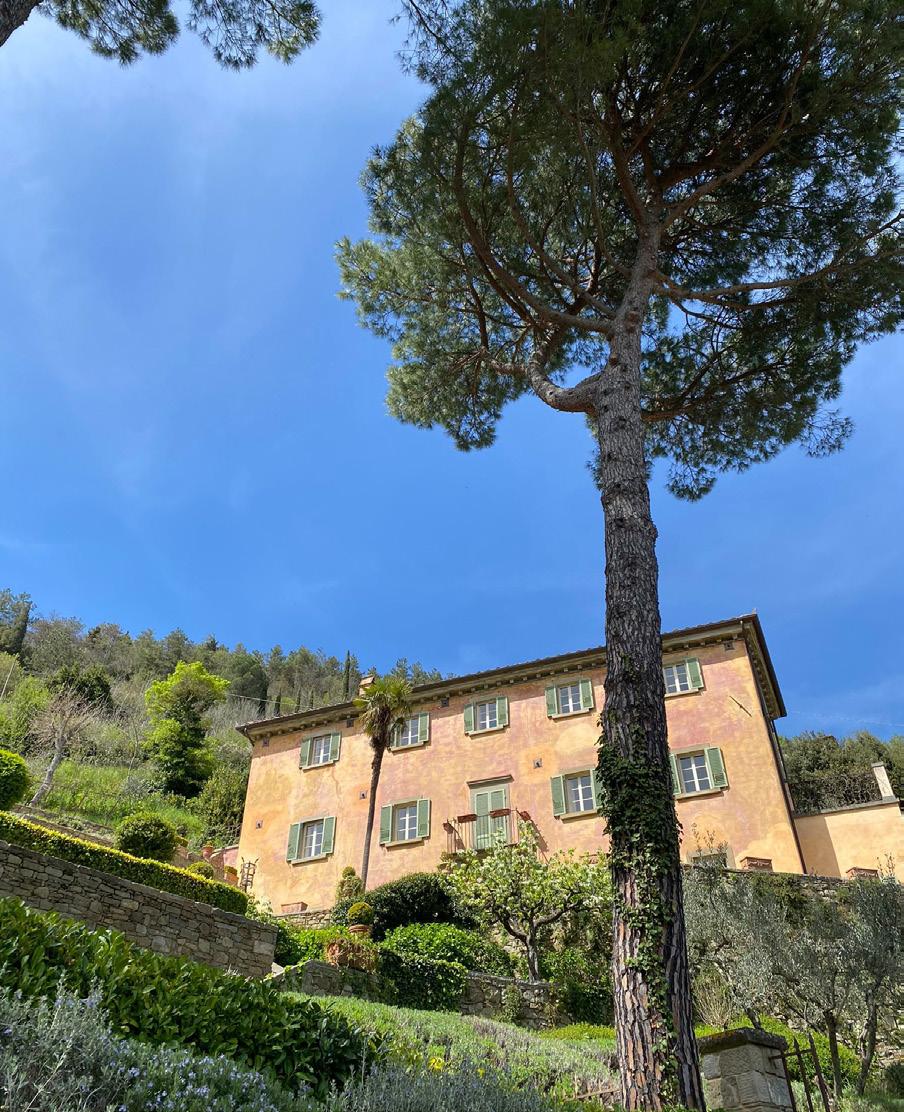
by the poolside with our smiley chef, Cecilia.
We do, of course, take you to some more well-known places, such as Lake Trasimeno, to visit the tiny islands for a spot of lunch, a tan, and a spritz or two.
We also go for a light lunch in nearby Pienza and picnics in the countryside, accompanied by a quick trip to the hot springs in the Val D’Orcia area – an unmissable day out.
Think wine tasting, cheese tasting, and food galore. Whether cooked by a typical Italian nonna, or something slightly more sophisticated, expect to be wowed!
OT: What unique culinary encounters are guests able to experience with WoW Sun Tours?
LR: No land is more devoted to the products of its rich earth than Tuscany, a destination for the ‘bon vivants’ whose residents spend an unnecessary amount of time thinking about, discussing, and consuming food, wine, and coffee.
La cucina contadina (homemade traditional cooking) is a source of pride for many local ‘contadini’ as everything they consume, from tomatoes and eggs to wine and meat, is produced or raised in their own homes.
And, as any Italian knows, the weekend is sacred and
therefore dedicated to eating, drinking, and to be honest, not much else!
We try to vary our culinary itinerary when it comes to our tours, as we want our clients to be able to experience as many different dishes and flavours as possible. Everything is included in the price, except for additional drinks and snacks, so we plan where and when we’re eating with care.
There will be a variety of evenings where Cecilia will be your personal chef and will come and cook for you whilst you relax – equally, please feel free to join in and get your hands dirty!

At lunch time, and during some evenings, we’ll take you out to our favourite restaurants. We might have a pizza or perhaps something more luxurious, such as a scrumptious plate of fresh truffle pasta or a delicious local steak in home-produced olive oil.
My personal highlight of our culinary escapades is our cooking classes with Cecilia. We put music on, have a boogie and a drink or two, and start cooking. We may even be graced by the presence of our delightful cocktail connoisseur, Marco, who usually starts the evening with a Hugo spritz before showing you how to make some Italian cocktails, so you can go home and show off your new drink-making skills!
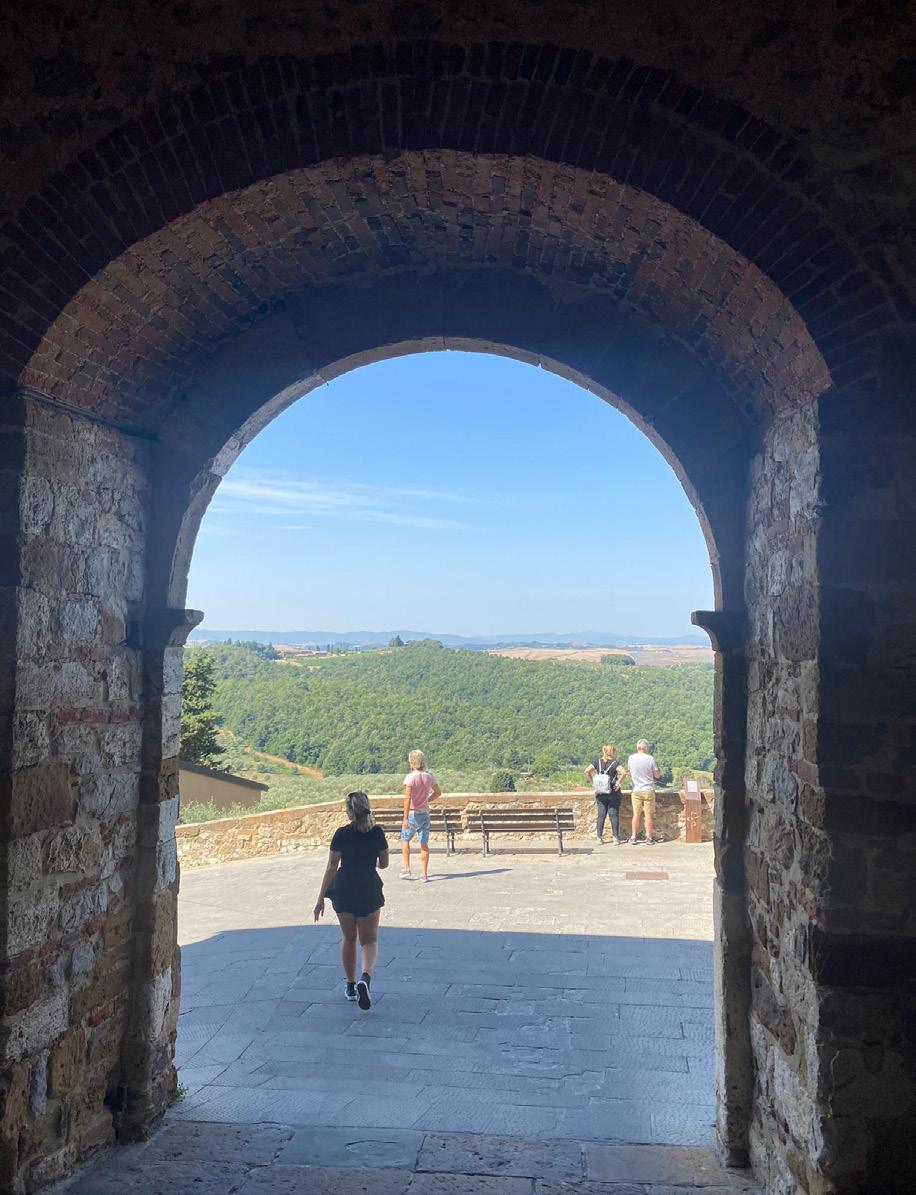
“I don’t think anyone realises how incredible this region is until they come here”
– LEIA RUSSELL, MANAGING DIRECTOR, WOW SUN TOURS
Cecilia normally starts with more traditional dishes, like the uncomplicated but delicious panzanella – a mix of bread and fresh vegetables soaked in olive oil, salt, and lemon juice.
Alternatively, try your hand at a fresh focaccia. Ask away, and we’ll do our best to provide you with all the cooking knowledge and expertise possible.
On Thursday, we’ll take you to the local market to pick up fresh fruit and vegetables for our goodbye dinner the following day, where we cook, eat, sit, chat, and have a couple of vinos together before bidding our adieus.
OT: How does your classic and well-established ‘Live Like a Local’ tour offer guests the quintessential Italian experience?
LR: You’ll be staying in my friend Emanuele’s delightful Agriturismo Il Borgo, situated in the foothills of Cortona’s old town.
Emanuele’s family-owned villa is one-of-a-kind. You’ll
have your own double bedroom with an ensuite, a communal kitchen, and a patio where you can spend time getting to know your fellow guests.
If you seek tranquillity, perhaps you’ll spend time by the pool for a solo tan or take refuge beneath one of the ground’s weeping willows for some shade.
Luciana, Emanuele’s mum, will often pop over with freshly made jam or a couple of bottles of homeproduced Syrah wine to make you feel even more at home.
Agriturismo Il Borgo is surrounded by sunflower and lavender fields and is seemingly its own secluded oasis, but it’s only a mere two-minute walk from the town of Camucia with access to shops, markets, supermarkets, a fantastic pizza place, and a cocktail bar!
It’s also situated close to the rail station, so on your day off you can hop on the train to Arezzo, Florence, Rome, or wherever takes your fancy!
With the best part of 20 years living full-time as a young family in a local village near the beautiful medieval town of Cortona, we’ve gotten to know what it takes to live like a local and the dos and don’ts of true Italian life.
We won’t have you traipsing around Florence in the midday heat, trailing behind a tour guide, or filling your head with dates that have no context. Instead, we’ll take you to the Piazza Michelangelo or arrange for a picnic on the banks of the Arno.
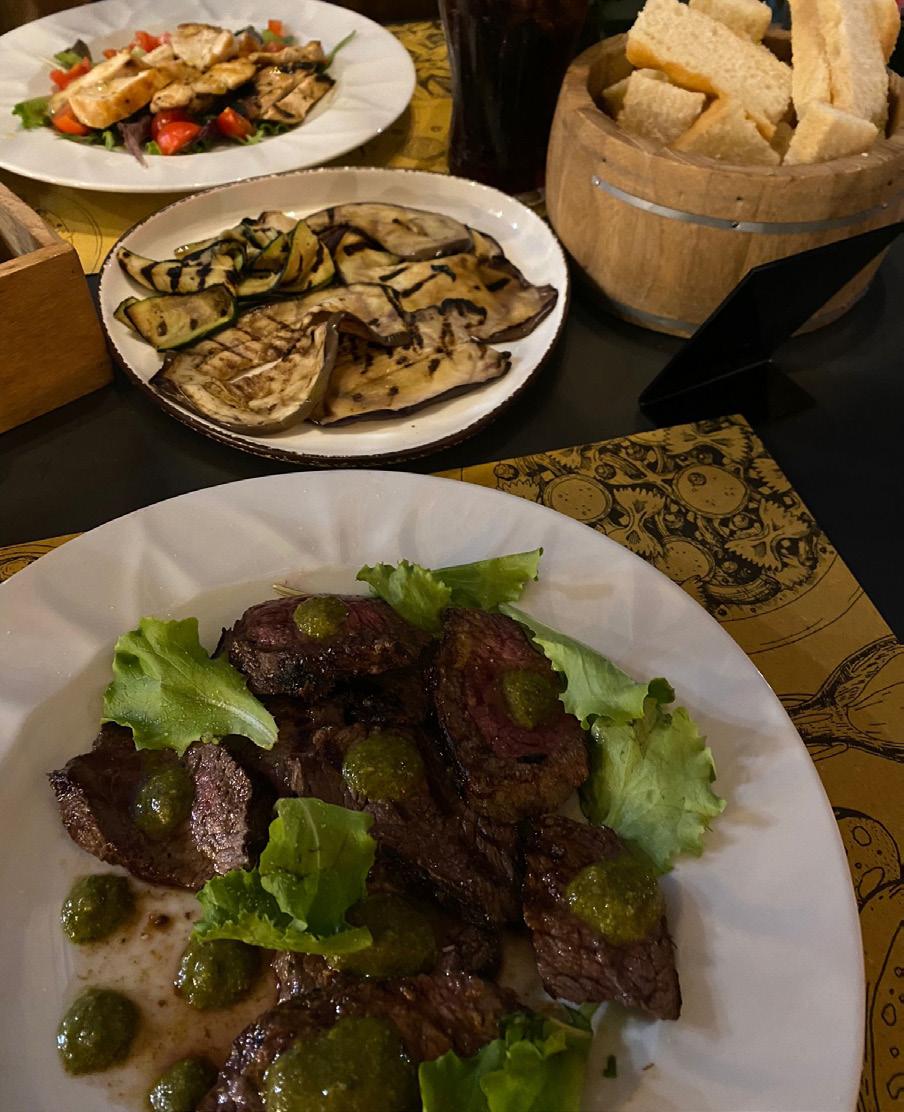
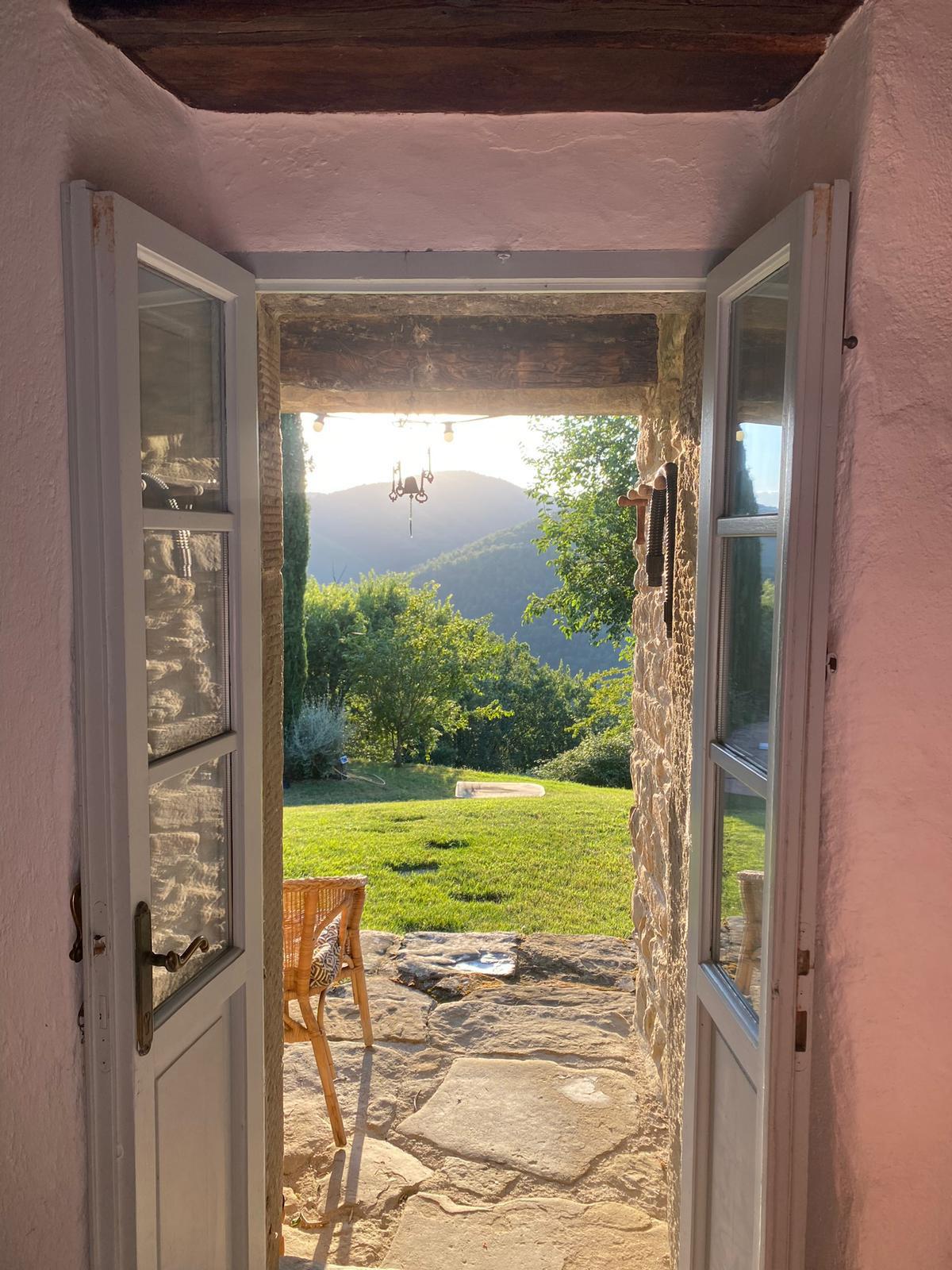

We won’t fob you off with mass-produced, poor-quality ‘tourist food’, but will take you to local cheese producers or nonno’s allotments. We’ll go out of our way to teach you the tricks of real Italian cookery, from fresh pasta to real panna cotta.
We’ll introduce you to local sagre (village festivals), where if your ballo liscio (traditional ballroom dancing) is up to scratch, you may be requested a dance from one of the local gentlemen!
If you are a wine lover, you’ll be blown away by secret vineyards and cantine known only to the locals, and the Il Vino Nobile wines of Montepulciano, Brunello di Montalcino, Chianti, and Bolgheri, which are a credit to the region.
We’ll teach you those tricky and notorious hand gestures and enough Italian to help you fit in, and go for a languorous bathe in the local river spa baths where the only foreigners will be you.
In short, our aim is to bridge the gap between cultures, acting as a conduit into true Tuscan life, diving far beneath the surface of what traditional tour companies might offer.
OT: Could you tell us more about WoW Sun Tours’ new Tuscan Book Club?
LR: Recently, during the calmer months of October and November, I’d been helping a friend at his boutique shop
in Cortona. Being the chatterbox I am, I tend to strike up conversations with clients, especially those speaking English.
As our family discovered Cortona quite randomly before moving here, I’m always curious to find out what brings international visitors to the area. When asked, most answer in the same way – “Oh, I saw the movie! You know, the one based on the book by Frances Mayes?”.
It’s incredible how influenced people can be by something they’ve seen, heard about, or read - but what’s not to love about a small, quaint Tuscan town surrounded by vineyards and sunflower fields?
So, as I was reading my book and having a morning coffee in the garden one day, the idea for a new kind of tour sprung to mind.
Imagine discussing A Room with a View by E.M. Forster while gazing out at the rolling Tuscan hills, or sharing your thoughts on Under the Tuscan Sun by Frances Mayes as you dine in an authentic Italian trattoria.
From the peace of a charming, private accommodation, each week WoW Sun Tours will bring together a group of up to eight women and focus on a novel that has, at its core, the classic backdrop of the Tuscan countryside.
WoW Sun Tours believes that, aside from Italian being one of the most beautiful languages in the world, there’s no better way to learn it than while living like a local, surrounded by breathtaking Tuscan countryside.
The company’s aim is for its guests to be able to communicate somewhat independently.
A couple of times each week, Leia sits down in the garden at Agriturismo Il Borgo to take her guests through what she deems the essentials of living in Tuscany, which even includes a few Italian hand gestures.
“You’ll probably find yourself in a shop at some point and want to know how much something is, where the bathroom is, or how to order another glass of prosecco. You may even find your waiter attractive and want to tell them so!” she imparts.
Guests who opt for the Tuscan Book Club can also expect to learn some of the lingo introduced in the book.
“Get ready to have a giggle and perhaps blush from time to time if mistakes are made, but, as the Italians would say, buttati che é morbido – you never know until you try!”

You will be part of a ladies-only book club in the heart of Tuscany, where you can visit some of the very sites described in the hallowed pages of your favourite Tuscan novels. At some point in the day, depending on a planned daily itinerary which will be devised from the novel you’ll be reading, there’ll be a light-hearted discussion of the latest developments in the text.
Then, picture yourself sipping a glass of local wine under the same golden sun, strolling through the very piazza where the characters once roamed, and savouring dishes made from local sun-ripened tomatoes and freshly pressed olive oil.
We even make sure that Cecilia includes some of the recipes from your chosen books in your cooking classes, so you can go home and test them out on your friends!
This is more than just a trip; it’s a journey into the heart of Italian life. This is a chance to connect with fellow Italophiles and book lovers, relive the best of Tuscan literature, and bring life to those pages by immersing yourself in the culture and thereby experiencing firsthand the magic that has inspired generations of writers.
OT: What sets WoW Sun Tours apart from the competition?
LR: That’s a story in itself. I think the beauty of WoW Sun Tours, just as with WoW Ski Tours, is that we aren’t run by a typical expat family.
Something I’ll always be grateful for, and I have my parents to thank for this, is that we’ve genuinely tried to make Cortona and its surroundings our own. Unlike most families that move abroad, we’ve fully integrated into the Italian lifestyle and made Tuscan life ours.
We’ve been to school here, made friends, and become regulars at the tennis clubs, gyms, and bars. We do not find ourselves greeted as transient foreigners, but as the crazy Scots who made Cortona their home – we’re simply part of the furniture.
The fact that we are able to show it off, as it should be, to others is such an immense pleasure.
For our clients to be able to meet the people we’ve grown up with, visit the local bars, eat the pizza we’ve been eating for the past 20 years, and wander the streets we’ve walked on our way to school - that is what makes it special!
OT: Finally, are there any other projects on the horizon?
LR: Oh yes! Lots more in fact. Our primary aim is to establish WoW Ski Tours and WoW Sun Tours and get them properly off the ground.
We’d also love to bring the Dolomites into the equation in the summer, and our dream is that, in the future, our lovely home in Drymen, Scotland will be introduced as a base for lots of new adventures.

Personally, I feel that many companies don’t do their research properly. They set up holidays based on a generic blueprint, yet they don’t know the places they are touring well enough to provide a quality product for their clients –they only provide the same, worn tourist routes.
Our clients understandably expect us to be experts at what we do. We speak the language, we’ve lived in these places, and we understand the culture. We want people to fully perceive the originality of our product; we only do what we know – if we didn’t know about it, we wouldn’t do it!
As such, it has become my philosophy to only tour what I know well, as only then can I vouch for the real ethos and vibe of a place.
All I can say is we’re excited about the future of WoW Sun Tours and what we can offer. Our women-only weeks are constantly growing, and we want our clients to know how much effort and love we put into each minute detail.
It’s always a work in progress, but seeing the joy we bring to people and the smiles we put on our clients’ faces makes it all worthwhile. Watch this space, there is much more to come!

Tel: +44 141 404 6493 info@wowrecommended.com www.wowsuntours.com
Dedicated to shifting the impact of tourism by making it easier for people to learn about and engage in regenerative travelling practices, Re:BC is an app making waves in sustainable travel. Founder, Hollie Galloway, tells us about the company’s mission and its plans for a sustainable future
WRITER: LAUREN KANIA

The concept of being a tourist and venturing to new and exciting destinations is one that has been popular since the earliest documented memories of mankind.
From sailors traversing the globes to discover new cultures, to families packing into an overcrowded van for extended road trips, to young adults leaving the comfort of home for the first time to gain a sense of independence
and cognisance of the world around them, travel is an integral part of the human experience for many.
While there is a plethora of benefits that result from engaging in touristic experiences, such as expanding one’s worldview, experiencing the natural wonder of stunning landscapes, meeting new people, and providing business to independent storefronts and organisations, there has been increased recognition of the negative impacts

tourism can have on local communities and ecosystems.
Overcrowding, pollution, desecration of ecosystems, and damage to cultural heritage sites are just a few of the negative effects tourism has fuelled.
That is why awareness and support for sustainable tourism are growing exponentially in the travel sector.
One such organisation looking to make a difference in the fight for accessible sustainability is Re:BC, a
community-driven company dedicated to developing regenerative travel initiatives and promoting responsible recreation in British Columbia (BC).
“Our mission is to support the development of tourism into a force for good by encouraging visitors to participate in activities that have a positive impact on local communities and the environment,” opens Hollie Galloway, Founder of Re:BC.
“Encouraging positive actions: We motivate visitors to engage in behaviours that have a beneficial impact on the environment and local communities. These include participating in community-led conservation projects, supporting local and Indigenous-owned businesses, and adhering to regenerative practices that restore and enhance local ecosystems.
“Rewarding regenerative choices: Through the Re:BC app, travellers earn rewards for their regenerative actions. These rewards not only incentivise good practices but also enhance the overall travel experience, making responsible recreation both fulfilling and enjoyable.
“Aligning with visitor values: By aligning our initiatives with the values of modern travellers, who are increasingly conscious of their ecological and cultural footprints, Re:BC taps into a vital market trend. We not only meet the demand for regenerative travel options but also lead the way in setting new standards for what it means to explore in a way that actively improves destinations.
“By integrating these strategies, Re:BC is not merely encouraging responsible recreation; we are defining it, creating a model where regenerative tourism becomes the norm, supported by tangible rewards and aligned with the values and desires of today’s travellers.”

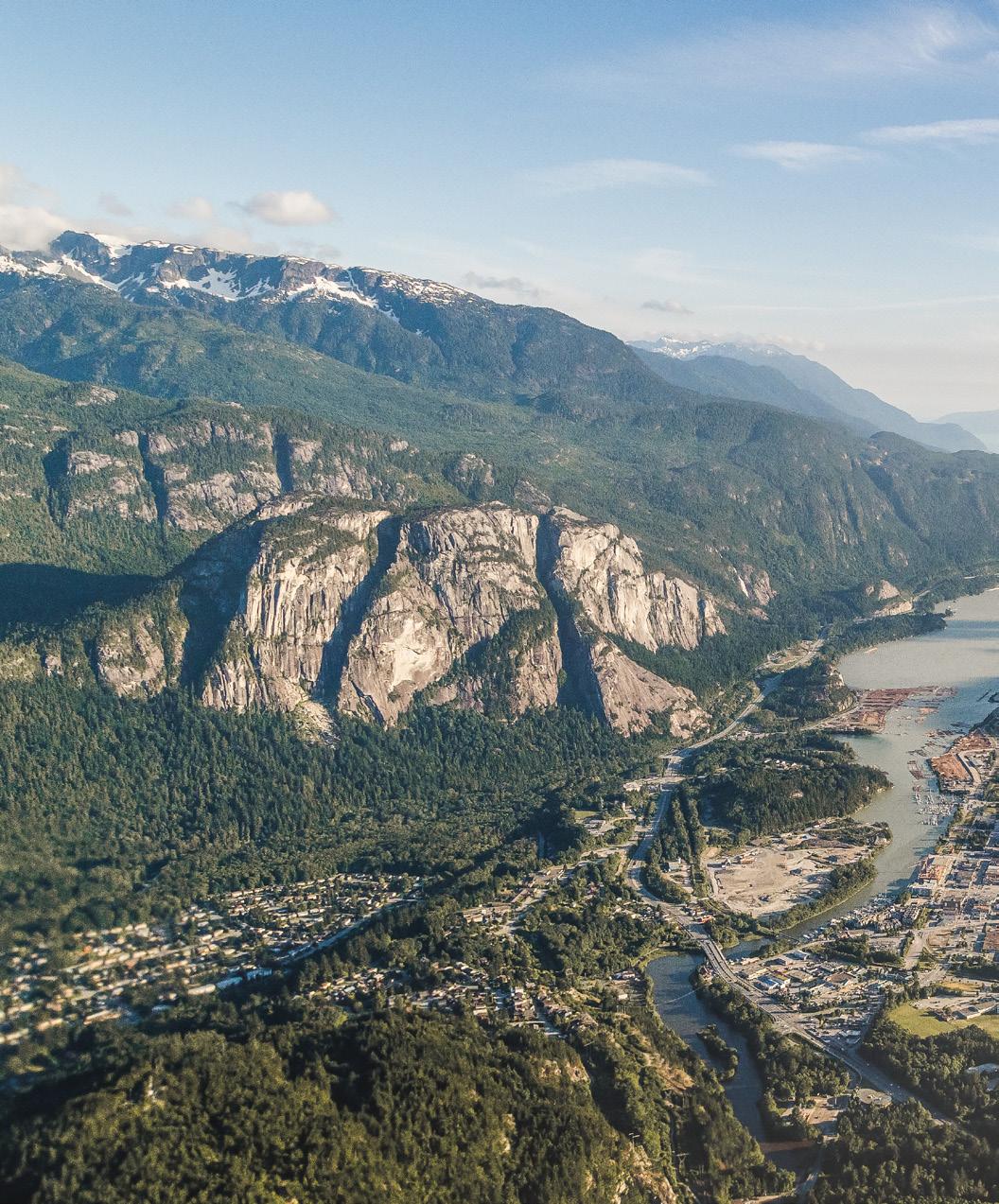
“Our key facilities include a comprehensive app that guides tourists and residents alike to participate in sustainable practices and community-driven projects across the province.”
Unlike traditional travel apps, Re:BC’s offering is not just about the destination; it’s about the journey, the people, and the environments encountered along the way.
The organisation is committed to going beyond the ordinary by ensuring that every trip leaves a lasting, positive impact on the places visited by working with communities to promote travel that adds value, minimises environmental footprints, and fosters a deep respect for local cultures.
“The inspiration for the Re:BC app was born out of a critical need to redefine the relationship between tourism and community well-being in BC,” explains Galloway.
As the tourism industry has long been a cornerstone of the province’s economy, attracting millions annually to its distinctive landscapes and vibrant cities, it has also brought challenges such as environmental degradation and cultural displacement, particularly in areas heavily reliant on visitor spending.
To combat this, Re:BC was created to empower travellers to participate in regenerative travel initiatives. The app helps ensure that tourism supports local economies, enhances cultural heritage, and conserves natural resources.
“Our platform allows users to engage with projects that not only enrich their travel experience but also contribute

positively to the destinations they visit,” details Galloway.
With a mindset of transcending traditional sustainable tourism by fostering positive outcomes, the organisation prioritises projects that rejuvenate the social, ecological, and economic fabric of local communities.
Its approach facilitates profound, beneficial interactions between visitors and destinations through activities that promote environmental preservation and enhance community well-being.
“From volunteering with not-for-profit organisations, donating leftover groceries to food banks, to prioritising local and Indigenous-owned businesses, we offer detailed insights that enable travellers to make meaningful contributions during their visits,” prides Galloway.
Re:BC highlights eco-friendly practices in its communities by educating both locals and visitors about the challenges of environmental degradation facing many regions. The app itself offers detailed, location-specific overviews on topics including invasive species management, wildlife conservation, backcountry best practices, the principles of Leave No Trace, and further links to resources to learn more about actions that can be taken to make a difference.
“This approach not only informs but incentivises sustainable behaviour, fostering a community of informed and responsible travellers who contribute positively to the ecosystems they visit,” she adds.
Through actively encouraging and rewarding travellers for their proactive contributions towards regenerative practices, Re:BC is redefining how individuals perceive responsible recreation.
“Re:BC arose from an imperative to support tourism growth in ways that are beneficial and sustainable for the community, culture, and environment”
– HOLLIE GALLOWAY, FOUNDER, RE:BC
“We recognise that the majority of today’s travellers aspire to explore sustainably without harming their destinations, and we are committed to creating tangible ways for them to do so,” insights Galloway.
As an interactive way to foster a deeper connection with BC and its people and promote a more thoughtful and sustainable approach to tourism, Re:BC has recently developed the Destination Quiz campaign within its app.
The various quizzes are comprehensive, hands-on, and have been developed in collaboration with the communities they feature, seeking to educate visitors about their destinations. Not only do the quizzes provide key insights and local tips about ways to positively contribute to the local area, but they also outline unique challenges that tourism has brought to specific communities.
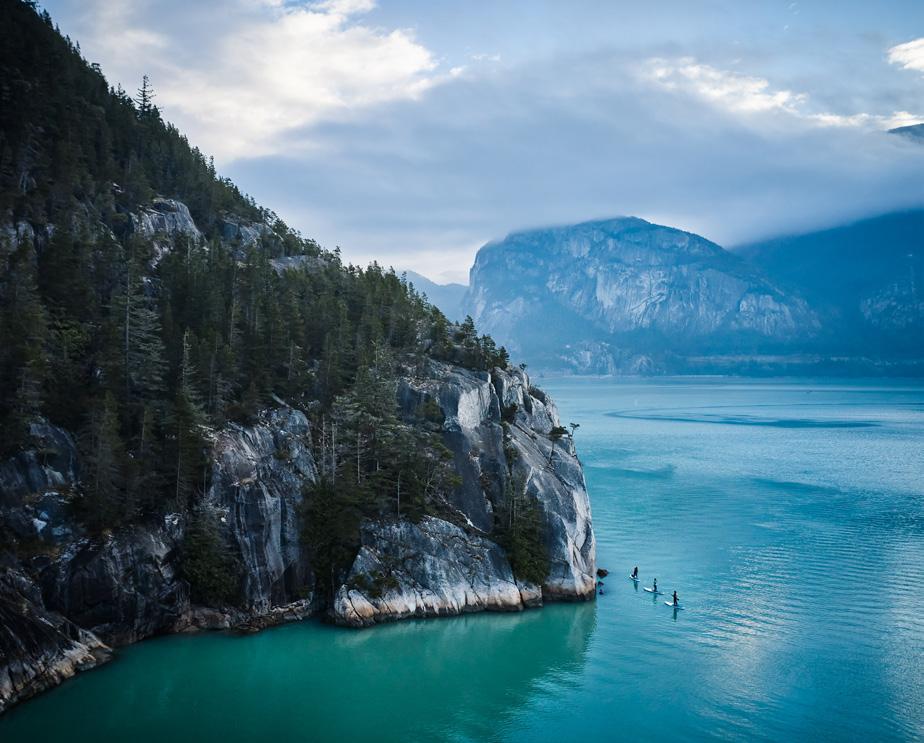
Participants who complete the questions and check in through the app during their visit are even rewarded with a pair of Canadian-made wool socks from Canadian B-Corp, Ecologyst.
Specifically, Destination Quiz introduces users to the Indigenous communities of the area, offering insights into local languages, lands, and history, alongside shining a spotlight on Indigenous-owned businesses, encouraging economic support and cultural exchange.

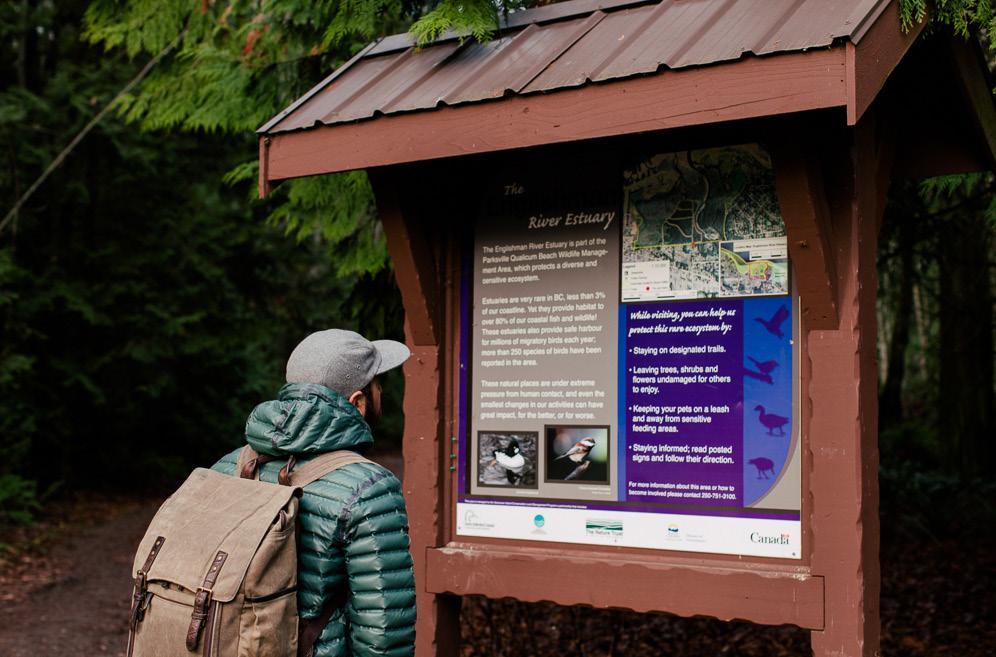
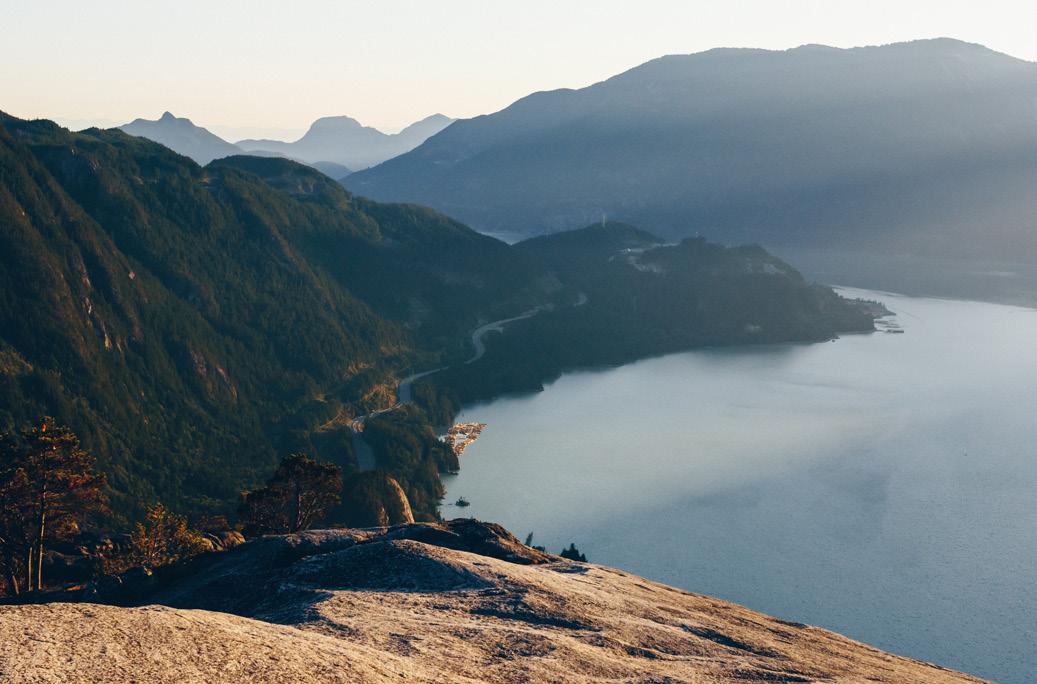
“This summer we will be incorporating volunteerfocused initiatives into the app, where visitors can explore opportunities to support not-for-profit organisations during their travels and get rewarded for their actions,” enthuses Galloway.
Additionally, Destination Quiz guides visitors to cultural organisations and activities such as museums, community centres, and art walks, enhancing travellers’ interactions with the local culture. By showcasing what makes each community special, the app encourages a deeper, more respectful engagement with each destination.
“Through these features, Re:BC aims to transform


tourism into an opportunity for meaningful cultural exchange, ensuring visitors leave with a greater respect and appreciation for the places they explore,” she asserts.
In order to extend these regenerative goals and provide exciting rewards for travellers looking to participate, Re:BC collaborates with community tourism organisations, notfor-profits, and marketing groups.
Partnerships with organisations including Tourism Revelstoke, Parksville Qualicum Beach Tourism, Tourism Squamish, Tourism Sun Peaks, Southern Gulf Islands Tourism, Tourism Prince George, and Destination British Columbia allow Re:BC to deeply engage with and support
• Bring your own reusables.
• Follow the seven principles of Leave No Trace.
• Shop at local and independent stores.
• Spread awareness of your sustainable travel on social media to encourage others.
• Tour responsibly by choosing eco-friendly companies.
• Reduce carbon emissions by using public transportation.
• Be mindful and respectful of local communities.
• Use reef-safe sunscreen.
• Visit national parks and protected areas.
• Travel during the off-season to minimise overcrowding.
the communities it works with by aligning initiatives with local needs and opportunities.
“Together, we not only enhance the tourism experience but also effectively spread the word about regenerative practices,” details Galloway.
“This collaborative effort is vital for fostering a sustainable tourism model that benefits both the environment and local economies across BC.”
“Our vision for the future of tourism in BC is to nurture a thriving industry that not only supports ecological and cultural preservation but is also community-led and respects the unique challenges faced by the region, while contributing to economic prosperity at both local and provincial levels,” inspires Galloway.
The primary way this vision for a sustainable future can be met is through the actions of the tourists themselves.
Tourists visiting BC play a pivotal role in fostering and promoting regenerative tourism experiences. Specifically, by sharing their journey and choosing to highlight sustainable behaviours, such as visiting less crowded destinations, participating in local conservation efforts, or supporting Indigenous and local businesses, they significantly impact the perception and practices of travel.
“Ultimately, every shared story or social media post has the potential to inspire change. As visitors to the province choose to travel responsibly and share these experiences authentically, they help cultivate a global community that values and actively contributes to sustainable and
“I am constantly inspired by the stunning landscapes, vibrant communities, and incredible people I meet while travelling across this remarkable province”
– HOLLIE GALLOWAY, FOUNDER, RE:BC
regenerative tourism practices,” expands Galloway.
Through being an active participant in regenerative tourism, alongside the effort from industry-changing companies such as Re:BC, the future of sustainable, respectful tourism is growing brighter by the day.
“I am constantly inspired by the stunning landscapes, vibrant communities, and incredible people I meet while travelling across this remarkable province. Together, I believe we can foster a tourism industry that not only sustains but actively supports the growth and preservation of what makes BC so unique,” prides Galloway.
Looking ahead, Re:BC is aiming to expand its community partnerships, providing more visitors with the tools needed to engage in regenerative tourism effectively, alongside enhancing its education efforts to deepen understanding and appreciation of the region’s natural and cultural heritage.
“We are actively seeking collaborations with organisations to offer incentives that encourage visitors to participate in and support these initiatives, fostering a more sustainable and enriching tourism environment across BC,” concludes Galloway.
Whether you’re a seasoned traveller seeking regenerative adventures or an organisation eager to shape the future of responsible tourism, Re:BC is here to help create meaningful connections, foster respect, and make a lasting impact on cherished landscapes.

Outlook Travel Magazine is a digital publication aimed at business executives and avid travellers, reaching an audience of more than 575,000 people. Working closely with tourism boards and associations around the globe, from cities to regions, from countries to continents, we take an in-depth look at where to visit, where to stay and what to do when you are there.
With original and exclusive content compiled by our experienced editorial team, complemented by an in-house design and production team ensuring delivery to the highest standards, we look to promote the latest trends, blogs, reviews and success stories from this fast-moving industry.
You can join the vast numbers of tourism sector players enjoying the exposure we provide across our digital platforms with a range of options, from advertising through to free-of-charge editorials, extensive social media saturation, enhanced B2B networking opportunities, and a readymade forum to attract new investment and increase exposure.
To get involved, please contact Outlook Publishing’s Managing Director, James Mitchell, who can provide further details on how to feature your company, for free, in one of our upcoming editions.




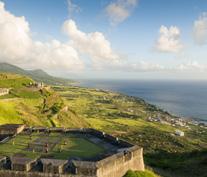



A crown jewel in the vast, glistening Caribbean Sea, St Kitts is a dreamlike nirvana travellers can only fantasise of. Venture deeper into this historic and viridescent island and uncover a bolder shore
WRITER: LAUREN
KANIA | PROJECT MANAGER: KRISHA CANLAS
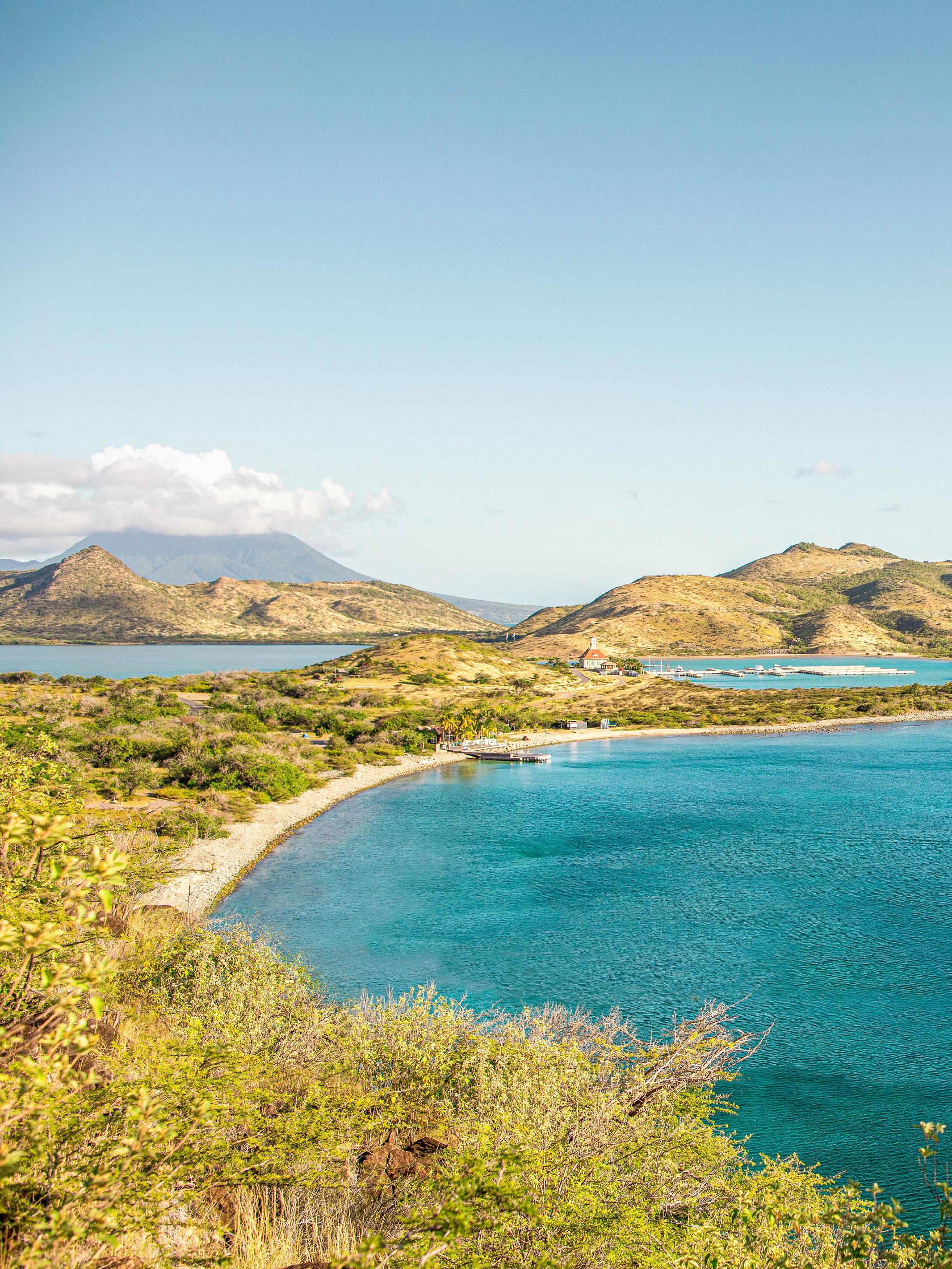
• Nicknamed the ‘Sugar City’.
• ●First British colony in the Caribbean.
• ●Population of 50,000.
• ●2,100 kilometres southeast of Miami.
• ●English is the primary language.
• ●Residents are called Kittitians.
• ●Site of the largest greenhouse in the Caribbean.
• ●The Poinciana is the national flower.
• ●Cricket is the national sport.
• ●The island is named after Saint Christopher, the patron saint of travellers.
• ●Hosts the annual St Kitts Music Festival.
• ●Average temperature of 28 degrees Celsius (°C).
• ●Independent since 1983.
• ●Home to the Warner Park Cricket Stadium and became the smallest nation to ever host a World Cup event after hosting matches at the 2007 Cricket World Cup.
• ●National dish includes seasoned breadfruit, coconut dumplings, spicy plantains, and stewed saltfish.
Originally called Liamuiga – which translates to ‘fertile land’ – St Kitts is a quiet, unspoiled oasis where time moves at its own pace.
The island’s 23 miles of lush tapestry is often referred to as ‘the way the Caribbean used to be’, with a focus on slow and gentle living where the art of enjoying life is taken seriously.
The moment you arrive on St Kitts, you’ll become enamoured by the warm, welcoming, and proud spirit of the people living there. With a rich culture, vibrant history, and captivating traditions, one of the most enticing aspects of the island is the locals you’ll meet.
With gentle wildlife, mountains that seem to brush the precipice of the sky, and shores that defy convention with their midnight-black volcanic sand, each day calls for a new adventure. You’ll learn to savour every moment as you venture deeper through the romantically rugged tropical interior, with a breeze perfumed by sea salt and the leftover cloying scent of sugar cane guiding your every step.
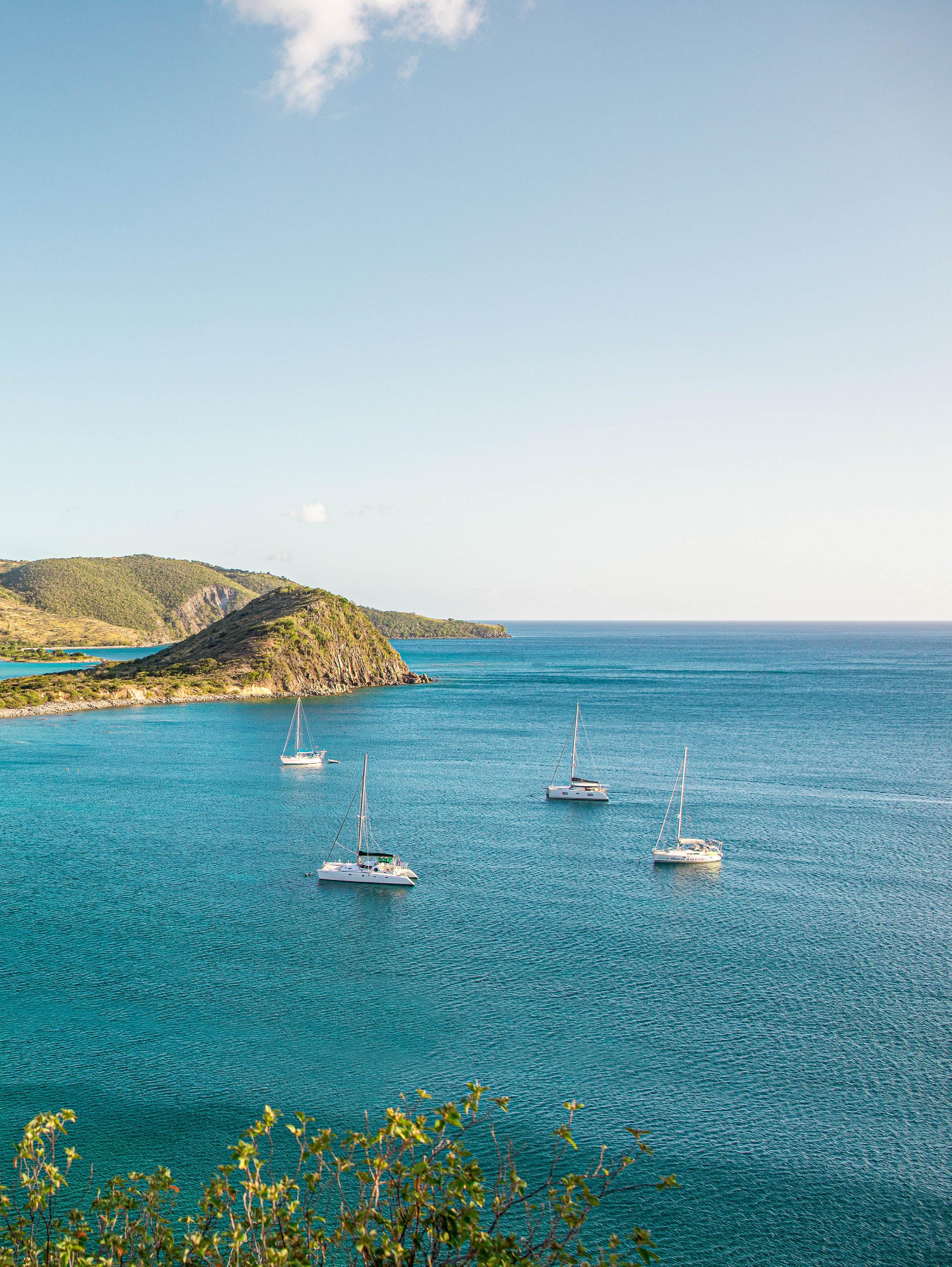
Alongside the untouched haven of the canopied rainforest of Mount Liamuiga and pearlescent lagoons, ideal for hikers, bird watchers, and nature lovers alike, colourful and lively cities are dotted across the island, with the largest being the capital city of Basseterre. Infused with a local, pulsing soca beat, the city is the radiant heart of the nation, filled with museums, savoury restaurants, and bright Creole architecture.
Here, you’ll learn everything there is to know about the art of having a good time, otherwise known locally as limin’. To lime is to embrace the sun’s warmth on your skin, listen to the siren’s call of an underwater world just offshore, or fully melt into the swaying embrace of a hammock.
While relishing in the rich flavours of locally grown food, you won’t be able to resist tapping your feet to the energetic and carefree serenade of string bands, tree frogs, vervet monkey calls, and crashing waves.
With a long and intricate history, St Kitts has matured into a thriving cultural hub worthy of its central location on the global stage. People from all over the world have been drawn to the alluring nature of St Kitts for hundreds of years; from the lava formations to the underwater marvels to the leisurely atmosphere, the island offers a paradise to everyone.


HONOURABLE MARSHA T. HENDERSON, MINISTER OF TOURISM
AS THE OFFICIAL destination marketing organisation for the island, the St Kitts Tourism Authority (SKTA) consists of a team of dynamic professionals with a wealth of knowledge to assist individuals and travel industry partners in planning an unforgettable trip filled with memories to last a lifetime.
Honourable Marsha T. Henderson, Minister of Tourism, is a born Kittitian and a proud advocate for the promotion and advancement of her beautiful island. She speaks to us about the unique qualities that make St Kitts a year-round destination and the steps the country is taking to ensure a sustainable future as the Caribbean’s eco-tourism gem.
Outlook Travel (OT): How does SKTA market St Kitts as a year-round destination and an island worth meeting?
Honourable Marsha T. Henderson, Minister of Tourism (HMTH): St Kitts beckons visitors with its year-round allure, providing abundant cultural experiences, adventurous pursuits, wellness opportunities, and culinary delights. With this, we ensure there are exciting events and happenings on the island year-round, especially during the non-peak season for the Caribbean.
To entice travellers to explore St Kitts in its non-peak seasons, we offer a line-up of notable events called the
Summer of Fun. The events for this year include the St Kitts Music Festival (22nd – 30th June), Nevis Mango Festival (5th – 7th July), St Kitts and Nevis Restaurant Week (11th – 21st July), Nevis Culturama (15th July – 6th August), and Caribbean Premier League (CPL) T20 Cricket (21st August – 8th September). The Summer of Fun offers a chance for travellers and locals alike to experience the very best of what makes our island stand out from other Caribbean destinations.
OT: What great strides has SKTA made in strengthening its brand and driving destination visibility and interest?
HMTH: In the past year, our tourism efforts have focused on increasing airlift and cruise arrivals to boost visitation, paired with continued product innovation, including the Kittitian RumMaster programme and our ongoing special events like the Summer of Fun.
Regarding airlift, we are proud of our significant advancements both

within the Caribbean, where we are bolstering local ties, as well as on the international stage.
In November 2023, St Kitts and JetBlue hosted an inaugural flight from John F. Kennedy International Airport (JFK), which is now the first year-round direct route from the New York metropolitan area that offers flight services three times a week. Ahead of the Summer of Fun, American Airlines has committed to additional airlift during the week of the St Kitts Music Festival. In addition to our existing service, a second flight will operate non-stop from Miami on Wednesday 26th June, Thursday 27th, Sunday 30th, and Monday 1st July.
Our historical airlift summer schedule also includes weekly lifts from Atlanta on Delta Airlines and Newark on United Airlines, as well as two flights a week from Gatwick Airport on British Airways. The American Airlines schedule reflects weekly flights from Charlotte and JFK and a daily service from Miami.
We are thrilled to continue to expand island accessibility through
daily flights from St Maarten on Winair and two flights a week from Antigua, Dominica, and Tortola. Additionally, InterCaribbean Airways flies four times a week from Barbados, and Caribbean Airlines flies three times a week from Trinidad and twice from Barbados.
To further promote regional accessibility, the Makana ferry provides laid-back ferry voyages from Sava, Statia, and St Maarten to St Kitts every Monday and Friday.
On the island, our Kittitian RumMaster programme is led by two of St Kitts’ prestigious rum experts and invites travellers to deep dive into the history of rum and distilling. Travellers will gain hands-on experience in creating spiced rum and learn the methodology of creating rum-based Caribbean cocktails. The immersive experience is designed for rum aficionados and visitors wanting to learn more about the spirit’s story in St Kitts.
OT: Can you tell us about the many awards and accolades St Kitts celebrated throughout 2023?
HMTH: We celebrated many accolades throughout 2023, including Caribbean Journal’s prestigious Tourism Minister of the Year award, a placement in Condé Nast Traveler’s 2023 Hot List, Far & Wide’s Reader’s Choice Awards, Travel + Leisure’s Readers’ Choice
Awards, AFAR’s Where to Go in 2024, World Travel Awards, and Amex Travel’s Top Destinations of 2024.
SKTA also won a Magellan Gold Award for the Caribbean Eco-Friendly Sustainable Destination category. Most recently, St Kitts was named Green Destination of the Year by Caribbean Journal’s Caribbean Green Awards.
OT: What makes St Kitts a haven for eco-conscious travellers seeking unforgettable experiences in harmony with the environment?
HMTH: Eco-adventures and ecotourism are major driving forces for our tourism sector. One of the top things to do in St Kitts is trekking and adventuring through the thriving rainforest. While most rainforests on Earth are disappearing, the rainforest in St Kitts is actually expanding thanks to old sugar plantations now being reclaimed by the natural environment. Eco-adventure activities in St Kitts include ziplining through the lush rainforest, hiking up Mount Liamuiga, diving into ancient shipwrecks, and riding all-terrain vehicles (ATVs) through sugar estate ruins.
In the culinary space, St Kitts is expanding on the trending farm-totable experiences across the island, as seen with our many farm-to-table and sea-to-plate options, as well as the Liamuiga Natural Farm experience which is a newer addition to our unforgettable eco-tourism offerings.
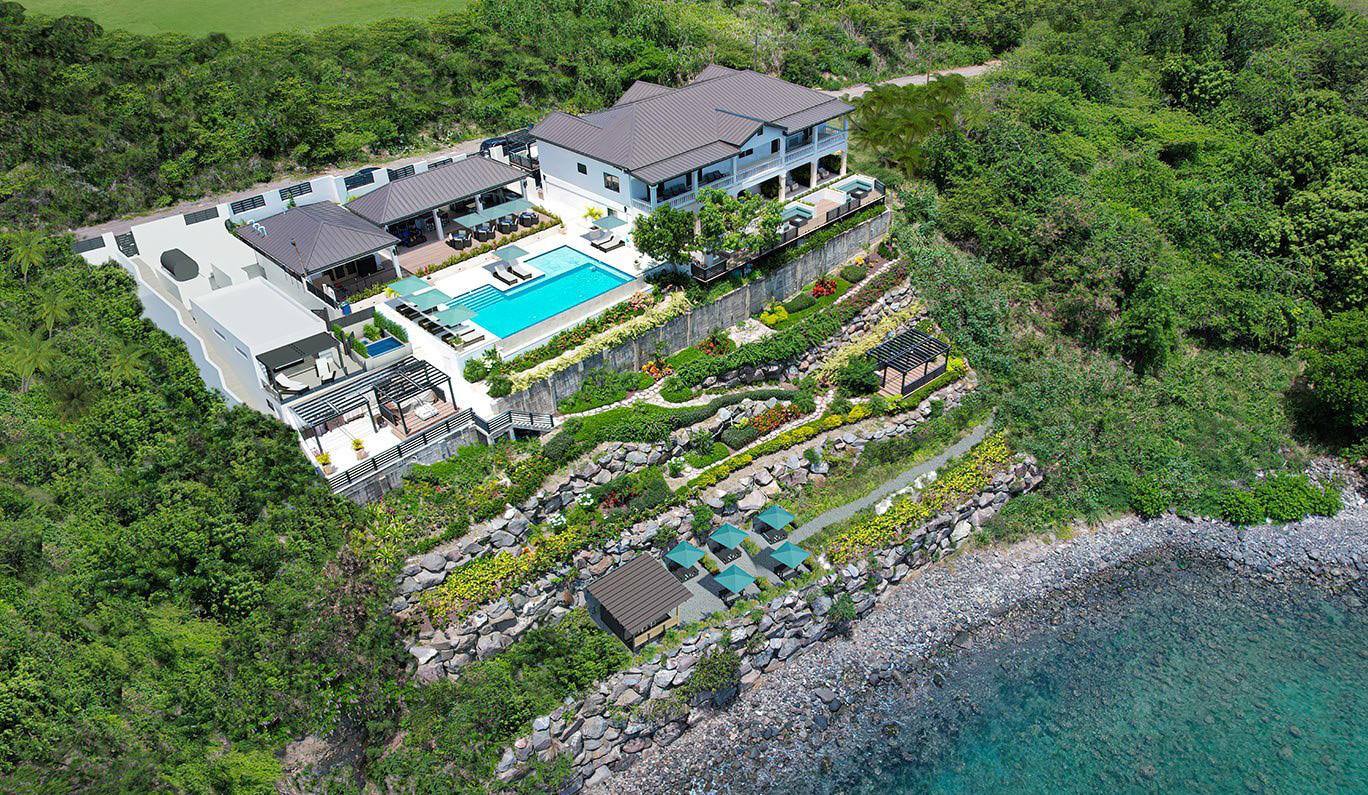
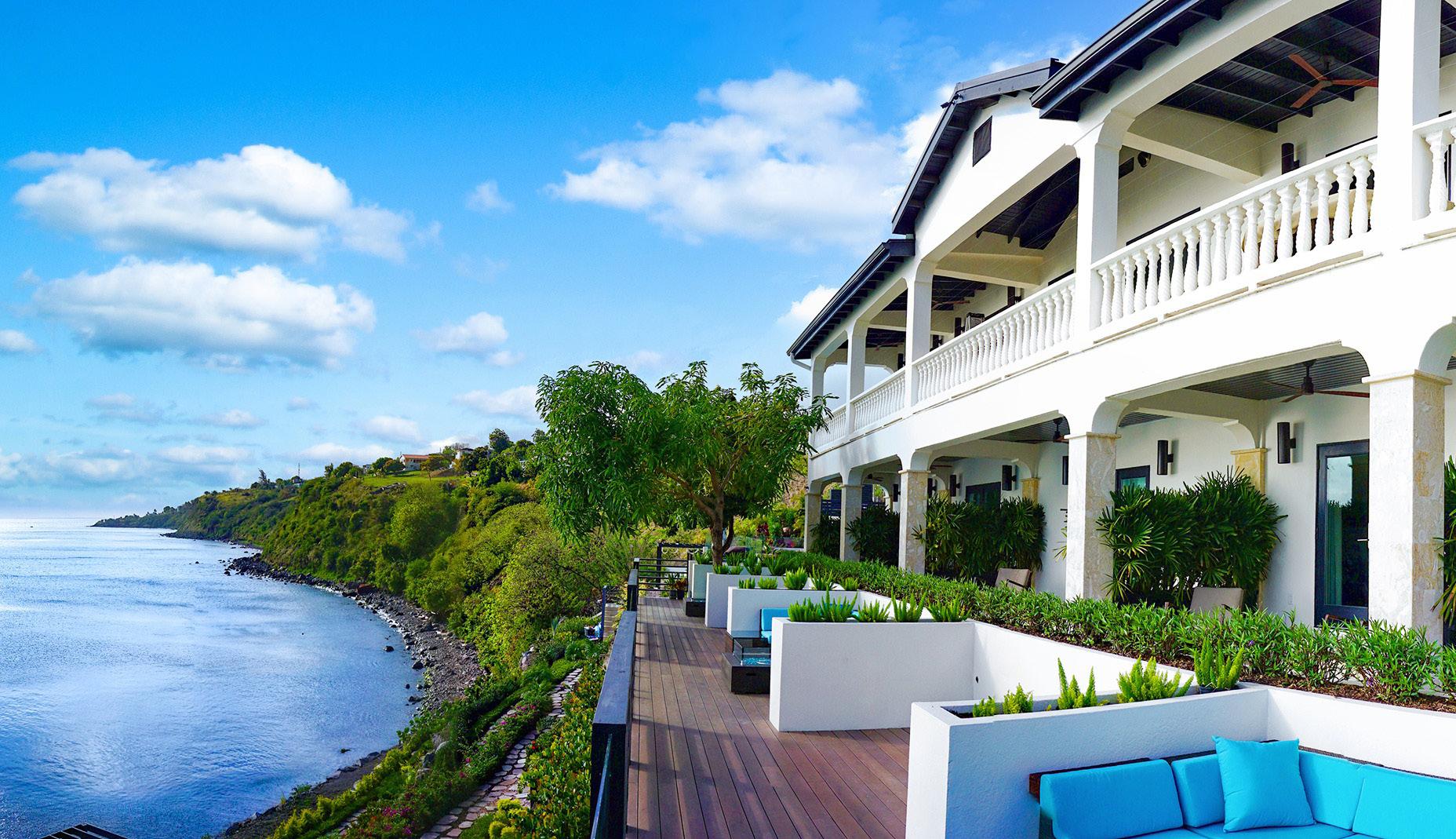
We also have wonderful properties that eco-conscious travellers would be delighted to stay at. These include Sunset Reef and Belle Mont Sanctuary Resort.
The former is a boutique luxury villa hotel with a commitment to leaving a minimal footprint on the environment that boasts some truly advanced technological management systems.
For example, a state-of-the-art geothermal system transfers energy quickly and efficiently. The pool stores excess energy in the form of heat produced by the resort’s air conditioning, which is then transferred when needed for the hot water in hotel rooms, laundry, and kitchen facilities. Sunset Reef also has an advanced eco-friendly sewage treatment plant.
The 5-star eco-chic Belle Mont Sanctuary Resort is nestled on Mount Liamuiga amongst 400 acres of fertile, organic farmland and lush tropical forest. Alongside the resort,
the area has been transformed by authentic culinary experiences with farm-to-table dining and delicious Caribbean-style restaurants. As a working organic farm, the resort is committed to preserving and celebrating the natural beauty that surrounds it.
OT: How will St Kitts remain at the forefront of the sustainable tourism movement in 2024?
HMTH: Woven into the fabric of St Kitts, sustainability is more than just a trend; it’s a deeply ingrained lifestyle embraced by the local population that goes beyond traditional ecological sustainability.
Our government recently brought to parliament a bill to ban single-use plastics, along with a timetable for implementation that will be structured in three phases and affect the importation, sale, and distribution of several items.

●“St Kitts beckons visitors with its year-round allure, providing abundant cultural experiences, adventurous pursuits, wellness opportunities, and culinary delights”
Phase 1 involves banning the importation of t-shirt plastic shopping bags as of 31st December 2024. This will be followed by a ban on the sale and distribution of these bags by 31st March 2025.
The second phase involves a ban on importing Styrofoam food containers and plastic straws, effective 30th April 2025. The sale and distribution of the same items will be banned as of 21st July 2025.
Finally, Phase 3 involves banning the importation of single-use plastic cups, plates, and utensils from 31st August 2025, followed by a ban on selling and distributing the same products by 30th November 2025.
We are also planning to convert to LED lights, which are significantly more energy-efficient than traditional options as the government is likely moving away from using more electricity-consuming lighting sources.


Whether your travels bring you to St. Kitts & Nevis for business, short-term relocation, or a much-needed vacation, the St. Kitts Marriott Resort & Royal Beach Casino has got you covered.
Flanked between the Caribbean Sea and Atlantic Ocean, you will be sure to enjoy the simplicity of all that is authentically Caribbean. Enjoy local flavors at the hotel or surrounding restaurants and bars. Learn about Kittitian culture, take a scenic or experiential tour, or just relax and unwind.
At Marriott, our goal is to provide exceptional service to enrich our guests’ overall experience and create lasting memories. Enjoy the chill island vibe and Venture Deeper in St. Kitts & Nevis.
For general information or sales inquiries call +1.869.466.1200, extension 7658
St. Kitts Marriott Resort & The Royal Beach Casino 858 Frigate Bay Road, Basseterre, Frigate Bay




●“Our island offers a unique blend of history, natural beauty, and vibrant culture that sets us apart from other hotspots in the region”
– HONOURABLE MARSHA T. HENDERSON, MINISTER OF TOURISM, ST KITTS TOURISM AUTHORITY
Our island boasts a remarkable environmental success story. The Forest Ordinance of 1904 provides lasting protection for the central mountain forests. This, combined with the island’s naturally steep topography, has created ideal conditions for the rainforest to thrive.
As a result, St Kitts’ rainforest continues to expand, reclaiming previously abandoned sugar cane fields. This ongoing process highlights the effectiveness of long-term conservation efforts and the government’s continued commitment to the increased protection of these natural resources.
OT: For travellers that are thinking of visiting St Kitts this year, what differentiates the island from other Caribbean hotspots?
HMTH: Our island offers a unique blend of history, natural beauty, and vibrant culture that sets us apart from other hotspots in the region. One of the most enchanting qualities of St Kitts is undeniably her people. The culture is rich, and our traditions are vibrant; each is a testament to our history and sense of national pride.
We welcome visitors with open arms, so whether you’re exploring local markets, attending a festival or event, or relaxing on the beach, you’ll be greeted with warmth and hospitality.
Additionally, St Kitts is steeped in history as one of the Caribbean’s oldest colonised territories. Visitors can explore historic sites such as Brimstone Hill Fortress National Park, which happens to be a UNESCO World Heritage Site, and learn about the island’s colonial past through museum visits and guided tours.
OT: What must-see sights, must-do excursions, and must-experience cultural traditions would you recommend?
HMTH: Travellers must visit Romney Manor at Wingfield Estate, which was once owned by Thomas Jefferson’s great-great-great grandfather. Romney Manor at Wingfield Estate was the site of the first permanent plantation settlement in the English Caribbean and is now a sprawling hub and home to Caribelle Batik and Old Road Rum, the oldest intact rum distillery on the island.
While visiting Old Road Rum, visitors can become a Kittitian RumMaster. You’ll get a first-hand look at what it takes to go from sweet sugarcane to smooth spirit, sampling island-specific flavour profiles and trying your hand at small-batch production. You’ll conclude your Kittitian RumMaster experience at Spice Mill on Cockleshell Beach, where you can celebrate with some dedicated beach time and an authentic Kittitian meal.
Travellers should also visit the St Kitts Scenic Railway and experience the three-hour train tour that rolls across steel bridges and winds through small villages, offering a one-of-a-kind experience in exploring the island.
For one of the most beautiful views of St Kitts, stop by Timothy Hill Overlook for a 360-degree view of the Atlantic Ocean, the Caribbean Sea, Friar’s and Frigate Bays, and our sister island of Nevis.
A trip to St Kitts is not complete without visiting one of our many beaches. Cockleshell Beach is well known for its warm waters and golden sands, bordered on all sides by lush hills. Out in the distance, you can even catch a glimpse of Nevis.
OT: Finally, what bold vision is SKTA looking ahead to 2024 with?
HMTH: We look forward to continuing our momentum throughout 2024 and attracting travellers globally. We have been proving our success with our recent increase in airlift, cruises, and various on-island initiatives to increase our sustainability efforts and economic activity.

Tel: 869-465-4040 info@stkittstourism.kn visitstkitts.com


Experience one of the most unique tours in the Caribbean.
The train takes you through the northeastern coastline and offers you stunning views of the ocean, cliffs, and verdant vegetation. You will travel along the tall steel bridges spanning over canyons, winding through quaint villages and picturesque farmlands. Don’t miss capturing the majestic Mount Liamuiga, surrounded by tropical rainforests, rising proudly in the distance.


Throughout the journey, our knowledgeable tour guides will share insights into the island’s rich history, pointing out ruins of old sugar estates and windmills. While sipping on complimentary refreshments served by our car attendants, you can sit back and enjoy the performance of our masquerade dancers.
Following your leisurely train ride, continue your adventure on a scenic bus tour along St. Kitts’ southwestern coast. See the 300-year-old UNESCO World-Heritage Site, Brimstone Hill Fortress.



Praised by residents, expats, politicians, and tourists alike, El Fredo’s is renowned as some of the best local fare in St Kitts.
With traditional dishes such as swordfish creole, curry conch, saltfish, and a plethora of freshly prepared daily specials, this family-run restaurant provides an authentic local ambience that cannot be missed.
With the motto “we only eat the ones we catch”, Sprat Net Bar & Grill is an island hot spot so popular that cars line up waiting to feast on its fresh cuisine. Customers can pick their dinner directly from the daily catch and watch it be grilled to perfection before indulging on picnic tables covered by bright turquoise roofs.
FOR A SCENIC RIDE ON A HISTORIC RAILWAY...
First built in 1912 to deliver sugarcane from the fields to the sugar mill, St Kitts Scenic Railway is a unique and authentic way to experience the timeless beauty and culture of the island. Known as the “Last Railway in the West Indies”, the tour takes passengers on a 30-mile, three-hour trip through the real Caribbean.

FOR A SPLASHING GOOD ADVENTURE…
Dolphin Discovery
FOR A PRIVATE BEACH HIDEAWAY...
Embrace ultimate paradise at St Kitts Marriott Resort and The Royal Beach Casino , an upscale hotel that sits on its own private beach only four miles away from Robert L Bradshaw International Airport. Enjoy luxurious Caribbean charm in exclusive cabanas, fine dining establishments, and modern suites that boast unmissable views.
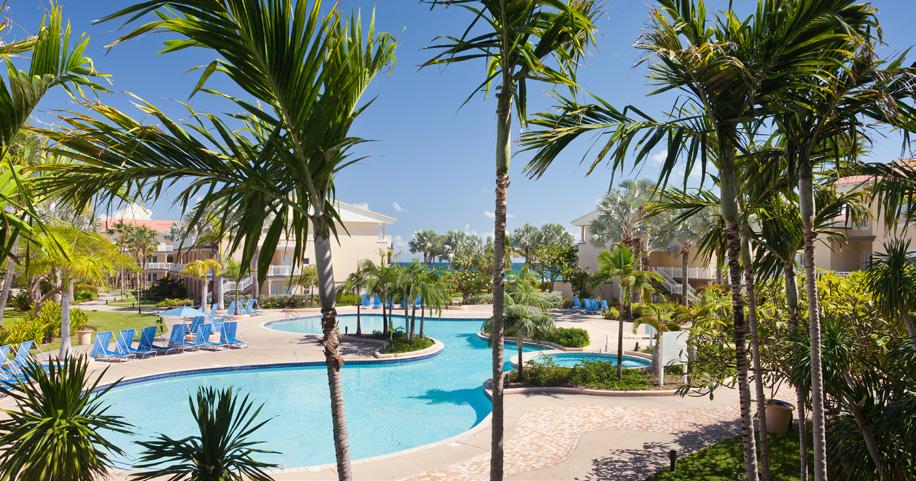
FOR A JEWEL BY THE SEA...
For a casually refined, naturally splendid experience, head to Sunset Reef St Kitts, a boutique resort that rests directly above the sparkling blue waters of the Caribbean Sea. With all-inclusive suites and an ambience that allows you to fully unwind and embrace the luxury of seeing where each day takes you, this opportunity is not to be overlooked.

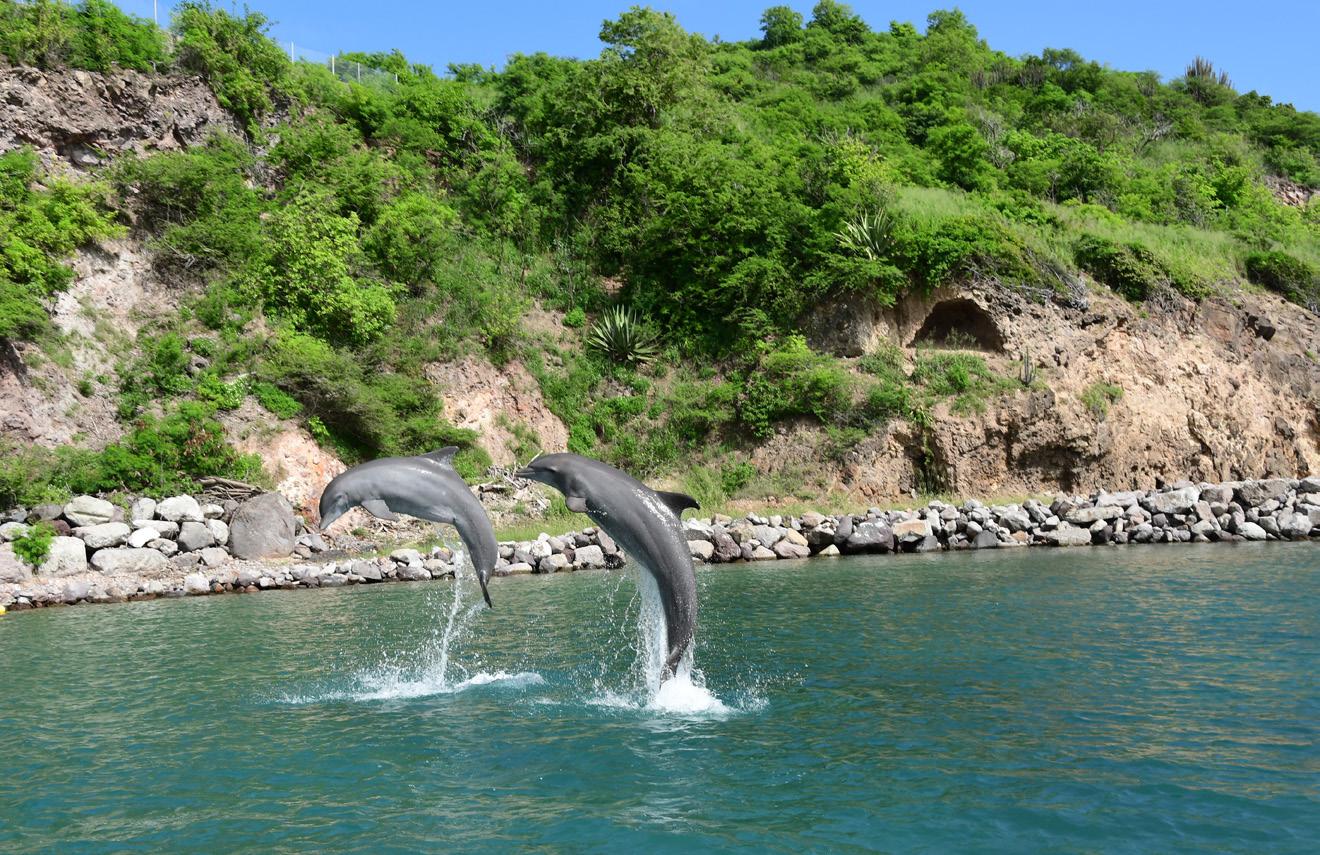


Come and live an unforgettable experience for the whole family! Have fun, laugh, and discover what our dolphins are like here at Dolphin Discovery St Kitts. We assure you that each of our dolphins are unforgettable. Don’t miss it and live this unique experience at the home of the most beloved dolphins.








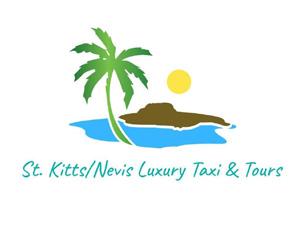





At nearly 800 feet (ft) above sea level and perched on a steep, precipitous slope on the Western Caribbean coast, Brimstone Hill Fortress was considered impenetrable in its prime, having been renowned as “The Gibraltar of the Caribbean”
Today, the imposing fortress stands as a prominent and well-preserved example of 17th and 18th century military architecture and a stark testament to European colonialism, the slave trade, and the birth of new societies in the Caribbean. To truly comprehend the magnitude and legacy of Brimstone Hill Fortress, it is first important to understand the history of St Kitts.
After Christopher Columbus landed on the island in the late 15th century, it became the first in the Caribbean to be officially settled upon by Europeans approximately 100 years later. Subsequently, the native Amerindians were virtually exterminated, and African people were brought in as slaves. The plantation system, primarily centred around sugar cane, came to result in great wealth for the island, thus making it a scene for many battles in the struggle for dominance.
With the first military usage in 1690, Brimstone Hill Fortress was designed by the British and constructed by slave labour in order to protect the coastline from sea attack.
The walls of the structure are predominately made of stone skilfully fashioned from the volcanic rock of which the hill is naturally composed, and the looming citadel inside is one of the earliest and finest surviving examples of the fortification style known as the “polygonal system”.
The fortress was abandoned in 1853 before being restored in the early 20th century, and today, tours of buildings still standing alongside a variety of ruins are available to the public.
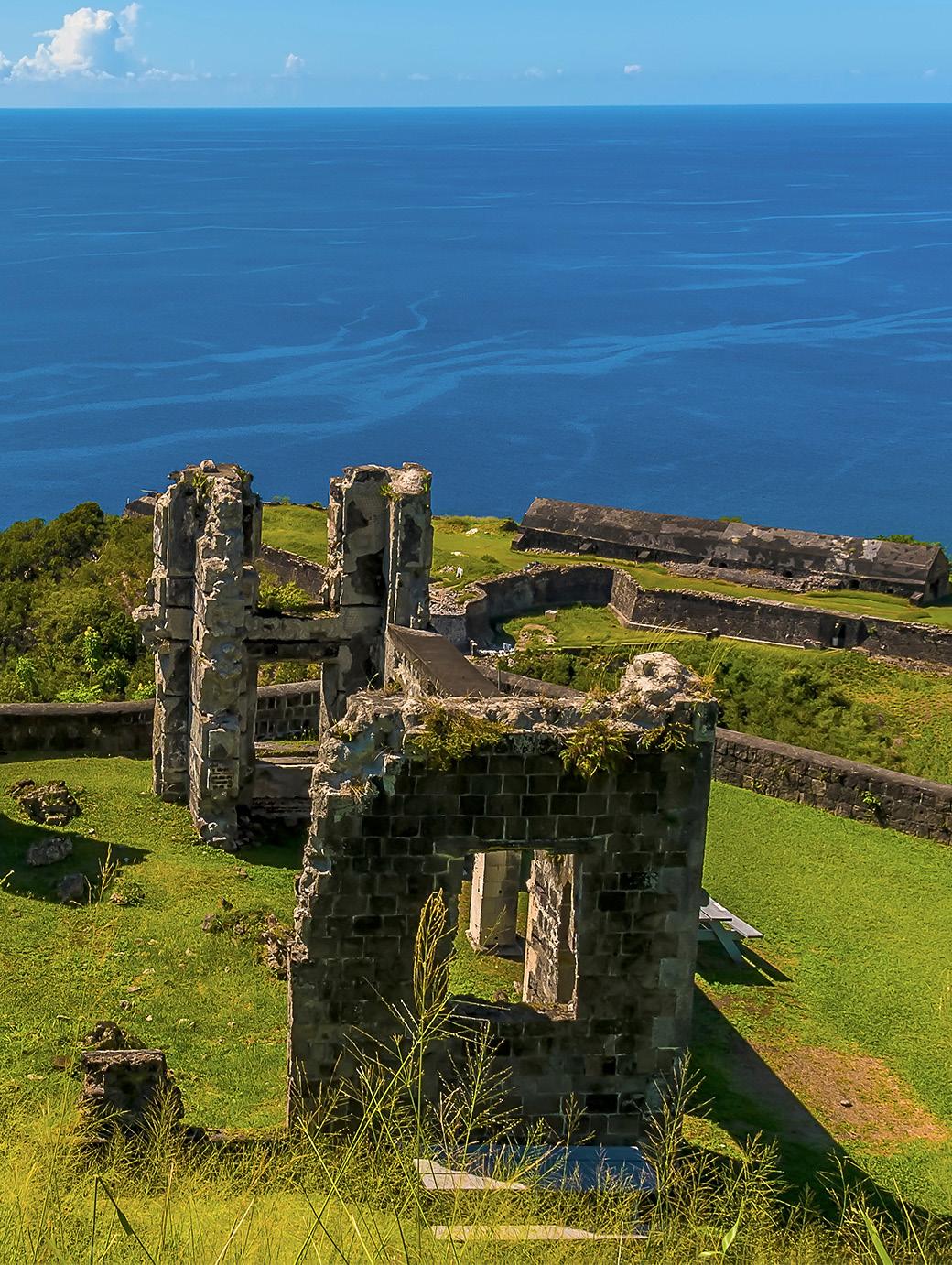
The fortress was declared a UNESCO World Heritage Site in 1999, and in addition to sparking important conversations about the Caribbean’s complex history, the fortress’ physical location offers an unparalleled panoramic view of forested mountains, lush fields, the historical township of Sandy Point, and the glistening expanse of the coastline.
This commanding structure is a true engineering feat, and when looking out at the stunning views from atop the thick stone walls, a sense of reverence and amazement is undeniable. The time capsule that is Brimstone Hill Fortress is a testament to the strength and perseverance of the Kittitian spirit and a necessity for any traveller venturing to the island.
Rum isn’t just a drink in St Kitts – it’s the story of the island. Reminiscent of a time when sugarcane dominated the nation, the tradition of rum making is a staple in St Kitts’ culture. The oldest surviving distillery, Old Road Rum, offers visitors a chance to make their own personalised bottle whilst learning about the spirit’s long history.
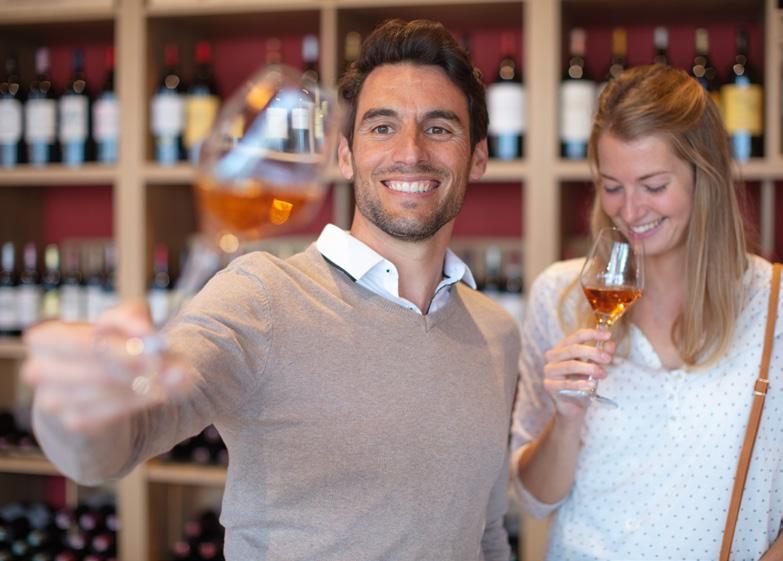

Located in the capital of Basseterre, Independence Square commemorates the 1983 independence of St Kitts and stands today as a popular venue for many cultural events.
The perfect place to lime with the locals and admire the 18th century Georgian buildings and ornate central fountain, the grassy and tree-adorned centre has a deep history to discover.
Standing tall as St Kitts’ highest mountain, Mount Liamuiga is hard to miss, even with its peak hidden by a blanket of hazy clouds. This dormant volcano is the perfect adventure for intrepid hikers looking for unprecedented views of the island. The climb through rainforests up to the volcanic crater takes approximately six hours to complete, so make sure to adequately prepare yourself for this high-intensity venture.


NAVIGATING ST KITTS is easily manageable, with a variety of options at your fingertips.
Robert L Bradshaw International Airport is the primary gateway into the island, located in Basseterre. The airport serves both international and regional airlines, including the likes of Air Canada Rouge, British Airways, American Airlines, Delta Airlines, and United Airlines, which provide daily connections and non-stop flights from cities in the US including Miami, New York City, Atlanta, and Charlotte, alongside the UK, Canada, mainland Europe, and the Caribbean.
Upon arrival, minibus taxis are readily available to transport travellers to their accommodations, or if you’re looking for more independence, rental cars are another way to explore the island. However, be aware that
in order to acquire a rental car, you must first obtain a driver’s permit from the Traffic Department of the Royal Saint Christopher and Nevis Police Force, even if you already hold an international driver’s licence.
Taxis are highly recommended for tourists, as they are regulated by
the government and are the most accessible form of transport with fixed rather than metered fares. Additionally, many drivers serve as expert tour guides for an additional fee, allowing you to experience the island with the knowledge and passion that only Kittitians possess.
In addition to taxis and rental cars, the waters are connected via ferries, water taxis, and marinas that offer rental boats and yachts for personal use. Many cruise lines also travel through the Eastern Caribbean, stopping at Port Zante in close proximity to Basseterre.
If you’re feeling a bit more adventurous, consider renting a scooter, bike, or even an ATV. Get ready to buckle up for an exciting ride traversing the scenic seascape coasts, where you can feel the diverse landscape of St Kitts beneath your wheels and the salty wind in your hair.
Thanks to its tropical climate, St Kitts experiences warm weather yearround, with average temperatures between 25 and 28°C, making it an ideal travel destination no matter the season.
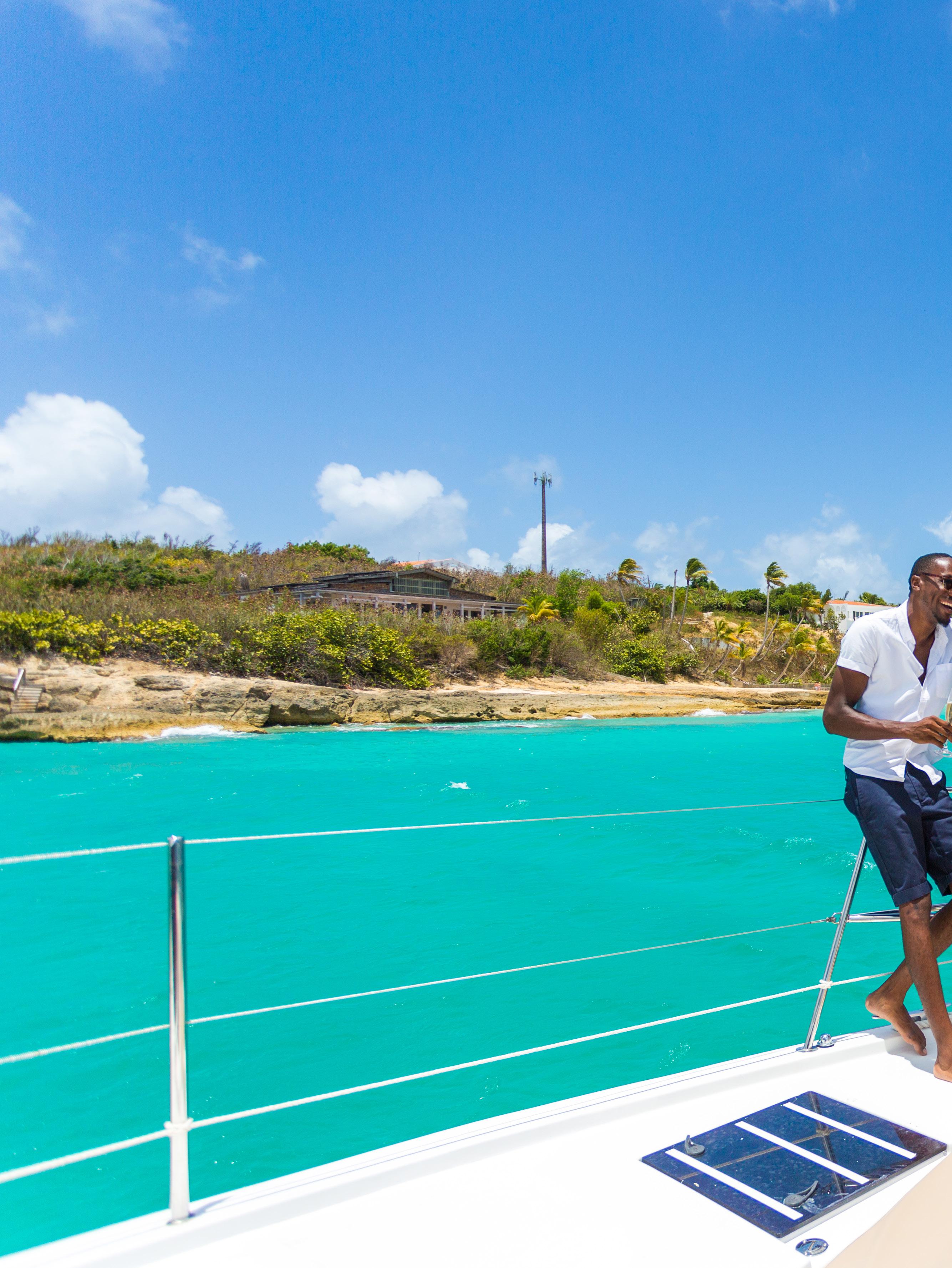
Explore the understated beauty and irresistible charm of Anguilla, renowned as the culinary capital of the Caribbean, where pristine beaches, crystal-clear waters, and vibrant culture await
WRITER: ED BUDDS | PROJECT
MANAGER: DEANE ANDERTON
Tucked away in the Eastern Caribbean, Anguilla is one of the most northerly of the Leeward Islands in the Lesser Antilles, lying east of Puerto Rico and the Virgin Islands, and directly north of Saint Martin.
In reference to its long, slender shape, the Spanish word anguilla, meaning “eel”, was used to coin its name, as local tradition holds that Christopher Columbus first christened the island.
Perhaps its signature attraction, Anguilla possesses 33 spectacular and diverse beaches, including several ranked in the top 10 in the world and the very best the Caribbean has to offer.
While each beach boasts silky white sand, their personalities differ, as visitors can discover heartstoppingly beautiful arcs like Mead’s Bay or secluded coves like Little Bay, reachable only by boat.
In Anguilla, water temperatures are perfect for swimming and most beaches are calm with gentle shoals. Although surfers can’t be guaranteed waves, wind and kite surfers can enjoy the weather conditions in Anguilla year-round.
Anguilla’s white sand beaches are legendary, but the island is also home to rugged landscapes and a plethora of activities that take place away from the shore, where you can embrace nature and enjoy a treasure trove of activities,

including salt picking, hiking, horseback riding, cycling, or diving.
Anguillians take great pride in their heritage and unique identity as one of the smallest inhabited Caribbean islands.
Visitors and Anguillians alike describe this hub of tranquillity as a friendly place where locals display genuine pleasure in sharing their home with visitors. Hospitality and harmony are the hallmarks of the island.
In this way, peace, soulful ‘joie de vivre’ and a respect for the island’s rich history, including its status as a selfgoverning British Overseas Territory, garnish Anguilla with a uniquely warm and welcoming vibe.
If sampling local cuisine is your weakness, Anguilla’s high-end dining establishments, from iconic to upstart, are on the radar of culinary enthusiasts worldwide.
Epicurean talent is indigenous to Anguilla, as both locals and international foodies were ordering delicious barbecues and fish soups from a food truck long before it became a trend in global metropolitan centres. Now, sophisticated, home-grown, as well as top international chefs dazzle diners island-wide, earning Anguilla its reputation as the culinary capital of the Caribbean.
Overall, as a paradise for discerning, curious, and active travellers at a range of price points, no matter what adventures you seek, every experience is exclusively yours in Anguilla.
THE ANGUILLA TOURIST Board was established to promote the island as a tourist destination and attract visitors. It was founded as part of the government’s efforts to develop the tourism industry and boost the economy through tourism-related activities.
Today, the organisation aims to market Anguilla globally, showcasing its unique attractions, culture, and experiences to travellers around the world.
By implementing these promotional objectives, the Anguilla Tourist Board’s number one priority is to encourage visitor arrivals, prolong the duration of stays, and spur economic advancement whilst conserving the intrinsic allure and identity of the island.
We speak to Stacey Liburd, Director of Tourism, about the organisation’s exciting future, unmissable island highlights, and what current trends are defining the nation as an allencompassing destination.
Outlook Travel (OT): What are the Anguilla Tourist Board’s current goals in terms of promoting the nation as a first-choice travel destination?
Stacey Liburd, Director of Tourism (SL): The current objectives revolve around establishing Anguilla as a premier travel destination in the Caribbean, while underscoring our distinctive offerings and competitive advantages.
Our primary goals include attracting specific traveller segments such as honeymooners and adventure seekers, and niche interest groups

STACEY LIBURD, DIRECTOR OF TOURISM
like golf enthusiasts and culinary aficionados, who value our worldclass service, unspoiled beaches, and authentic cultural encounters.
We’re prioritising environmentally sustainable developments, community-driven tourism programmes, and eco-conscious measures to ensure that our tourism expansion aligns harmoniously with the local community’s needs and the conservation of our natural surroundings.
The growth of both new and existing accommodation, attractions, and genuine cultural activities are another focus, as this showcases the island’s distinct character. To guarantee seamless and convenient travel experiences for visitors, the new Blowing Point Ferry Terminal opened in January 2023 and, by autumn 2025, we aim to have completed the
Clayton J. Lloyd International Airport’s terminal building redevelopment.
OT: Competing with the likes of nearby Caribbean islands in an increasingly saturated travel market, how do you market Anguilla competitively as a destination?
SL: Marketing Anguilla competitively requires a strategic approach that highlights our unique strengths, differentiators, and authenticity. Some of the key strategies that we employ to stand out from the crowd include emphasising the exclusivity and intimacy of the island. We market our island as an uncrowded and tranquil destination; our stunning beaches, crystal-clear turquoise waters, and coral reefs are truly unparalleled in the region.
We also focus on providing an authentic, immersive cultural experience, highlighting our rich history, vibrant music, and delicious cuisine. Visitors can engage with locals, participate in traditional activities, and explore our hidden gems.
Anguilla is renowned for its 5-star resorts, upscale villas, and gourmet dining, so we target travellers seeking luxurious accommodation, worldclass amenities, and exceptional service.
We also want travellers to know we have properties, dining experiences, and activities to suit all budgets. We work closely with travel agencies, travel agents, and tour operators to offer competitive packages, promotions, and exclusive deals. Additionally, we focus on creating unforgettable experiences that leave


a lasting impression on visitors and encourage repeat visits.
OT: What makes Anguilla a popular destination for weddings and honeymoons?
SL: Anguilla is a popular destination for weddings and honeymoons due to its romantic and picturesque settings, luxurious accommodation, and intimate atmosphere.
Our white sand beaches, turquoise waters, and breathtaking sunsets provide a dreamy backdrop for
weddings and romantic getaways. Couples can exchange vows on secluded beaches, in lush gardens, or at historic churches. The island boasts a range of resorts, boutique hotels, and villas that cater to couples looking for a romantic, intimate stay.
Many properties offer exclusive wedding and honeymoon packages with personalised services and amenities for groups of any size. Couples seeking privacy and seclusion can escape to Anguilla’s

offshore cays, such as Sandy Island, Prickly Pear, or Scilly Cay, as these pristine islands offer a remote and intimate setting for weddings, receptions, or sunset cruises.
We also have a wealth of experienced wedding planners, photographers, local chefs, and vendors who can help couples to create the wedding or honeymoon of their dreams.
Overall, Anguilla offers a perfect blend of natural beauty, accommodation at every price point,

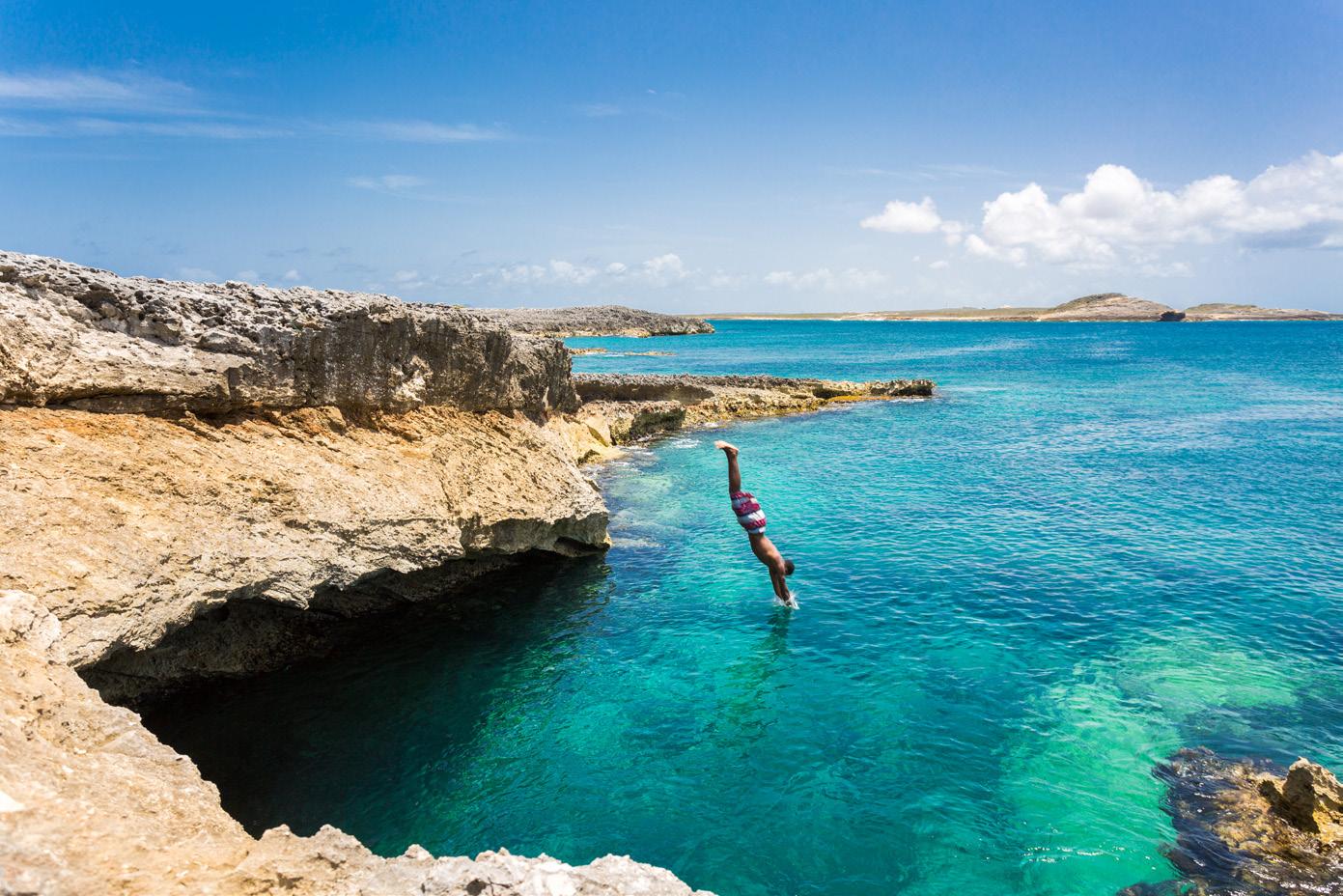
romantic settings, and professional services that make it a top choice for unforgettable celebrations.
OT: What more can you tell us about the island’s exciting culinary scene?
SL: Anguilla is renowned as the culinary capital of the Caribbean, offering a vibrant and diverse dining scene that celebrates the island’s rich gastronomic traditions and influences. The Anguilla Culinary Experience (ACE) is a must-do event that highlights the island’s top chefs, local flavours, and unique dining experiences.
ACE brings together talented chefs, both local and international, to showcase the best of Anguillian cuisine through cooking demonstrations, exclusive tasting menus, parties, and special events.
There are a wide range of dining options on the island, from beachfront shacks serving up delicious seafood to upscale restaurants offering gourmet dishes using locally sourced ingredients.
The culinary scene is characterised by its fusion of flavours to create distinctive dishes that are a true reflection of Anguilla’s cultural diversity. Food festivals, cooking classes, and farm-to-table experiences are also popular, allowing visitors to immerse
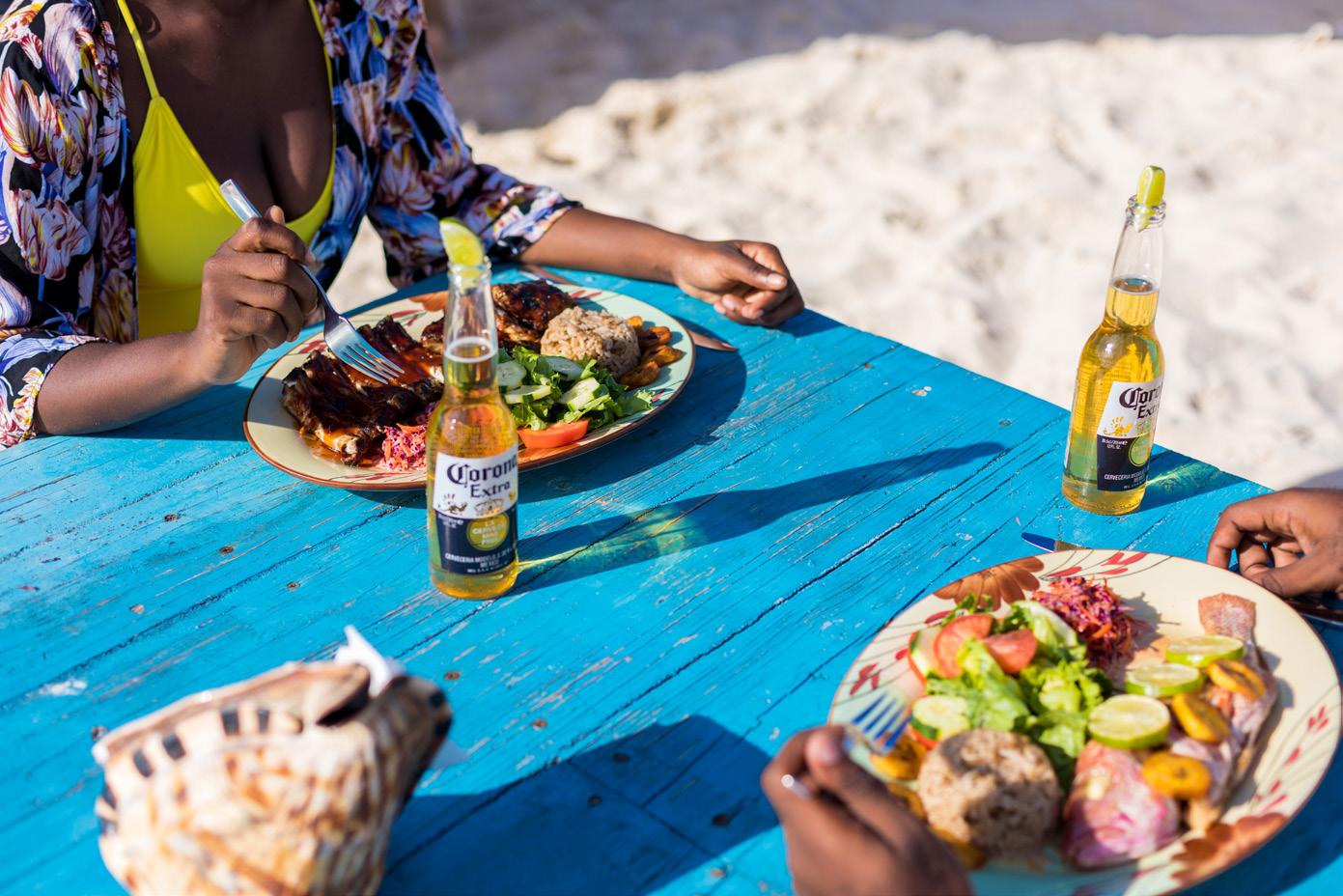


“Travellers are increasingly conscious of their ecological footprint and are seeking destinations that prioritise sustainability and environmental conservation”
– Stacey Liburd, Director of Tourism, Anguilla Tourist Board
themselves in the local food culture and engage with the island’s culinary heritage.
OT: What other cultural, historical, or sporting activities attract visitors to the island?
SL: Anguilla offers a variety of cultural, historical, and sporting activities that attract visitors to the island. Visitors can relax on our incredible beaches and get active snorkelling, scuba diving, kayaking, and paddleboarding. The island has a rich history, and visitors can explore sites such as Wallblake House, historic churches, and heritage museums to learn about Anguilla’s past.
The island has a lively music and festival scene, with events like Moonsplash Music Festival, Anguilla Summer Festival, August Monday Beach Party, and Eyes Wide Shut attracting visitors from around the world.
In my opinion, a stand-out attraction that appeals most to travellers is
Anguilla’s pristine beaches. With 33 to choose from, none of which are private and each offering its own unique charm and beauty, visitors can enjoy breathtaking views, relaxation, and water activities in serenity and tranquillity. Shoal Bay, Meads Bay, and Rendezvous Bay are some of the top beaches that showcase Anguilla’s natural splendour and allure.
OT: What advice would you give to travellers visiting the island of Anguilla for the first time?
SL: For first-time visitors to Anguilla, I recommend renting a car or Moke as an excellent way to discover the island at your own pace. Seize the chance to sample Anguilla’s local cuisine at local establishments like Mabel’s Soup, Ken’s BBQ, Paper BBQ, Sharkey’s, Vincy’s, Andy’s, E’s Oven, and Sunshine Shack, all of which offer fresh seafood, traditional Caribbean flavours, and Anguillian charm.
Elsewhere, you can enjoy outdoor activities to explore Anguilla’s

stunning natural beauty. Remember to pack light, breathable clothing due to the island’s tropical climate.
We’re a friendly and welcoming destination, so respect our local customs and culture and unwind and soak up the relaxing island ambiance by spending time at the beach and admiring the breathtaking views that define this Caribbean paradise.
OT: What recent trends, such as the digital nomad scene, are transforming the travel industry in Anguilla, and how are you utilising them?
SL: In recent years, several trends have emerged that are transforming the travel industry in Anguilla, including the rise of remote work and digital nomadism. Anguilla’s peaceful atmosphere, reliable internet connectivity, range of villas, and short or long-term stay properties make it an attractive option for digital nomads looking for a paradise-like setting to work from.
Travellers are increasingly conscious of their ecological footprint and are seeking destinations that prioritise sustainability and environmental conservation. Anguilla has been working towards promoting sustainable tourism practices, such as conservation efforts and responsible tourism initiatives that go beyond traditional activities.
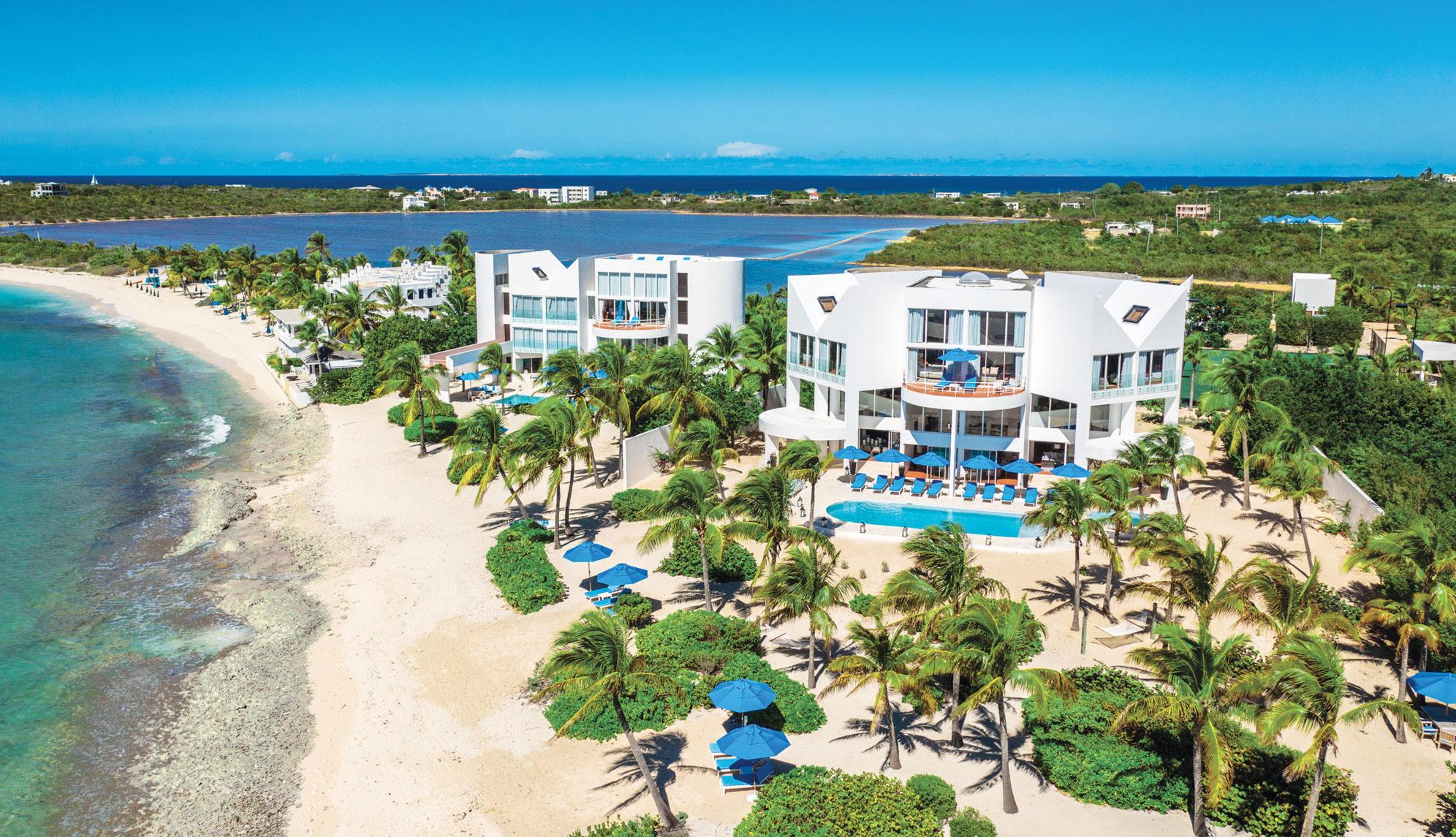

Anguilla has seen a rise in demand for customised itineraries, private tours, and immersive cultural experiences that allow visitors to connect more authentically with the destination.
Wellness tourism is another growing trend, with travellers prioritising activities that focus on health, relaxation, and rejuvenation.
Anguilla’s spas, yoga retreats, and resorts cater to this trend by offering wellness programmes, spa treatments, and fitness activities that promote overall well-being. Anguilla has taken proactive steps to welcome and capitalise on these trends to improve visitor satisfaction and bolster the local economy.
OT: What challenges does the tourist industry in Anguilla face today, and how do you navigate these?
SL: Like many destinations, the tourism sector in Anguilla encounters challenges such as natural disasters, seasonality, accessibility, and competition from neighbouring Caribbean destinations. To overcome these hurdles, Anguilla has expanded its tourism offering by promoting cultural attractions, ecotourism, adventure activities, and wellness retreats.
We are extending our travel season, as the island was previously closed for tourism from late August to midOctober. However, this is beginning to
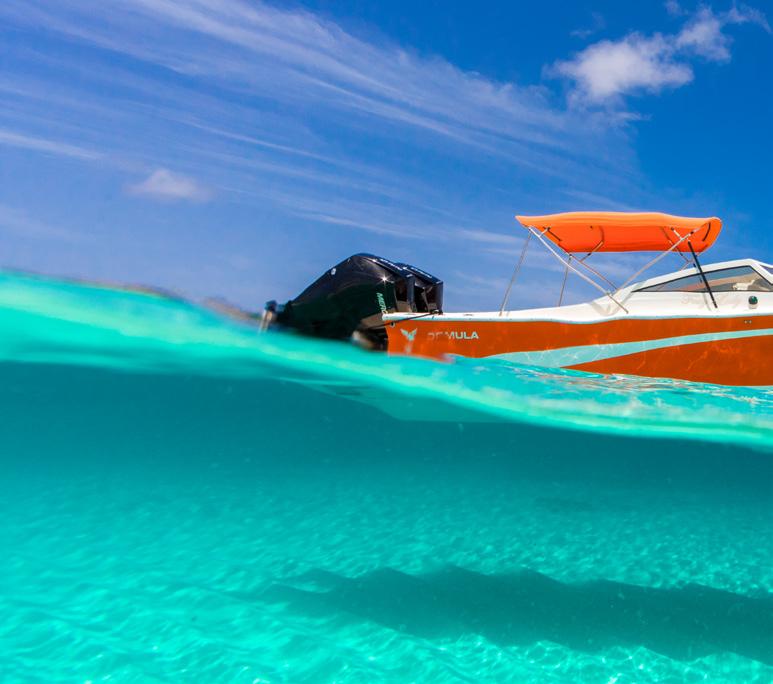
shift with the likes of Aurora Anguilla now staying open year-round and some resorts and restaurants closing for a shorter duration than before.
The island has also enhanced its infrastructure to withstand natural disasters and upgraded accommodation to cater to varying tourist needs. Collaborative efforts with local businesses, community groups, and government agencies have fostered partnerships, resulting in shared resources, expertise, and innovative solutions.
Embracing sustainable tourism practices to protect Anguilla’s natural beauty and cultural heritage for future generations reinforces the island’s commitment to responsible tourism. By implementing these strategies and remaining flexible to evolving trends


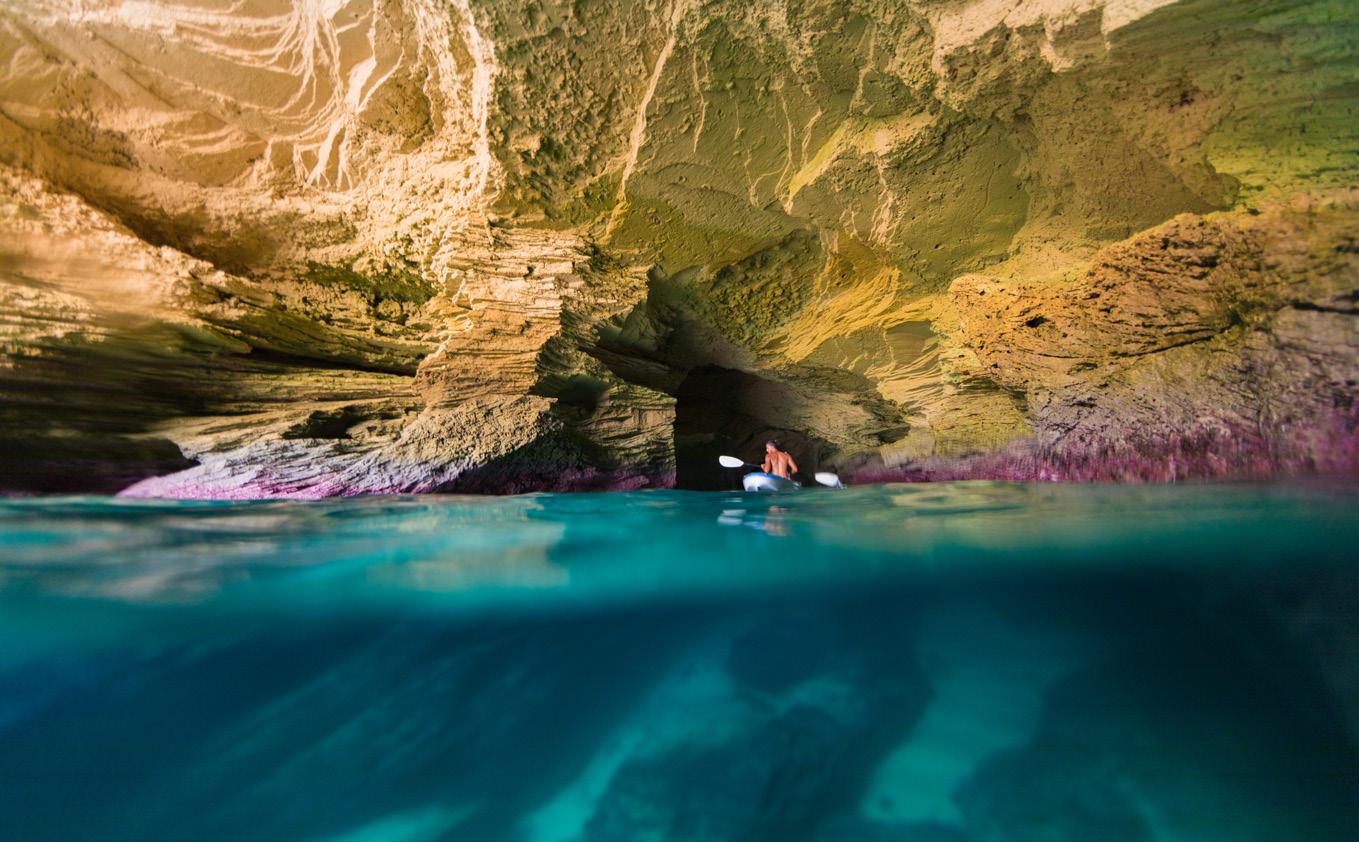

and market dynamics, Anguilla can effectively address tourism industry challenges and maintain its status as a highly desirable travel destination.
OT: Are you optimistic about the future of the tourism industry in Anguilla?
SL: I’m very optimistic about the future of the tourism industry in Anguilla. I firmly believe that our island’s distinct
allure, natural landscapes, and exceptional hospitality will continue to entice visitors from across the globe.
The Anguilla Tourist Board has been diligently working to promote the destination, enhance our infrastructure, and elevate the overall visitor experience. I’m confident that our compact size enables us to swiftly adapt to changing market trends and evolving traveller preferences. We’re well-equipped to capitalise on the increasing demand for genuine, immersive travel experiences that highlight our vibrant culture, history, and environmental treasures.
While we must remain vigilant in addressing forthcoming challenges, such as climate change and global economic shifts, I’m assured that with the collaborative efforts of the government, private sector and community partners, Anguilla’s tourism industry will flourish in the years ahead.

Tel: +1(264) 497-2759
info@ivisitanguilla.com
www.ivisitanguilla.com
Visitors to Anguilla are often immediately astounded by the island’s idyllic essence, as they are in search of rest and relaxation basked in the peacefulness of its climate. However, one element that can impede on holidaymakers’ fun is navigating how to travel around the territory and see as much of its stunning scenery as possible. This is where Island Car Rental (Island Car) can lend a helping hand in letting you make the most of the beautiful island.



Toyota
- Corolla Sedan
- Corolla Cross SUV
- Land Cruiser
- Rush SUV
- 4Runner
- Yaris Sedan
- Agya Hatchback
- Rav 4 SUV
- Sienna WAGON

Hyundai - TUCSON SUV
- CRETA SUV
Subaru - Ascent Autumn
Chevrolet
Jeep - Wrangler 2 door soft top
- Wrangler 4 door soft top
- Wrangler 4 door One Touch
- Wrangler 4 door hard top
- Blazer (Luxury range)
- Chevy Captiva
A trusted company that has spent over 40 years in the rental business, we offer Anguilla’s abundance of visitors the best rental car service on the entire island, with superior car models and personalised, quality service.
So, which car do you choose? Unlike many other companies, Island Car understands how important the right vehicle can be.
Therefore, we work hard to provide a vast fleet of vehicles for drivers to choose from, showcasing a range of vehicle sizes, from smaller, economical cars to luxury SUVs and sparkling jeeps, perfect for family outings or zipping around Anguilla’s mountain ranges in style.
For instance, the island’s visitors have a chance to drive a Jeep Wrangler, featuring an up-to-date onboard computer system and a ‘One Touch’ roof. With a simple press of a button, drivers can open up the skies and let in the sunshine, elevating their journey to the next level.
Alternatively, we also offer the latest models of the Toyota Land Cruiser, with ample room for large groups of people and suitcases. With so many more models on offer, renting a vehicle from Island Car is the best choice for your holiday. Customers also have the added convenience of leaving the plane and getting straight behind the wheel, as the company’s office is situated
Island Car’s unparalleled qualities
- An enviable reputation
- A trademark of personalised and prompt service
- Free delivery and pick up
- Unlimited free mileage
- Emergency road services
- Cars available at all Anguilla’s hotel
- Headquarters conveniently located just a five-minute walk from the airport
just a breezy five-minute walk away from Anguilla’s airport, making it easily accessible.
On top of this, Island Car has become renowned for its customer service, as our team is keen to get you on the road, therefore providing tailored rental experiences that exceed expectations and waste no time in getting the holiday started.
Island Car also offers a free delivery and pick-up service, whilst it has a range of vehicles available at all locations. This added convenience lets visitors get settled before they hit the road and alleviates the stress of car collection.
Therefore, if you are craving the feeling of the island’s pristine sand under your feet, or want to be fully immersed in the vibrant culture and lush landscapes, Island Car is ready to provide you with a dependable and state-of-theart vehicle that will alleviate all travel transportation worries and let visitors make the most of the exceptional island.
Email: info@islandcar.ai
Tel: 264 497 2723 / 264 497 3923
Website: www.islandcar.ai
FB: @islandcarrentalltd
IG: @islandcarrentalltd


Four Seasons Anguilla is set along the island’s northwestern shore and is the perfect resort to make memories with friends and family. Settle into one of the many spacious rooms and suites with stunning ocean views and fill your day with water sports, relaxing pool time, and exotic dining experiences.
Anguilla is located about 150 miles east of Puerto Rico and nine miles north of St. Martin, making it easily accessible via flights from North America, Latin America, and Europe, or by ferry from one of the neighbouring islands.
Island Car Rental has established itself over the last 40 years as a pillar of the Anguillian community, serving the diverse needs of both tourists and residents with distinction. The company’s steadfast commitment to excellence has cemented its position as the go-to car rental service on the island, known for delivering a level of service that is unparalleled. Island Car Rental prides itself on providing a comprehensive and tailored rental experience that exceeds all expectations.
Conveniently situated within a five-minute walk from the airport, the company’s rental office is easily accessible, allowing you to get behind the wheel of your chosen vehicle and begin your Anguillian adventure promptly upon arrival.
Whether you are planning on exploring the island’s pristine beaches, vibrant culture, or lush landscapes, Island Car Rental is at your disposal to provide you with the reliable and top-notch transportation you need to make the most of your time in Anguilla. Choose Island Car Rental for a superior rental experience that combines quality, convenience, and personalised service to enhance your stay on this beautiful island.
Island Car Rental’s modern and efficient fleet includes an impressive assortment of vehicles to travel in ultimate comfort, style, and speed. You can choose from an array of cars including new models from Toyota, Jeep, Chevrolet, Hyundai, and Subaru. These also offer a variation of sizes for larger groups of passengers, with five to seven seat options to browse.
Elsewhere, Zenith Car Rental is Anguilla’s premier car renting service, featuring only brand-new vehicles with first class customer service. To rent a car, you’ll need to hold a valid driver’s license and purchase a temporary Anguillian license which is valid for three months to cover the entirety of your stay.
Taxis are also widely available for all your transportation needs during your stay on the island. Rates are fixed, and there is a published guide showing the established fares for travel across Anguilla. Many taxi drivers also offer island tours, accompanied by entertaining and knowledgeable commentary that conveys their love for the island and pride in sharing it with visitors.

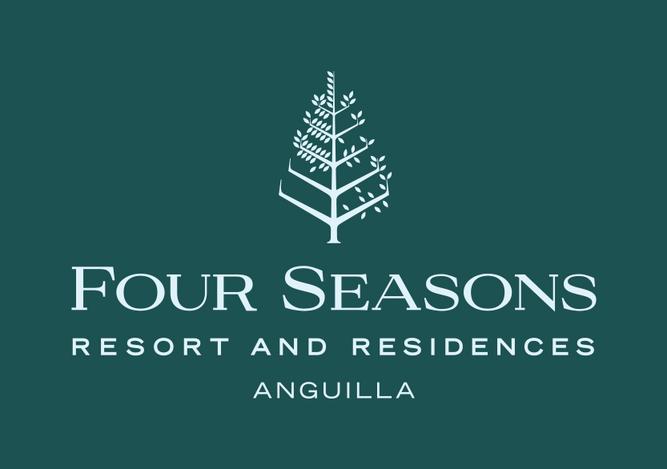
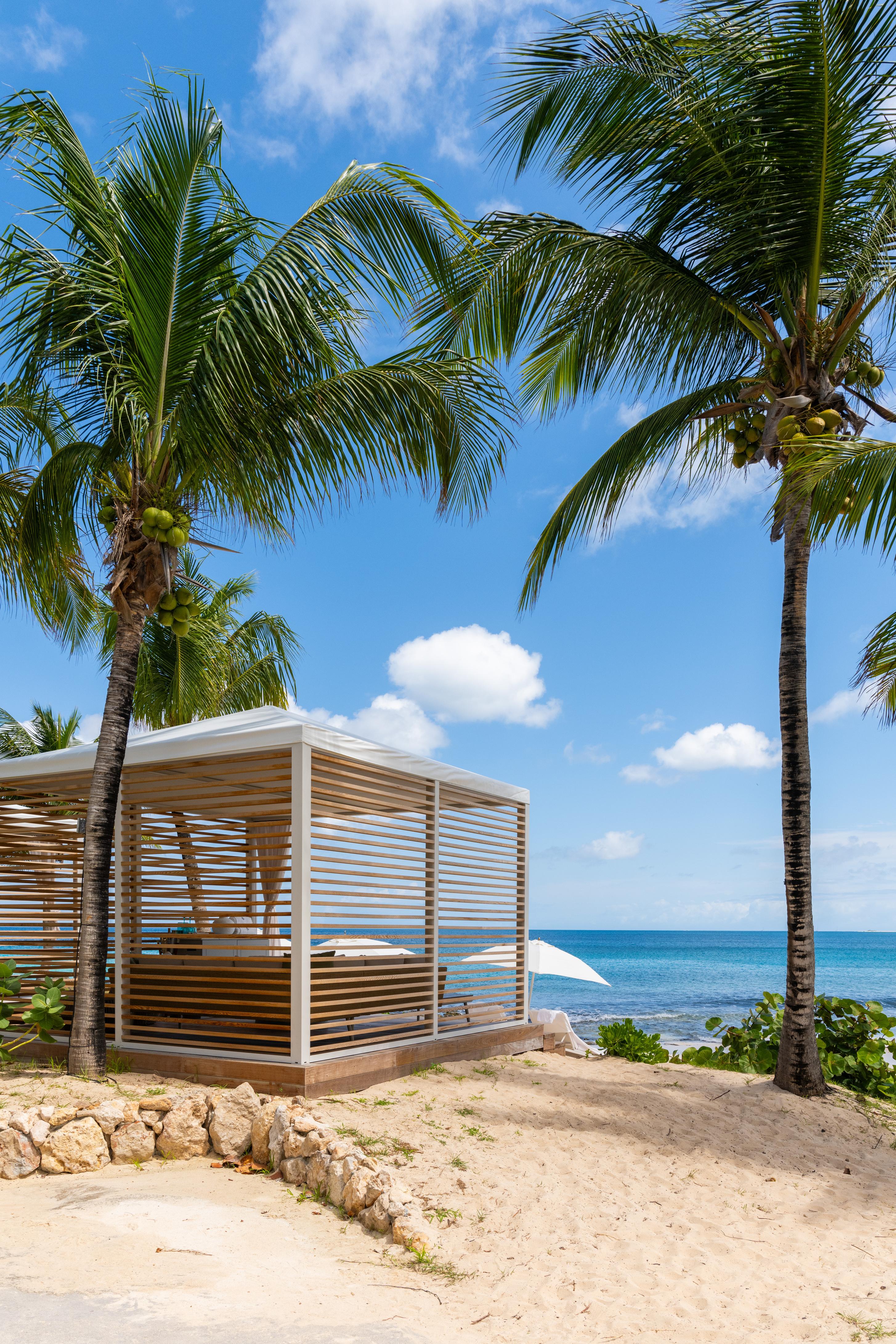


BOAT RACING IS Anguilla’s number one pastime and national passion.
The essence of Anguillian tradition, this maritime custom was born out of a necessity to trade goods throughout the Eastern Caribbean in the early 1900s. As schooner fleets from Nova Scotia came to Anguilla to buy salt harvested from the island’s salt ponds, locals quickly learned and mastered the craft of shipbuilding and sailing.
Anguilla gradually acquired a reputation throughout the Caribbean for excellent marine craftsmanship, with the transportation of goods from island to island carried out in schooners and small ships crafted by hand.
As economic conditions became increasingly severe, the men of Anguilla took to the sea in search of employment on neighbouring islands. At the end of crop season, they would return home to their families.
To pass the time on the long voyage home, they would race each other to see which boat would arrive first at the harbour. Great excitement surrounded their longanticipated return as women and children lined the beach fronts, cheering on as they raced – this is how boat racing was born on the island.
Today, this lively spectator sport continues to attract daring local sailors, trained in the unique Anguillian art of boat racing, as well as many passionate and dedicated spectators, now called land racers.
The boats themselves have evolved into sleek, yacht-like vessels with oversized masts and broad white sails that look like giant wings against the backdrop of Anguilla’s incredibly blue, crystalline waters.
Boat racing is accompanied by barbecues, music, and dancing, and is an unmissable event for visitors that is authentic, exciting, beautiful, and cultural all at once.

Experience
Nestled on Anguilla’s south coast, this four bedroom villa boasts breathtaking ocean views and 29,679 sqft of pure indulgence. Situated on the stunning southern coast of the Caribbean gem, Anguilla, the villa boasts luxurious amenities for an unforgettable getaway. As you step onto the manicured lawn at the ocean’s edge, you’ll be captivated by the sheer beauty of the setting. Imagine leisurely picnics with loved ones, romantic moonlight dinners with the sound of waves as your backdrop, or simply basking in the sun while taking in the breathtaking sea views.
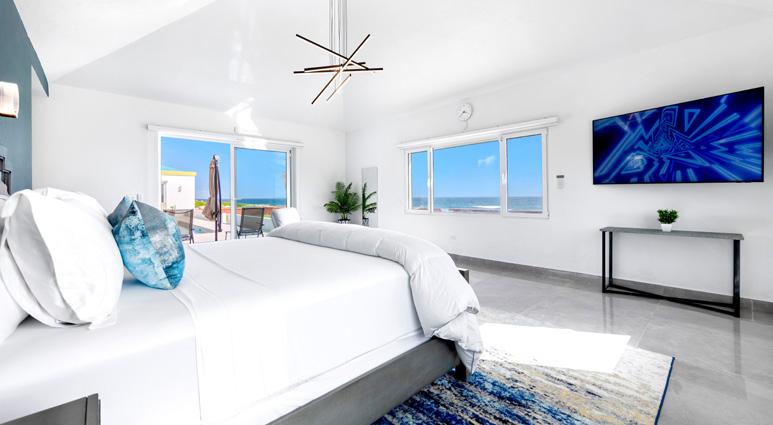
Escape to tranquillity – relax by the sea, explore the island, or simply unwind. Villa Farina caters to every desire. Our friendly staff can arrange restaurant bookings, excursions, and island trips, ensuring every detail is effortless.
Book your stay and embark on a Caribbean dream vacation for an experience of unparalleled luxury and tranquillity.
Phone: 264 476 8888/ 583 8888 Facebook/Instagram: Luxe Realty Global Email: info@luxerealtyglobal.com www.luxerealtyglobal.com


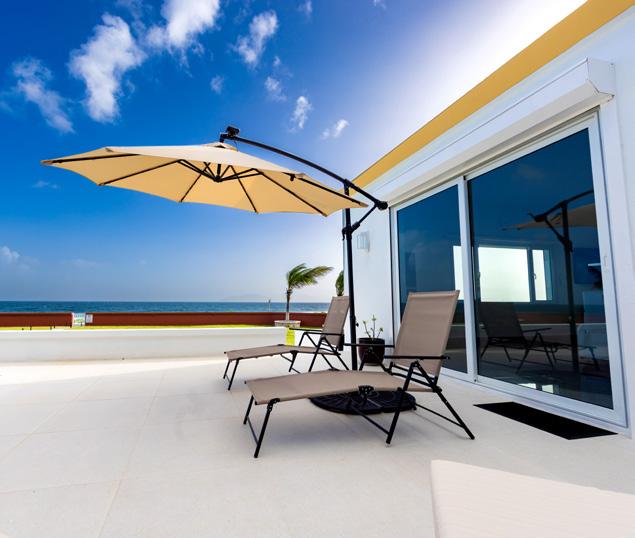
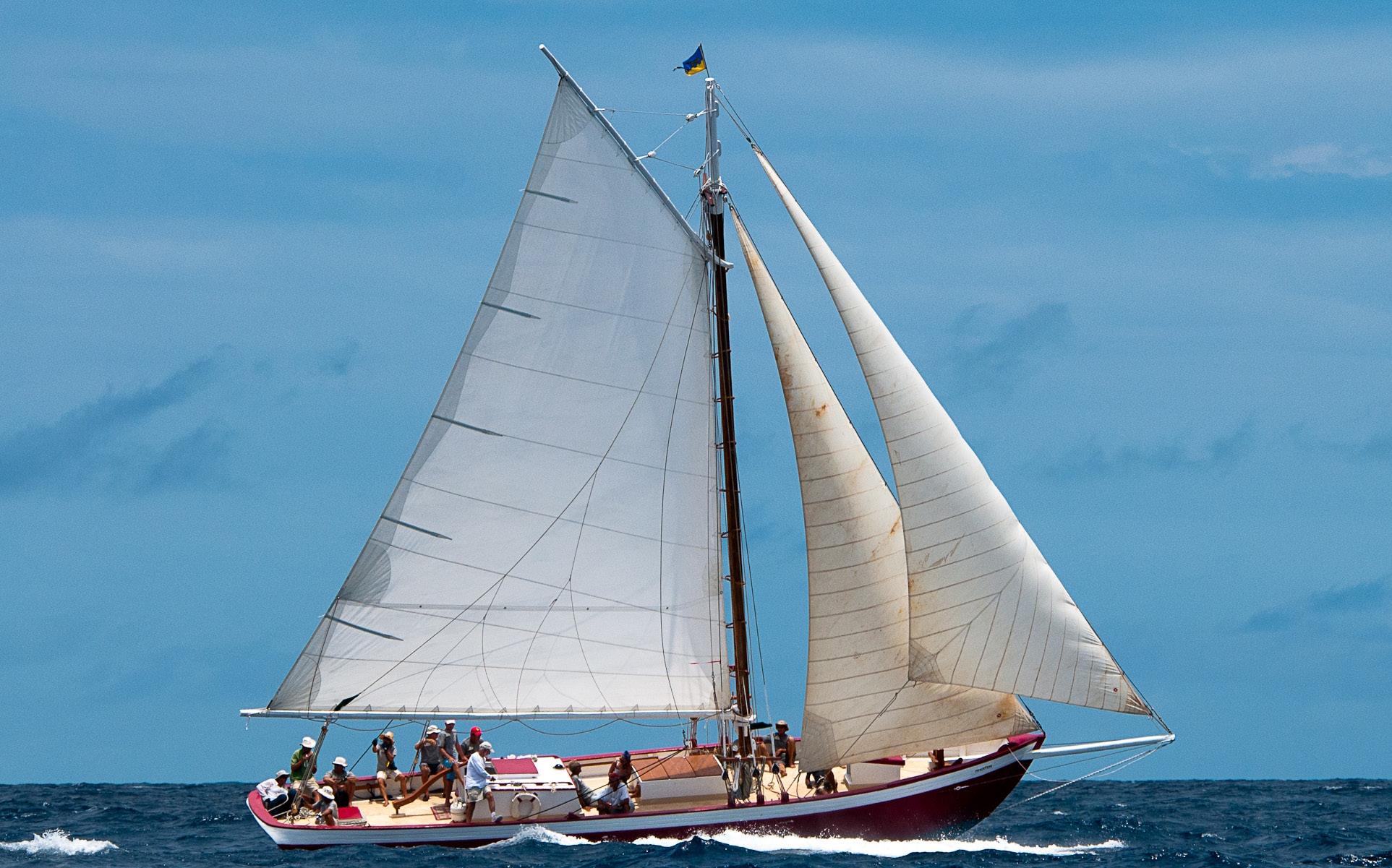
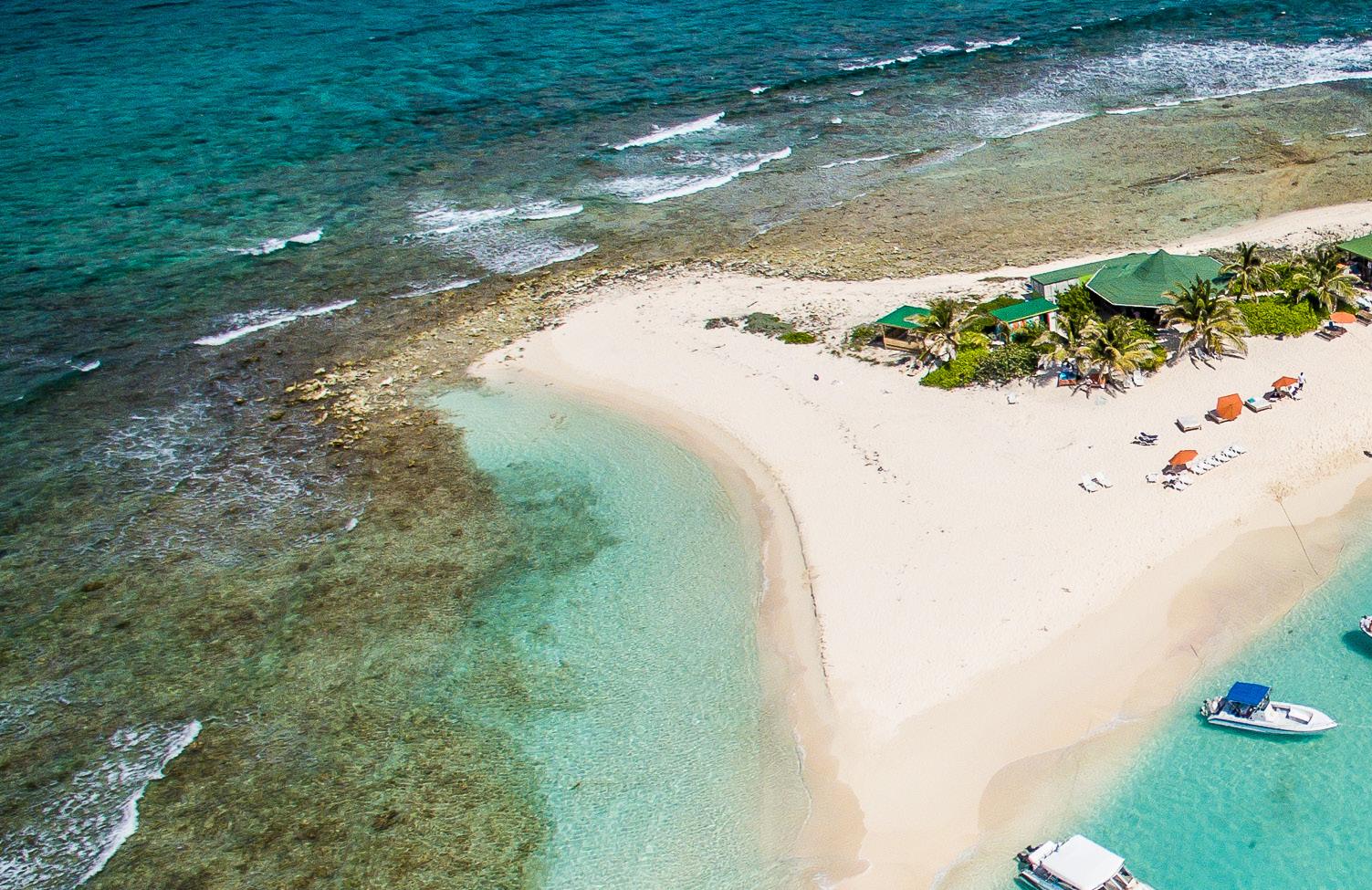
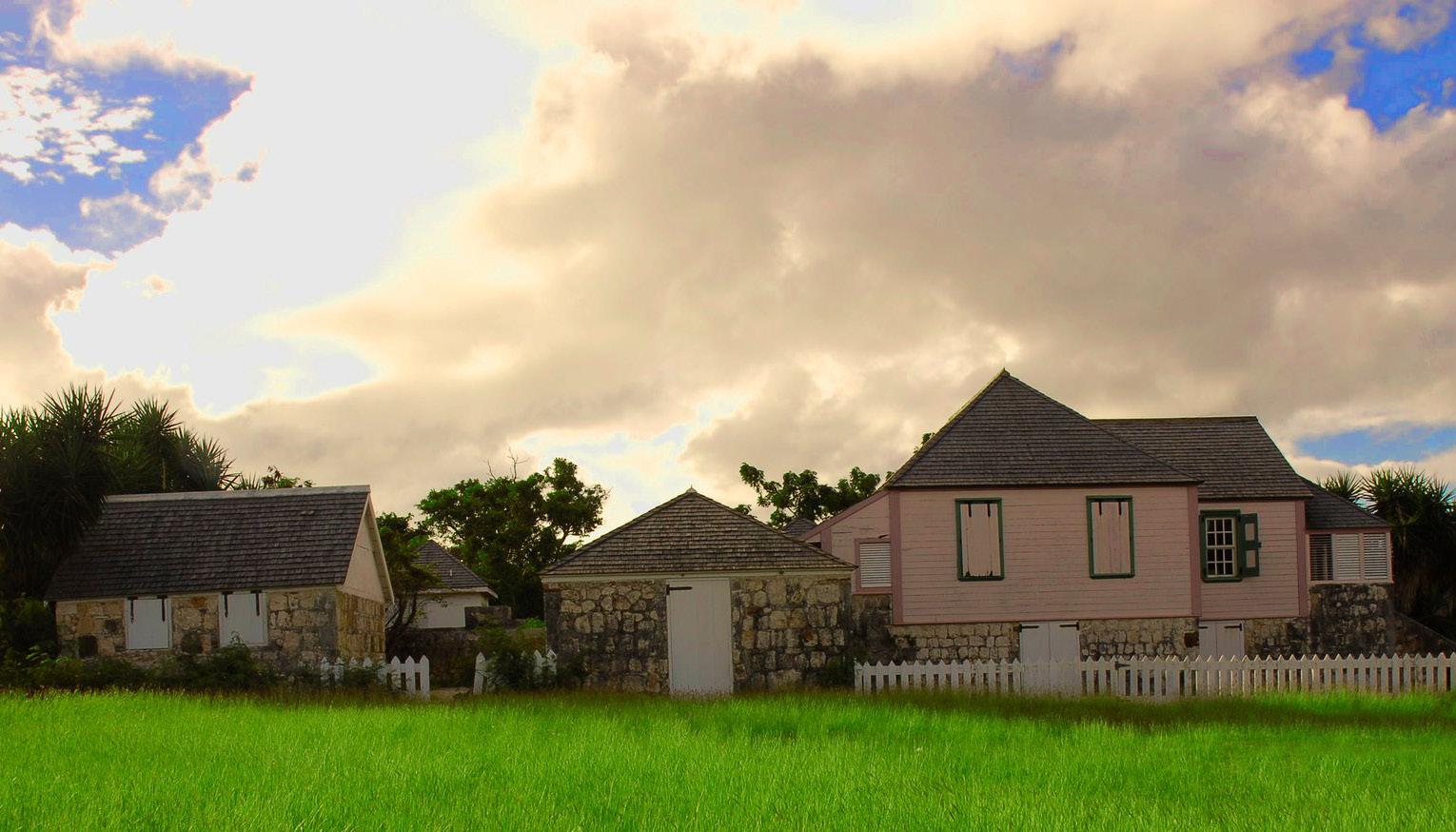
Hike and climb through Katouche, an 80-acre estate often referred to as the “rainforest” of Anguilla. Almost every plant indigenous to Anguilla can be found on the estate, where you can learn about their many medicinal and household uses or climb into its two incredible natural caves, which were once inhabited by a gigantic rodent.
Built in 1787, Wallblake House is the oldest and only surviving plantation house in Anguilla. It is also one of the few plantation houses remaining in the Caribbean where the entire complex of buildings, including the kitchen, stable, and workers quarters, have survived and remain virtually intact. The Wallblake House Trust maintains the complex so that it can thrive as a centre for cultural, social, and educational events for the entire island.

Sandy Island is a small cay off Sandy Ground beach in Anguilla that offers visitors a sensational tropical experience. It’s far away enough for that quintessential Robinson Crusoe feeling, yet close enough to remain connected to the comforts of the mainland. The island’s restaurant opens daily, serving fresh seafood and grilled meats, whilst the bar is fully stocked with ice cold beers and spirits from around the world.
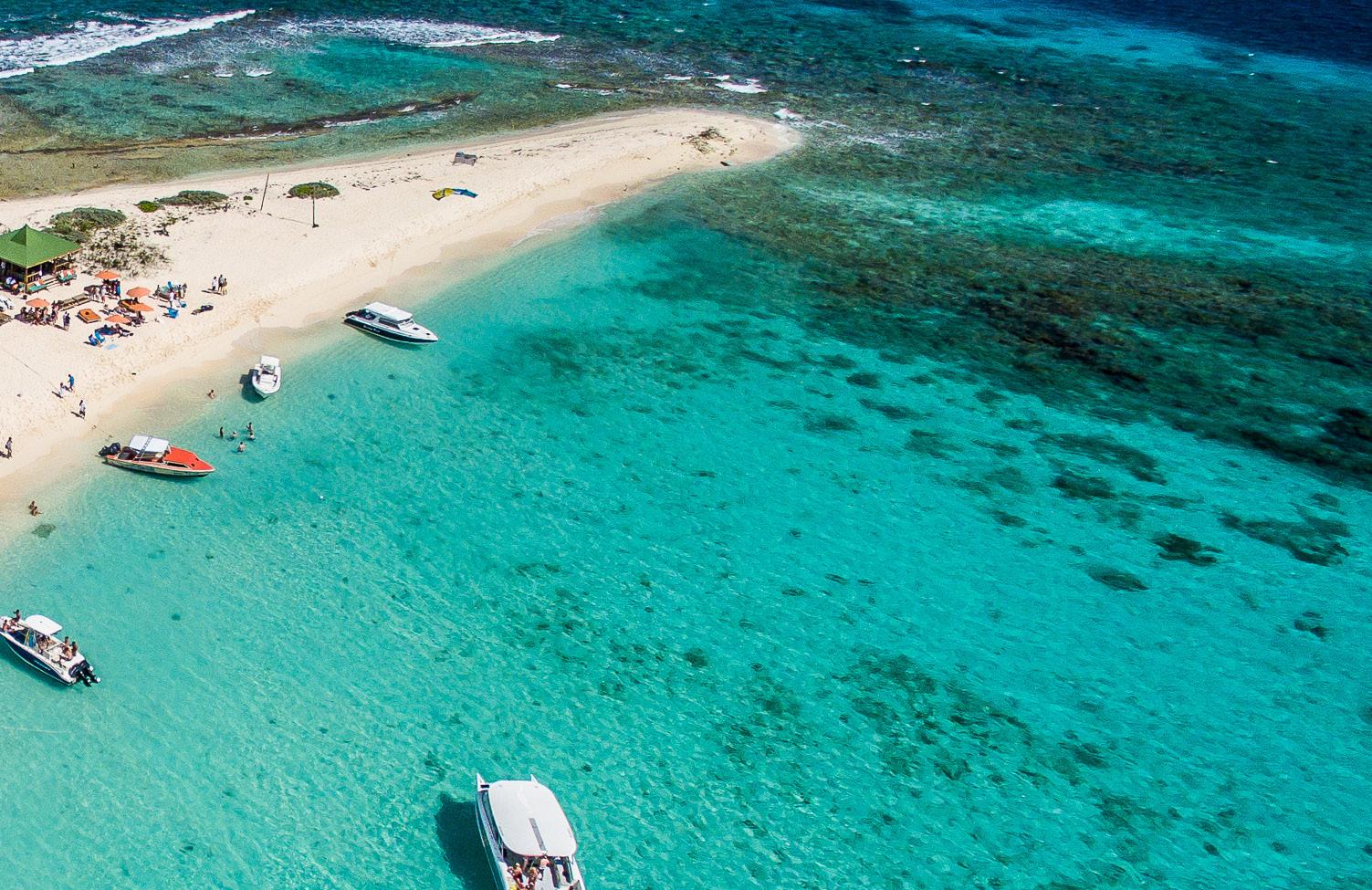

Discover




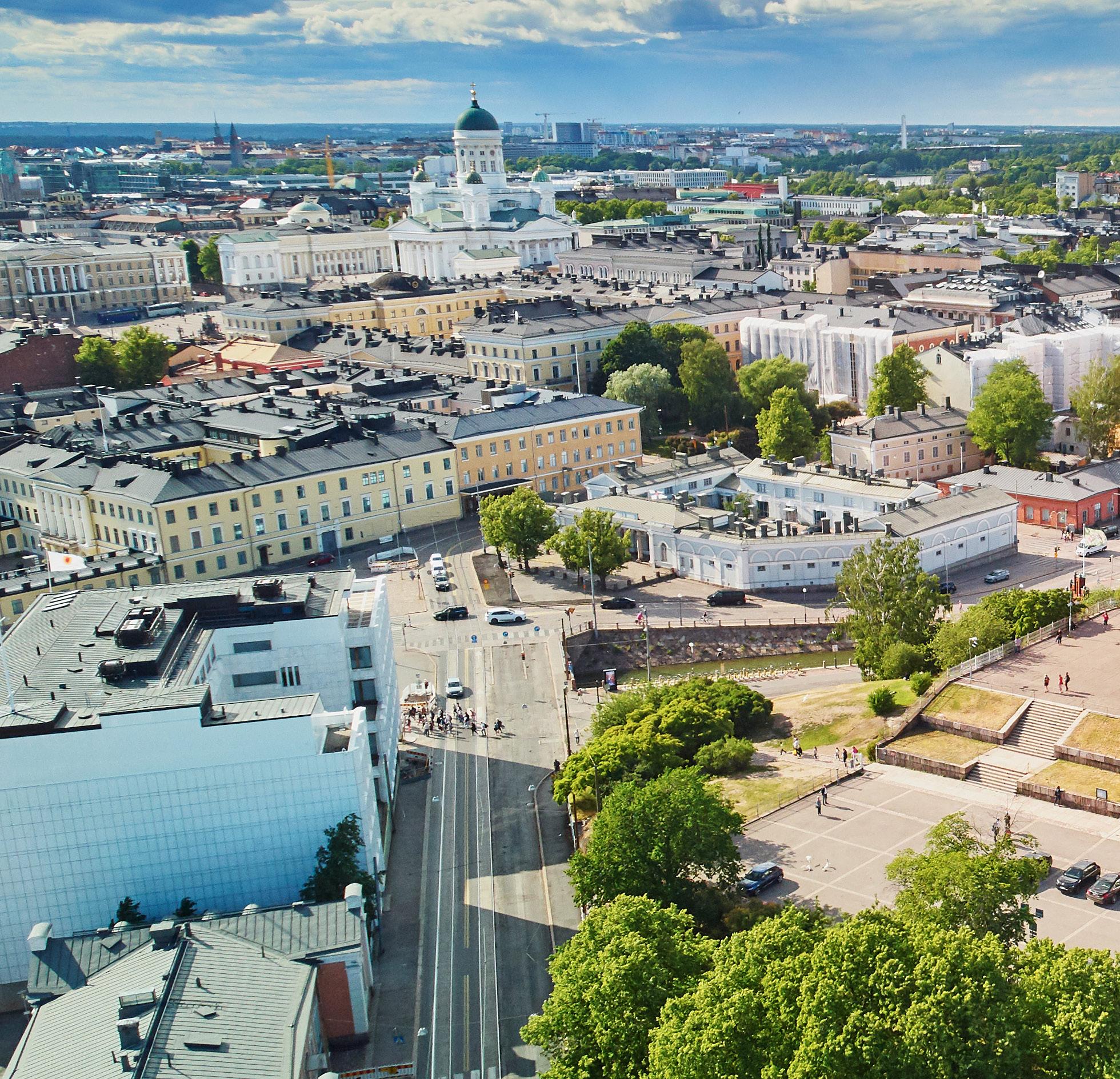
With unmatched calmness and tranquillity roaming its streets, and a proactive and thoughtful attitude towards its outstanding forests and seascapes, Helsinki has made its mark on the map as a culinary centre of Europe, bursting with celebration
WRITER: LUCY PILGRIM | PROJECT MANAGER: JOSEPH PERFITT
Gazing out across the Gulf of Finland, Helsinki extends from the country’s southern peninsula and has become a cornerstone of the Finnish tourism industry.
Projecting a warm, welcoming, and relaxed atmosphere towards its visitors, the capital city has become synonymous with diverse cultural heritage and tremendous environmental commitments.
In fact, Helsinki is internationally renowned for its green efforts and proud to be the fourth most sustainable city in the world according to the Global Destination Sustainability Index. Environmentalism permeates every element of the city, as the administration and population alike encourage
the conservation of its spectacularly green, natural areas.
Wandering the streets of Helsinki, travellers from near and far are enticed by the smells, sounds, and tastes of the city’s bustling gastronomy scene and variety of adventurous flavours. Indeed, Helsinki’s green dedication to nature is interwoven within its culinary landscape and heritage ties.
The historical narrative behind the city’s most traditional dishes follows the changing tides of the seasons and the seas, transforming original ingredients into flavoursome and delectable meals using innovative techniques.
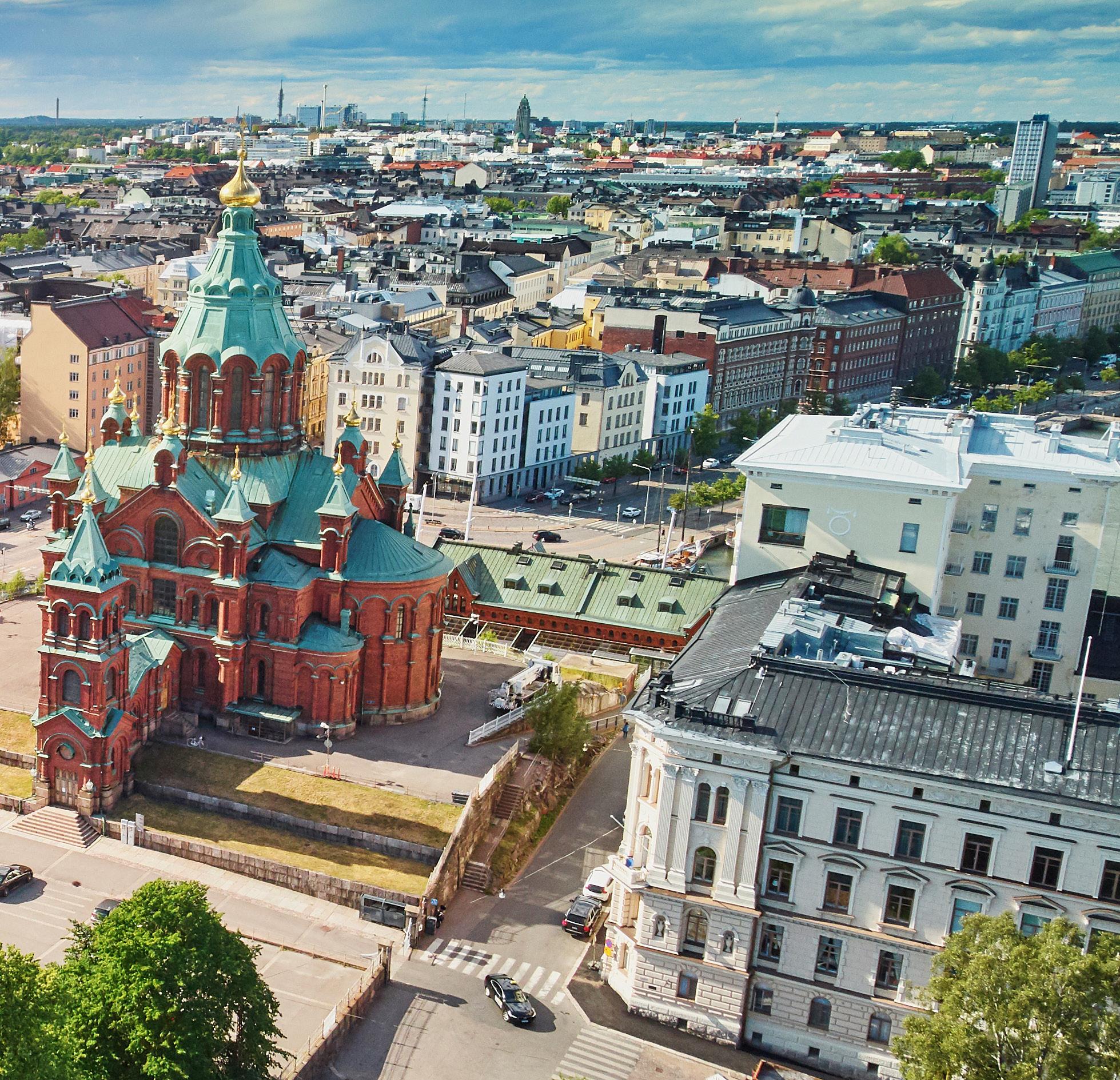
Today, through the thronging trade and exchange of ideas and recipes, the city’s food offerings have grown to an eclectic appreciation of the many cultures that have featured in Helsinki’s past, as well as the manifold populations that now characterise this wonderful capital.
Gastronomy aside, Helsinki is a place where people can commemorate the turning of the seasons and the city’s patchwork culture all year round. Travellers can delight in a range of flourishing festivals, including Helsinki Day on 12th June, which offers over 180 free events up and down the city’s streets, alongside Helsinki Festival, Finland’s largest arts fair taking place in August.
Seasonally, the city has many exciting events that celebrate the warmer seasons, such as Flow Festival, showcasing a vast range of sights and sounds as thousands gather to see the latest in urban music and arts. Elsewhere, the streets come alive with the electrifying sound of the Tuska Open Air Metal Festival, also held during the height of summer in June.
With tantalising tastes, a lively, celebratory atmosphere, and a thoughtful and forward-thinking attitude towards nature, Helsinki has become a standout location in Europe, ripe with unique and unforgettable experiences that last a lifetime.
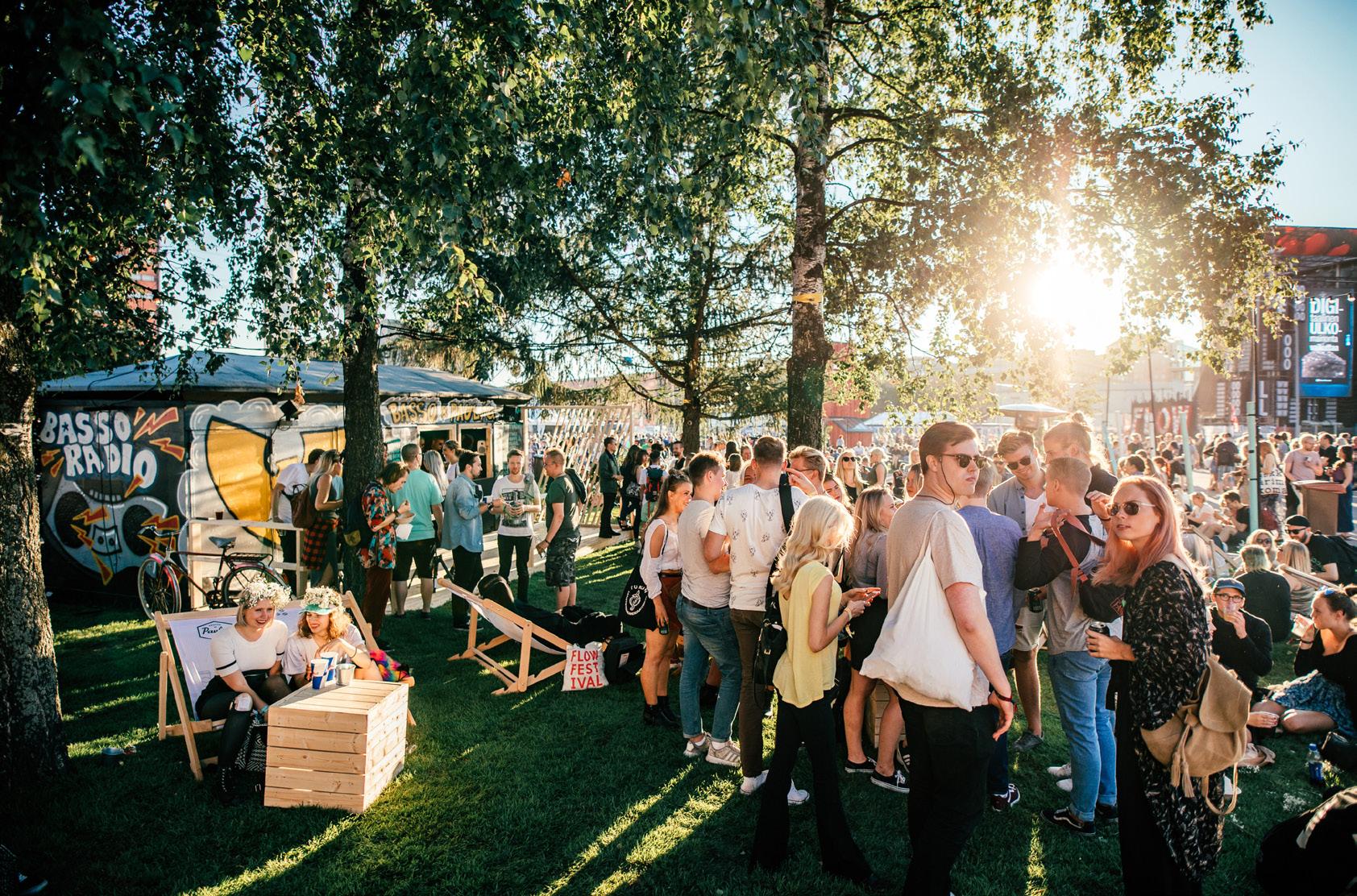

LEENA LASSILA Director of Visitor Attraction
WITH THE GOAL of ensuring Helsinki’s everlasting happiness, Helsinki Partners is a marketing, investment, and talent attraction organisation that endeavours to further expand and bring to life the city’s reputation and brand on the global stage. We speak to Leena Lassila, Director of Visitor Attraction, about how the company utilises its unmatched knowledge of Helsinki to unlock the city’s secrets.
Outlook Travel (OT): Firstly, how does Helsinki Partners utilise its passion for the city and extensive knowledge of the tourism sector to bolster the region’s presence as an ideal travel destination?
Leena Lassila, Director of Visitor Attraction (LL): Helsinki Partners has 60 passionate employees who represent different backgrounds, ages, and expertise, but share a love for our city. We market and promote Helsinki from many different perspectives, from investment activities to
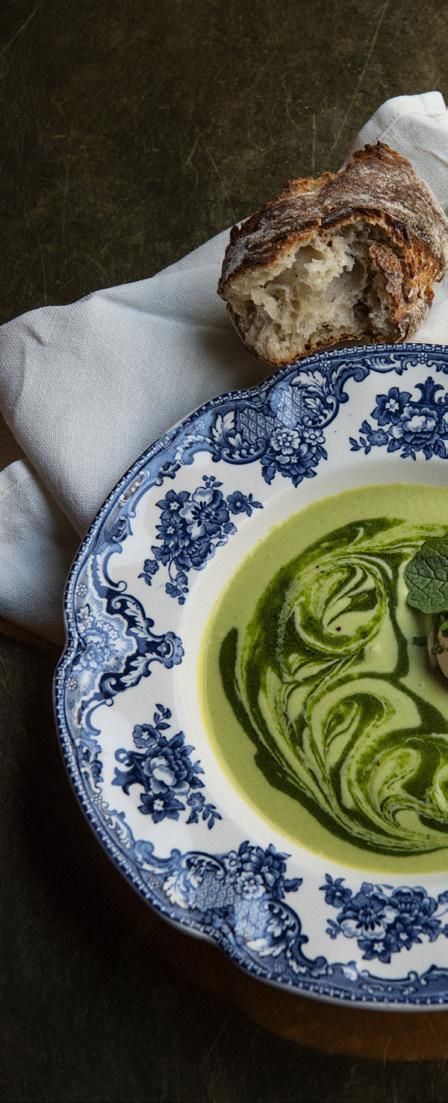
public relations and destination marketing for this bubbly, vivid, and beautiful city of ours. We work closely with stakeholders in Helsinki to strengthen global awareness of the city and its brand.
OT: What is Helsinki’s secret to being the happiest city in the world?
LL: There is no secret recipe for happiness; the answer is simply highly satisfied citizens. We ensure that state institutions are of high quality, non-corrupt, able to deliver on their promises, and generous in taking care of citizens in various adversities. When citizens feel happy, visitors feel welcome.
We enjoy simple pleasures – clean air, pure water, relaxing saunas, unique food, woodland and seashore walks, various events, and everyday life.
Happiness here is the calm and peaceful type; it’s an appreciation for how things work and the ability to pause and admire the little things in life. Therefore, Helsinki is a place where everyone’s free to be themselves.
OT: Earning a reputation for outstanding culinary experiences, how does Helsinki stand out from the rest of Europe in terms of its flourishing food scene?
LL: Finnish food is a unique combination of cultural heritage from Eastern and Western Europe combined with new innovations. Our culinary culture values traditional craftmanship and pure, local flavours, and changes from

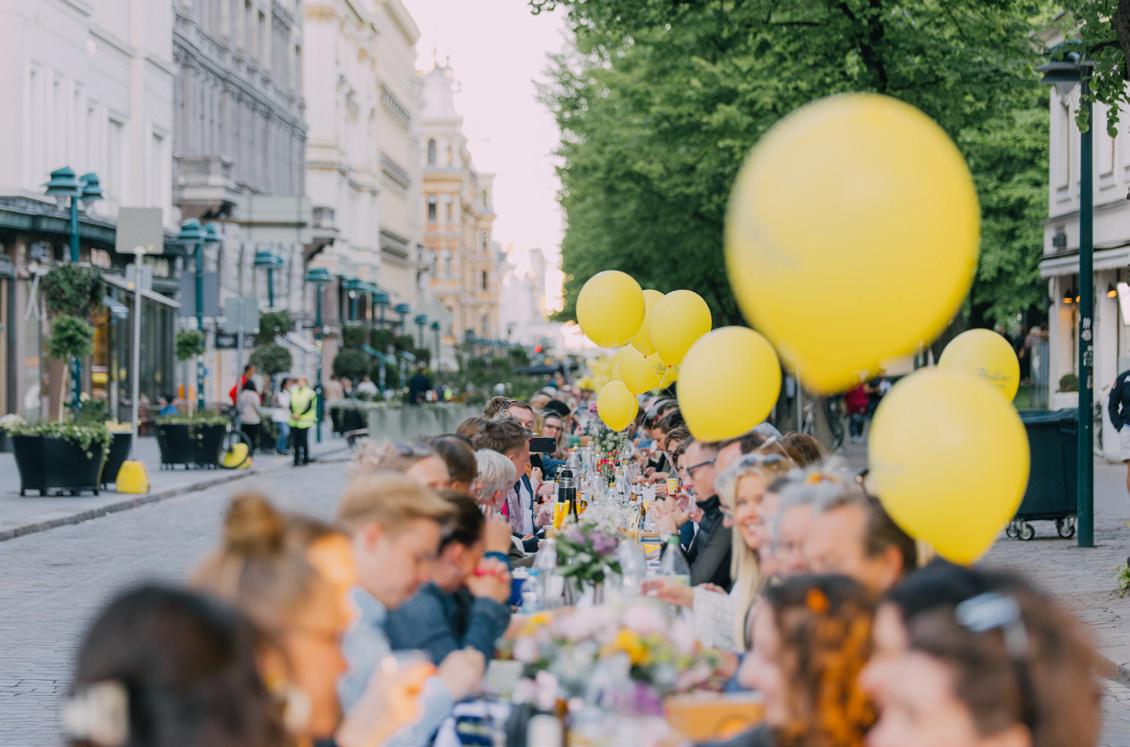
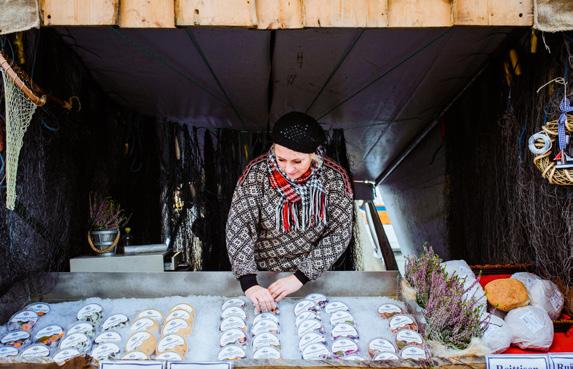

one season to another. For example, spring is for new growth and fresh herbs; summer is for new potatoes, berries, and vegetables; autumn is for mushrooms and game; and winter is for innovative ways to conserve food by drying, salting, pickling, and so on.
OT: From street markets to Michelin-star restaurants, where would you suggest for the best authentic Helsinki cuisine?
LL: We are proud of our wide selection of restaurants, cafés, and food experiences in the city – there is always something new and exciting for visitors to try!
I would suggest visitors start their morning with a coffee and smoked salmon with rye bread in one of our three iconic market halls. In fact, did you know that Finns drink the most coffee per capita in the world?
Travellers can continue their food journey by visiting Helsinki Central Library Oodi, where you will find a great lunch spot and the epicentre of Finnish happiness. Dinner can be anything from a traditional Finnish-style dish to more international flavours, with the Helsinki spirit running throughout all our cuisines.
Visitors can also enjoy global tastes on the top floor of the former Stora Enso headquarters, also known as the ‘sugar cube’, as well as other zero-waste food establishments that are at the forefront of sustainability. Indeed, environmentalism is at the core of many of our dining experiences, with four Michelin green-starred restaurants in the city!
OT: Across Helsinki’s range of food events throughout the year, which one would you most recommend travellers visit?
LL: The most iconic is the Helsinki Baltic Herring Market,
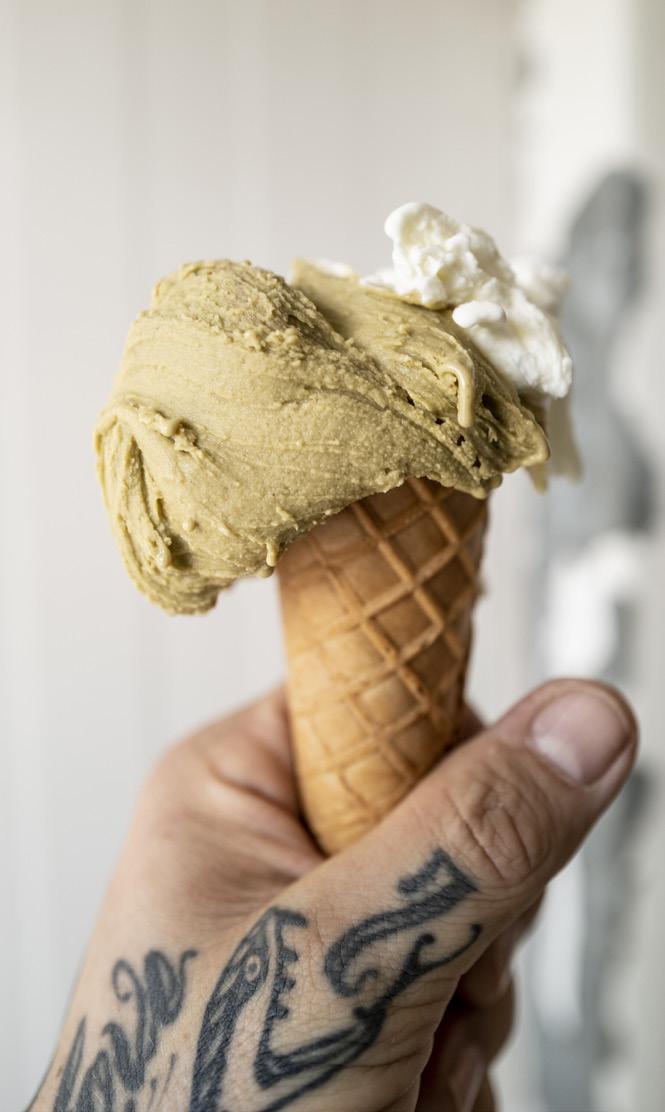
APRIL
• Helsinki Coffee Festival
• Ice Cream and Chocolate Carnival
• Food 2025
MAY
• Dinner Under the Sky (May to June)
• Summer Terrace at Senate Square (May to August)
JUNE
• Craft Beer Helsinki
OCTOBER
• Helsinki Baltic Herring Market
which was established in 1743 and is therefore one of the oldest events in Finland.
Throughout the years, the market has evolved to become a beloved public event bringing together old archipelagic traditions and modern food culture, as it aims to hold onto tradition and support the livelihood of fishers. The Helsinki Baltic Herring Market celebrates herring as a sustainable and tasty food choice, whilst fishing and eating the delicacy also helps maintain a healthier Baltic Sea.
The Helsinki Coffee Festival and Ice Cream and Chocolate Carnival also reveal our true passions. Finns are first not only in coffee consumption per capita, but also ice cream.
OT: Known as one of the most sustainable cities in the world, how does the organisation incorporate ecofriendly practices into Helsinki’s tourism sector?
LL: The city is committed to sustainability across all its activities. According to many international indicators, Helsinki and its tourism sector are doing well in terms of environmental development, to the extent that sustainability is considered a differentiating factor and competitive advantage for us.
Environmental growth and renewal will become a reality if public and private actors continue to change their practices responsibly and on a long-term basis. Succeeding in this also requires systematic planning, measuring, monitoring, communication, and support for companies and other operators on the path towards environmental certification.
Examples of this include supporting tourism companies in developing their sustainable practices and outlining an environmental tourism policy that guides all the city’s tourism development efforts.



Additionally, the Helsinki Tourism and Events Programme 2022-2026 is a joint document created by the Helsinki City Group to support the long-term development of the tourism and events sectors. The programme guides the operations of the group for the benefit of tourists, residents, event visitors, local businesses, and other actors. Ultimately, the goal is to be the most sustainable destination in the world.
OT: As an area of natural beauty, where would you recommend visitors go to enjoy Helsinki’s flora and fauna?
LL: Travellers can enjoy the city’s multiple islands. Seurasaari and Lammassaari, for example, can be reached by public transport and are connected by bridges. During the summer, Vallisaari offers versatile nature and contemporary art, and next year, the third edition of Helsinki Biennial will be organised on the island.
OT: Finally, how do you see Helsinki’s tourism industry evolving over the next five years?
LL: We are committed to consistent growth and are seeing first-hand how Helsinki is evolving to become the perfect destination for a longer leisure stay, business events, and even luxury travel. As part of our growth, we monitor our residents’ feelings about the increasing number of visitors. In the most recent study, citizens said they are happy to help visitors and welcome all travellers to Helsinki.
The city is for visitors who are passionate about sustainability, and we provide space to feel, hear, and experience more. Helsinki offers the freedom to have it all – a totally unique combination of quirky urban city vibes and peaceful nature.

meetings@helsinkipartners.com www.myhelsinki.fi

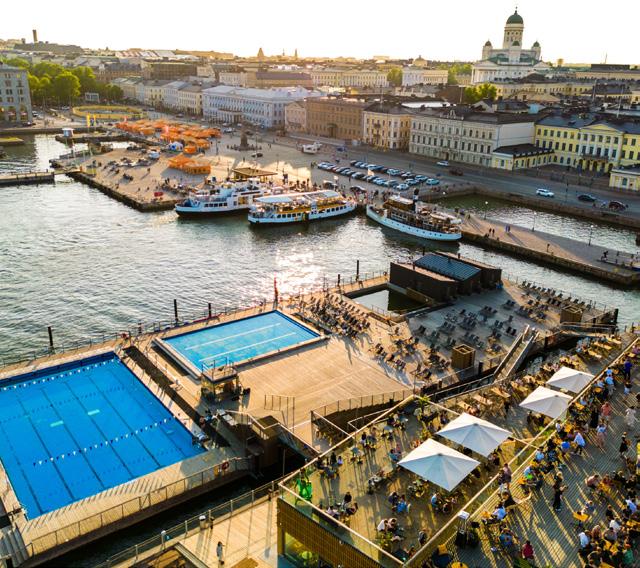
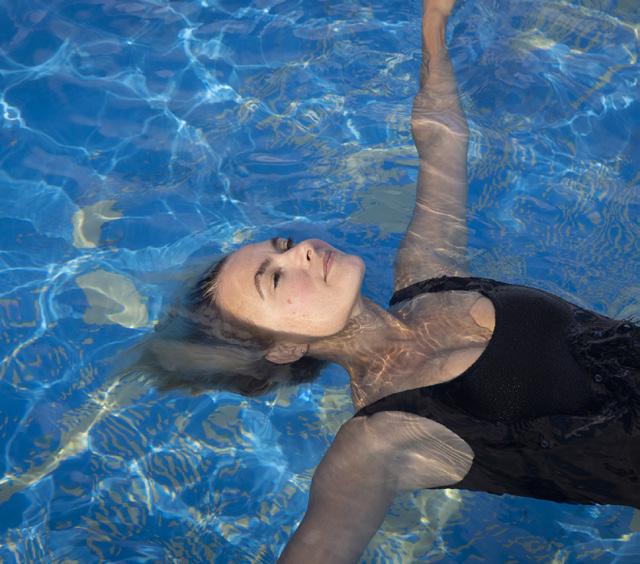
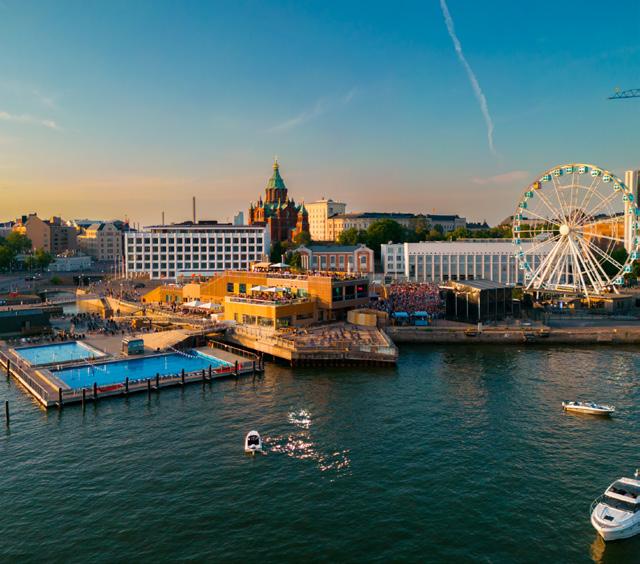

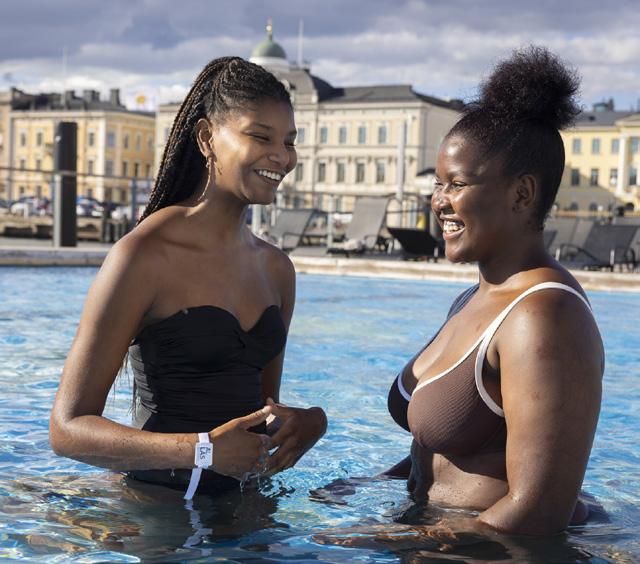

Allas Sea Pool offers a unique Finnish sauna and outdoor swimming experience. Enjoy heated and sea-temperature pools, warm saunas, and the stunning views from our pool deck and rooftop terrace.
Whether you’re visiting or a regular, or a corporate guest, Allas Sea Pool promises unforgettable moments and the sweetest Helsinki memories.
Warm water pool – Sea water pool – Children’s pool – Five saunas – Dining, café, and bar
www.allasseapool.fi
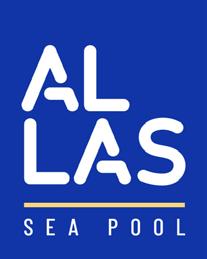

MORE THAN SIMPLY a historical centre, Tori Quarters, or Torikorttelit as it is locally known, is the cultural nucleus of Helsinki, where the old town meets the hustle and bustle of the contemporary city. Take a gentle stroll around the quarters’ beautiful amalgamation of winding streets, bespoke, quirky boutiques, and the friendly atmosphere typical of a maritime hub.
Tori Quarters has an eventful and intriguing history, used as Helsinki’s centre during the Russian occupation in the 19th century. To mark this status, the quarters were designed in a Neoclassical style that is kept alive to this day. The region’s oldest building is the effortlessly grand Sederholm House, which was built in 1757 and now exists as the Helsinki City Museum.
As such, the quarters offer both historical architecture
and modern liveliness, as its vast buildings are often used for pop-up events that usher in the city’s urban culture.
Tori Quarters is also great for travellers to gain a true essence of Helsinki’s sustainable way of living. Delve into shops containing eclectic artisan items and unique, hand-made products that last a lifetime and are made with sustainably sourced resources.
Visitors can also relax and indulge in the quarters’ abundance of coffee houses, sophisticated bars, and restaurants, where tantalising flavours, experimental culinary art, and traditional Finnish cuisines permeate.
Perfect for those who want a short glimpse of the city or to immerse in Helsinki’s nuanced nature where old and new converge, Tori Quarters is certainly worth a visit.
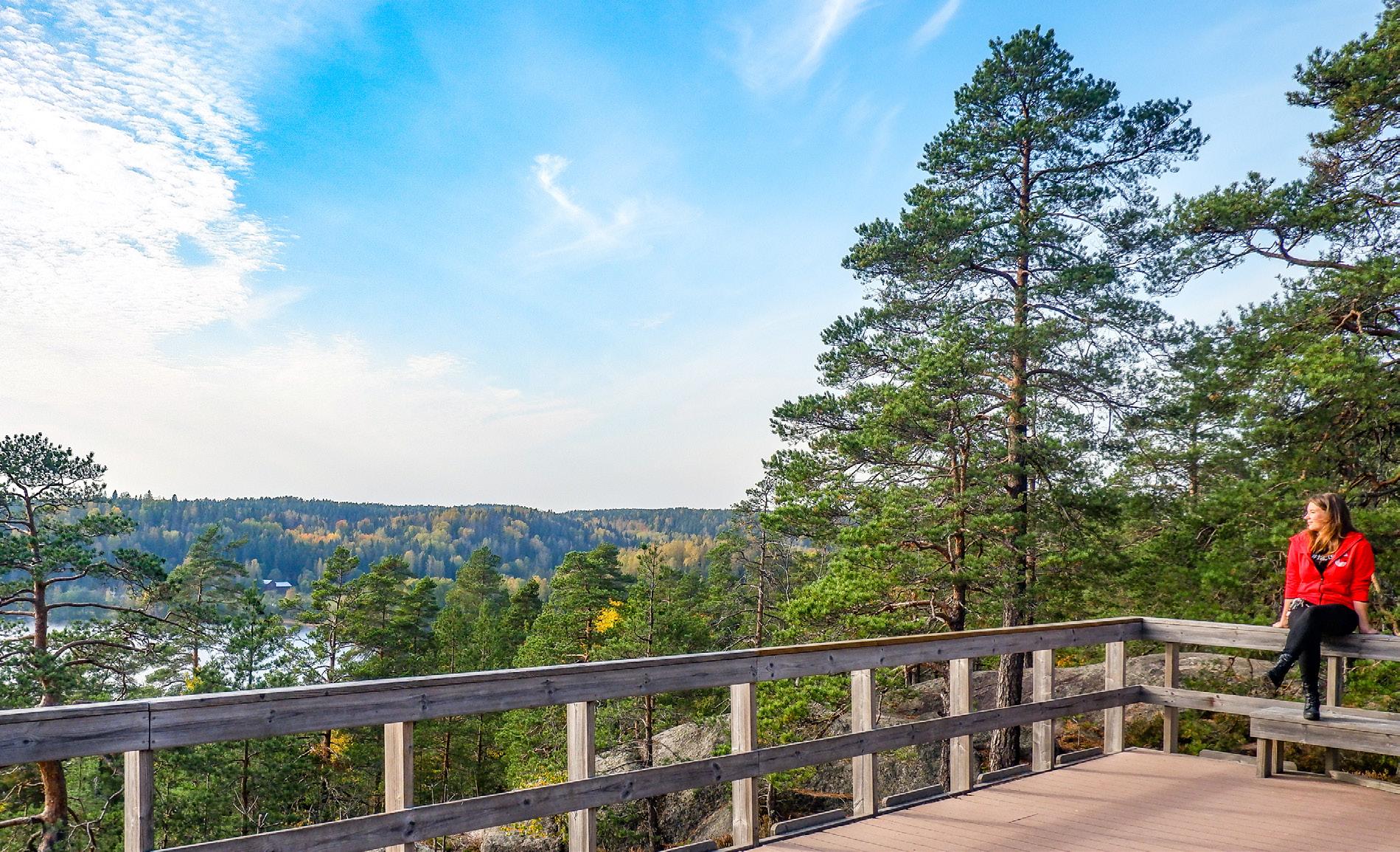
Rent equipment and get route tips for the hiking, enjoy nature exhibitions and local food or participate in Outdoor Saturday events.
The Finnish Nature Centre Haltia by Nuuksio National Park is THE GATEWAY TO THE NATURE IN FINLAND
The Finnish Nature Centre Haltia Nuuksiontie 84, Espoo I haltia.com, shop.haltia.com

The Tower of the Stadium is an icon in its own right.
One of the best known constructions and sites in Helsinki and Finland, the 86 years of the Tower’s history are made of many stories and celebrations. At 72 metres from the ground, the Tower of the Olympic Stadium is one of the best places to admire Helsinki from high above, and the view at dusk is truly impressive.
The tower is open weekdays until 21:00 and on weekends until 17:00, and we welcome you to explore!
www.stadion.fi/en/visit-stadium/visit-tower

FOR A REJUVENATED AND REFRESHING POOL EXPERIENCE…
Allas Sea Pool provides everything for seasoned swimmers and sunbathers alike, with both warm water and sea water pools. Open from morning to night and across all seasons, the 25-metre heated pool lets swimmers practice their agility whilst the sea water pool provides the best the beach has to offer all in one place.
FOR OUTDOOR AND INDOOR LIVING IN THE HEART OF HELSINKI’S GREENERY… Haltia
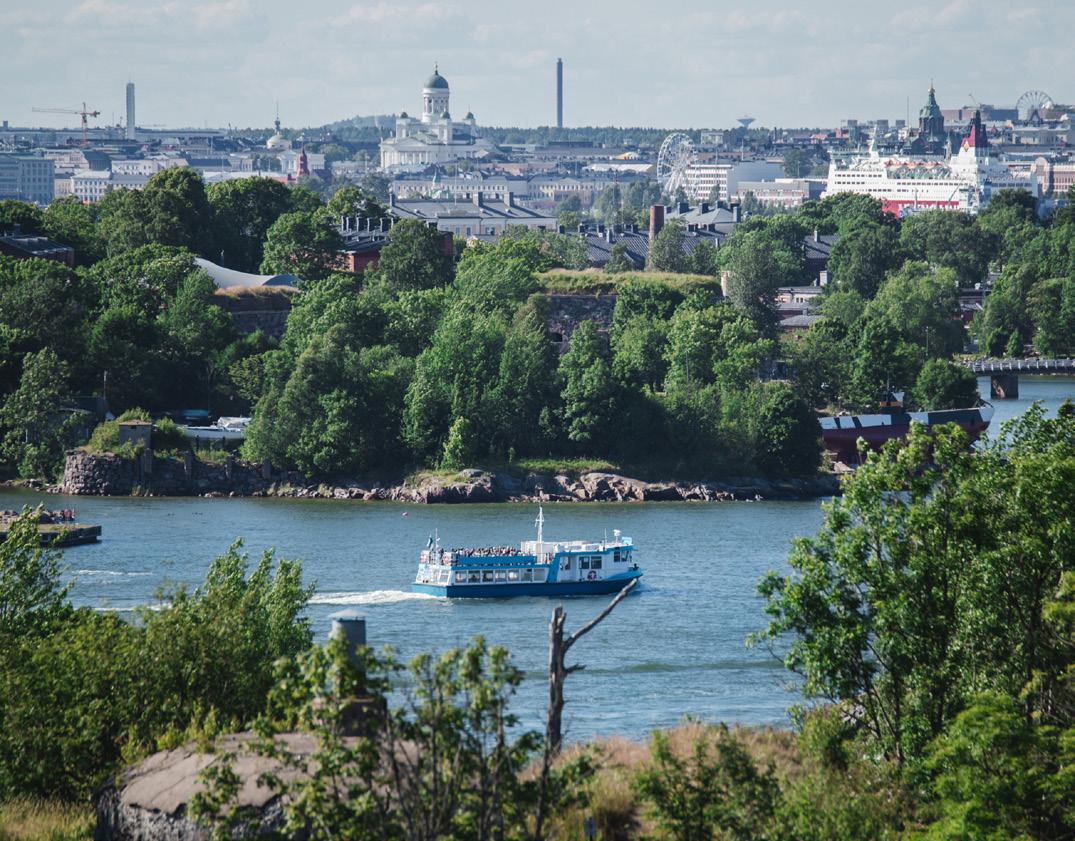
FOR AN OTHERWORLDLY AND SPECTACULAR EVENT…
Olympic Stadium
FOR MAKING BOLD STRIDES IN THE FOREST…
Haltiavuori Nature Trail opens up a brand-new perspective of Helsinki to tourists, as it allows avid hikers to immerse themselves in undulating emerald woodland. Taking trekkers on a journey across a six kilometre trail, the path is not for the faint hearted and takes approximately 90 minutes to traverse for those with experience.


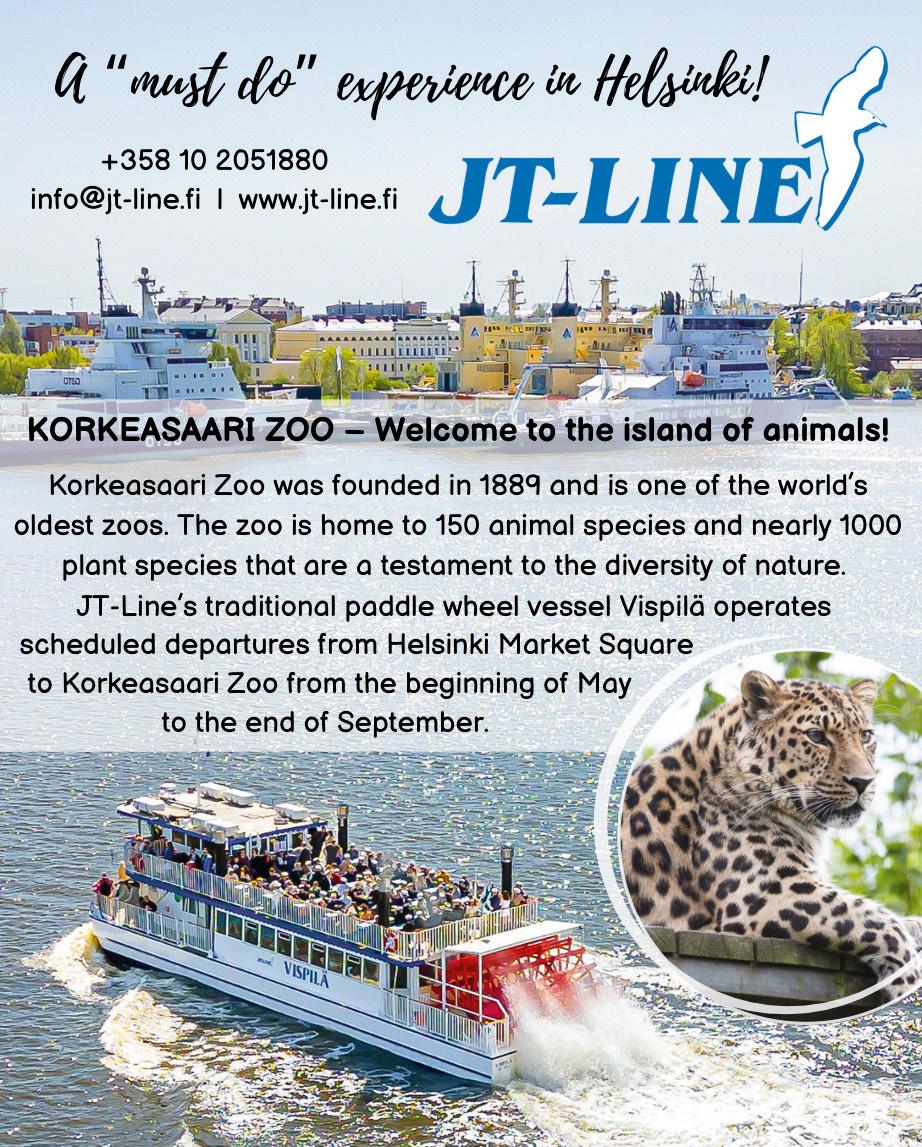
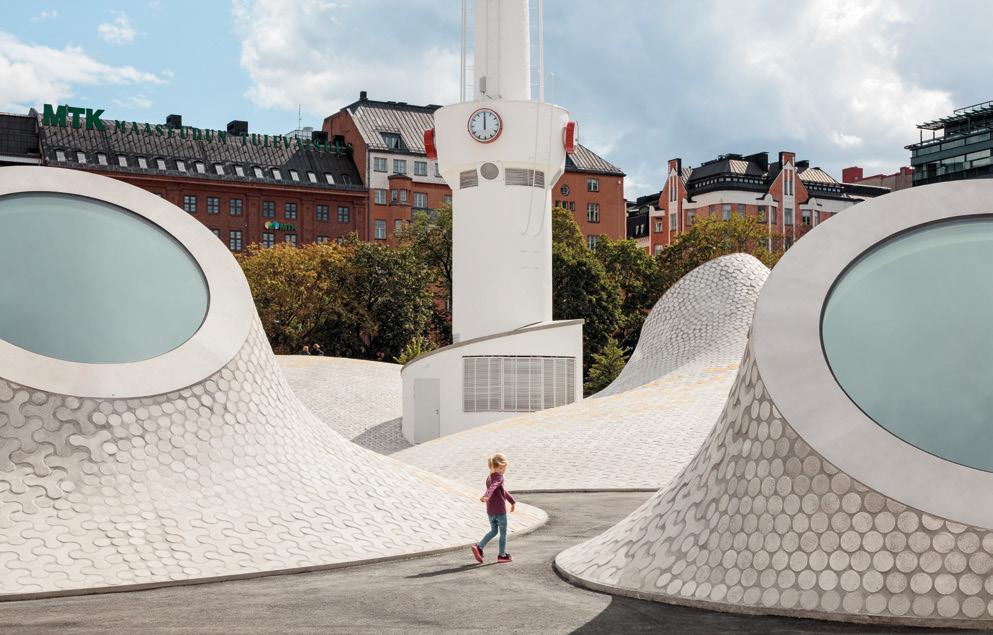








Located in the heart of the city, this internationally renowned museum heralds the largest collection of art the city has to offer, showcasing over 30,000 exceptional pieces. Each purposefully placed composition takes its onlookers on a journey through 300 years of Finnish art history.

A treasure trove of over 100,000 books and research papers, the facility is a modern interpretation of a library, offering digital studios with state-of-the-art equipment, an urban workshop that provides access to top-of-the-range printers, laser cutters, and more, as well as a communal area for idea sharing and collaboration. The library building is also one of architectural prowess, matching the exceptionality of its offerings.
A UNESCO World Heritage Site since 1991, it is now home to around 800 people. Visitors to the fortress can enjoy a guided tour that takes guests on a journey through the main sites and key events of its heritage. The fortress also offers budding historians six different museums as well as an abundance of cafés, restaurants, and fine dining options, alongside its very own brewery.

HELSINKI’S CAREFREE AND enjoyable atmosphere extends to its methods of transportation around the city. Indeed, it offers a vast range of travel options, whether you want to zip from one side to the other, take a gentle stroll, or glide around the capital with its advanced cycle network route.
One secret to the city’s success is its highly comprehensive and efficient public transport system, which begins once travellers land on the runway, as commuter trains operate daily from Helsinki Central Railway Station in the centre to Helsinki Airport.
Once in the heart of the city, visitors quickly find that many of its main destinations are within walking distance, with lots of maps dotted around the city centre to guide both tourists and residents. However, if you wish to see more of Helsinki in all its glory, cycling is the way to go. Travellers can also utilise the iconic yellow bikes available across the capital and make the most of the extensive pedestrian and cycling paths that run throughout the city on a disused railway line.
Hopping on a tram is also a great way to see the sights, particularly if you want to visit many locations in one day, as day tickets can be purchased via the HSL mobile app, ticket machines, and kiosks across the city. The tram network covers the main tourist spots as well as lesser-known areas that are certainly worth exploring.
As if this wasn’t enough, Helsinki’s metro system operates across the city and is the best way to experience Finland’s beautiful green landscapes in the surrounding area.
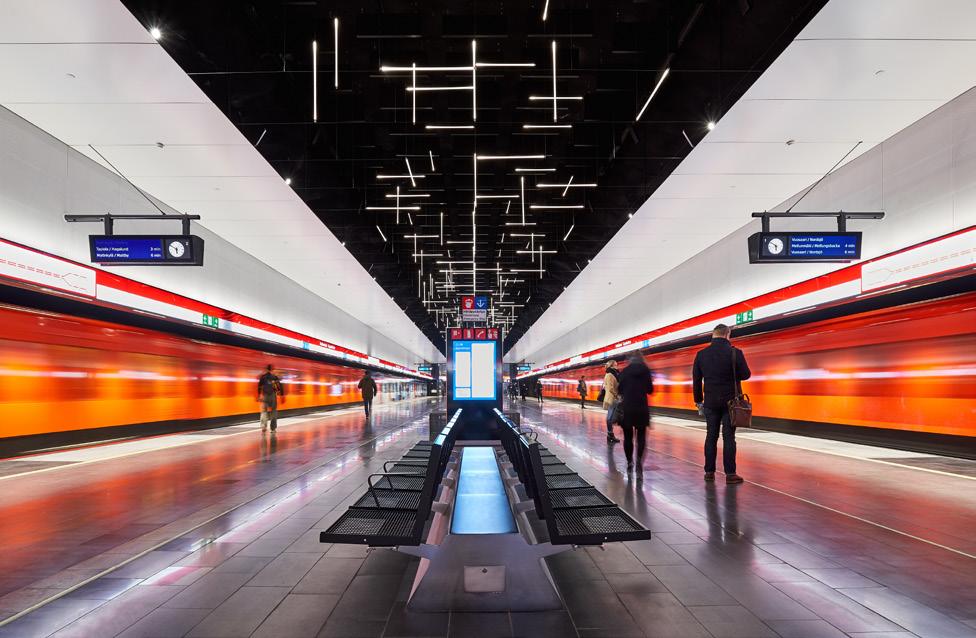



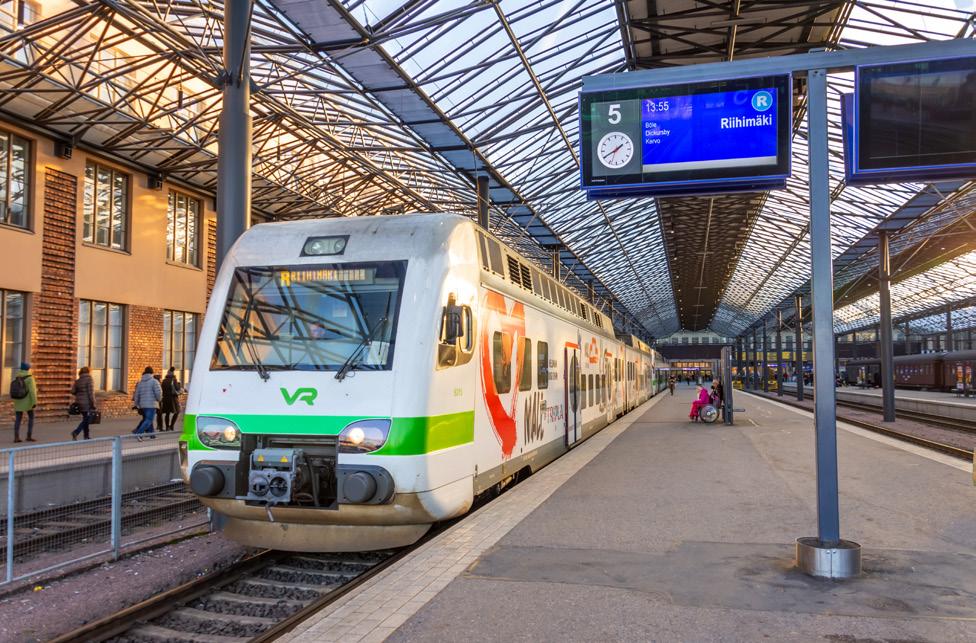

The dramatic limestone outcrop of Gibraltar is an exceptional blend of rich, fascinating history and extraordinary natural beauty that continues to attract an international audience
WRITER: JACK SALTER | PROJECT MANAGER: JOSEPH PERFITT
Situated on the southern tip of the Iberian Peninsula, Gibraltar sits at the crossroads of Europe and Africa.
Within this majestic Jurassic limestone rock, which dominates the horizon at a towering 426 metres, numerous caves and tunnels contain some of the British Overseas Territory’s biggest mysteries and secrets in a rich honeycomb of history.
The legendary story of Gibraltar, which weaves civilisations and cultures through

the ages, begins in its pre-historic caves, the last known refuge for the Neanderthals over 30,000 years ago and considered the birthplace of modern man.
This historical legacy can still be enjoyed in Gibraltar’s numerous attractions, including St. Michael’s Cave and Gorham’s Cave Complex, which is of major significance in understanding the story of human evolution and adaptation.
Tales of battles and sieges from a bygone era are also told by the Great Siege Tunnels, which are widely considered a feat of military engineering and remain a must-see
for any culture vulture.
Gibraltar’s testament to time is equally reflected in its people, whose warm, friendly hospitality keeps visitors coming back to experience the territory’s unparalleled beauty.
Wildlife flourishes on the rock’s porous limestone, not least the infamous Barbary Macaques, a species of tailless money and Gibraltar’s most famous residents, whilst its world-renowned flora and fauna are of conservational importance.
Complemented by a temperate climate and local events and customs that offer an equally warm cultural flavour, Gibraltar welcomes you to this unique corner of the Mediterranean.


Discover all that Gibraltar has to offer as we revisit the Gibraltar Tourist Board and speak to The Hon. Christian Santos GMD MP, Minister for Equality, Employment, Culture and Tourism, who brings us up to date with the territory’s recent rebrand and its newly launched marketing campaigns.

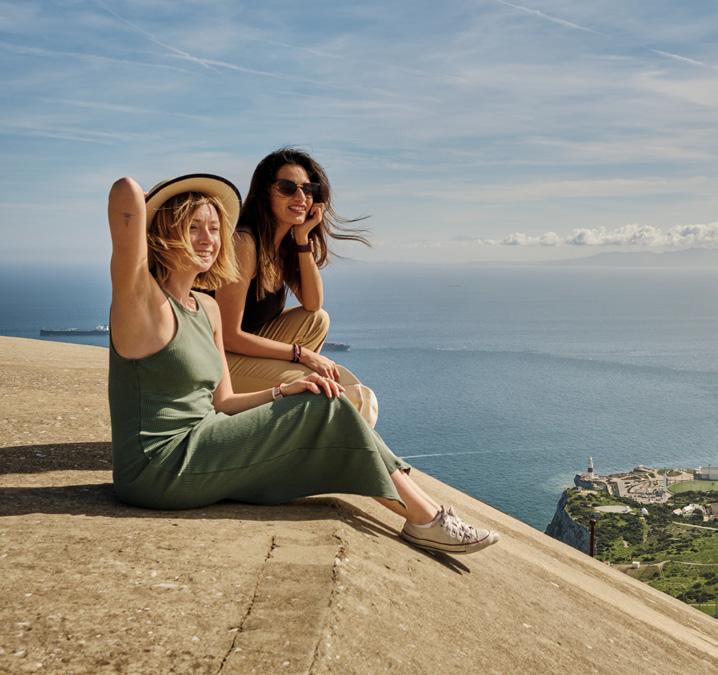
Outlook Travel (OT): Can you firstly talk us through the Gibraltar Tourist Board’s purpose and mission?
The Hon. Christian Santos GMD MP, Minister for Equality, Employment, Culture and Tourism (CS): The Gibraltar Tourist Board is the marketing division of the Gibraltar government for tourism. Our objective and mission are to market Gibraltar abroad and make sure that everyone is aware of the gem Gibraltar is – the key to the Mediterranean.
OT: How do you promote Gibraltar and everything it has to offer as a destination?
CS: We’ve just launched a rebrand of Gibraltar’s image as a whole, which includes a revamp of our website. We have a new advertising campaign focused within the UK, our main feeder market. We’ve got a new, ongoing marketing campaign called ‘Where the Med Begins’,


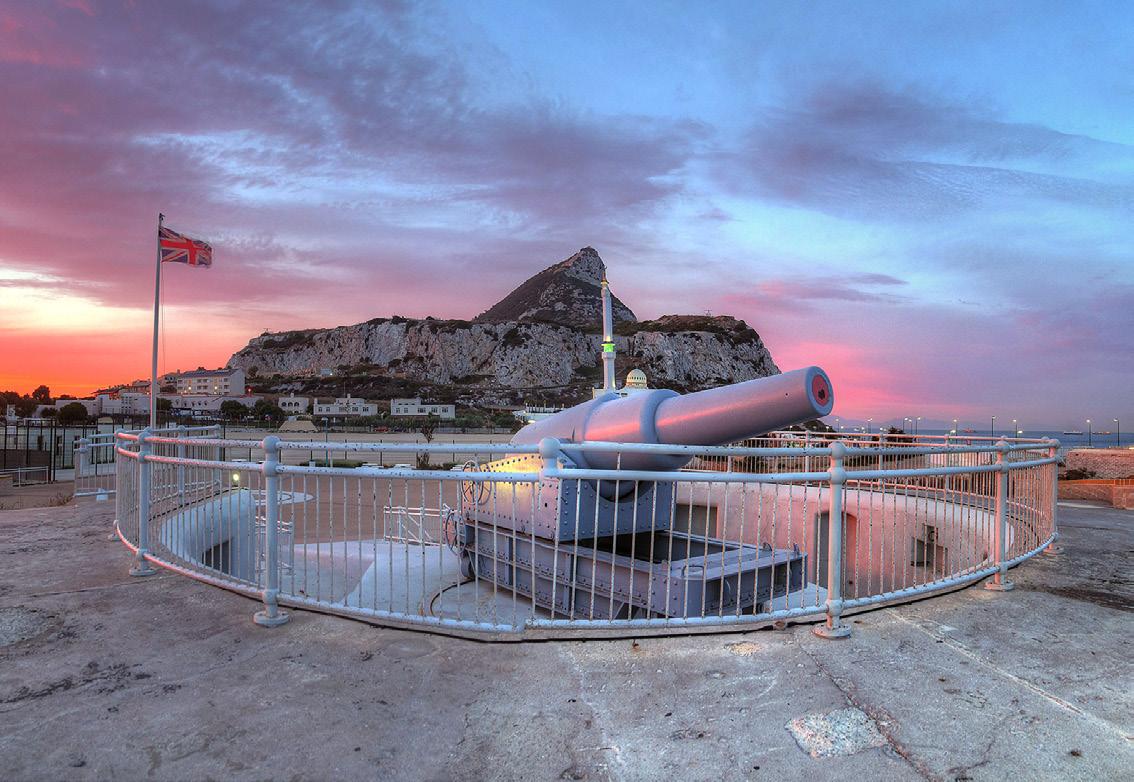
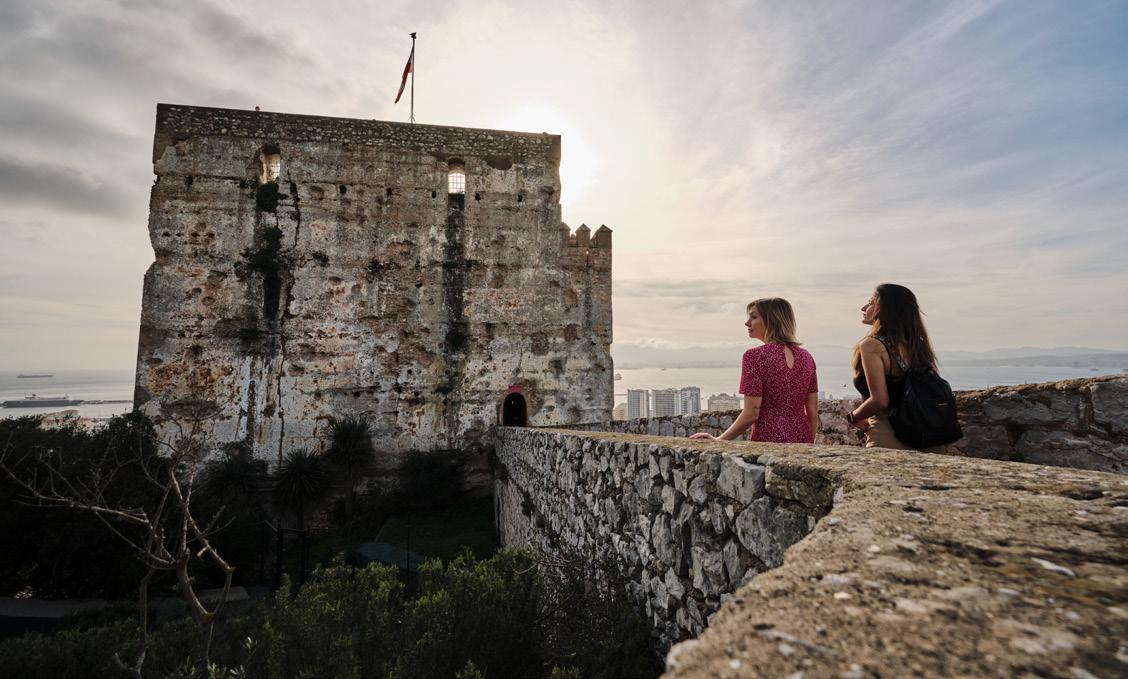
with TV, digital, radio, and printed press coverage throughout the year. We also attend a lot of different conferences around the world to promote Gibraltar as both a leisure and MICE (meetings, incentives, conferences, and exhibitions) destination.
We actively promote the cruise industry and advertise in buses, planes, and magazines. We have ongoing campaigns with EasyJet and British Airways, and there’s a lot of in-person conferencing as well. We have an office based in London, UK so our representatives can easily get to various industry and trade fairs.
OT: What are some of the most popular experiences for tourists in Gibraltar?
CS: The jewel of our tourist product is the Upper Rock Nature Reserve. The rock is unique to us; it is complete with beautiful walks, sights, and
attractions, and of course we have our Barbary Macaques. Observing them living in the wild is fantastic to see.
We’ve also got St. Michael’s Cave, a venue complete with a theatre inside which hosts lot of events, and Gorham’s Cave Complex, a UNESCO World Heritage Site.
You can see the tunnels from the Great Siege and World War II; Gibraltar is steeped in history, and a lot of our tourist product is formed from this, especially our rich military history.
Our gastronomy and lifestyle are a major selling point; Gibraltar is where the Mediterranean begins. We are fortunate to have the Mediterranean lifestyle reflected in our food, weather, and temperament, with British influences of language, culture, and history. Gibraltar is certainly unique and has so much to offer visitors who will appreciate this duality.

OT: Equally, what upcoming events are happening that tourists can look forward to?
CS: We have a very rich cultural calendar year-round and hold a lot of our tourism-led events in the summer where outdoor living comes into its own. The Calentita Food Festival is a popular gastronomic event taking its name from one of our unofficially recognised national dishes. The festival puts the spotlight on the vast cultural diversity we are fortunate to have in Gibraltar.
Tourists can also appreciate our concerts and musicians whilst here. International group Nile Rodgers & Chic are playing here this summer, as well as Melon Diesel, a local band who found success in Gibraltar and Spain and are playing a concert in their hometown to celebrate their 25th anniversary.
Later in the year, we have the Festival of Lights and the new year

celebrations, held at one of Gibraltar’s public squares. The festival officially opens up the Christmas season, which has become a time when there is an influx of visitors to Gibraltar. The spectacle includes music, dance, and potentially a visit from Santa who takes time out of his busy season to switch on Gibraltar’s Christmas lights. Gibraltar is always a pull for tourists who wish to spend their winter holidays in milder temperatures.

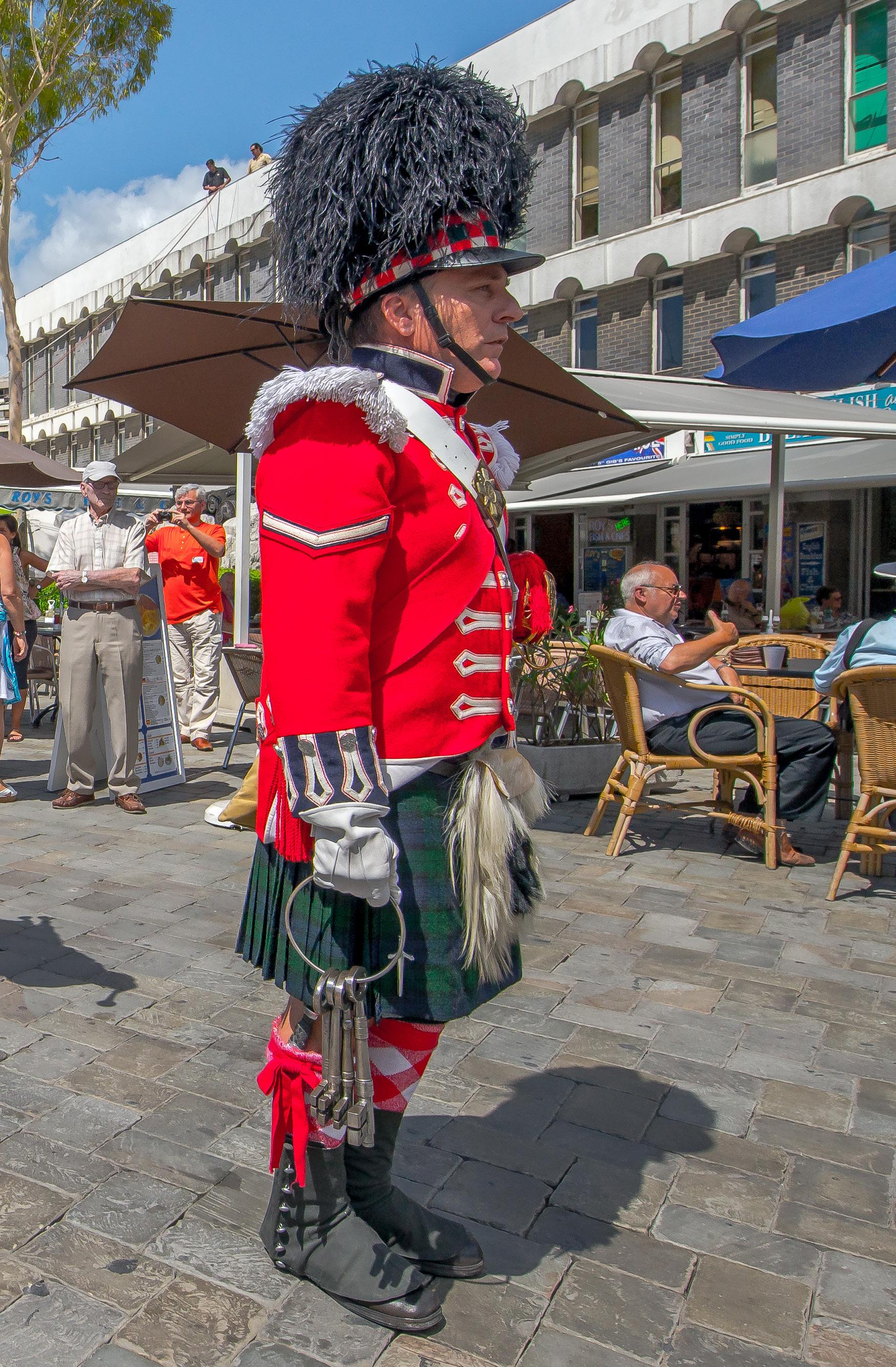
We are about to launch the speakers for this year’s International Literary Festival in November. We have a great line up of well-known authors and personalities coming from the UK to take part in this very successful and popular event, which is the highlight of our literary calendar.
OT: What, in your opinion, is one of Gibraltar’s most underrated landmarks?
CS: Gibraltar is full of attractions. However, what may sometimes be underrated or overlooked is not physical landmark or attraction, but our unique lifestyle.
When on holiday, most of us want to immerse ourselves in the local culture, and this is something Gibraltar has in spades. We are a culturally diverse and inclusive community where you can relax, enjoy the weather and food, have
great conversations, as well as visit historic landmarks and take part in fun adventures.
OT: Why should someone visit Gibraltar in 2024?
CS: Gibraltar has a great energy with a welcoming community who will always make tourists feel at home. Our unique culture is its own attraction.
There is a wealth of offerings for the history buff, the nature lover, the beach goer, or the cycling or walking tourist. Our tunnels and caves have existed for millennia and this year we are opening the Northern Defences, an integral part of our protection during World War II. Investment in an interpretation centre has paid off, giving visitors an immersive experience taking you right back to the era.
Our Mediterranean lifestyle makes Gibraltar feel like home away from home; this is what makes the rock special and unique. You will quickly feel part of our community and will leave with plans to return!
OT: Are you optimistic about the future of tourism in Gibraltar?
CS: I am extremely optimistic. Our recent rebrand and marketing campaigns will showcase Gibraltar to new audiences, and I am sure once people see what we have to offer, our tourism industry will increase further.
We exceeded our pre-COVID-19 pandemic numbers in the first quarter of 2024, and we show no sign of slowing down. We will continue working hard to ensure Gibraltar has a tourist offering which guests deserve and love.
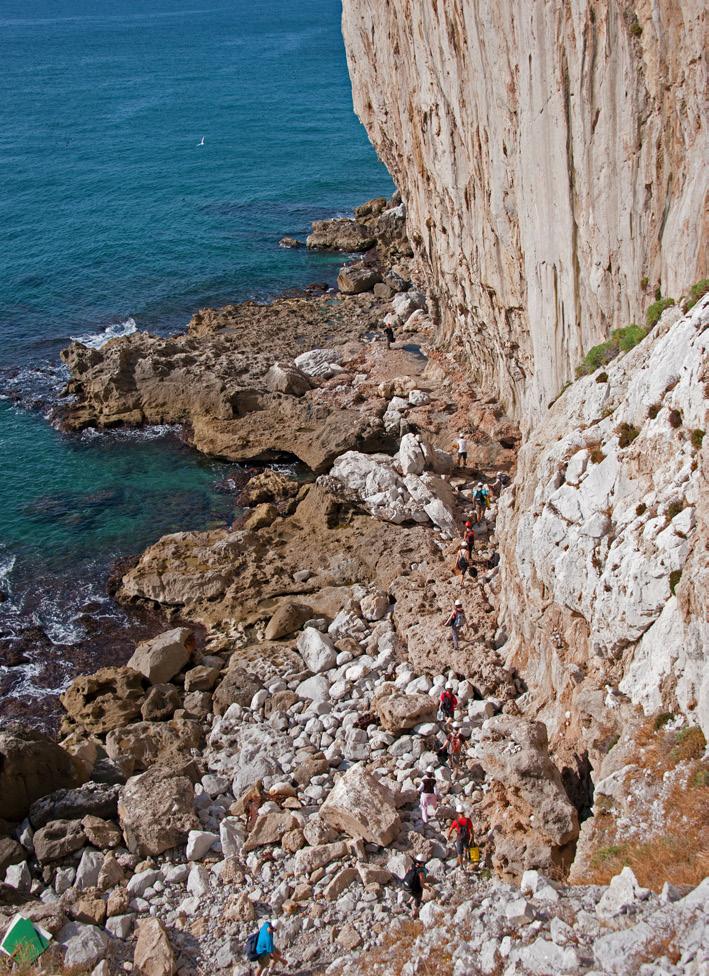

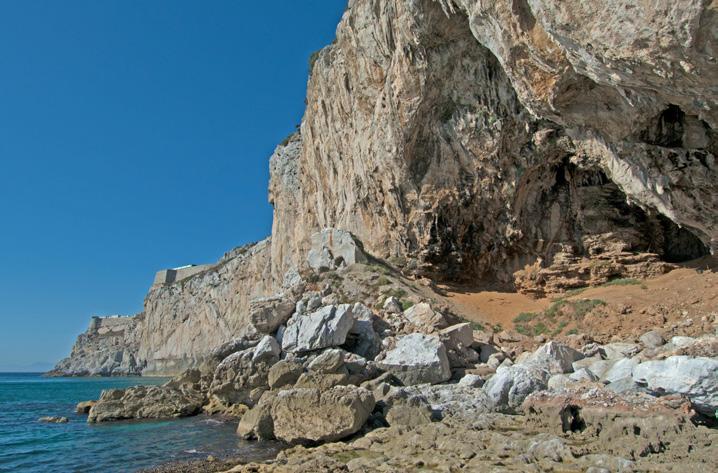
COVERING SOME 28 hectares on the eastern side of Gibraltar, from sea level to the top of the rock, Gorham’s Cave Complex was inscribed as a UNESCO World Heritage Site in July 2016.
This steep, striking cluster of caves located on the eastern side of the Rock of Gibraltar is an exceptional testimony to the occupation, traditions, and material culture of Neanderthals and early modern human populations.
Gibraltar has a long-standing historical association with the former, as in 1848, the first complete Neanderthal adult skull was discovered here in a quarry.
Our closest extinct human relative, with many people living in Europe today having up to 2.5 percent Neanderthal DNA on average, the species lived in the Pleistocene Era between 30,000 and 400,000 years ago.
There has been extensive evidence of Neanderthal life

provided by the caves, such as hunting birds and marine animals for food and the use of bird feathers and abstract rock engravings, indicative of their cognitive capabilities.
Gorham’s Cave Complex is significant in understanding this critical juncture of human evolution and adaptation. Having been archaeologically excavated over the last few decades, results have shown that Gibraltar was the last refuge of the Neanderthals over 30,000 years ago.
Through research and scientific debates, the archaeological and scientific potential of the caves continues to be explored, providing continuing opportunities for understanding Neanderthal life, including their capacity for abstract thinking.
Because of their archaeological sensitivity, the caves are subject to an annual quota of visitors, however, a viewing platform overlooking the complex provides spectacular views and interpretation of the site without damaging its fragile nature.
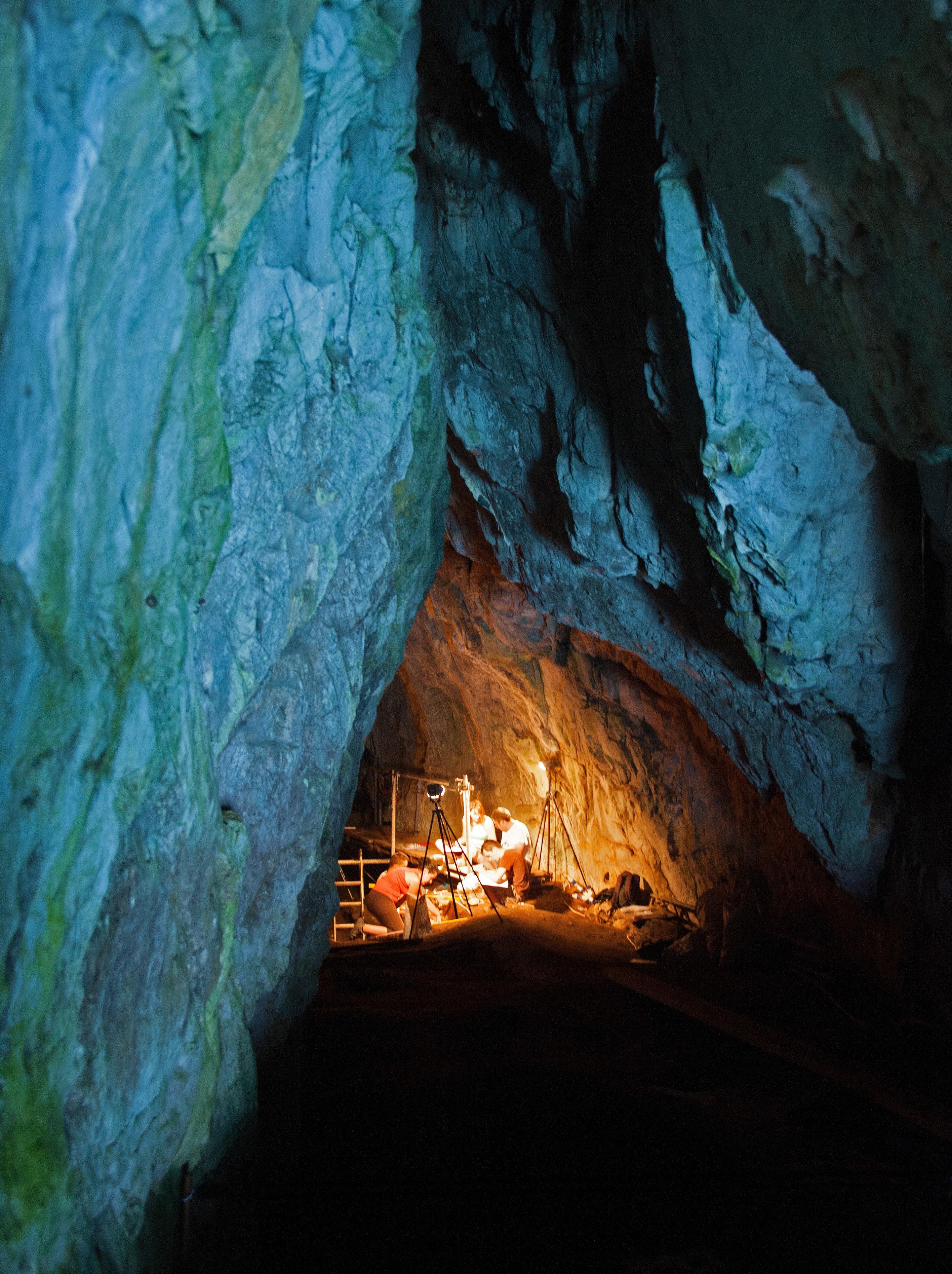

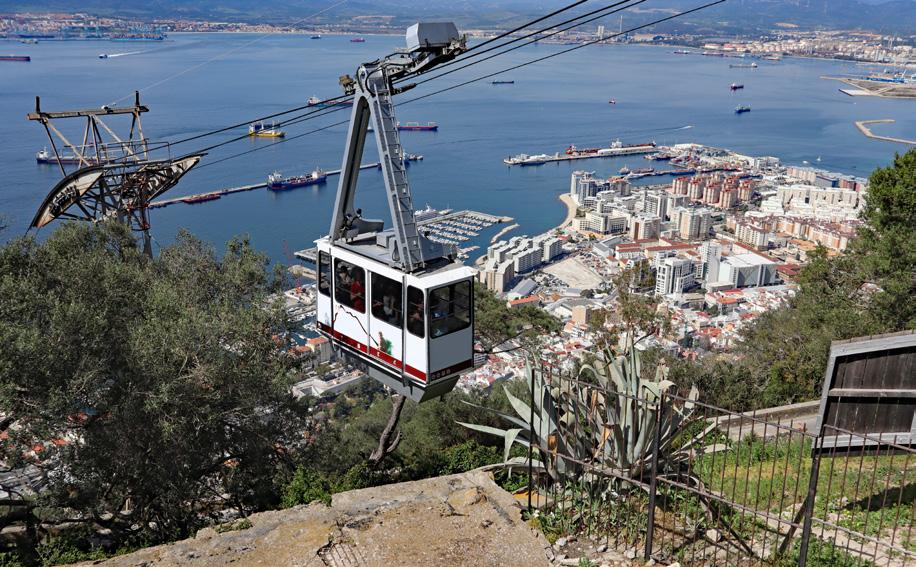
Do:
Under the watchful eyes of the Barbary Macaques, travel to and from the top of the rock by cable car in just under six minutes. Enjoy spectacular views on your way up to the top, where three terraces offering unique viewpoints over the stunning surroundings await.

Sunborn Gibraltar is the world’s first 5-star floating yacht hotel. Guests have the chance to enjoy a unique experience aboard the vessel that combines the privacy and exclusivity of an ocean-going superyacht with premium quality and comfort.
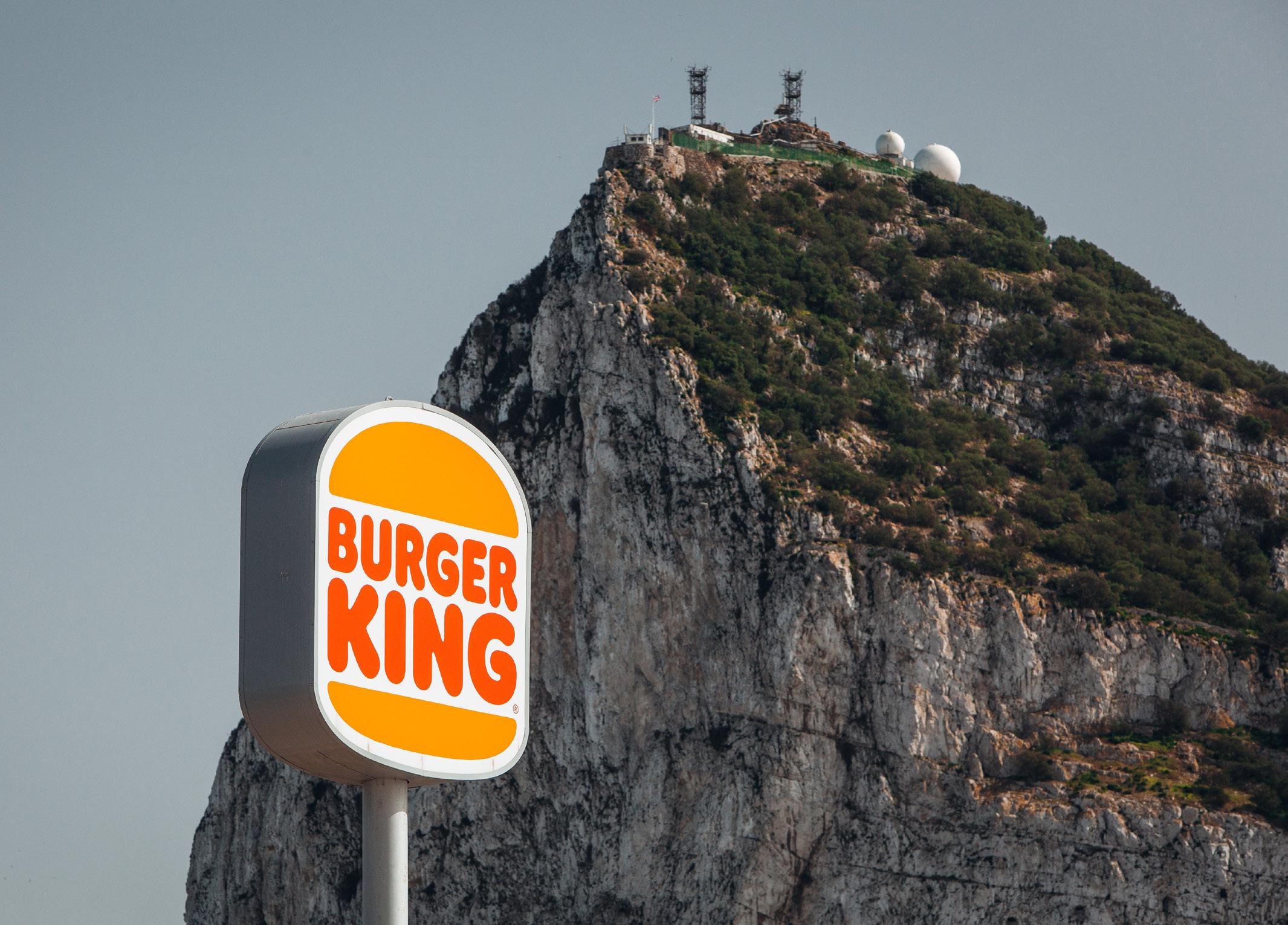

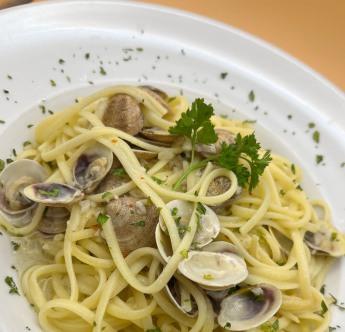

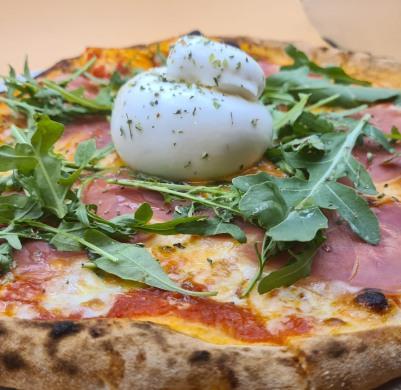








Feel on top of the world as you journey to the Upper Rock Nature Reserve. This protected green area of Gibraltar is home to many historical sites and major attractions, including the freeroaming Barbary Macaques, and is renowned for its unique nature trails that meander through the reserve.
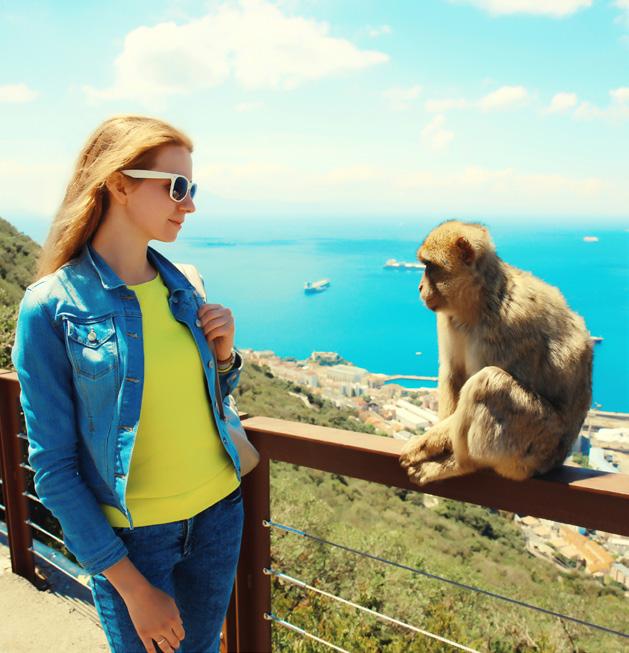
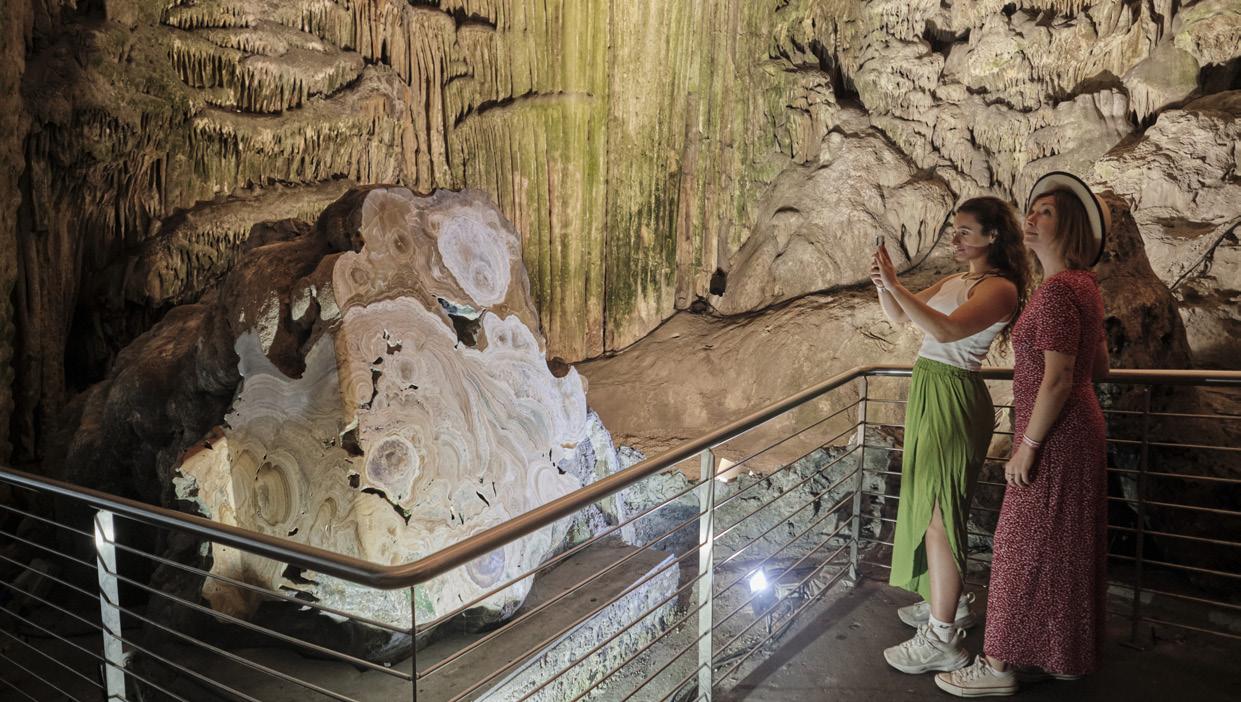
One of Gibraltar’s most important tourist attractions and international symbols, the legendary Barbary Macaques are the only wild monkey population in the whole of Europe. Visitors are invited to take photographs, but as they are wild animals, keep a safe distance, refrain from shouting or making sudden movements, and allow these tailless monkeys to live a natural, free life.
The Barbary Macaques are said to have originally come to Gibraltar through this awe-inspiring subterranean passage. The beautiful natural grotto was originally prepared as a hospital during World War II and has been in use as a theatre since the early 1960s with capacity for 600 people, making a unique auditorium for concerts, ballets, and dramas.
BY AIR, REGULAR flights to Gibraltar International Airport operate from London, Manchester, and Bristol in the UK, as well as Morocco.
Many cross the airport’s runway to get into the city, making it one of Gibraltar’s most unusual tourist attractions. Visitors are often surprised to be walking across the runway they landed on just minutes prior!
Gibraltar is also accessible by road via neighbouring Spain, however, a valid passport is required to cross the border. The land frontier is open 24/7 and an unlimited number of crossings can be made free of charge.
With its prime location at the southern tip of Europe, Gibraltar is also an ideal port of call for cruise ships and yachts as it guards the gateway to the Mediterranean.

Local bus services and taxis operate throughout the territory, but it is easy to get around Gibraltar and its town centre on foot thanks to its relatively small size of just under seven square kilometres (sqkm).
For those with a head for heights, we recommend climbing the Mediterranean Steps. The walk is particularly appealing during the spring and early mornings, however, a late afternoon stroll in the summer also provides plenty of much-needed shade.
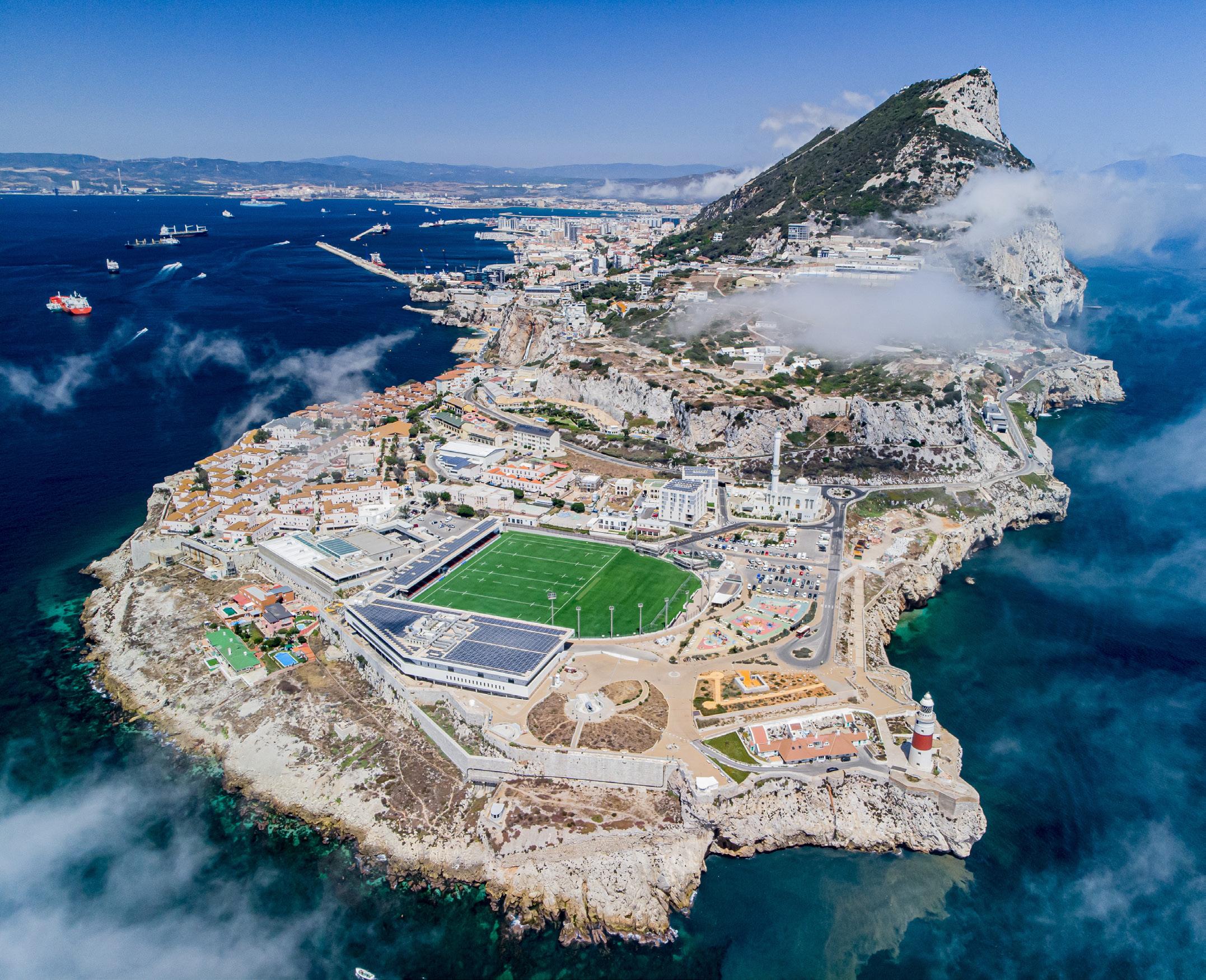
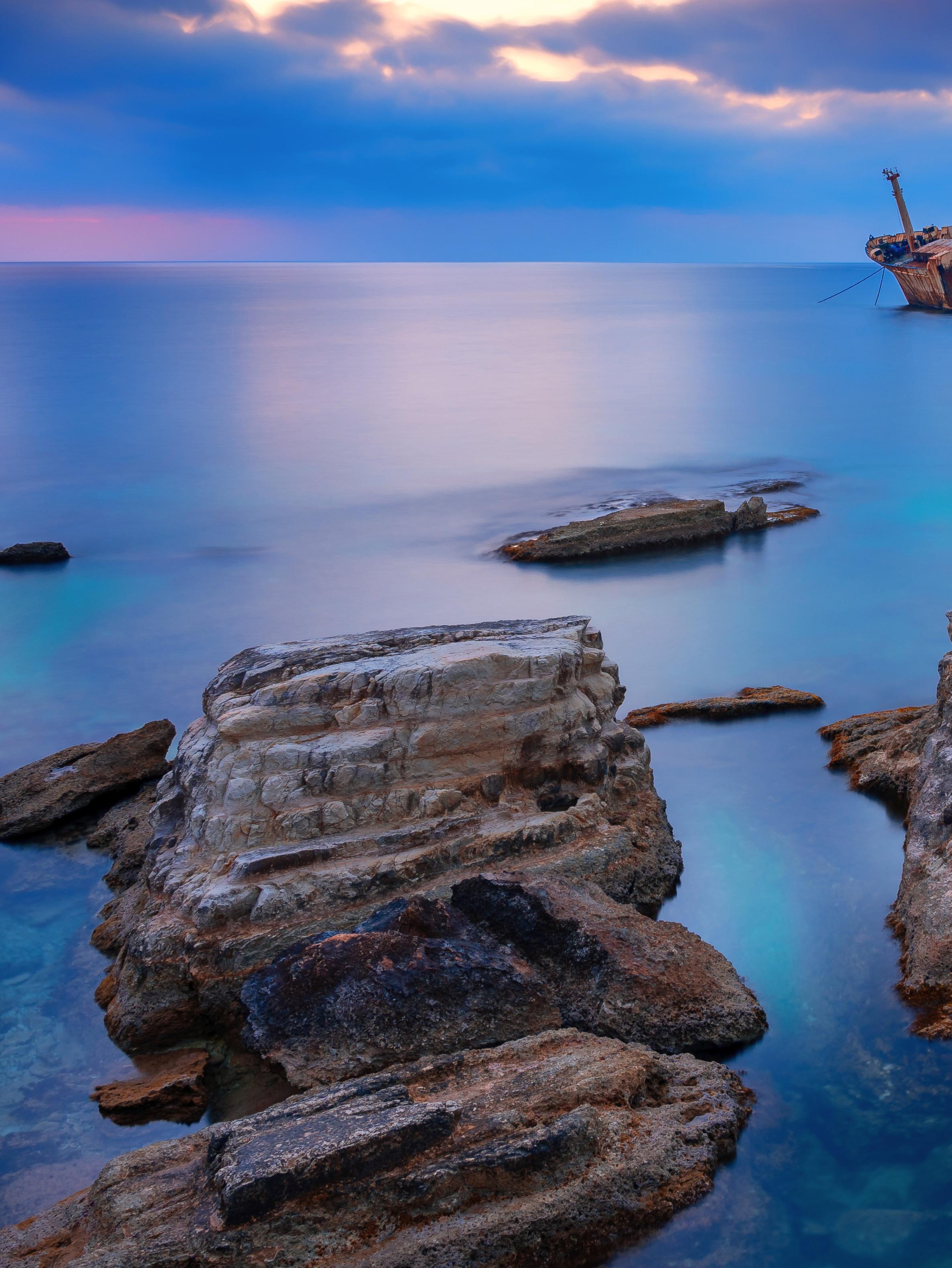
Warm sunshine, rugged, sun-dappled landscapes, and a unique and multifaceted intersection of cultures and histories combine to offer a mosaic of unmatched beauty and unforgettable experiences on the island of Cyprus
WRITER: LILY SAWYER
PROJECT MANAGER: DEANE ANDERTON
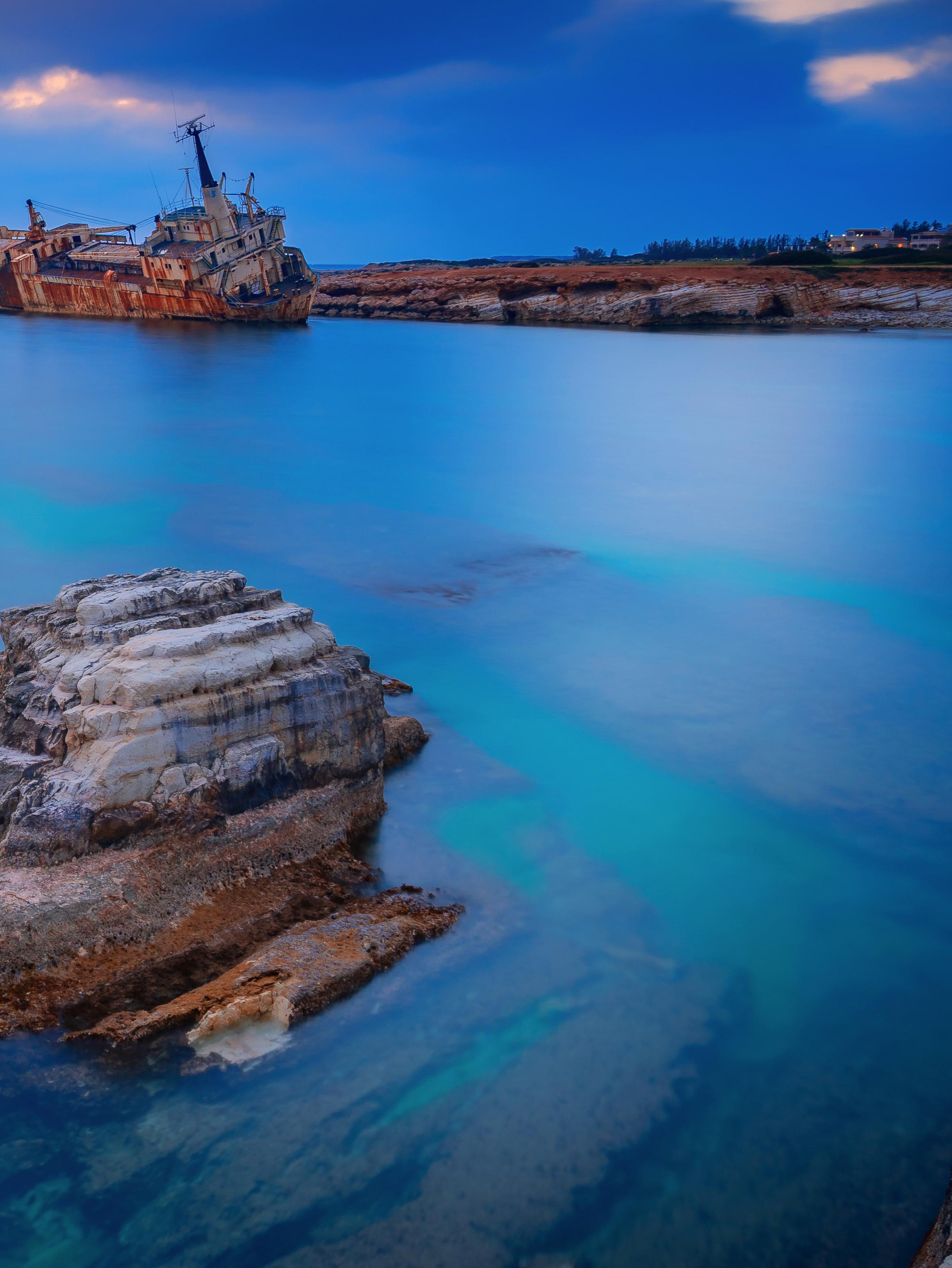
An island blessed with golden, pebbled beaches, lapped by the warm waters of the Mediterranean Sea, and presiding beneath often cloudless, azure skies, Cyprus is an alluring getaway not to be missed.
Enjoying between 300 and 340 days of year-round sunshine, the island provides a perfect spot for sun-worshipers.
Steeped in history, Cyprus’ geographical location represents an important intersection of European, Asian, and African influence, having shaped the stories of many ancient civilisations.
The history books show that Cyprus may have been inhabited as far back as 6,000 BCE, ruled in turn by the Hittites, the Egyptians, the Persians, and the Greeks, before being absorbed into the Roman Empire. Thus, the island’s complex annals, ancient architecture, and interesting archaeological sites, three of which are UNESCO World Heritage Sites, provide a source of discovery and intrigue for tourists and historians alike.
Affectionately dubbed the ‘Island of Love’, the ancient Greeks believed Cyprus to be a playground of the gods and the birthplace of the mythological goddess of love, Aphrodite, who was allegedly born of seafoam off the island’s southwestern coast. As such, coveted sites such as Aphrodite’s Rock and the Baths of Aphrodite remain important cultural landmarks.
Mount Olympos, located in the pine-scented Troodos Mountain range, is Cyprus’ highest point at over 6,000 feet (ft) and offers stunning 360-degree views of the island’s rugged landscapes. The four-hour Artemis nature trail around the mountain’s foothills, named after the Greek goddess of the wilderness, allows visitors to immerse themselves in the raw beauty of the Cypriot countryside.
So, whether you seek the warm sea breeze of the Mediterranean or the splendour of the island’s inland mountain ranges, Cyprus is truly a site of blissful relaxation. In the words of British novelist Lawrence Durrell, who famously spent three years on the island documenting its beauty in his autobiographical novel The Bitter Lemons of Cyprus, “nothing must be done in a hurry, for that would be hostile to the spirit of this place.”

WE SPEAK TO Philokypros Roussounides, Director General of the Cyprus Hotel Association, who recounts the important role that the organisation plays in the development of tourism in the region and how the island’s historical depth and cultural richness continue to contribute to a growing travel and tourism sector.
Outlook Travel (OT): Firstly, what are the overall aims of the Cyprus Hotel Association?
Philokypros Roussounides, Director General (PR): The Cyprus Hotel Association is the guardian
of the country’s tourism industry. In an advisory role, we guide our members on issues concerning the development of hotel units and the improvement of the professional level of hoteliers; we protect and promote their interests and strengthen the efforts made to upgrade and promote the tourism product of Cyprus. However, our involvement in the country’s decision-making centres is also of decisive importance. In cooperation with relevant government departments and ministries, we provide direct information to our members in relation
to the issuance of protocols, support plans, and government incentives, while at the same time participating with expertise in the preparation of legislation concerning the industry and tourism in general.
OT: How would you say the Cypriot tourism industry has evolved over time?
PR: The tourism sector is one of the main pillars of the Cypriot economy, contributing significantly to Cyprus’ GDP and providing employment opportunities. Hotels play a leading role in tourism, undertaking the crucial task of hosting both foreign and local visitors.
However, it is an industry that has been significantly affected by the 1974 Turkish invasion, which impacts the smooth functioning of tourism in the country to this day. Due to the Turkish invasion, Cyprus lost more than half of the coastline it once controlled.
As such, Cyprus today controls only 316.2 kilometres (km) of the island’s coastline, as opposed to the 420.5km

controlled by occupying Turkey. At the same time, the country lost access to Nicosia International Airport and its associated connectivity.
As a result of this, along with other consequences of the Turkish invasion, Cyprus lost 40 percent of the tourism it enjoyed prior to the invasion. Over time, however, the industry survived and has since experienced significant growth.
OT: What are some of the key locations that travellers should prioritise when visiting Cyprus?
PR: Cyprus is an island rich in history, culture, and natural beauty, offering a wide range of experiences for visitors. From ancient sights to local culture and cuisine, Cyprus has something to offer everyone. Some key attractions not to be missed include:
1. Paphos Archaeological Park: This UNESCO World Heritage Site is home to a wealth of ancient ruins, including Roman villas with exquisite mosaics, the Odeon, and the Tombs of the


Kings, offering a glimpse into the island’s past dating back to the 4th century BCE.
2. Ayia Napa: Famous for its beautiful beaches, such as Nissi Beach, Ayia Napa is also known for its vibrant nightlife. However, it’s not just about partying – the area also boasts the Ayia Napa Monastery and the Thalassa Municipal Museum.
3. Troodos Mountains: Ideal for hiking, wine tasting, and visiting traditional villages, the Troodos Mountains are home to Byzantine monasteries and churches on UNESCO’s list of World Heritage Sites, such as the Kykkos Monastery.
4. Akamas: A nature reserve known for its biodiversity, scenic beauty, and the Baths of Aphrodite, Akamas is a great spot for hiking, jeep safaris, and enjoying unspoiled beaches.
OT: How do you market Cyprus as a competitive travel destination?
PR: Through a range of infrastructure, from luxury hotels to budget accommodation in sea, mountain, and city settings, we are able to respond to the different preferences and needs of visitors, offering a total tourist experience with a range of amenities, services, and entertainment options.
At the same time, Cyprus is evolving into an attractive destination that is value for money. I believe that we are close to cementing this status, something that our tourism partners abroad have assured us is the case.
Cyprus’ recent evolution can be, in part, attributed to tourist tariff increases from our competitors in Spain, Greece, Italy, and Portugal since 2021. These were aimed at covering heightened operating costs caused by significant challenges such as energy prices, economic inflation, high interest rates, and geopolitical developments.
OT: How does Cyprus appeal to travellers throughout all four seasons of the year?
PR: Cyprus’ year-round appeal lies in its ability to offer something for everyone, whatever the season. Whether it’s outdoor activities and festivals, exploring ancient ruins and cultural sites, or simply relaxing by the sea and mountains, Cyprus offers a wide range of experiences that appeal to all types of travellers.
OT: As the largest established tourism organisation board in Cyprus, how important are members to the Cyprus Hotel Association?
PR: The association plays an important role in the development of the industry, as well as in the resilience and sustainability of the tourism sector.
Our members are an integral part of our efforts, and through dialogue and close relations, we formulate
appropriate strategies and actions for the benefit of tourism and the Cypriot economy.
OT: What makes Cyprus an inspiring place to discover, and how is it different to other destinations in Europe?
PR: Cyprus seamlessly combines historical depth, cultural richness, and natural splendour to present a mosaic of experiences that fascinate visitors.
From the ancient ruins that dot the island to the enchanting beaches of Ayia Napa and the serene beauty of the Troodos Mountains and the Akamas peninsula, the island offers a unique journey through time and tradition.
Its landscapes are as diverse as its history, from rugged coastlines to mountainous hinterlands, each telling a story of cultures past and present.
Cyprus invites explorers to discover its archaeological treasures, enjoy its vibrant festivals, and take in its natural wonders, making it a destination that embodies the essence of the Mediterranean spirit.
OT: Finally, are you optimistic about the future of the tourism industry in Cyprus?
PR: Without a doubt. In the short term, the future of tourism will largely depend on the stability of global politics, markets, and geopolitical developments.
Now, we cannot make optimistic predictions, as although the initial signals were positive, we have seen a downward trend in bookings since January, which is expected to continue in the coming months. This development is a result of the war in our neighbourhood and publications
that implicate our country with various political movements.
But, in the long term, we are very optimistic. We are an industry with strong resilience that has proven to successfully overcome any challenge. At the same time, our country offers an attractive tourist product that will always appeal to travellers.

Tel: 00357-22452820
cha@cyprushotelassociation.org www.cyprushotelassociation.org
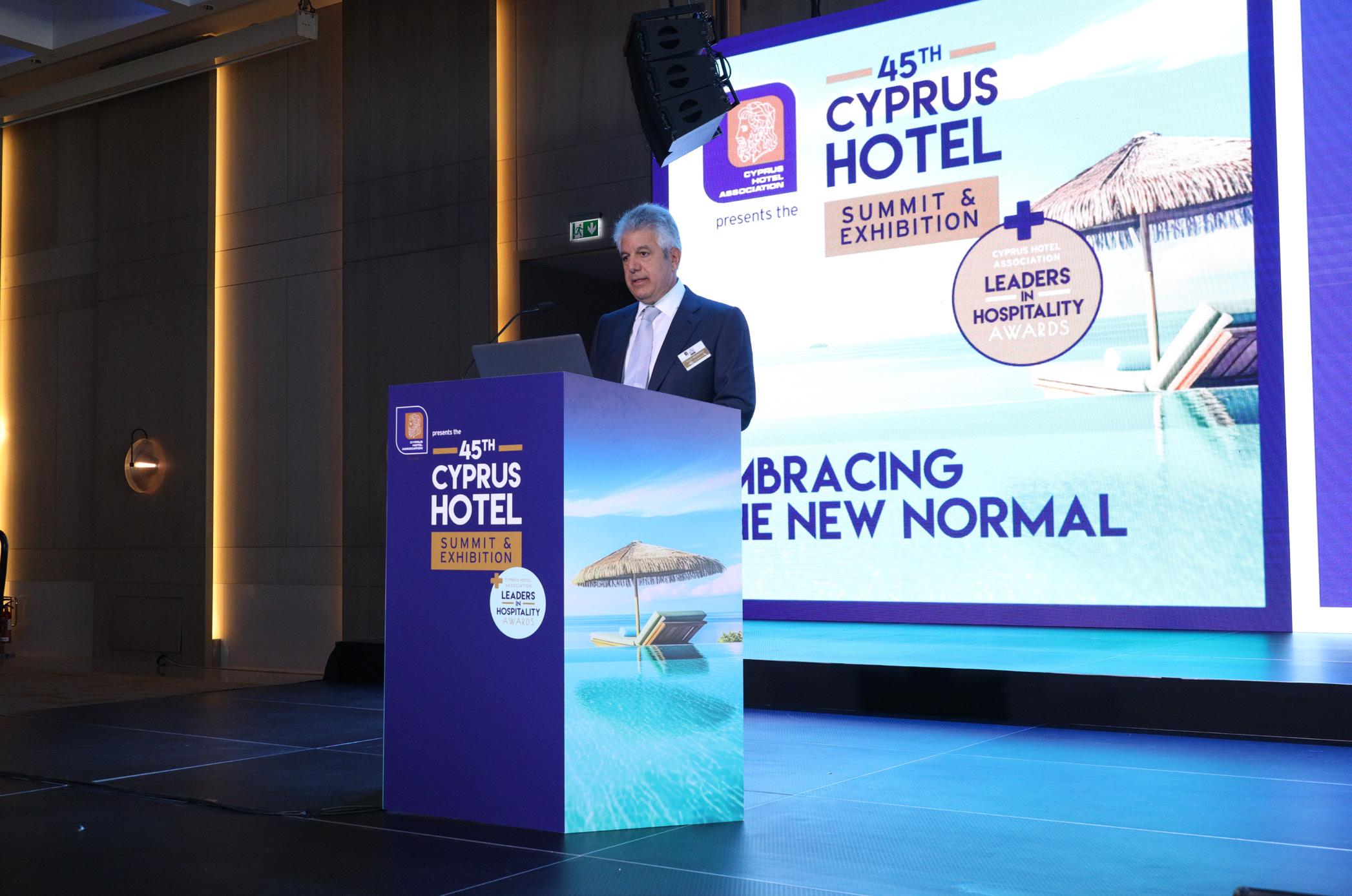

Despite Cyprus’ widely perceived reputation as a destination exclusive to sun-seekers, remarkably, some of the island’s highest points provide ample opportunities for winter sports aficionados a staggering 2,000m above sea level
EACH WINTER, THE Troodos Mountains, known for their breathtaking views and dewy, sun-soaked foothills, enjoy a generous smattering of thick white snow upon the highest peaks.
Between mid-January and late March, Mount Olympos, the range’s most sizable summit, is transformed into a haven for skiers and snowboarders, featuring both downhill and cross-country slopes. Boasting four ski lifts, eight downhill alpine ski runs, and various cross-country tracks, the Troodos Ski Resort offers something for everyone.
Aptly named, many of the resort’s slopes feature monikers from Greek gods and goddesses. The Hera and Aphrodite slopes offer shorter, beginner-level ski courses, whilst the Zeus and Hermes slopes provide a challenge for intermediate and experienced skiers.
A walking trail to the Skolio Peak of Mount Olympos
likewise offers experienced hikers a unique and challenging pursuit. Those who reach the summit boast the rare privilege of observing endless, 360-degree vistas, where cloudless Mediterranean skies meet the snowy horizons beneath.
The winter ambience will warm your soul in the areas surrounding Mount Olympos, such as Alatres, Agros, Pedoulas, and the village of Kakopetria, where visitors can find cosy, convenient accommodation.
So, whether you seek the childish joy of immersing yourself in sledding and snowball fights, the personal triumph of taking in the stunning views from Skolio Peak, or the stimulating ski slopes that grace the face of the Troodos Mountains, don’t miss the unique opportunity to don your skis beneath the Mediterranean sunshine in Cyprus this winter.




FOR RECONNECTING WITH NATURE…
Hike the magical 2.4km trail through dense, verdant forestry along the Kryos Potamos River towards the Caledonia waterfall. The impressive 12 metre (m) fall acquired its moniker from international travellers who were fascinated by the natural landscape, which reminded them of their Caledonian homeland in Scotland. Surrounded by local flora and wildlife, including gentle birdsong from native swallows, those who visit the waterfall are able to truly immerse themselves in the Cypriot wilderness.
FOR AN OCEAN ADVENTURE…
Located just 10 minutes by bus from the town of Protaras, Cape Greco presents a group of intriguing, arching caves with the clearest waters beneath. Located in the southeastern corner of the island, Cape Greco is also the easternmost point of the European Union (EU). For those seeking an adrenaline rush, there’s a popular spot where locals will teach you to cliff jump into the warm blue waters and explore the caves below. Alternatively, a short climb down to the shore below presents a more cautious option.
FOR A COLLISION OF GLOBAL CUISINES… Visit Limassol AGORA – a food court with a difference. The perfect destination to enjoy delicious international cuisines and featuring over 12 different food vendors from across the globe, Limassol AGORA offers sweet treats, tasty tipples, and savoury delicacies, including dishes from Mexico, Japan, Italy, Lebanon, and the Caribbean. In addition, whilst the adults tuck into the fabulous food, children can enjoy endless entertainment in PlayLounge, an extensive, safe, and modern soft-play area.


FOR AUTHENTIC LOCAL FLAVOURS…
Mousikos Tavern, located close to the village of Sotira in the east of the island, showcases true, local Cypriot cuisine in all its rustic glory. A large, natural windmill graces the entrance of the restored building, whilst outdoor seating on a paved courtyard featuring trailing grapevines provides the perfect setting beneath the sun. Serving freshly churned, unpasteurised halloumi, warm, homemade bread, and generous meze platters featuring traditional moussaka, lamb kleftico, and sheftalia, this authentic gem is not to be missed.
Visit Amara, a 5-star luxury resort, offers high-end accommodation in a serene setting. Drawing inspiration from the natural beauty of the inviting, azure waters it overlooks, the hotel is known for its 180-degree views of the Cypriot coastline. First-class service, generous suites, and a tasteful, chic design are just a few examples of what makes Amara the gem in Limassol’s crown. With its name derived from ‘amárantos’, ancient Greek for ‘everlasting’, Amara truly offers guests an unforgettable experience of endless luxury.
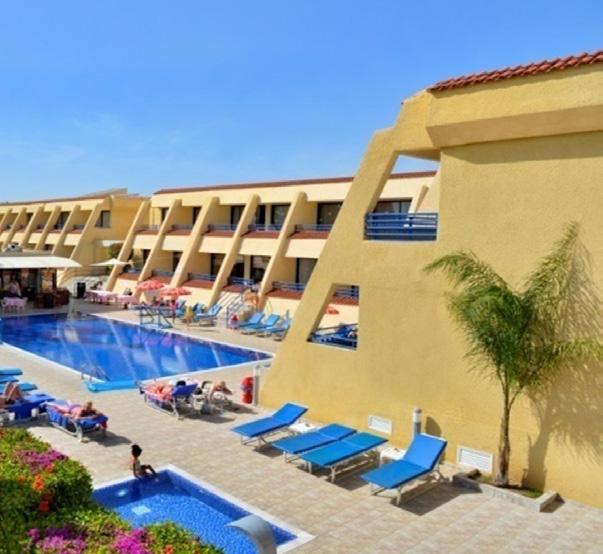
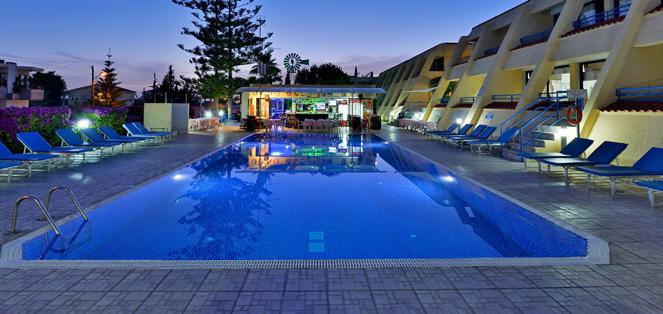

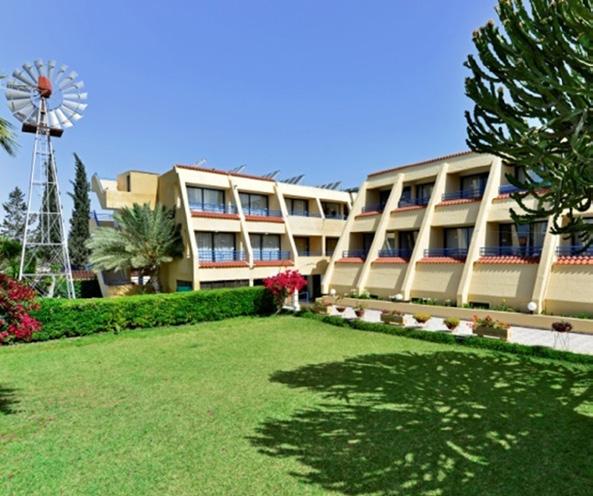
create your ideal escape. Whether you’re seeking city adventures or peaceful beach or pool days, our hotel is your perfect base.
Embrace the essence of Cyprus at Napa Prince Hotel Apartments, where unforgettable memories are made.
Napa Prince Hotel Apartments Tefkrou Anthia 65, P.O.Box 30239, 5342 Ayia Napa, Cyprus
T 23-721483 F 23-722260 nprince@cytanet.com.cy reservations@napaprince.com www.napaprince.com

FOR A PEACEFUL RETREAT…
Set deep within the peaceful Troodos Mountains, Casale Panayiotis is a restored relic turned luxury hotel offering rustic Cypriot authenticity with a modern touch. The surrounding village of Kalopanayiotis provides a rich agricultural history, extensive vineyards, and glorious mountains as far as the eye can see. Each lovingly curated guestroom preserves the traditional ambience of the resort’s calm surroundings with a luxury, contemporary twist. In addition, an on-site spa inspired by local sulphur springs offers guests the opportunity to relax, escape, and unwind.


A firm family favourite, Protaras is a purpose-built resort on Cyprus’ southeastern coast, boasting scenic pine forest walking trails in nearby Cape Greco, a rugged, natural coastline, and the turquoise shores of Fig Tree Bay – widely regarded as Cyprus’ cleanest beach. History lovers will enjoy hiking to the intriguing limestone Church of Profitis Ilias and exploring excavated Hellenistic tombs. In addition, located just minutes away is vibrant Ayia Napa, where lively bars and restaurants are easy to come by.

The port city of Larnaca, known for its fresh seafood served from traditional tavernas at the harbour, is set against the picturesque backdrop of Finikoudes Beach and a beachfront promenade lined with palm trees. Considered Cyprus’ oldest town, Larnaca’s centre blends traditional architecture, cultural sites, museums, and religious monuments to provide an evocative glimpse into the island’s past. In addition, Mackenzie Beach provides a site of sunny relaxation, whilst just off its coast, snorkelling and diving aficionados can discover Zenobia, the world’s best wreck diving site.

Popular amongst horse riders, Lady’s Mile, spanning 5km, is Cyprus’ longest beach. Situated in Asomatos, on the outskirts of Limassol, Lady’s Mile offers visitors a refreshing change from the busier city beaches and is perfect for a long, relaxing stroll. Just a few minutes away, Limassol Salt Lake boasts a large population of wildlife, including a 20,000-strong flamboyance of migratory flamingos which can be spotted at the lake each winter. In addition, green and loggerhead turtles can be found nesting on the beach between the months of May and July.
DESPITE BEING A relatively small island, Cyprus boasts two sizable international airports in Larnaca and Paphos, flying frequent, direct routes between London, Athens, Amsterdam, and Brussels.
For those who wish to avoid travelling by air, several ferries per week travel from the ports of Tasucu and Mersin in Turkey to Kyrenia in the north of Cyprus and Magusa in the east of the island. The journeys take between six and eight hours, depending on which Turkish port you choose to travel from.
Once you reach the island, due to the absence of trains, the local bus network is by far the cheapest way to get around. There are five different companies that cover the districts of Larnaca, Nicosia, Paphos, and Famagusta, which are generally modern in design and punctual in service. However, buses in more rural areas such as the Troodos Mountains are less frequent.
Taxis are also a viable option for the majority of the island. Be aware that in the north, taxis marked ‘Taksi’ do not generally have meters, so it’s a good idea to agree on a fare before travelling. You may also encounter additional charges for waiting (per

hour), luggage (per item), and for travelling during public holidays.
Renting your own vehicle may well be the most efficient and cost-effective way of getting around Cyprus. Available from most reputable high street rental agencies in the country, an average rate of €25 per day in winter and €50 per day in summer is to be anticipated, or less if you’re renting your vehicle for an extended period.
Generally, an international driving permit, in addition to your domestic licence, is not required on the island, although it could provide extra peace of mind to obtain one.
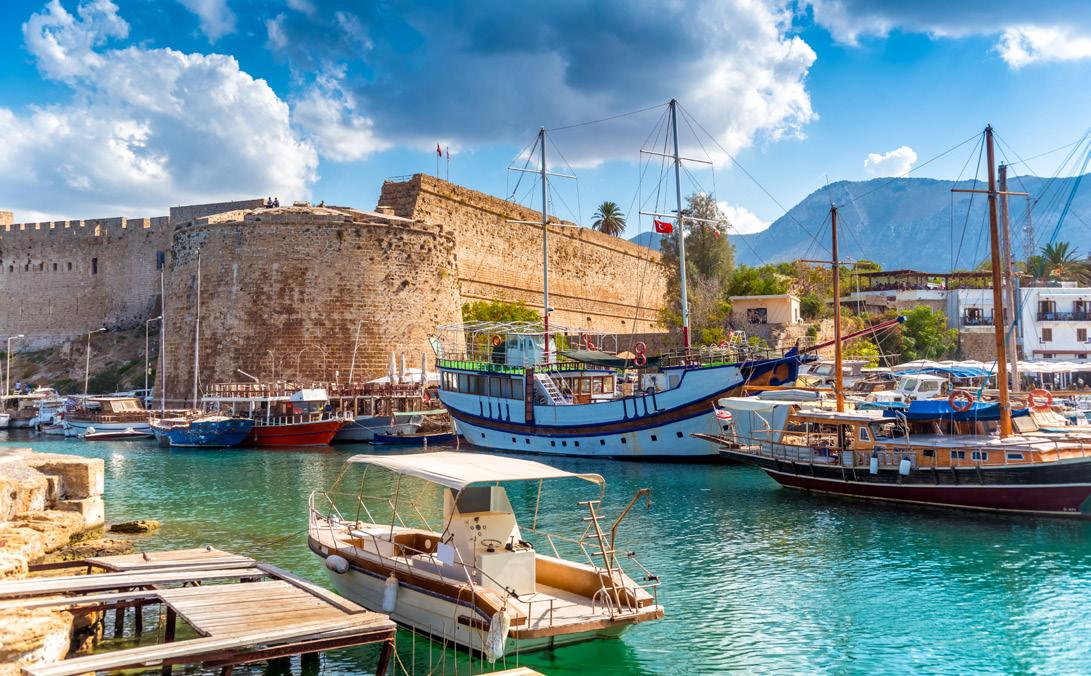
• Cyprus was once gifted to Queen Cleopatra of Egypt by her lover, General Mark Antony.
• Cyprus is home to the oldest manufactured wine in the world, Commandaria, which dates back to around 2000 BCE.
• The island is home to more stray cats than human residents.
• Nicosia is the only completely divided capital city in the world, being under both Turkish and Cypriot occupation. It has been divided by ‘The Green Line’, or the UN Buffer Zone, since the Turkish invasion of 1974.
• Cyprus’ waters were voted the cleanest in Europe in a 2021 study, surpassing those of Austria, Greece, and Malta.
• For several months each winter, the highest peaks of the Troodos Mountains are blessed with generous coverings of snow. As such, the destination has become an unlikely but popular ski resort.
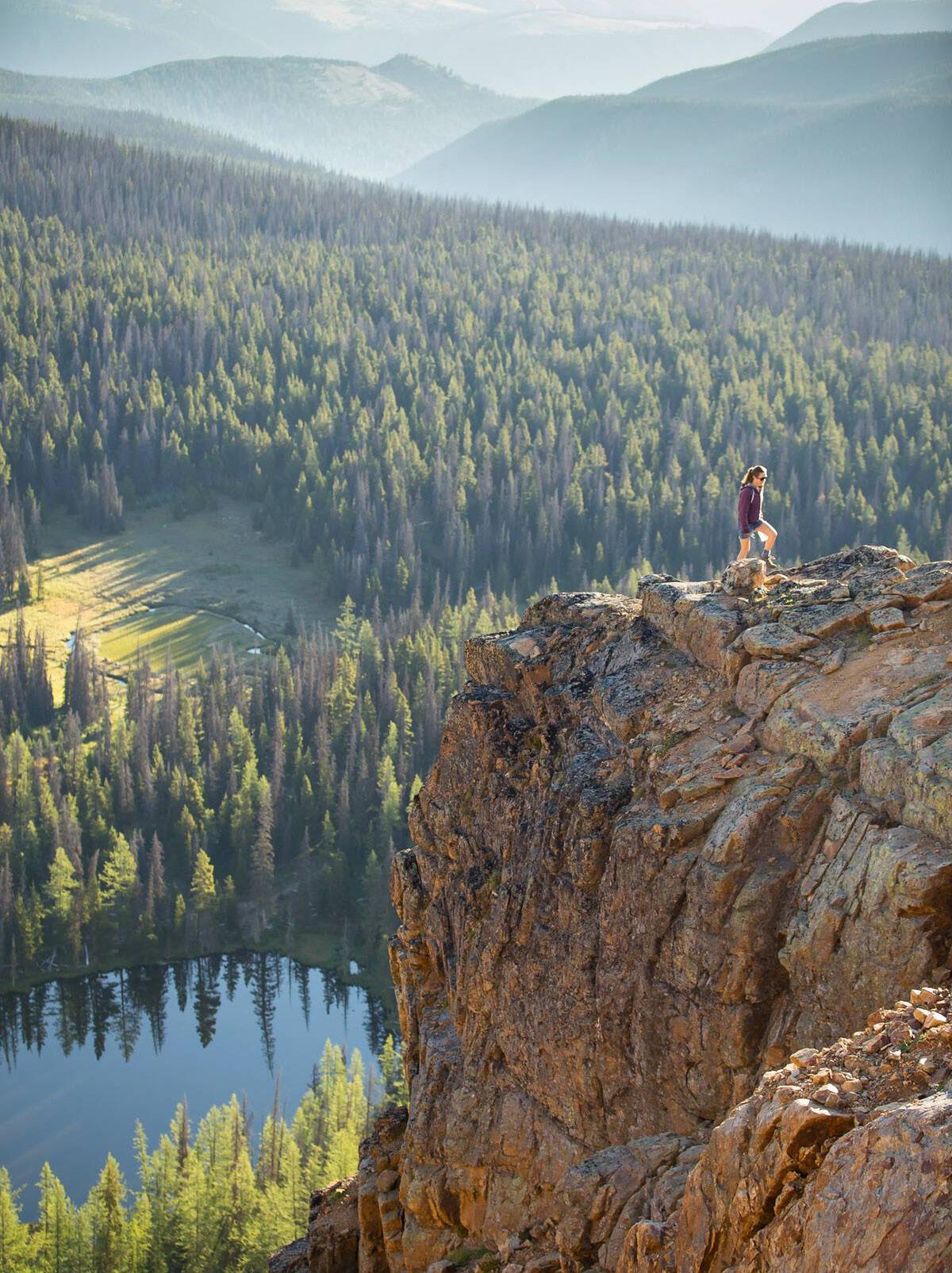
DID YOU KNOW?
• The 124 square mile Thompson Okanagan region has over 200 wineries, more than any other province in Canada.
• Human history in the Thompson Okanagan region dates back millennia, as the area has been inhabited by Indigenous peoples for over 10,000 years. The First Nations in this region include the Secwepemc (Shuswap), Nlaka’pamux (Thompson), and Syilx (Okanagan) peoples.
• Okanagan Lake is a remnant of the last ice age, formed over 10,000 years ago by melting glaciers. Furthermore, depths of 232 metres (m) make it one of North America’s deepest lakes.
Distinct in its variety and abundance, the Thompson Okanagan stretches from the tallest peak in the Rocky Mountains, moves across rolling hills dotted by pristine lakes, and falls into valleys ripe with orchards and vineyards. Fieldto-fork culinary experiences, outdoor adventures, cultural authenticity, and an opportunity for personal growth await
WRITER: RACHEL CARR
PROJECT
MANAGER: KRISHA CANLAS
Located between the Pacific Ocean and the Rocky Mountains in the province of British Columbia (BC) is the Thompson Okanagan, a region that boasts towering waterfalls, vast grasslands, rich fertile valleys, and an abundance of outdoor adventures. Rolling hills and a semi-arid pocket desert are balanced by sprawling lakes and reclaimed rail lines for hiking and cycling that link towns and villages.
The region is an outdoor enthusiast’s dream, with options for adventure available all year round. Biking and hiking are great ways to take in the sights of the Thompson Okanagan, especially in the spring and summer when temperatures are a bit more moderate. The region also offers the ultimate backcountry experiences, hut-to-hut hiking, glamping, and camping, where visitors can come face to face with nature and an abundance of wildlife of every size, as well as a mecca for bird-watching enthusiasts. Unique experiences cover the region from Wells Grey Provincial Park, Helmcken Falls, Mount Robson, Shuswap Lake, the Thompson River, the expanse of Okanagan Lake, and spectacular vistas from Anarchist Lookout to Cathedral Provincial Park are all worth a visit.
Those looking for more heart-racing options should look no further than the many regional peaks. Mountain biking at Big White, Silver Star, or Sun Peaks ski resorts won’t disappoint, nor will downhill skiing on the “champagne powder” snow in the winter. Apex Mountain Resort, Baldy Mountain, and the Vernon Nordic Centre also add to the amazing winter ski experiences available to visitors. Skaha Bluffs offers world-class climbing, providing visitors the opportunity to drink in the ever-changing landscapes and views from new heights under breathtaking sunsets, igniting the sky with orange, pink, and red hues. If you are searching for the ultimate mountain challenge, Canadian Mountain Holidays and Mike Wielge offer world-class heli-hiking and skiing tours.
Cuisine is an integral part of what makes this region so special, and farm-to-table is not just a concept but something the area chefs pride themselves in delivering. You, too, can enjoy fresh fruits, vegetables, and other artisan products at one of the many farmers’ markets held in communities from May through October, or take the time to visit a U-Pick to do the work yourself.
Wineries, breweries, and distilleries are also integral to this region, and the unique and diverse climate, tempered by the lakes as well as the terroir, creates excellent growing conditions that have proven to provide a portfolio of award-winning wines. Many wineries in the Thompson Okanagan are open year-round, and more and more have on-site restaurants. Throughout the year, wineries offer tastings, education, information, cooking classes, and other events. One of the newer wine experiences in the region is the Oliver District Wine Village, which is home to several boutique wineries, a distillery, and a brewery and where numerous events, such as Oktoberfest in the fall, provide a wide number of reasons to visit again and again.
Of course, you can enjoy wellness in this region year-round, however, there is a certain relaxation that is experienced when you visit one of the Thompson Okanagan Tourism Association’s (TOTA) spa partners in the chilly winter months. Whether you are looking for the European-inspired Sparkling Hill or one of many day spas throughout the region, the benefits of a warm sauna and a cold plunge are known to reduce inflammation, encourage sleep, improve the immune system, and support mental health.
The Thompson Okanagan is committed to providing responsible, sustainable tourism experiences and is guided by a regional pledge reflecting the Indigenous belief that what we do today affects the next seven generations. The Seven Affirmations are to respect the roots, tread lightly, be a good neighbour, travel safely, live in harmony, shop local, and educate others.
You are encouraged to remember and respect this as you travel to take the time to sign the region’s pledge
Founded in 1996, TOTA stimulates sustainable growth, promoting authentic experiences and inspiring creative collaboration.
CEO, Ellen Walker-Matthews,
reveals how the region is embracing tourism through community engagement while remaining eco-friendly
Outlook Travel (OT): Can you talk us through the origins of TOTA and its initial vision?
Ellen Walker-Matthews, CEO (EWM): TOTA is one of five regions in BC that work together through a shared cost agreement with Destination BC and in support of the ‘Super, Natural British Columbia’ brand.
As an industry-led not-for-profit, TOTA supports more than 3,500 tourism stakeholders throughout the 120 communities and 32 Indigenous communities in the Thompson Okanagan region.
As a destination management organisation (DMO), TOTA provides tourism industry partners with guidance and support in numerous areas, including destination development, sustainability, travel trade, media, the application of marketing messages, stakeholder training, tourism crisis communications support, and more. Our mission is to encourage and support sustainable tourism growth for Indigenous and non-Indigenous communities through collaboration and research.
OT: What criteria did you meet to win North America’s Responsible Tourism Award, and how will you ensure the industry continues with its responsible tourism initiative?
EWM: Advancing sustainability is one of TOTA’s guiding principles; awards like this greatly acknowledge our work.
TOTA has received the North America Travel Award for Responsible Tourism for the past five consecutive years and is honoured to be nominated again in this category. Votes are cast by tourism industry professionals, media, and tourism consumers.
In 2012, TOTA released a 10-year Regional Tourism
Strategy that outlined the need to broaden, deepen, and diversify the region’s tourism offering and ensured that it happened through a sustainable and responsible lens. In 2017, the region was awarded Biosphere Certification by the Responsible Tourism Institute, which must be updated annually and is based on continuous improvement. We are pleased to have achieved their Gold Standard every year since our initial certification was received.
Since being awarded the Biosphere Certification, TOTA has continued to work with our regional DMO partners to expand the sustainability efforts province-wide. The BC Regional Tourism Secretariat, a collective of BC regional DMOs, agreed to work collaboratively so all tourism regions could achieve the Biosphere Certification.
As of today, we are happy to report that five or six regions have acquired Biosphere Certification and are all implementing their versions of the Biosphere Commitment Programme tailored to their tourism business’s needs.
Furthermore, the Provincial Ministry of Tourism recognised the region’s efforts to implement sustainability initiatives, and collectively, the BC Tourism Climate Resiliency Initiative (BCTCRI) was created. BCTCRI is a province-wide scheme that provides one-to-one support to tourism businesses in developing personalised sustainability roadmaps, providing expert consulting services, and identifying projects for funding.
We recognise the role that TOTA plays as a steward of the region, and we are committed to the careful and responsible management of the destination, the delivery of tourism products and services, and the thoughtful and mindful approach to the direction and development of this region.
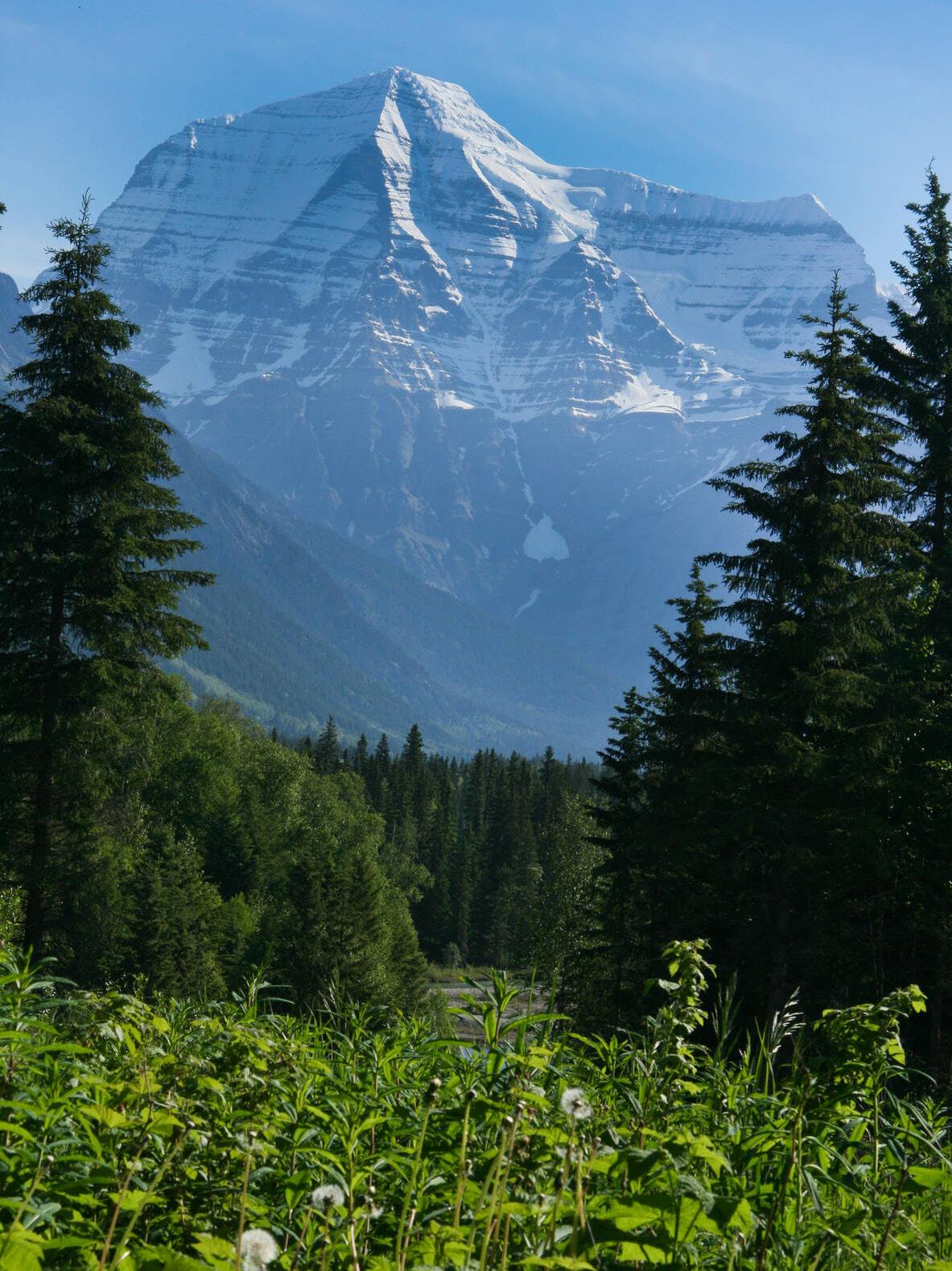
OT: How is the Thompson Okanagan embracing and supporting sustainable or environmentally friendly travel experiences?
EWM: TOTA works directly with tourism businesses in the region and offers the Thompson Okanagan Biosphere Commitment Programme, which provides businesses with the tools to track, measure, and record their sustainable actions with support from Success Advisors.
Businesses log these actions on the Biosphere Sustainable Lifestyle Platform, which offers visitors a transparent look at the initiatives they are undertaking to create environmentally-friendly travel experiences while reducing greenwashing.
Since 2015, TOTA has collaborated with Indigenous Tourism British Columbia (ITBC). Over the past eight years, we have diligently cultivated relationships across our region, collaborating and establishing foundations grounded in Indigenous principles and traditions.
This partnership ensures our capacity to engage with each Indigenous community and business, fostering relationships and partnerships and understanding their priorities for tourism development.

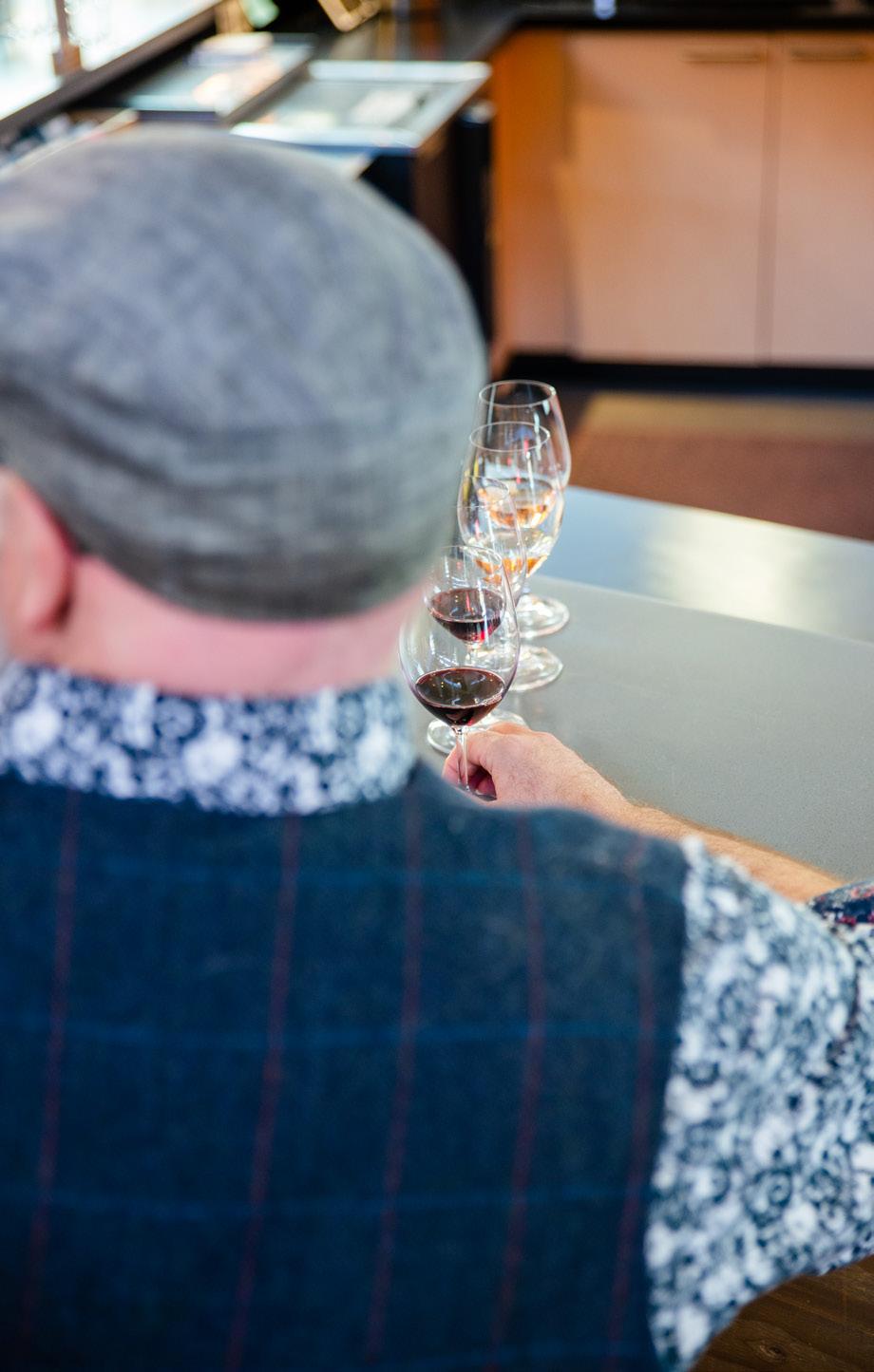
Visitors to the region can expect to find travel trends that reflect sustainable practices. Locally sourced ingredients are prioritised at restaurants, wineries, cideries, and breweries, and feature in many available products. More environmentally friendly transportation options are also readily available to visitors, with e-bikes soaring in popularity for vineyard tours and day trips, accommodations offering shuttle services to and from the airport, and ride shares to and from different regions.
Finally, BC has embraced the guidelines of the 7 Generations Pledge, which is based on the Seventh Generations Principle and is rooted in Indigenous philosophy – the decisions we make today will impact the seven generations.
OT: How do you market the region as a unique destination, and what types of travellers does it appeal to?
EWM: The Thompson Okanagan is a year-round destination with enriching options for visitors to experience, see, and learn.
Outdoor adventures are top of the list, and the region is proud to have various activities that appeal to varying skill levels. Whether you love mountain biking, hiking, rock climbing, bouldering, boating, paddleboarding, skiing (cross-country or downhill), or golf, this region will
undoubtedly serve up something you will enjoy.
Agriculture has long been a staple of the Thompson Okanagan, with soft fruits such as cherries, peaches, pears, apricots, apples, and others leading the way.
In the past 40 years, the grape and wine industry has also been a big part of this growing scene and has witnessed the arrival of many cideries, breweries, and distilleries. Producing local goods has also assisted in attracting many talented chefs from around the country and the world. That area is now well known for its tremendous and unique culinary experiences.
It is a region rich in Indigenous culture, with sunsoaked valleys surrounded by sweeping grasslands and connected by water. We market the destination to mindful travellers of all demographics and continuously improve our inclusivity through programmes like Rainbow Registered.
We encourage people to stay longer and discover hidden gems they may not have considered visiting. The region is marketed through Destination British Columbia to international markets and our community DMOs, which focus on domestic markets. We support all their efforts by amplifying messages through media relations, social media, and website content creation.
OT: As a region of diverse landscapes, what backcountry experiences does the Thompson Okanagan offer?
EWM: Winter in the backcountry offers an opportunity to submerge in fresh powder and enjoy the extreme adventure of heli-skiing, backcountry skiing, snowboarding, snowshoeing in Wells Gray Provincial Park, and snowmobiling in the North Thompson. In the summer, surround yourself with the untouched nature of the backcountry, where you can enjoy multi-day hiking and camping experiences.

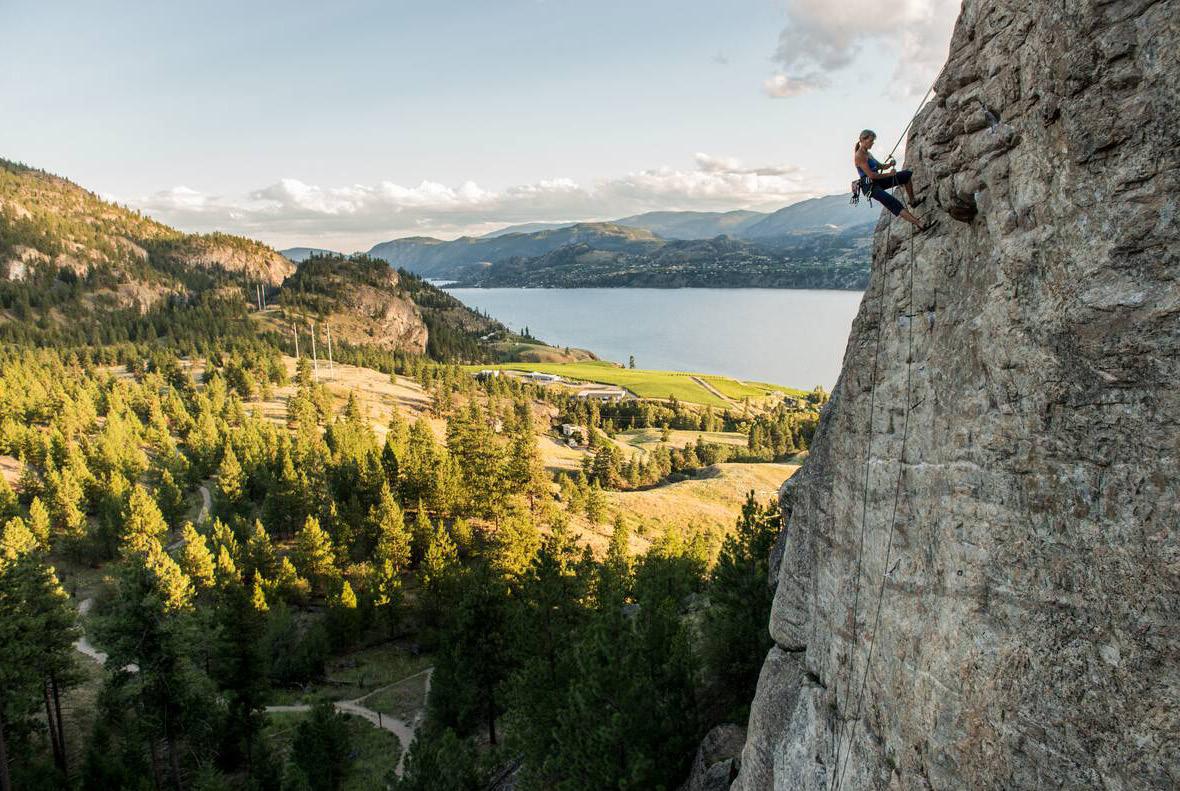

Some of the businesses in the Thompson Okanagan that offer access to the backcountry in the winter and summer include Mike Wigley Heli Tours, CMH Cariboo Lodge, Wells Gray Adventure Tours, Dave Henry Lodge, and Snowy Mountain Lodge, amongst others.
OT: Are there any interesting projects in the pipeline you wish to highlight?
EWM: We are working on several projects. Firstly, community engagement on low-carbon valley-wide transportation, funded by the Economic Trust of the Southern Interior (ETSI-BC), will help us to better understand resident and visitor sentiment around intercommunity transportation options.
We are also continuing the development of a BC Rail Trail corridor that connects numerous communities throughout the Thompson Okanagan, from Osoyoos in the south to Sicamous in the north. This trail system is made up of three distinct Rail Trail networks – the Kettle Valley Rail Trail, the Okanagan Rail Trail, and the North Okanagan/Shuswap Rail Trail.
Furthermore, we are reinventing the Thompson Okanagan Tourism Inspiration Centre with the help of Clean BC funding to remodel the centre to a net zero standard and include better resources to tell the regional sustainability story.
Alongside this, the Adra Tunnel, an historic rail tunnel along the Kettle Valley Rail Trail, is reopening over three decades after it closed due to extensive damage. Many years ago, community volunteers, local businesses and
government, and TOTA came together to attain the capital to clear out and reconstruct the tunnel to a safe standard for reopening.
Finally, numerous large-scale tourism investments are entering the region, including the announcement of the opening of a Ritz Carlton at Predator Ridge and the construction of a prestigious gondola project south of Vernon.
OT: What advice do you have for visitors to the Thompson Okanagan on how to travel more sustainably?
EWM: Visitors are encouraged to seek out and enjoy the environmentally friendly activities available in the region.
Visit Penticton has created the ‘Fuel Free… Almost’ initiative that can be applied in the city, and we encourage visitors to try to use this fuel-free mentality within the rest of the region as well.
More adventurous travellers may see the valley views through the BC Rail Trail on their bike, e-bike, or on foot.
An increasing number of fuel-free rental alternatives are available to visitors, with many offering tips and tricks about self-guided tours around the region.
Local food and beverage producers also focus on sustainable agriculture and utilising local ingredients.
Travelling mindfully starts with planning which can result in a more sustainable visit to the region. Visitors can research accommodations, restaurants, activities, and other tourism businesses committed to sustainability by visiting the Biosphere Sustainable Lifestyle Platform or community sustainability webpages.
OT: What trends are transforming the tourism industry in the region, and how are you utilising them?
EWM: Mindful Travel is a growing trend focusing on travelling sustainably and protecting the existing and future landscape of the region. We encourage visitors to travel mindfully with the 7 Generations Pledge and underlying sustainable messaging across all content. There is also increasing demand for environmentallyfriendly tourism options, with search engines and booking channels highlighting sustainable businesses. This changing sentiment amongst travellers offers tourism businesses a unique opportunity to measure and verify themselves as a sustainable option while differentiating from their competitors.
OT: What challenges does the tourism industry in the Thompson Okanagan face? Is it difficult to ensure that visitors are practising ecotourism?
EWM: The Thompson Okanagan faces many of the same challenges as the worldwide tourism industry. Climate change is a risk to all, and we know that travellers consider the changes observed in our seasons when planning their trips.
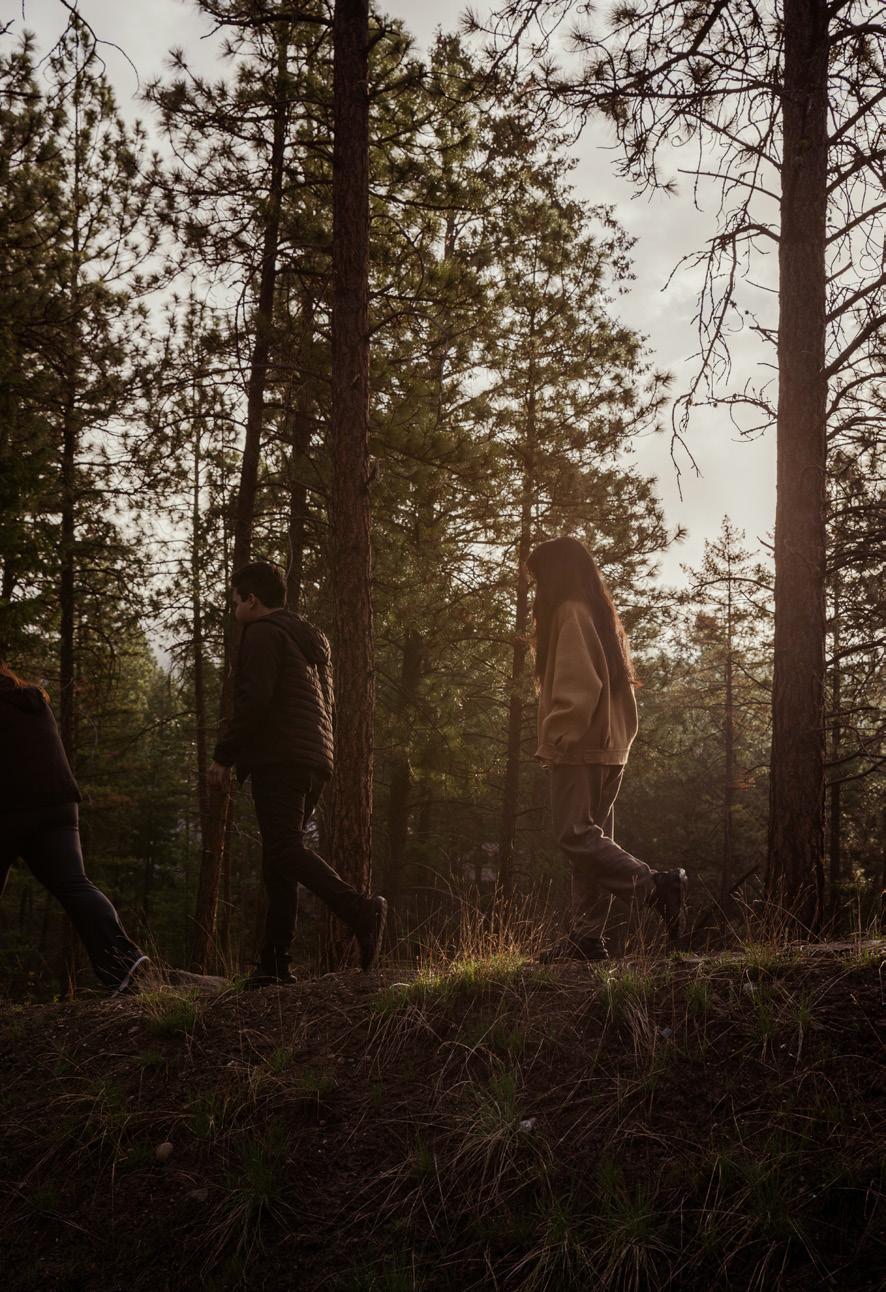
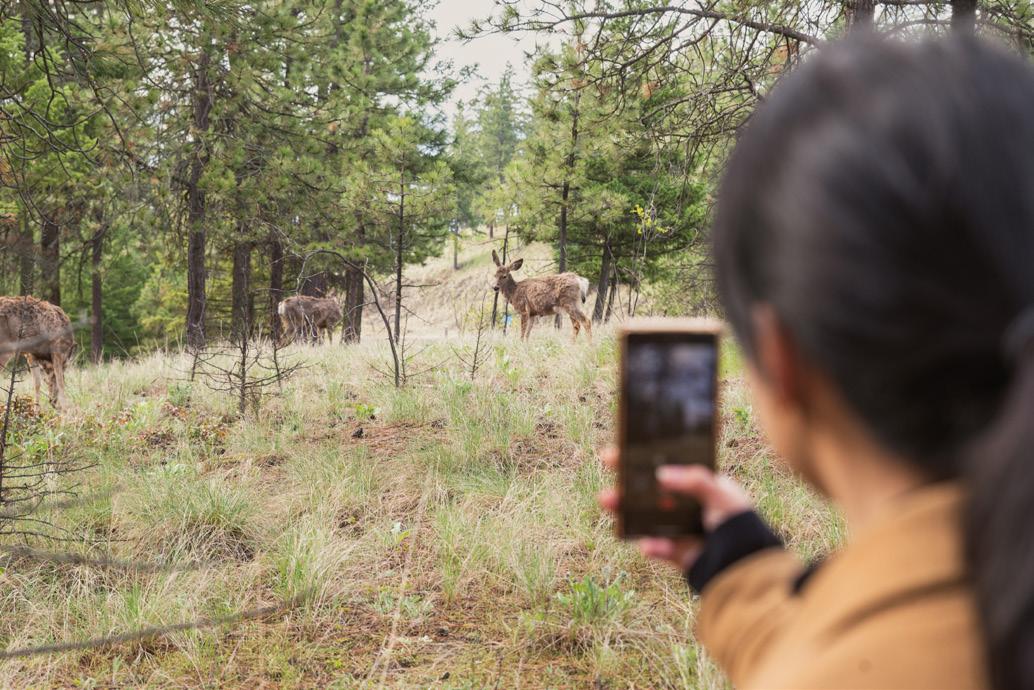
The changes in environmental patterns throughout the region have encouraged sectors like the wine industry to look inward and work together to find solutions to evolve their farming practices with the more extreme temperatures throughout the year. Seasonal and geographical dispersion is also a top priority for TOTA and the province of BC to avoid overtourism. As a result, businesses throughout the region can remain open year-round.
It isn’t easy to track whether tourists are completely practising ecotourism, but we hope that our constant effort to encourage mindful travel throughout the region will result in increasing uptake in ecotourism year on year.
OT: Are you optimistic about the future of the tourism industry in the Thompson Okanagan?
EWM: Travellers are demanding more sustainable practices within the tourism industry, and the provincial and federal governments are mandating reforms that will make it easier for businesses to adopt such practices, including a ban on single-use plastics and the end of fossil-fuelled small vehicle sales by 2035.
The global tourism industry has shared the movement towards climate action, as realised by the Glasgow Declaration and its many signatories. As we work together in the tourism industry to support sustainable efforts and find innovative ways to continue implementing said practices across businesses, we are optimistic that this is only the beginning of the region’s efforts and accomplishments.

Ph.
www.totabc.org
www.thompsonokanagan.com

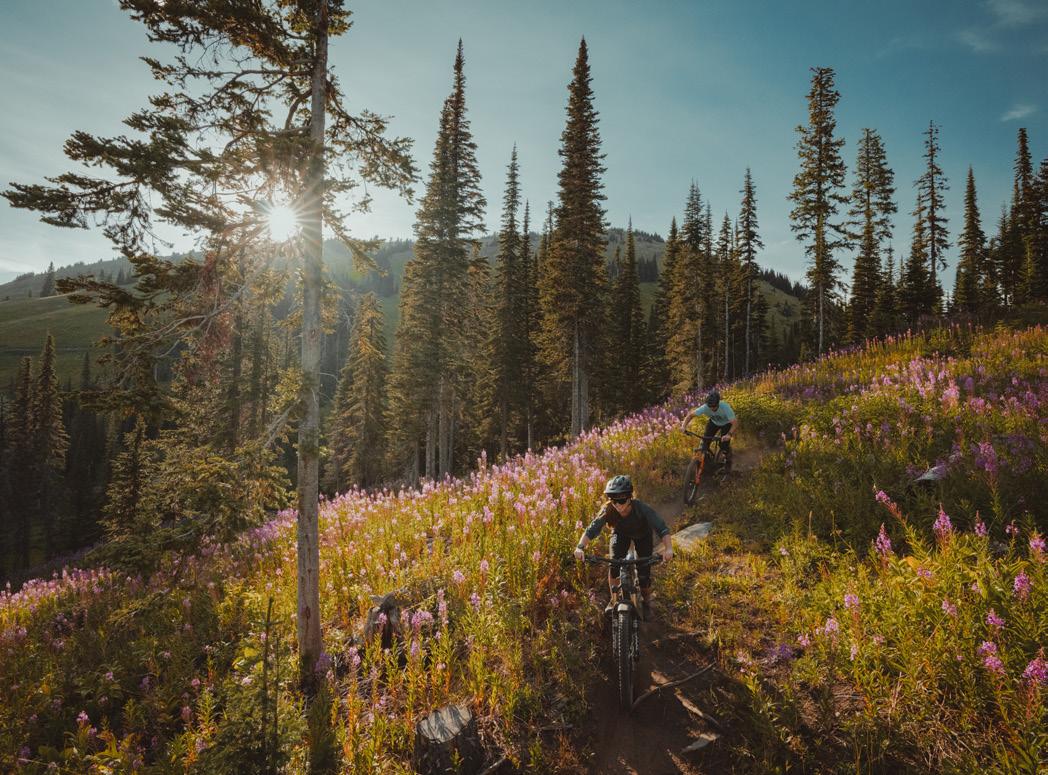
In the heart of the Thompson Okanagan at an elevation of 1,200 metres above sea level, Sun Peaks is a picturesque destination located just 45 minutes from Kamloops. Serving as the perfect stop between Jasper and Whistler, this resort community stands proud as Canada’s second-largest ski area and offers an equally engaging summer experience. Renowned for its sunny climate, Sun Peaks boasts a wide variety of outdoor adventure activities and casual vibrancy. Visitors are treated to breathtaking alpine scenery and spectacular wildflowers, providing a rejuvenating escape into nature.
Sun Peaks is a sanctuary for adventure enthusiasts year-round. The resort features three majestic mountains—Sundance, Tod, and Morrisey—where one can relax in the sunlight while exploring various adventures. Celebrating its 25th anniversary of lift-access mountain biking, the Bike Park at Sun Peaks offers an extensive network of trails across Tod and Sundance. With over 40 trails spanning 85 kilometres (km), there is something for everyone, from beginners to professional riders. The resort provides camps, lessons, and guided
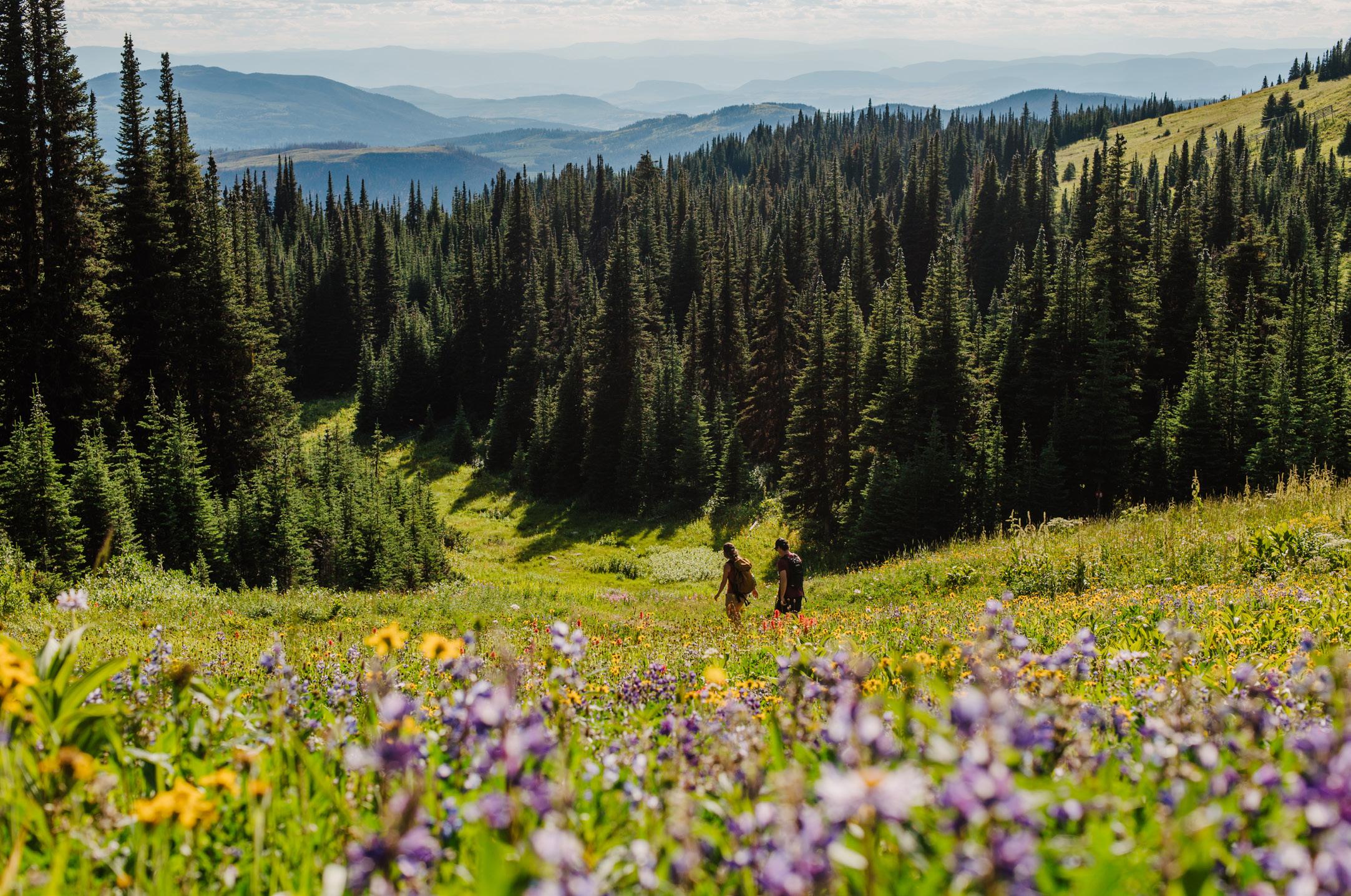
tours to ensure a comprehensive and progressive experience for all skill levels. The free pedal-access network on Mt. Morrisey has grown in recent years and is not to be missed, thanks to the dedicated work of Sun Peaks Recreational Trail Association.

With 17 designated hiking trails, Sun Peaks is a paradise for hikers. From the village or taking the Sunburst chairlift to a mid-mountain hike 6,000 feet above sea level, hikers can immerse themselves in stunning wildflower meadows and 360-degree mountaintop views. The breathtaking vistas and refreshing mountain air offer an unparalleled hiking experience. While at mid-mountain, visitors can relax at the Sunburst Bar + Eatery, enjoying delicious food and beverages while taking in the panoramic views. The convenience of the chairlift makes descending as effortless as the ascent.


Golfers will find Sun Peaks equally captivating. The resort’s 18-hole, par 72 Graham Cooke-designed course winds its way through natural greenness in the valley and offers terrific mountain views. This 6,400-yard course provides a fun and rewarding experience for golfers of all skill levels.
Sun Peaks offers a wide variety of activities for both outdoor and indoor enthusiasts. There’s something for everyone, from alpine yoga to rejuvenation in the fresh mountain air to axe throwing that awakens the Viking spirit within. Community playgrounds and outdoor game areas welcome both visitors and locals. Additional activities include disc golfing, fly fishing, geocaching, horseback trail rides, and more. A new public pool, still under construction, promises even more excitement soon.


Beyond sports and adventures, Sun Peaks embraces an active mountain lifestyle and vibrant community atmosphere. Live music performances against stunning mountain backdrops and market days offer opportunities to connect with the region’s culture. Visitors can enjoy locally sourced and authentic products, making every visit a unique experience.
Sun Peaks stands ready to deliver an unforgettable experience, inviting you to explore its vast and diverse landscape. This resort is not just a destination but a journey into the heart of nature and adventure, promising memories that will last a lifetime.





FOR SAVOURING FLAVOURS...
Upper Bench Winery & Creamery is passionate about minimalist winemaking and hand-crafted, textured cheese. On a 9.5-acre estate, award-winning bold red and crisp dry white wines await tasting in an intimate space. Vineyards surround the covered patio and can accommodate up to eight people. The Oven Restaurant serves handmade Neapolitan-style pizza cooked in a custom-made Forno Bravo oven, whilst artisanal cheeses are available to take home from the shop and are purposefully crafted from locally-sourced Canadian cow’s milk to pair with the wines.
FOR SEEING NATURAL WONDERS...
The Okanagan Rail Trail is an intermittent journey consisting of several different routes. Options include the shores of Kalamalka or Wood Lake and vibrant urban sections in Kelowna. Regardless of where the trail takes you, it will be an experience. Walking, dogs on leashes, cycling, rollerblading, and push scooters are all permitted, as well as regulated electric or motor-assisted bikes.
FOR NURTURING THE SPIRIT...
Nestled on top of a granite ridge overlooking Okanagan Lake is the Sparkling Hills Resort. The wellness retreat is a European health spa boasting a cryo cold chamber, which involves spending up to three minutes in a room set at minus 110 degrees Celsius, consequently improving the nervous and circulatory systems. In addition to offering the usual spa treatments, Sparkling Hills Resort has fine dining and plush rooms and suites.
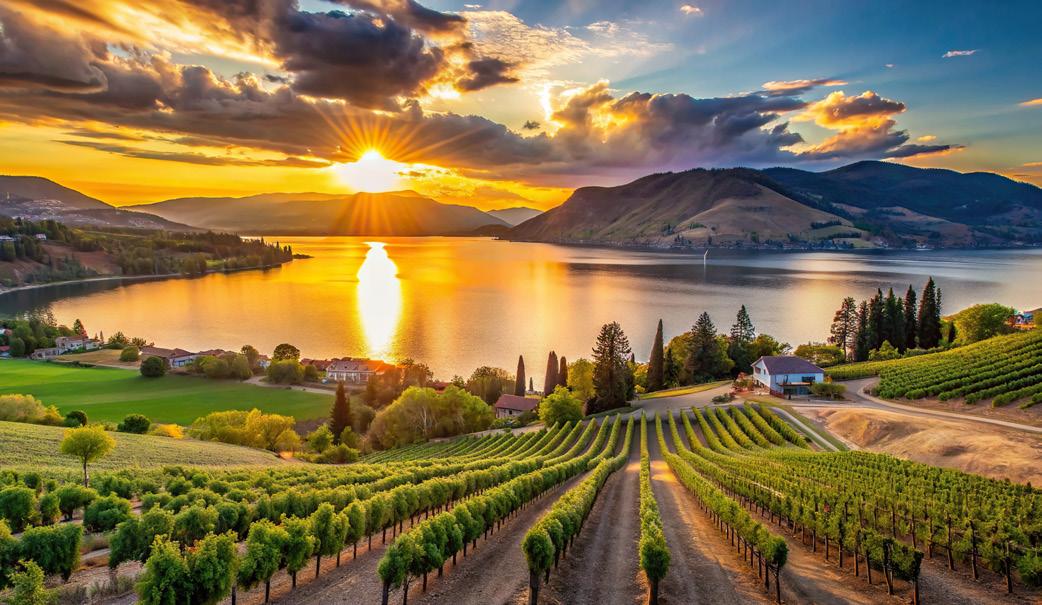

FOR AN ALPINE STAY...
Sun Peaks is the ultimate accommodation, offering an all-round experience with activities ranging from Nordic skiing, biking, and hiking to golf and a spa. There is plenty to keep families occupied, including outdoor live music, whether it’s summer or winter. A seemingly endless array of cafés, diners, restaurants, and bars ensure that guests are well-nourished after a day on the mountain or shopping in the many on-site stores. Lodging at Sun Peaks comes in the shape of village centre hotels, vacation homes and condominiums, or RVs and camping. The resort is truly the whole package for a mountain resort stay.
FOR SOMETHING COMPLETELY DIFFERENT...
Greenwood, Canada’s smallest community, was once a thriving mining town in the 1800s. The city invites visitors to stay in its roadside Boundary Creek Motel and learn about its history as a 1940s internment camp for over 1,000 displaced Japanese people. It may be small, but it is mighty with the peaceful Jewel Lake, hiking and biking trails, Jubilee Mountain with breathtaking views of the forested valley below, and the Greenwood Museum.
BC IS HOME to 204 Indigenous communities and more than 30 Indigenous languages; therefore, it is essential to acknowledge that the Thompson Okanagan region is situated on the traditional territory of three Interior Salish nations: the Sylix, Nlaka’pamux, and Secwépemc peoples. Visitors are invited to seek first-hand experiences and educate themselves about the living Indigenous culture in the region while respecting local Indigenous stewardship and governance.
Way’ is a Nsyilxcen salutation pronounced as ‘white’ without the ‘t’ – learn more and explore and experience the lands, legends, and people at the state-of-the-art interpretive Nk’Mip Desert Cultural Centre in Osoyoos. The Nk’Mip Cultural Centre offers visitors a chance to experience an indoor and outdoor interactive learning environment. There are wildlife and desert ecology displays to discover, as well as a reconstructed village of the living culture of the First Nations Okanagan people. The stewards protecting the 1,600-acre desert conservation area – one of Canada’s most endangered places – is the Osoyoos Indian Band.
Sncewips Heritage Museum is an Indigenous-owned and operated business in the Okanagan Lake Shopping Centre. Its tangible objects and imparted knowledge hold cultural significance, and the events, workshops, and limited-time exhibits are truly eye-opening. The museum offers both guided and self-guided tours, whilst a community care tour takes place entirely outdoors. Furthermore, lucky visitors may even have the opportunity to hear a story inside the pit house.
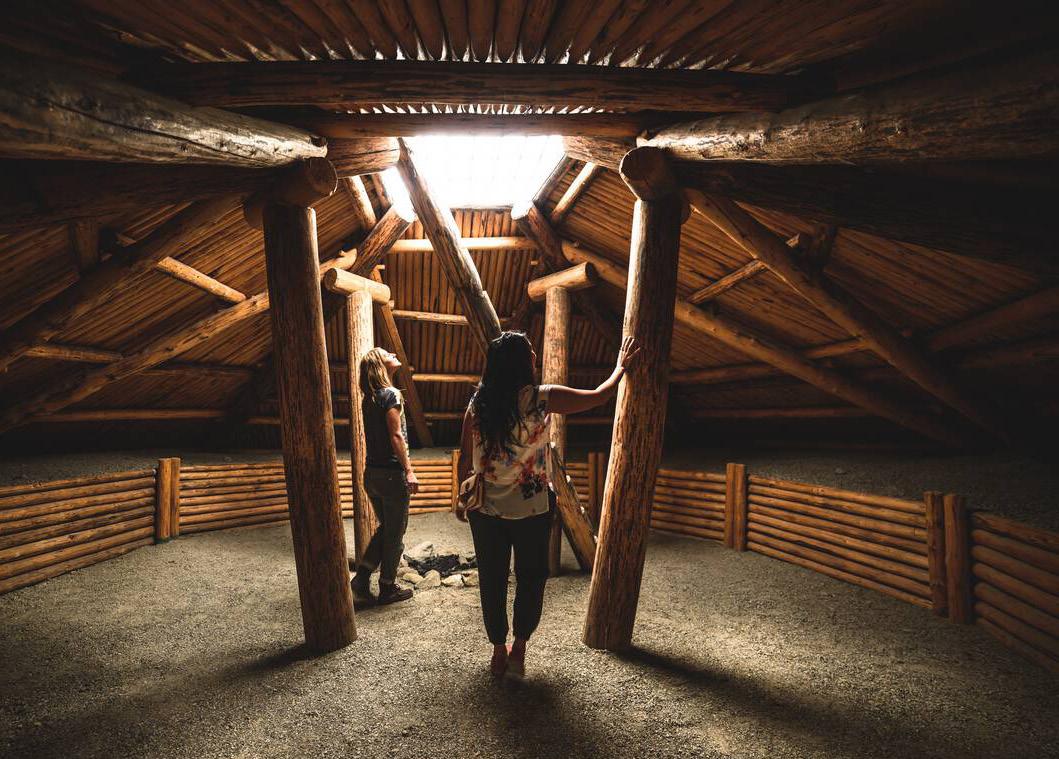

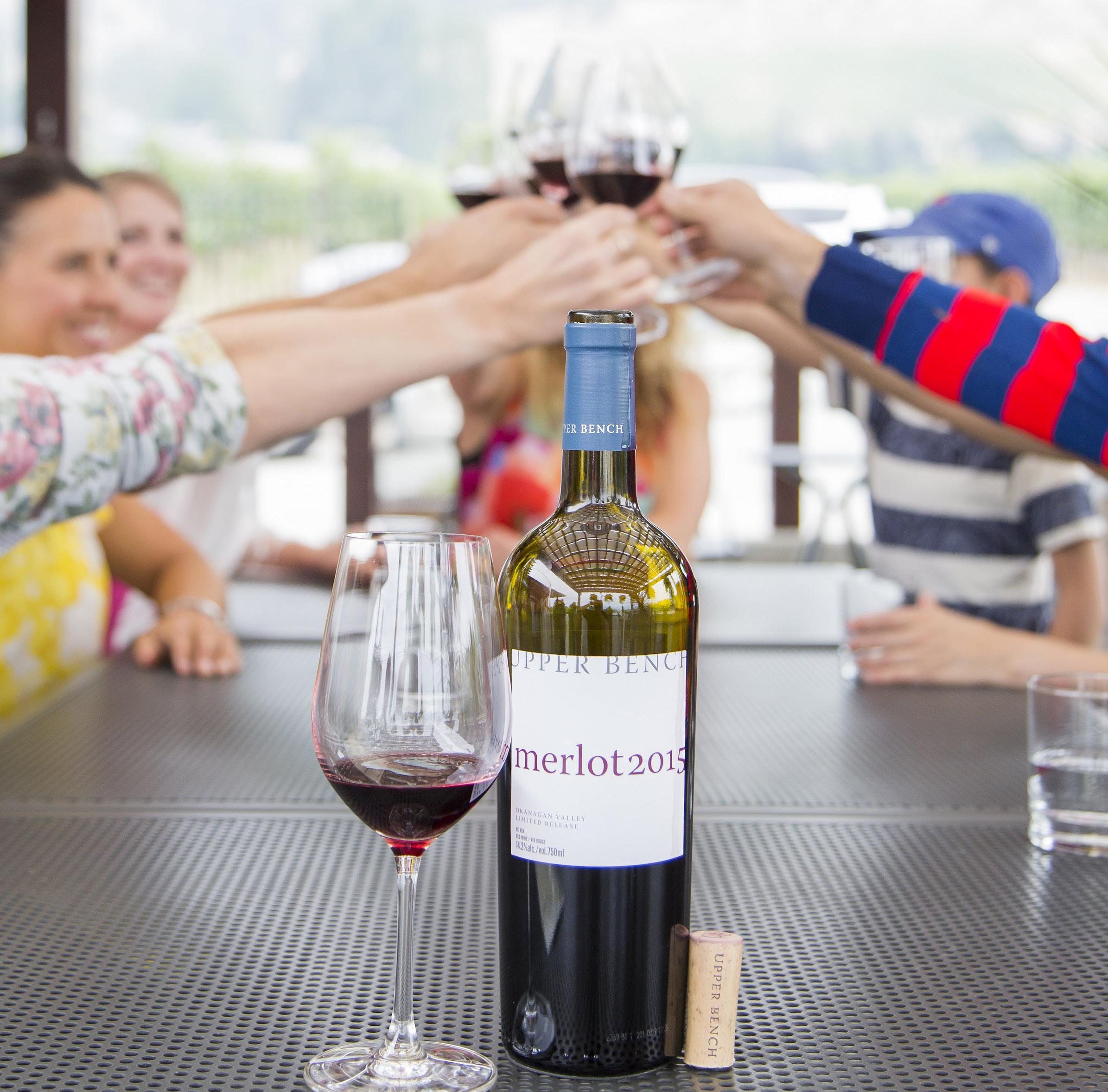

Upper Bench Winery & Creamery (Upper Bench) stands as a testament to the art of fine winemaking and artisanal cheese crafting, nestled along the picturesque eastern shores of Okanagan Lake. Situated in the renowned Naramata Bench, a sub-geographical indicator within the larger Okanagan Valley wine region, Upper Bench benefits from an exceptional terroir that imparts a unique character to its products. With an average of approximately
1,350 growing degree days, this region is ideal for grape cultivation, offering a harmonious blend of climate, soil, and topography that enhances the quality of both wine and cheese.
The Naramata Bench is distinguished by its unique soils, primarily consisting of organic matter, such as rich topsoils formed by the ancient lake sediments. At higher elevations and on steeper slopes, gravelly soils add complexity to the vineyard landscape. These
conditions, coupled with long frostfree periods due to the moderating influence of Okanagan Lake and the area’s sloping aspect, create a perfect environment for growing a diverse range of grape varieties. At Upper Bench, we meticulously handcraft our wines to reflect the distinctive terroir of the Naramata Bench. Our winery has garnered acclaim for producing awardwinning wines that capture the essence of this remarkable region. From robust reds to crisp whites,

each bottle is a testament to our commitment to quality and excellence. Our wines are carefully paired with our own hand-crafted, artisanal cheeses, creating a harmonious experience for the palate.
Our cheese offerings include a delightful array of washed, bloomy, and natural rinds, as well as lactic and blue cheeses. One standout creation is the Okanagan Sun, a silky, aromatic, soft, washed-rind cheese with a smooth, intense flavor. As it ages, Okanagan Sun’s color deepens, transforming from pale orange to a bright, darker orange rind, reflecting the ongoing growth of cultures within. Another favorite is the Grey Baby blue cheese, a smooth and silky surfaceripened blue with a creamy texture and occasional veining, offering a luscious, lingering mushroom flavor. The latest creation to come out of the creamery is a line of grating
cheese - Pucks! Fresh curd infused with salt & garlic and rolled in Pepper, Herbs de Provence or Paprika, then aged to perfection. These shelfstable little balls are ideal for grating on everything. Eggs, soups, salads, roasted veg, pasta, and popcorn - this is every cooks kitchen helper, you will want to collect all three!
The team at Upper Bench is a dedicated group of passionate individuals who bring their expertise and enthusiasm to every aspect of our operations. Our owners, Shana and Gavin Miller, have combined their skills and vision to create a destination that celebrates the best of the Naramata Bench. Shana, an acclaimed cheesemaker, brings her artistry and precision to our creamery, while Gavin, a seasoned winemaker, infuses each bottle with his deep understanding of viticulture and winemaking. Our staff members share this passion, ensuring that every visitor to Upper Bench experiences the warmth and hospitality that define our winery and creamery. Whether you are exploring our vineyard, sampling our wines and cheeses, or simply enjoying the stunning views from our patio, you will find a welcoming and knowledgeable team ready to enhance your visit.
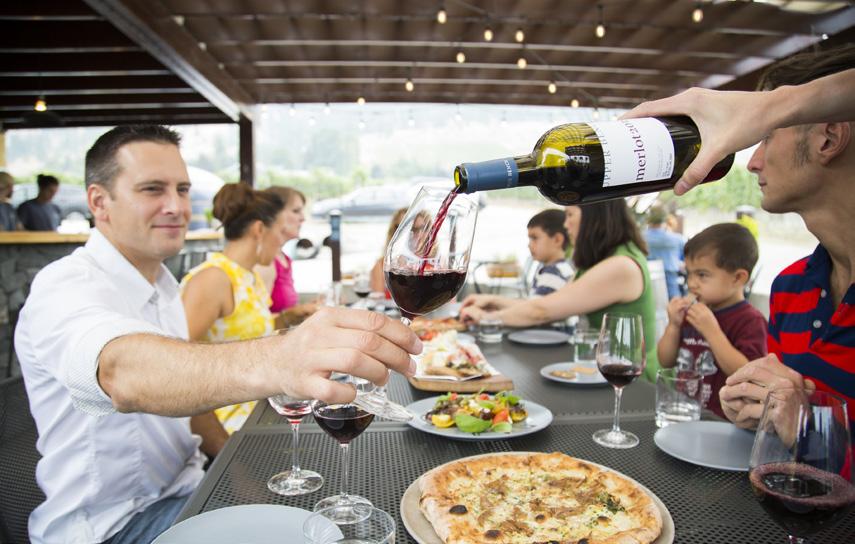
The patio at Upper Bench offers a perfect setting to savor our products while taking in the breathtaking scenery of the Naramata Bench. Overlooking the rolling vineyards and the serene expanse of Okanagan Lake, our patio is an inviting space to relax and enjoy a leisurely afternoon. Pair our awardwinning wines with our artisanal cheeses for a delightful culinary experience that showcases the best of what Upper Bench has to offer. Upper Bench Winery & Creamery is dedicated to providing highquality products
Upper Bench is proud to be the home of Canada’s only club that produces both wine and cheese. Our exclusive club offers members access to special occasion cheese towers, bespoke cheeses, and limited-edition wines crafted exclusively for our esteemed patrons. Membership ensures a continuous supply of our finest products, delivered with the utmost care and attention to quality.
Our commitment to quality extends beyond our products to our operations. As a Canadian Food Inspection Agency (CFIA) registered creamery, we use locally sourced, 100 percent pasteurized Canadian cow’s milk. All our cheeses are gluten and additive-free, and we uphold the highest safety standards by maintaining our Safe Food for Canadians License. Our cheeses are crafted onsite and shipped safely anywhere in Canada, with wholesale orders available for those who wish to share our artisanal creations with a broader audience.
at affordable prices, making it accessible for everyone to enjoy the fruits of our labor. We are open daily, welcoming visitors to explore our offerings and discover the passion and craftsmanship that go into every bottle and every wheel of cheese.
In summary, Upper Bench Winery & Creamery is more than just a place; it is an experience that celebrates the rich terroir of the Naramata Bench. From our award-winning wines and artisanal cheeses to our exclusive club and welcoming staff, every aspect of Upper Bench is designed to offer a memorable and delicious journey. Visit us and discover why Upper Bench Winery & Creamery is a true jewel of the Naramata Bench, where quality, passion, and craftsmanship come together to create something truly special.


53 million years ago, during the Eocene Epoch, the McAbee Fossil Beds were deposited in a lake just west of Kamloops. Today, it is a world-class heritage site known for its spectacular record of biodiversity and ecosystems from a much warmer climate phase. As the most diverse fossil beds in Canada, it has exceptionally well-preserved insect and plant remains and an abundance of fish, bird, and spider fossils.
As the most prominent peak in North America’s Rocky Mountain range, Mount Robson is also the highest point in Canada. A popular destination for intermediary or advanced climbers, the ultimate mountaineering objective is a guided five-day trek to the summit. The Robson Massif creates its own climates, and people come from all over to attempt its icy flanks. Crucially, Mount Robson Park offers more accessible trails and backcountry areas with equally stunning scenery.

Okanagan Lake is ideal for recreational activities. Its beautiful blue and turquoise-green colours are caused by ‘marling’ due to a high calcium concentration. For swimming, there is a featured beach area; alternatively, kayaks, canoes, or boat charters are available.
THE THOMPSON OKANAGAN region has three airports: Kelowna International Airport, Kamloops Airport, and Penticton Airport. The former is the largest, offering domestic and limited international flights.
Direct routes to the region from many countries are limited, however, with most flights requiring one or two stops.
Hiring a car is convenient for travelling between Kelowna, Vernon, and Osoyoos. Each city has a small downtown area easily explored on foot, by bike, or using the BC Transit bus network. A road trip is a fun
and scenic way of making travel an immersive experience, and since the Thompson Okanagan region is filled with wonder, it becomes more about the journey than the destination, with Highways 1, 3, 5, and 97 the key routes.
Biking along the Kettle Valley Rail Trail, starting at the famous Myra Canyon in Kelowna, will take travellers to Penticton, providing opportunities to enjoy wildlife and valley vistas. Alternatively, consider renting an electric vehicle (EV) for an ecofriendly road trip. Many businesses now offer charging stations in the area; Kelowna also has a fully electric Tesla taxi fleet for shorter journeys.


Seamlessly weaving together historical and cutting-edge modernity, Guadalajara –Mexico’s cultural epicentre –promises an array of thrilling and captivating experiences, with alluring hacienda façades and enthralling iconic traditions enticing travellers to the land of food and fiesta
WRITER: RACHEL CARR
PROJECT MANAGER: KRISHA CANLAS
• Guadalajara comes from Moorish Arabic and translates to ‘Valley of the Stones’ or ‘Fortress Valley’.
• Some notable sons and daughters of Guadalajara include Academy Award and BAFTA-winning filmmaker Guillermo del Toro, Formula 1’s Sergio Pérez, and professional boxer Saul Canelo Álvarez.
• Guadalajara is known for its traditional handicrafts, and visitors can find a variety of beautifully crafted items, such as pottery, textiles, and leather goods from skilled artisans.
• The iconic sombrero, the traditional hat that has become a worldwide symbol of Mexican culture, is thought to have originated in Guadalajara.
• Guadalajara is surrounded by natural beauty, including Lake Chapala, the Tequila Volcano, and the Sierra Madre Occidental Pine-Oak Forests ecoregion.
• Guadalajara has a strong sense of community, and locals are known as tapatíos.
As a leading cultural and economic force in Latin America, Mexico is a land of contrasts. From its mountainous highlands that descend to beachladen lowlands and its dense rainforest canopies that transition into sweeping desert landscapes, you will find nestled in the Atemajac Valley, Jalisco.
A subtropical city with a rich history dating back to its founding in 1531 by a Basque conquistador, Guadalajara is a testament to resilience and cultural diversity. Today, it is a hub of joyous citizens and a riot of colours saturating its streets during various festivals, igniting a sense of excitement and celebration.
The city’s cultural calendar is brimming with highly anticipated events, from the 2026 FIFA World Cup at the Akron stadium to the annual Guadalajara International Film Festival (FICG) and the eagerly awaited return of Guadalajara Pride, commemorated with a march from La Minerva statue to Hospicio Cabañas. The city also hosts the Guadalajara International Book Fair (FIL), an important publishing event for professionals and the general public alike.
Beyond its vibrant festivals, Guadalajara is a treasure trove of natural and architectural wonders such as the must-see majestic Basilica of Zapopan, alongside the neoclassical Teatro Degollado with diverse performances in live theatre, opera, and dance, and the Museum of the Arts University (MUSA), which boasts a wide range of art exhibitions and permanent collections. Just a short distance from the city, the fascinating and distinctive archaeological site of Guachimontones awaits, one of the only ancient ruins in the world with structures built in near-perfect concentric circles, including a vast conical step pyramid. These marvels are sure to inspire awe and wonder in every visitor.
Guadalajara is also a haven for artists, boasting murals and frescoes by José Clemente Orozco that can be found at Hospicio Cabañas, which was originally a children’s hospice and is now a museum and a UNESCO World Heritage Site. Orozco collaborated with Diego Rivera, David Alfaro Siqueiros, and other artists in the renowned Mexican muralist movement.
Discover the dynamism of Guadalajara, Mexico’s second city, where charming customs harmoniously meet innovation. Let yourself be enticed by the rich tapestry of Mexican heritage, culture, and progress as tantalising aromas, enchanting music, and unforgettable memories await.
DEDICATED TO PROMOTING tourism and business travel, the Guadalajara Convention and Visitors Bureau (CVB) plays a crucial role in boosting the city’s economy by providing various resources and services for tourists and business travellers. The CVB is tasked with hosting, organising, and funding events, conventions, and congresses. Indeed, founded in 1970, it was the first in Latin America to engage in the procurement of congresses and conventions.
Outlook Travel (OT): How does the CVB engage with the city’s tourism sector and what particular areas would you recommend to visitors?
Gustavo Staufert Buclon, CEO (GSB): The bureau is made up of different segments, the first two of which are the meetings, incentives, conferences, and exhibitions (MICE) business. Regarding MICE, we work with pharmaceutical and medical congresses, trade shows, and exhibitions, alongside the IT sector, which is very important for Guadalajara since the city is known as the ‘Silicon Valley’ of Latin America. Moreover, FIL is held here, which is the second-largest in size only to the Frankfurt Book Fair and caters to other languages. As an exhibition destination, we must, therefore, have a good relationship with our supply chain to host the different congresses.
Sports are essential for Guadalajara because it was the venue for the XVI

GUSTAVO STAUFERT BUCLON, CEO
CEO, Gustavo Staufert Buclon introduces us to
the multiple facets of the beguiling city and reveals its plans for sustainability and festivities
Pan American Games in 2011. As such, we have developed many sports competitions with the infrastructure. Guadalajara is also one of the few cities that will become the host of the FIFA World Cup in 2026 for the third
time, providing a venue for the event. Additionally, we belong to the BestCities Global Alliance, a collaboration of 13 premier convention bureaus that creates a positive impact through business events.
Furthermore, we were awarded by World Physiotherapy and the International Conference on Robotics and Automation (ICRA), which is also taking place in Guadalajara. Moreover, last year, we won the world’s secondlargest medical congress, the World Congress of Dermatology, which was held in Singapore in November last year and will take place in 2027 in Guadalajara.
OT: How do you market Guadalajara’s history and culture while promoting its position as the “Silicon Valley of Mexico”?
GSB: We like to say that Guadalajara is traditionally modern because it has two different ends of the rope. It began as a public policy in the 1970s, which encouraged companies such as Kodak and Motorola to settle here, followed by IBM and HewlettPackard. The dimensions and size of organisations are vital to Guadalajara, as more prominent companies such as Flex, Continental Automotive, Sanmina Corporation, and Benchmark Electronics are all large enough to contain many micro-entities related to IT. With that in mind, a Ministry of Innovation was developed to utilise the expertise of these organisations to

create programmes for the country’s engineering universities. By running these programmes, each company is showing its commitment to society, as every engineer who graduates from the scheme immediately has a job in one of the respective IT businesses. Having developed this initiative over the last 50 years, the Ministry of Innovation can forecast which conventions or congresses should be interesting for the industry. Occasionally, we relate the initiative with other sectors. For example, when the International Society for the Performing Arts (ISPA) came to
Guadalajara, it worked with our IT companies to develop digital arts. This often happens when different conferences interact.
OT: Are there any upcoming projects or investments that you feel are significant and would like to highlight?
GSB: In order to cater to over 20 million passengers, Guadalajara International Airport (GDL) is currently in the middle of an essential expansion, including the development of new routes. In 2026, we’ll have about 26 million passengers, and in 2030, we’ll
be able to host 32 million people, making the airport our most important investment. Two years ago, we opened a direct flight to Madrid, Spain, which was very successful, seeing a 90 percent occupancy rate. We have also inaugurated direct flights to Vancouver, and in July, we’ll be able to offer a direct flight to Toronto.
Possessing the second-largest airport in the country, Guadalajara has the most significant number of routes. Regarding international passengers, we are third behind Mexico City and Cancun, and for national passengers, we are once again just behind the
capital city. However, now that the airport in Mexico City is narrowing and GDL is in the middle of the expansion, we think these numbers might change shortly; that kind of mobility is important, along with all the nearshoring and expectations it brings.
OT: Why, in your opinion, should someone visit Guadalajara? What defines the city, and what types of travellers does it appeal to?
GSB: The city appeals to those who seek tradition and modernity simultaneously. Our traditions are robust and involve Mexican icons that are known around the world. Tequila is the second most familiar aspect of the country, and yet, it is not only a beverage but also a town around 40 minutes away from Guadalajara, where you will see the great expanse of agave-filled fields that are UNESCO World Heritage Sites on the way. Additionally, you also have the mariachi band, born in Jalisco; we have the International Mariachi Festival every year, occurring from the last week of August to the first week of September, as mariachis come here to specialise and compete. The event is vital to the Expo Guadalajara convention centre and the promotion of the city in different countries. For example, there are mariachis across Japan in Tokyo and Osaka, who we hire for their singing ability. Therefore, people travel from across the world to Guadalajara to visit the International Mariachi Festival.
Travellers can also visit the ancient towns and haciendas where it feels like time has stopped, and they can see precisely how Guadalajara was 500 years ago. One such experience is Charrería, showcasing the Mexican Charro, a cowboy from Guadalajara who demonstrates the artistry and primal poetry of the sport, which features horse-riding competitions and traditional, elegant attire. Similar to the whole of Mexico,

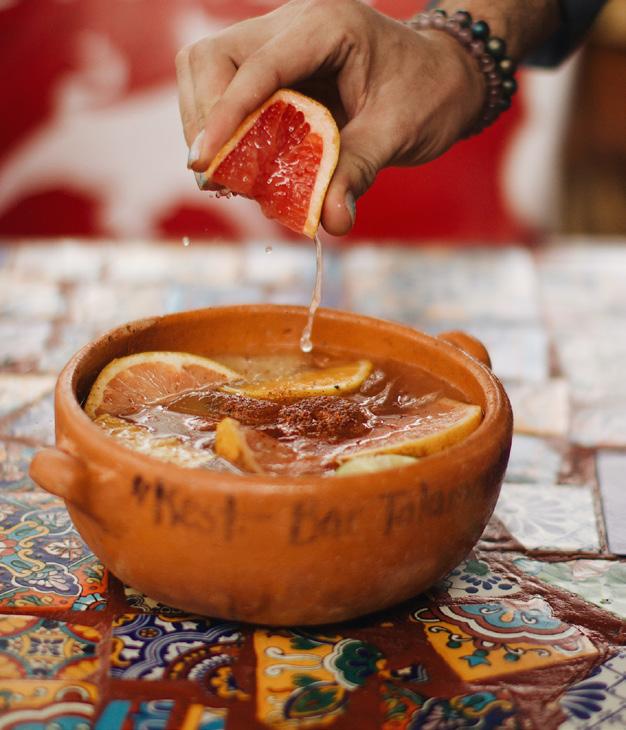

Guadalajara is full of festivities; it is a colourful city that is part of a colourful country. These thrilling events have made us famous in the world of congresses, as has Guadalajara’s cuisine, which is abundant with flavour and crucial to the city’s identity. We are almost three hours from Puerto Vallarta, which has the most famous beaches in Jalisco and possesses a range of luxury hotels for visitors, including the Four Seasons Resort and many other all-inclusive hotels. Puerto Vallarta is unlike Cancun and often described as a Mexican all-flavour town, which is very appealing.
OT: What are some of the city’s most unique historical landmarks?
GSB: Fascinatingly, Guadalajara had to be founded four times! Unlike many parts of Mexico, which already had an original city, Guadalajara was built from the ground up. However, since there were many nomadic tribes at war, deciding where to establish the town often changed until Valentine’s Day of 1542, when they decided to remain where we are now. Upon its initial founding, there was great debate about whether to colonise the city. Eventually, Beatriz Hernández established the city after confronting the male-dominated colonisers,
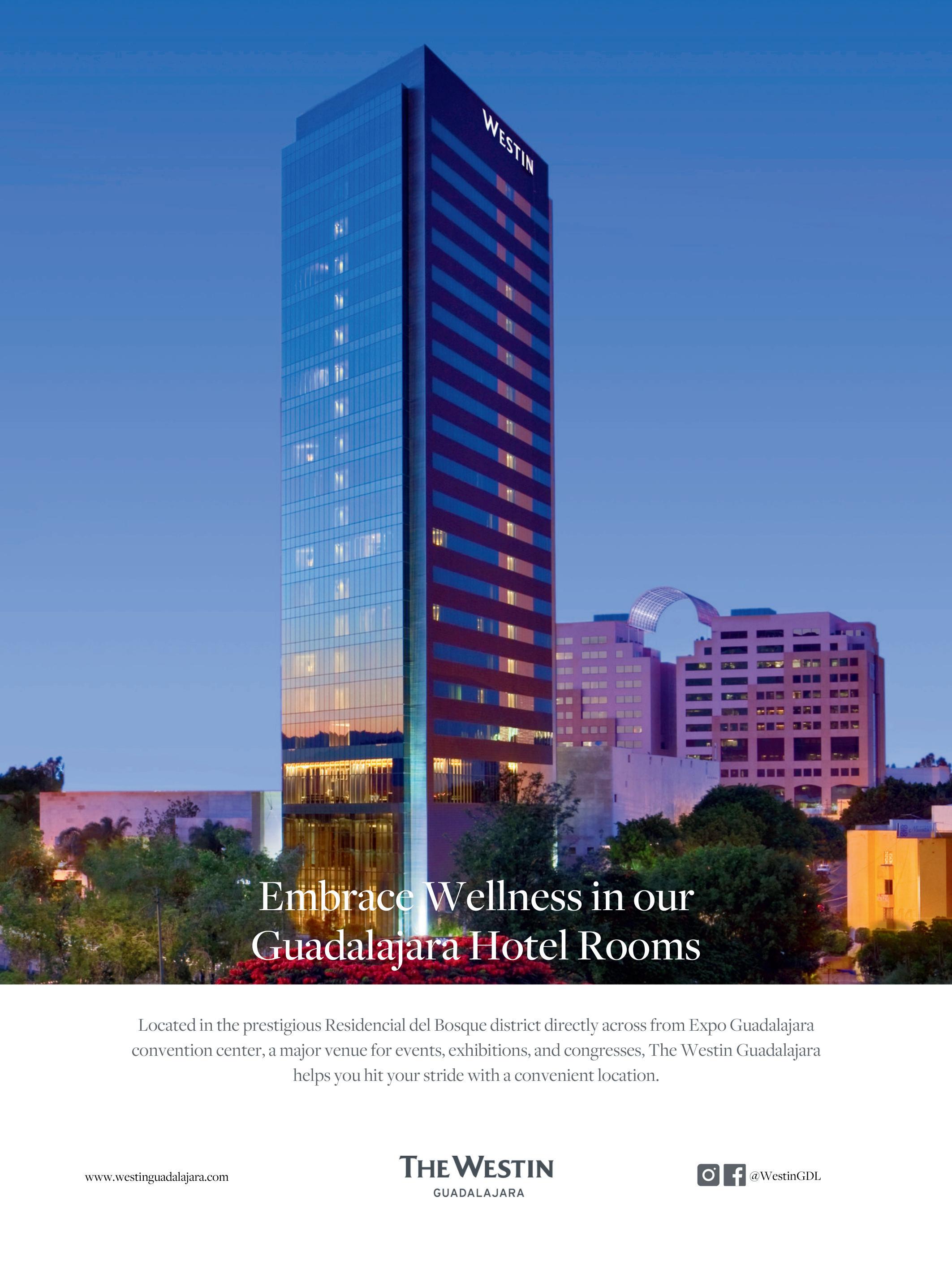
proclaiming that the spot should be their final location and women should also be able to build the settlement. Therefore, I always encourage feminist groups to demonstrate next to her statue because she deserves to be a role model for every woman in the world.
OT: The city has some notable talent and a prominent lesbian, gay, bisexual, transgender, intersex, and queer (LGBTIQ+) community. Would you say these factors are part of Guadalajara’s legacy for future generations?
GSB: The whole state is crucial for the LGBTIQ+ community. The city wanted to follow the example set by Puerto Vallarta, which established a policy long ago. Therefore, to boost the gay community, I visited John Tanzella, the President of the LGBTIQ+ Travel Association (IGLTA) and asked him for advice on how I could sincerely

develop Guadalajara’s LGBTIQ+ community. He told me about the Gay Games, a worldwide sporting event that promotes diversity, which subsequently took place in Guadalajara last year. Additionally, we have previously hosted InterPride – an
international organisation that brings together the global Pride network. I am ecstatic about the fact that the people of our city are very open to our work with the LGBTIQ+ community. We were blown away by the enthusiastic reception and support
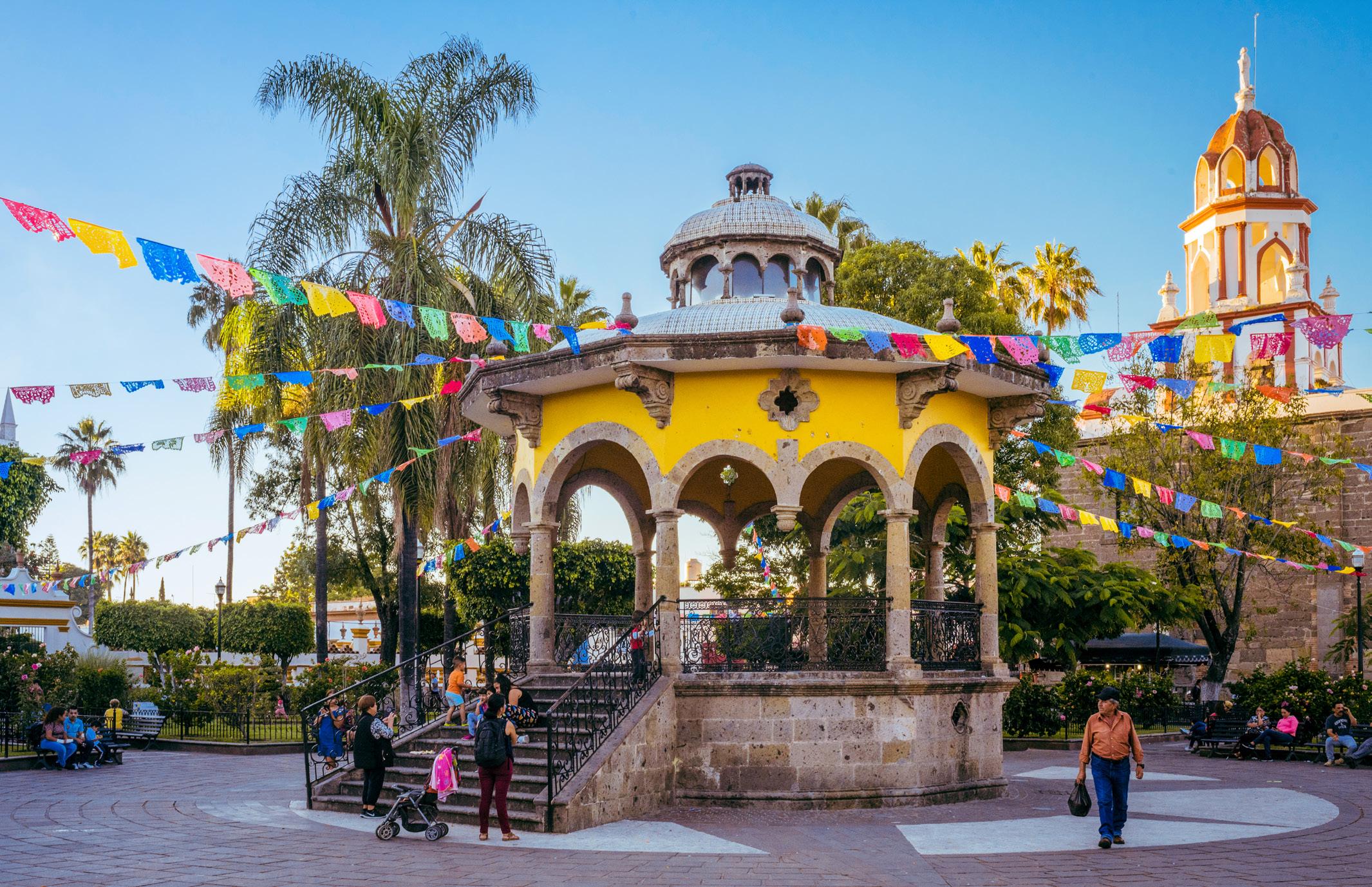

the Gay Games 2023 received from all corners of society.
OT: What eco-friendly tourism adventures does Guadalajara offer, and how does sustainability shape the city and industry?
GSB: Sustainability is a very important topic nowadays. When bidding to become a member of the BestCities Global Alliance, our weakest link was the lack of sustainability within our MICE business. Therefore, to rectify this, we began working with the Global Destinations Sustainability (GDS) movement, which has successfully worked with the BestCities Global Alliance in the past. We decided to begin with a fashion exhibition, as this particular sector is not recognised as being eco-friendly. We believed it would also generate a lot of positive press for both the alliance and the city and make what we were doing more visible. It was a big challenge for both parties, but we now work well with the legacy.
We discovered that the carpets used across our events were one of the most polluting parts of the MICE business, particularly as these exhibitions are critical to Guadalajara. Therefore, we contacted Montecolino, an Italian company that makes a single-use carpet that, once used, is recycled into plastic pellets, which can be utilised in new industrial applications. Of course, it is about 20 percent more expensive than regular carpeting, so the convention centre and the CVB decided that we would pay 50 percent of that amount on behalf of the company doing the trade shows in order to make it more cost-effective. Now, the carpet looks neat and new with high-resolution colours without hurting the environment. Moreover, the convention centre uses less energy due to solar power generation and uses a rain mix for potable water for the restrooms. We’re moving rapidly with regards to sustainability; we went from having nothing to now having robust environmental practices and will continue to climb.
OT: Are you optimistic about the future of the tourism industry in Guadalajara?
GSB: We’re very excited because we are reaping the benefits of all the hard work that we are doing. Last year, we had a 25 percent increase in business from the year before, which had a growth rate of six percent compared to 2019. Of course, we want another 25 percent increase this year, but six or seven percent is good. However, we’ll continue to grow in the following years with our world-class events in Guadalajara. I’m sure we’ll be able to keep getting better through our evolving tourism sector and deliver on our founder’s vision in 1970 to develop the first CVB in Latin America.

Tel: +52 33 3125 1607 hola@visitagdl.com visitagdl.com

Boasting over 17,000 restaurants, visitors will never go hungry in Guadalajara. Explore Mexico’s traditional gastronomy, from tacos and tamales to frijoles charros and the dessert dish, jericalla; the city offers a banquet of prime possibilities
THE CAPITAL OF Jalisco is the proud home of birria, menudo, and time-honoured antojitos (enchiladas, tacos dorados, and tostadas). Its flavours, spicy salsas, variety of cheeses, and breads such as the birote salado (a crunchy roll) are synonymous with Mexican cuisine. While strolling through streets fringed with charming plazas, ornate cathedrals, and grand neoclassical buildings, every step is a guaranteed olfactory delight. Regional specialities include pozole (a soup or stew with
hominy and meat as the base ingredients) and tortas ahogadas (known as a drenched sandwich due to its covering of sauce).
Tequila isn’t the only national drink accompanied by treats and eats; refreshment also comes in tejuino. Consumed throughout Jalisco, the popular coldfermented beverage is made from corn dough mixed with water and unrefined cane sugar and boiled until thick. The result is served with lime juice, a pinch of salt,
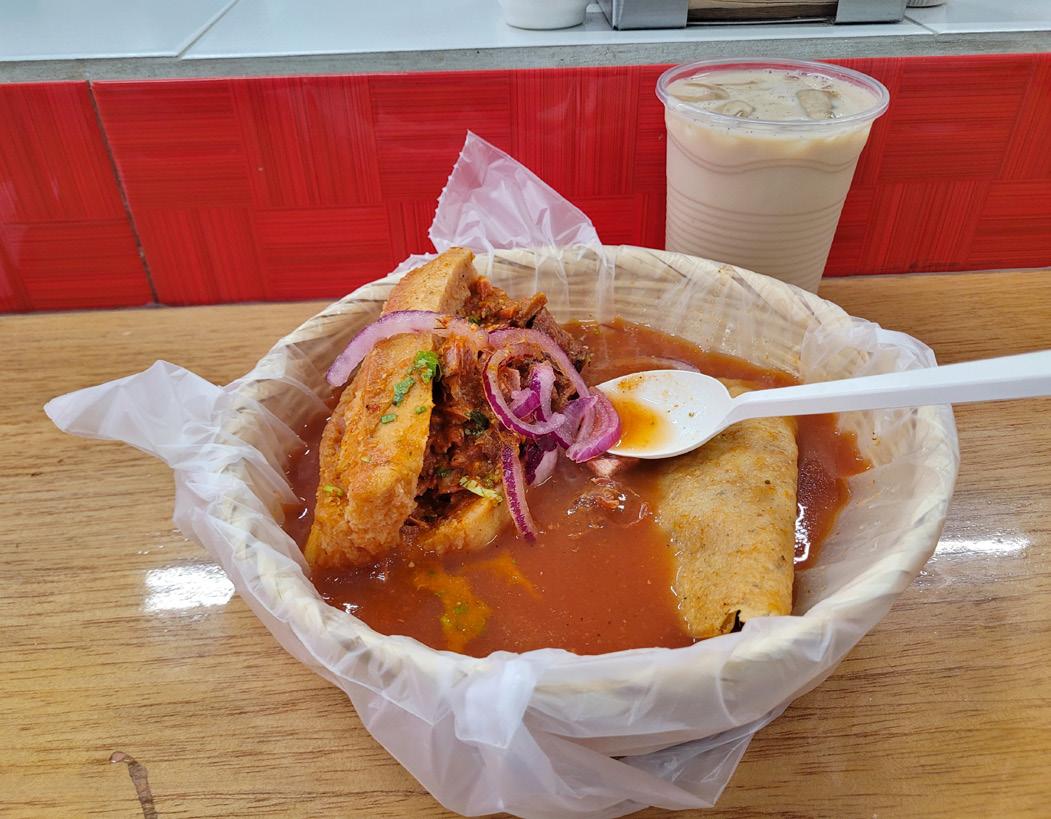

and a scoop of shaved ice or lime sorbet. There is also a substantial Mexican craft beer scene if preferred.
Among its many festivals throughout the year, Guadalajara serves various culinary delights at its calendar of events to satiate even the most ardent of gastronomes. The flavours of Guadalajara play a crucial role during Holy Week. Each eatery tells a story, fusing tradition and modernity to gratify the palate. Snacks from the sea are prevalent during Lent, and the city is an ideal destination for ocean flavours. La Docena Oyster Bar & Grill and El Siete y Medio de Paco are two of the best.
From street food to haute cuisine, Guadalajara is a gourmand’s paradise. Experience everything from tacos to other internationally renowned food. Visiting Guadalajara is an absolute joy of flavour and fiesta.
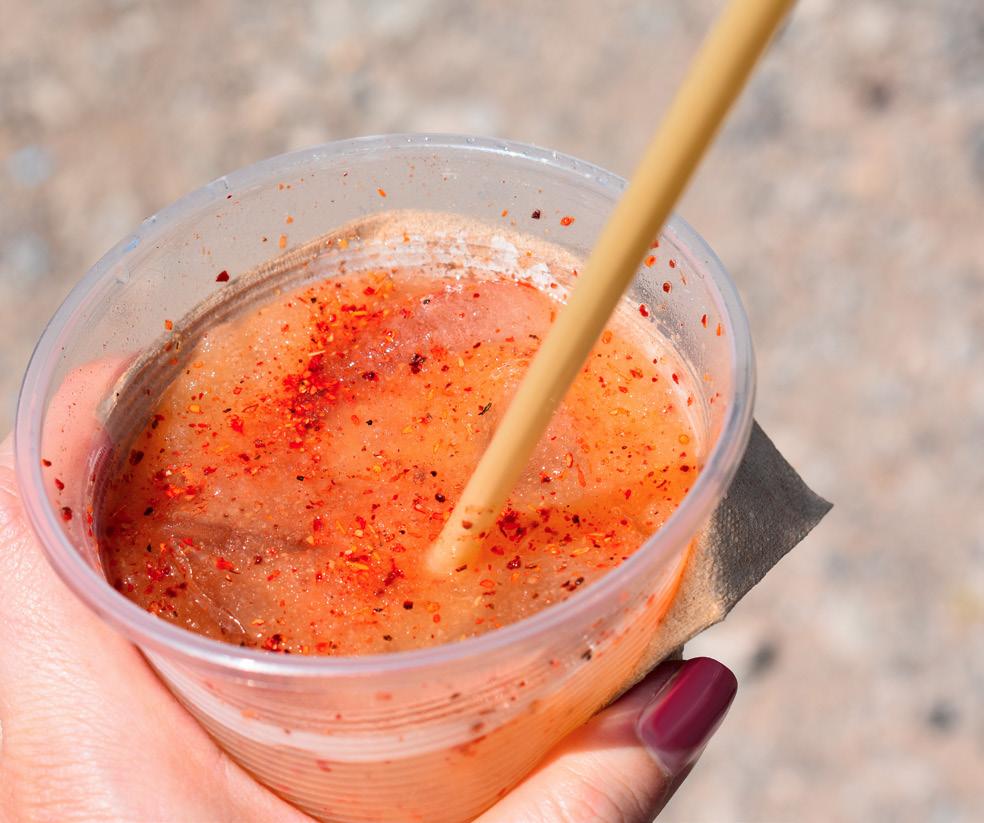
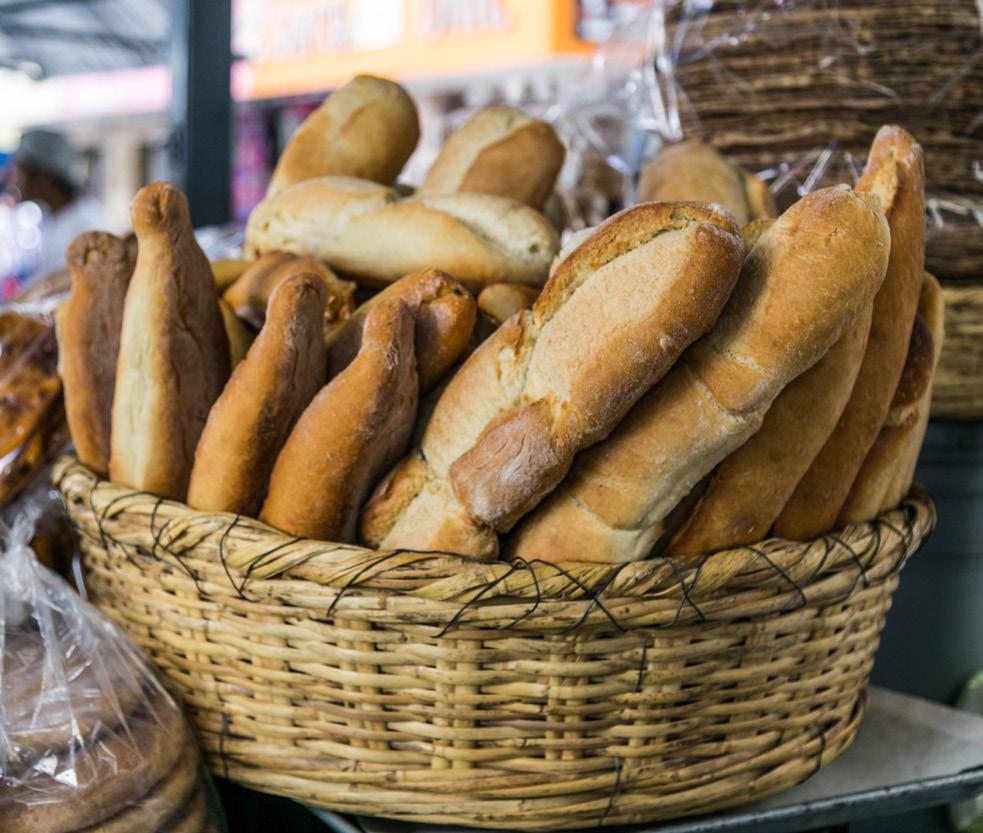
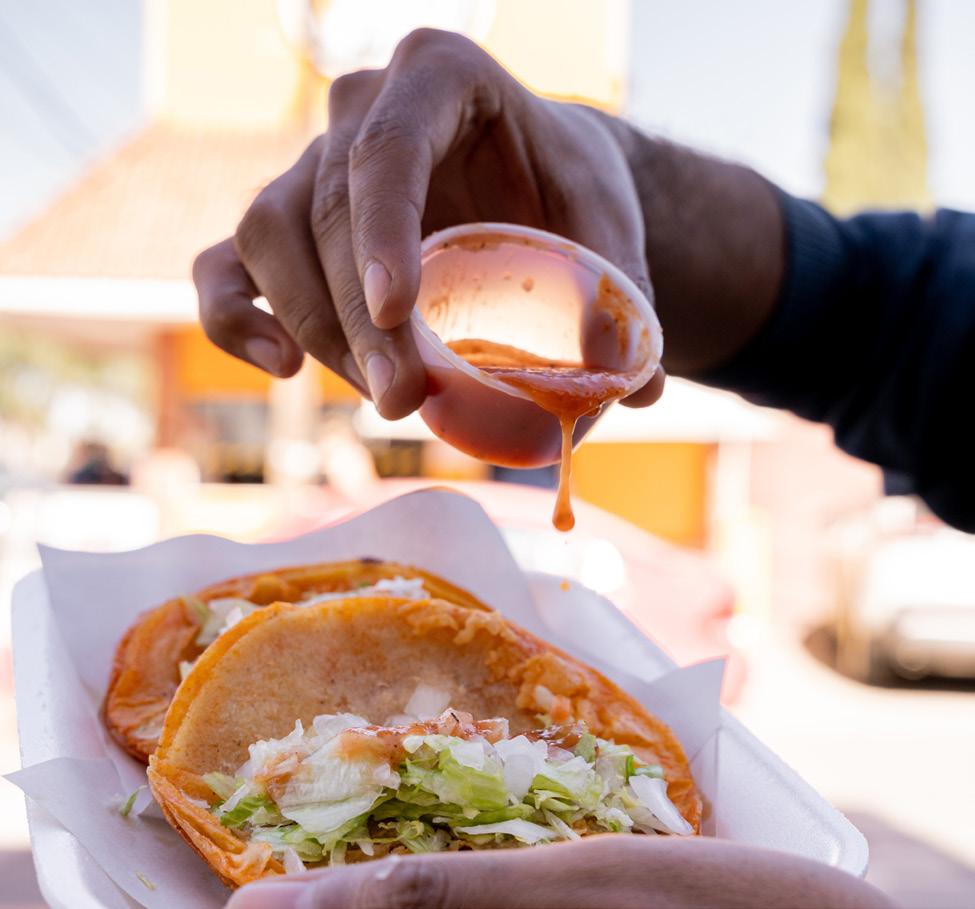

Alcalde is a restaurant which combines culinary heritage with modern gastronomy and does so with flavour and affection. With an à la carte and a tasting menu, Executive Chef, Paco Ruano, adheres to the cycles of the Earth with fresh local and seasonal ingredients with worldwide influences but still rooted in the Jalisco region.
Birrieria la Victoria is located in the Santa Teresita neighbourhood and is a local institution, first opening its doors in 1948. Primarily serving goat birria with pieces of veal, there is also an option for a mixed bowl of bien doradito (crispy cuts). Additionally, an order of beans and a mild ranchero salsa or a chile de arbol salsa are recommended.
By day, Plaza de los Mariachis, the birthplace of mariachi music, is a charismatic narrow street with charming old buildings. However, it bursts into life by night with beer-swilling patrons listening to mariachi musicians and bands playing requests, decked out in full regalia. Indeed, the city hosts the annual International Mariachi Festival in celebration of the unique music.

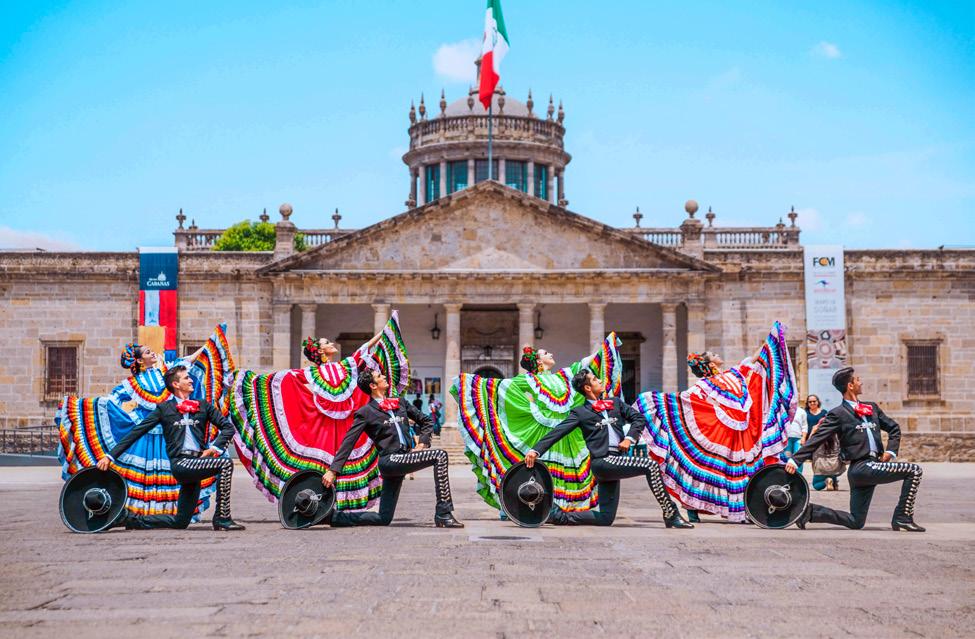
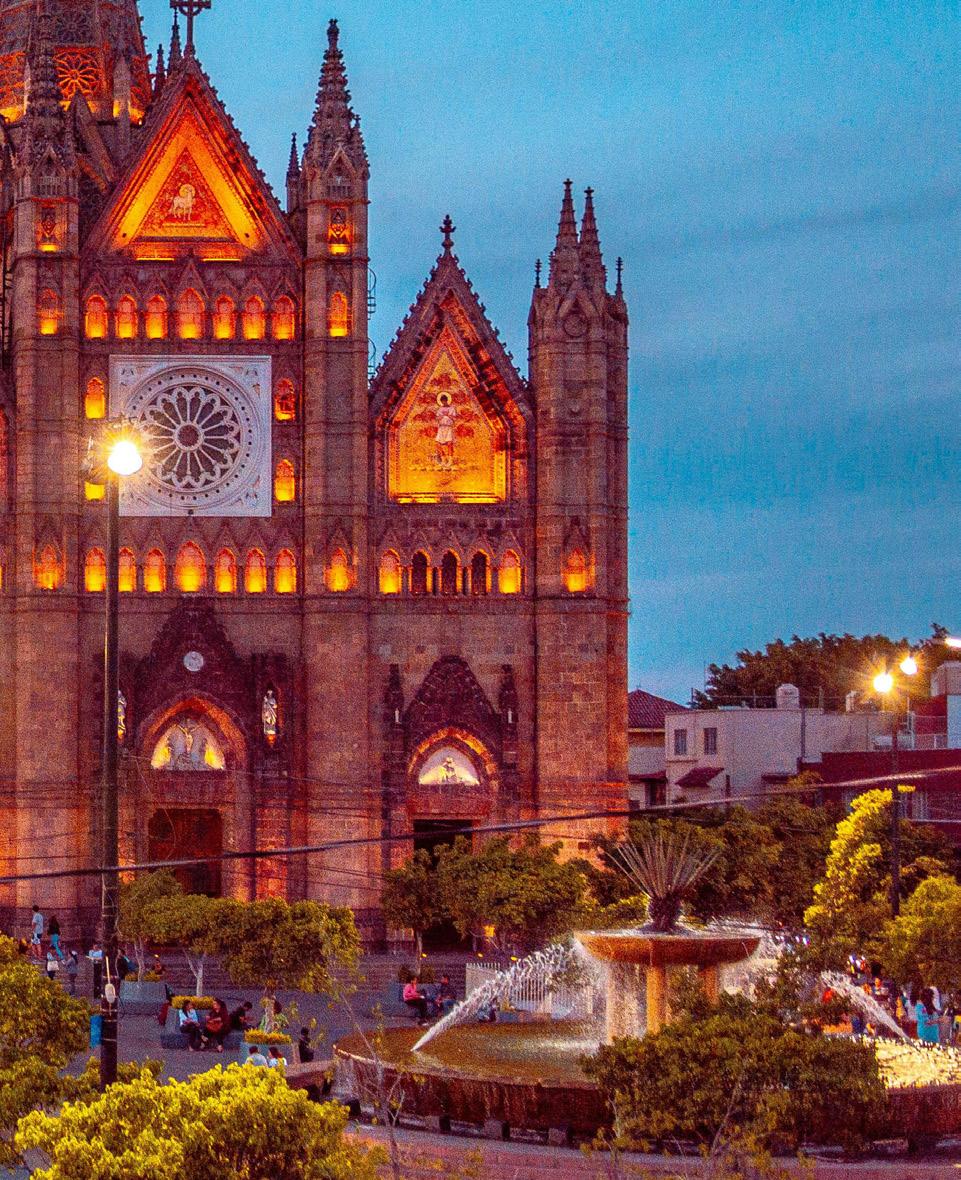
The cobbled streets and beautiful coloured grand houses in the tranquil, historic village of Tlaquepaque. Although it is surrounded by the modern metropolis, it has a distinctly different vibe from the rest of Guadalajara, despite being only 10 kilometres from the city’s downtown area. Handcrafted artisan shops line the Calle Independencia, as well as a shop selling the most extensive range of commercially available tequila, which is featured in the Guinness Book of World Records!
The Westin Guadalajara offers pet-friendly hotel rooms for groups and families with many dining options and a wellness centre in the prestigious location of the Residencial del Bosque. The hotel is situated in the district directly across from the Expo Guadalajara convention centre, a major venue for events, exhibitions, and congresses.
Villa Ganz Hotel Boutique is listed as Guadalajara’s first boutique hotel. It is located in the heart of the Lafayette Colony, which has a particular European architectural aesthetic and features a tropical interior garden, porch, and terrace. Within the walls of a 1930s mansion, it has 10 fully restored rooms spread over two floors, with antique, classic, and modern furniture and items.
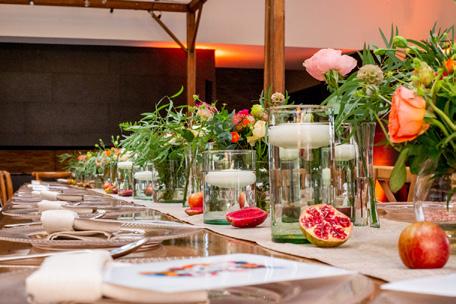

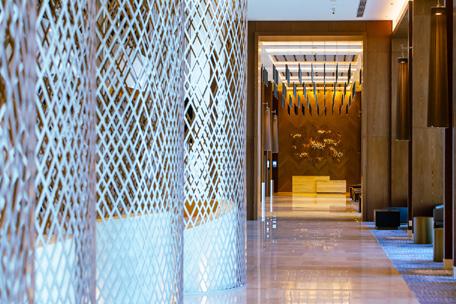









Known as the Tequila Valley, the area features world-renowned distilleries with a distinctive vista that has inspired literary works, films, and art. It is around an hour’s drive outside the Guadalajara Metropolitan Area. Between the foothills of the Tequila Volcano and the deep valley of the Rio Grande River is an expansive and distinctive landscape of blue agave, which is shaped by the culture of the plant used since the 16th century to produce tequila. The area includes working fields and urban settlements with large distilleries and is a testimony to the Teuchitlan cultures that shaped Tequila from 200 to 900 BCE.

The city’s cathedral is its most conspicuous landmark, with distinctive neo-Gothic spired twin towers. The building is nearly as old as Guadalajara, as work began in 1561 and was consecrated in 1618. At the right time of day, light filters through the stained glass of the Last Supper above the altar, and frequently, a pipe organ will rumble sweetly from the rafters. There is also a Gothic crypt, where three archbishops are buried, set within the richly decorated interior, which includes Tuscan-style gold-leaf pillars.
The urban park is located on the borders of Guadalajara and Zapopan, forming one of the lungs of the Metropolitan Area. It began as a hydrological zone project in the late 1800s to supply drinking water to the city. Today, it is protected and has a wide variety of trees from all over the world, lakes, and myriad species of fauna. The Japanese Garden celebrates the friendship between the cities of Guadalajara and Kyoto.

FLIGHTS FROM A variety of US, Canadian, and, of course, Mexican destinations arrive and depart from GDL, located about 11 miles from the city centre. If flying directly from Europe, Madrid is the only city that offers this service. This means flying from the UK or any other European destination requires a connecting flight to Guadalajara from Madrid. It is relatively easy to navigate Guadalajara as it is so well connected; options includeMiBici, a government initiative that aims to promote sustainable mobility within the city, with 236 bicycle rental stations in the main tourist areas. If cycling isn’t your thing, try Mi Macro, a rapid bus
transportation system that crosses the city. Furthermore, each station is accessible to people with disabilities. Known colloquially as the Tren Ligero, the Guadalajara Urban Electric Train is a metropolitan rail collective currently operating with three lines running from north to south, central to east, and northwest to southeast. Alternatively, private transportation companies such as Uber, Cabify, and Didi Chuxing operate within the city. Walking is also an excellent way to see the many sights on offer, and some of the best things to do are in the pedestrian-friendly city centre, which has a grid system downtown to make it easier to find your way around.
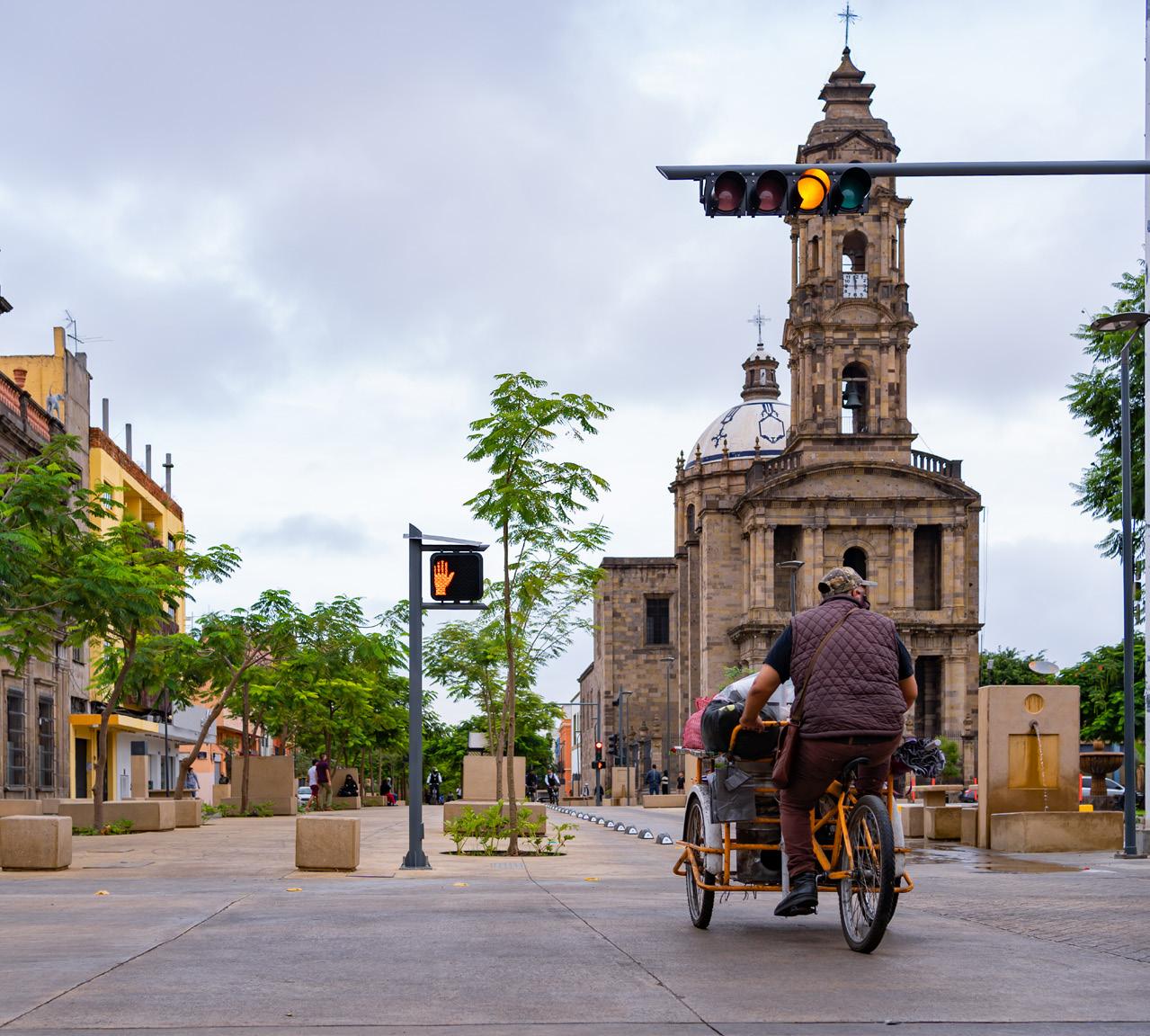
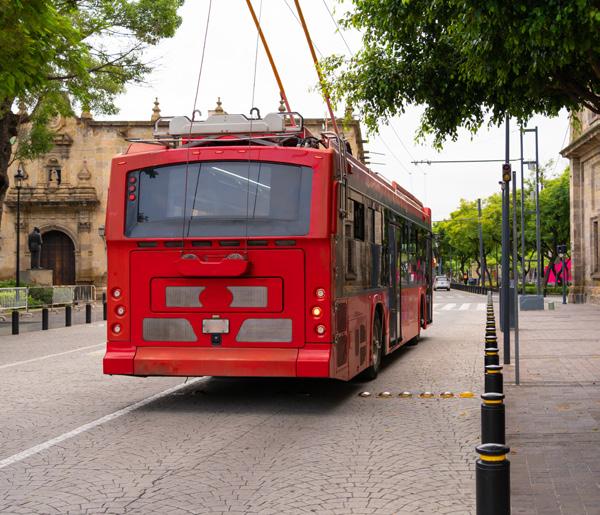
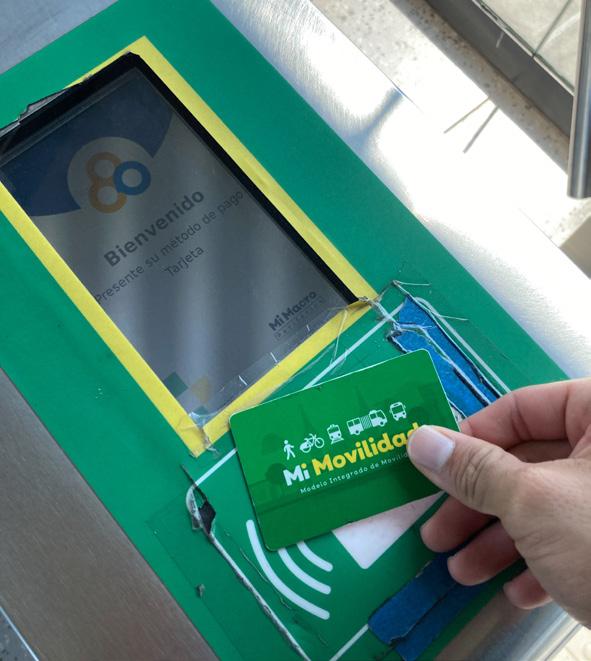

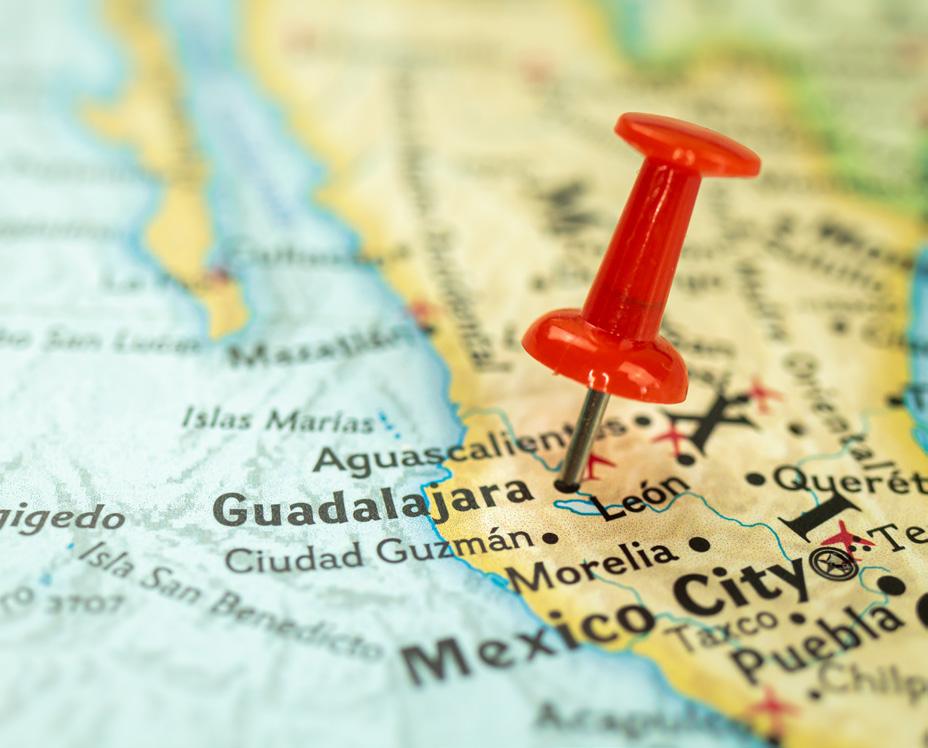
Combining the characteristic, dazzling lights of New York City with rustic realness and authenticity, Brooklyn has a close-knit community feel on a metropolis scale
WRITER: LUCY PILGRIM | PROJECT MANAGER: KRISHA CANLAS

As New York City’s most populous borough, Brooklyn is one of the city’s most vibrant and enticing areas.
A celebration of diversity and community, its streets are bursting with hope and warmth as the city proudly celebrates its vast heritage, home to a melting pot of cultures.
Brooklyn comprises 51 energetic and charming neighbourhoods, each with a distinctively unique character that is well worth exploration. As arguably one of the most famous areas – and for good reason - take a gander down the cobbled streets of Dumbo to catch a glimpse of the iconic Brooklyn Bridge, perfectly framed by the area’s beautiful and ornate brownstone architecture. However, visitors to the borough should also go beyond
the major tourist spots to immerse themselves in the undeniably authentic atmosphere that can be felt up and down Brooklyn’s every sidewalk.
If you’re craving to find out more beyond the famed bridge, take the train to Cobble Hill with its historical and bohemian feel, derived from its time as the landing spot for Dutch sailors in the early 1600s. Today, the district is selectively sprinkled with art galleries, independent cafés, downtown bars, and a famed Antique Row with endless shops that are calling out to be explored.
Meanwhile, if the heavily populated nature of Central Park across the river proves to be too crowded, wander around the picturesque Prospect Park. Created by the same visionary designers as its Manhattan counterpart,

Prospect Park features the ideal environment to soak up the sun, with an abundance of picnic areas, a forest known as the Ravine, and even a zoo.
After a day of sightseeing, venture into Brooklyn’s bar scene that emits a trendy and sophisticated vibe, allowing visitors to feel like they are on a movie set, whilst its unpretentious and hearty dishes can curb any cravings, from the infamous hot dogs of Coney Island to the delightful thin, crispy crusts of Brooklyn pizza, alongside many more eye-opening, international cuisines.
To truly experience New York City in all its glory, make your way to the culturally rich and delightfully atmospheric streets of Brooklyn and engross yourself in the best this unique metropolis has to offer.
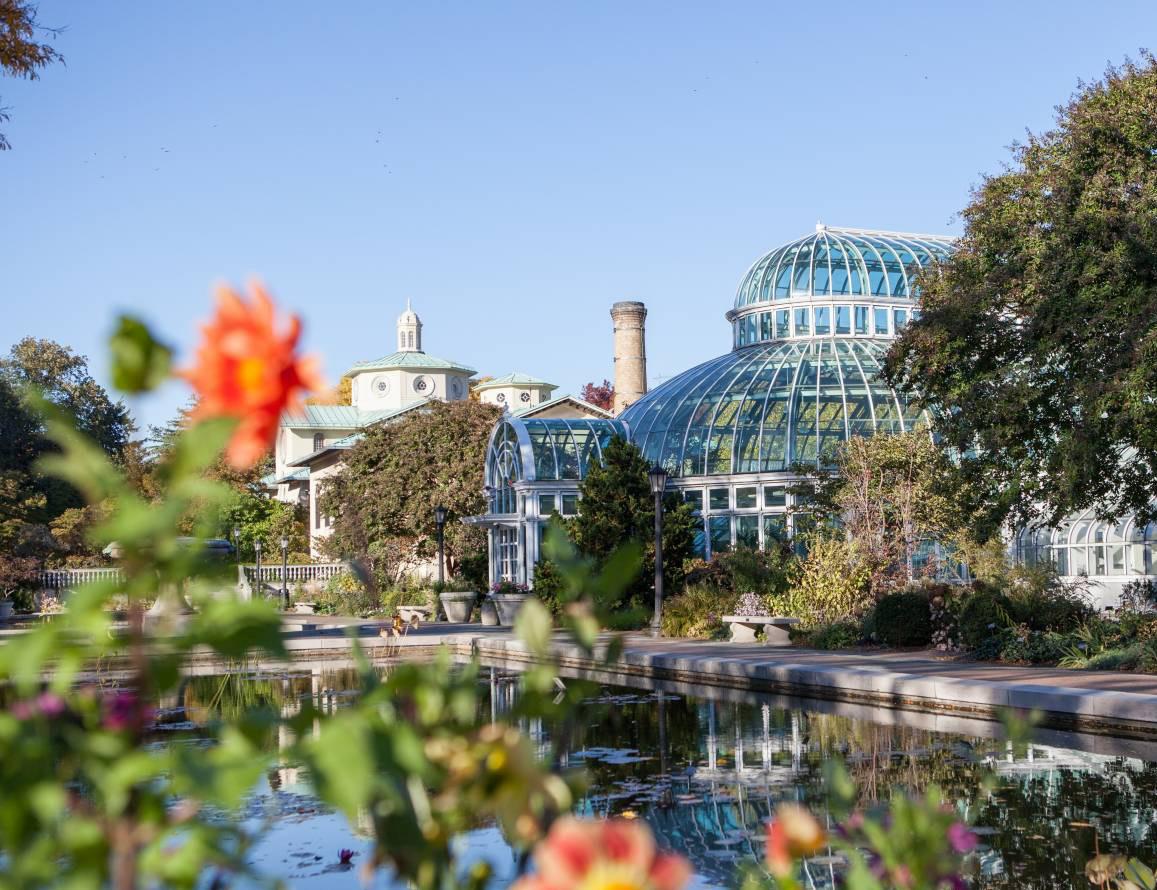

FOR OVER A century, the Brooklyn Chamber of Commerce (BCC) has championed the voices of both big and small businesses as it continuously works to be a loyal protector and promoter of their interests. The chamber is characterised by an active civic spirit to ultimately improve the living conditions and social welfare of Brooklyn’s bustling corporate landscape, whilst also highlighting its lively tourism sector.
We speak to Randy Peers, President and CEO of the BCC, about his passion for the borough and how its small businesses are the true beating heart of the city.

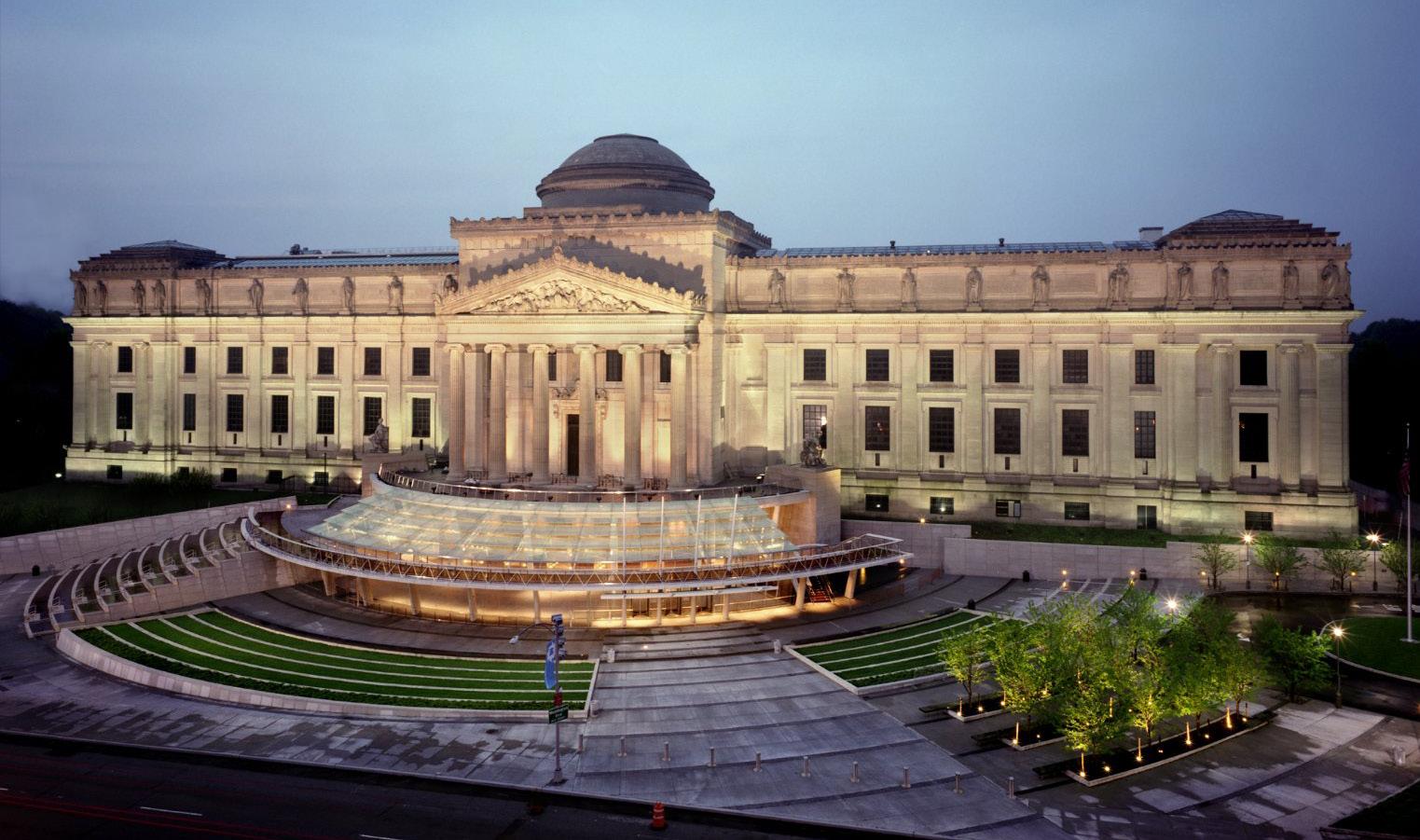
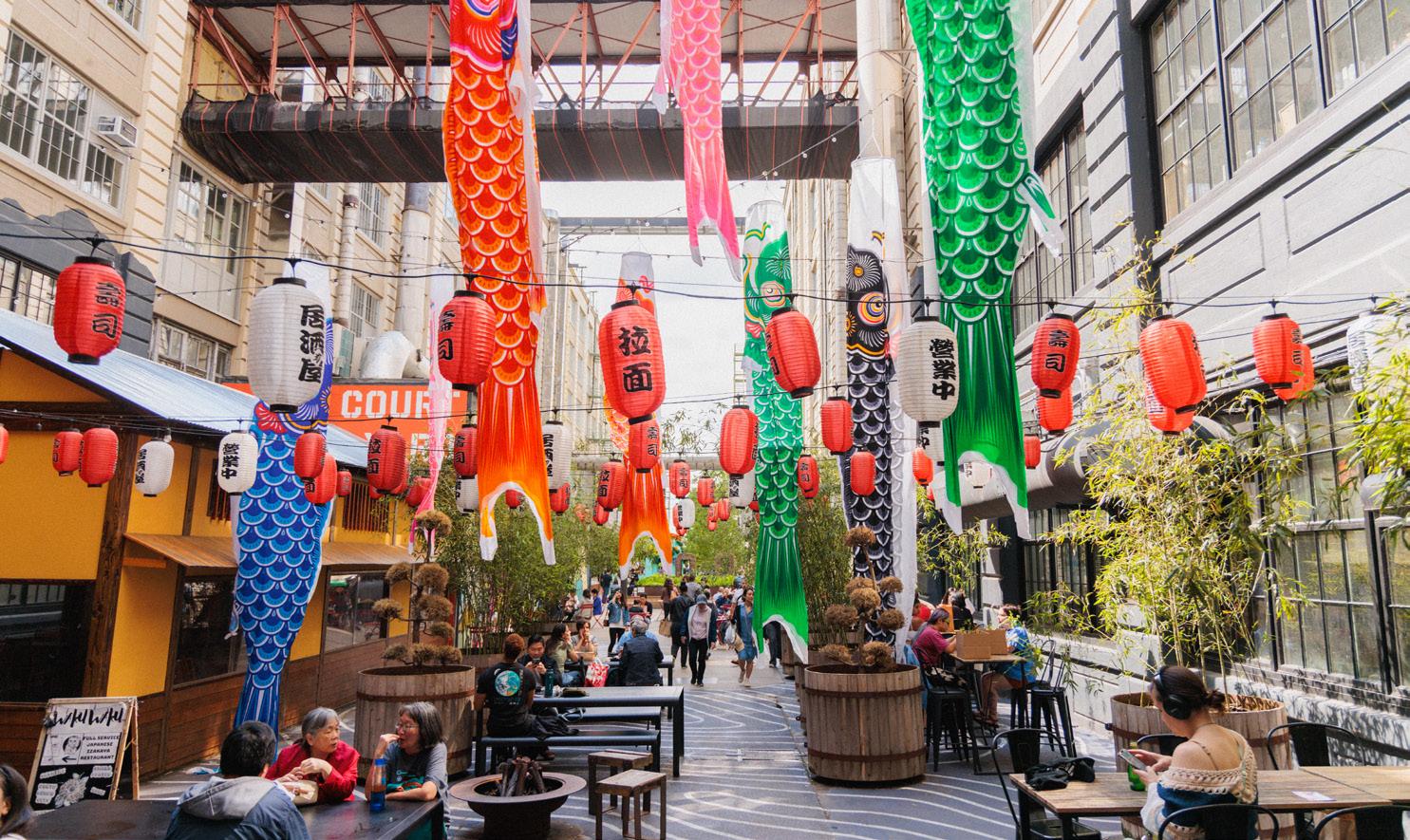
Outlook Travel (OT): Firstly, can you talk us through the origins of the BCC alongside its initial vision and current goals?
Randy Peers, President and CEO (RP): Established in 1918, we are the voice of the Brooklyn business community. Our mission has been consistent over the past 106 years – to be the borough’s chief advocate for development and support, as well as economic growth.
Initially, we were known as the Brooklyn Civic Club, however, about six or seven years after our formation, we transformed into our current guise. The borough has a small business economy with approximately 62,000
entities, 84 percent of which have less than 10 employees. Therefore, these companies don’t always have a say in what’s happening around them, so BCC seeks to be that consistent voice for the small business community, advocating for the things that matter to them.
OT: What makes Brooklyn a good place for visitors to invest in?
RP: We have become an international brand in recent years; if you go almost anywhere in the world and mention Brooklyn, you will find somebody who wants to visit or live here. It’s even been said that one in seven people can trace their roots to Brooklyn!
Historically, the borough was founded over 300 years ago by Dutch explorers, so we’ve had an interesting trajectory throughout our heritage. The story of Brooklyn is really wrapped up in successive waves of immigrants who have made the area their home and left an imprint on the culture and vibrancy of the city. As such, we have always been a very welcoming and tolerant region for anybody wishing to come here. For a long time, we were also the manufacturing centre for New York City, however, like most heavy industry areas after World War II, there was a decline in the level of manufacturing.
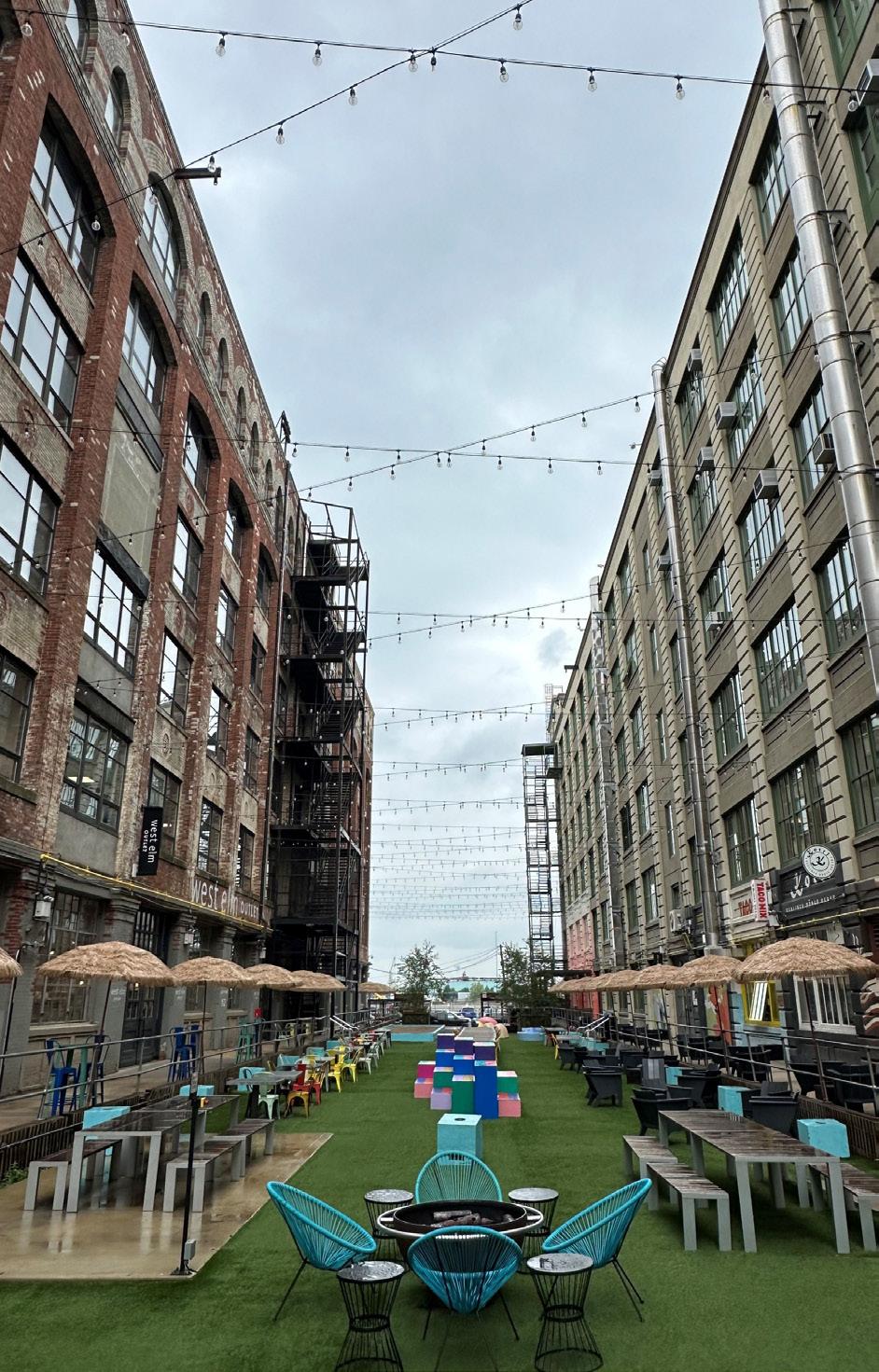
Subsequently, it took us a good 30 years to get back on our feet. However, we had a number of advantages; the first was our branded identity – people knew where Brooklyn was. Although the brand was somewhat tarnished during the 1970s and 1980s, as the borough was seen through a lens of urban decay and increased crime, we still had a distinctive identity. Therefore, the idea was to change the narrative so that what was once considered dangerous became edgy and hip in a simple form of rebranding.
More importantly, we had all this former heavy industrial land that could be repurposed for creative and new economy industries. This land has now been revitalised for both


residential and commercial uses. For example, if you look at the north of Brooklyn, in places like Williamsburg, Dumbo, and Greenpoint, a lot of that land has been converted from former manufacturing uses to residential.
Meanwhile, if you look at neighbourhoods like Industry City, Sunset Park, Brooklyn Navy Yard, and Brooklyn Army Terminal, these are commercial spaces that have been transformed for the creative economy. This includes tech companies, marketing and design firms, and niche, small manufacturing industries such as food manufacturing.
We’ve really transformed our economy by repurposing former industrial spaces and rebranding the story of Brooklyn.
OT: How important is the BCC to the growth of the borough’s businesses, and how do you achieve this?
RP: We’re the largest chamber of commerce in the state of New York and have four primary foundational principles: promotion, support, advocacy, and convening.
Our success lies in our ability to tell our businesses’ stories so they can receive greater exposure and sell more products and services. We do this by leveraging our communication channels, such as e-newsletters, networking and ribbon-cutting events, and social media, which all come under the promotional umbrella.
Regarding our support services, the BCC has always been at the forefront

of providing technical assistance and we have several programmes that focus on helping small businesses to form and grow.
These include our NYC Business Solutions Center, a small business resource network, as well as our financing arm, Brooklyn Alliance Capital, a microlender that provides all levels of technical assistance, whether it’s marketing support, access to financing and legal services, minority and women business certification, and connecting to government agencies for regulatory purposes.
We’ve held a lot more of these programmes since the COVID-19 pandemic, as it obviously had an impact on many smaller companies. Meanwhile, advocacy is our bigpicture policy and involves the legislative work that we do on behalf of local entities. We regularly interact with our elected officials and policymakers to serve as a voice for these companies. For example, when legislation or policies impact small businesses, we articulate what the issues and concerns are.

“We’ve really transformed our economy by repurposing former industrial spaces and rebranding the story of Brooklyn”
– RANDY PEERS, PRESIDENT AND CEO, BROOKLYN CHAMBER OF COMMERCE
As Brooklyn is one of the largest counties in the state of New York, it has a great number of representatives, which means we have a strong number of elected official delegations. Therefore, the BCC interacts with all levels of government, city, state, and federal agencies on behalf of our businesses.
Finally, convening is about bringing people from each industry together around the table. For instance, we manage the Tourism Council for Brooklyn, alongside other industrybased committees, such as real estate, development, healthcare, BioTech, and energy. We bring these industries of the local economy together so that we can work on collective issues with a particular sector.
OT: How has the tourism industry in Brooklyn changed in the last five years?
RP: The good news is that tourism in New York City has bounced back quite nicely following the COVID-19 pandemic. There were 62 million
visitors to the city prior to the event, 15 million of which made it over the bridge to Brooklyn, making it the second most visited borough out of the five.
However, there have been some shifts in the post-pandemic era. For example, we’re not getting as many international tourists as we once did, particularly from China and Russia, but we are seeing more day trippers visiting from the tri-state areas to see Brooklyn’s attractions. In terms of numbers, we’re pretty close to the 15 million visitor mark which was our watershed high before the pandemic.
I would also say that despite Brooklyn’s huge size, many tourists tend to stay in the northern areas closer to Manhattan. Here, you can find hot areas such as Williamsburg and Dumbo located beneath the Manhattan Bridge underpass.
I would also encourage visitors to see other parts of Brooklyn, such as in the south and east. For example, Coney Island is the original ‘People’s Playground’, with its brilliant beach and wonderful boardwalk, as well as its remarkable amusement rides and attractions.
Brooklyn also has historic locations such as the Weeksville Heritage Center. As Weeksville was one of the first free Black communities in the post-Civil War US, this historic neighbourhood is an amazing place to visit.
I would also encourage travellers to spend time in one of the many immigrant communities that we have. You can go to Brighton Beach and feel like you’re in Ukraine or go to parts of Sunset Park and feel like you’re in Latin America or China. We also have an area called Little Caribbean, a vibrant community representing the many wonderful nations of the islands. Due to the rich mix of cultures, we have many authentic restaurants across the borough. We like to eat in Brooklyn, and it’s all about coming together around food; as such, our restaurant scene has really progressed to rival even the top restaurants in Manhattan.
OT: Please tell us more about your annual events for members and how you incorporate popular attractions?
RP: We hold a lot of what we call ‘big ticket’ events, which recently included
our Black History Month celebration held at the Weeksville Heritage Center in February. This is an amazing event where we honour some of our business and civic leaders from the African American community here in Brooklyn.
We also had an Asian-American History Month celebration on 23rd May in Industry City, which comprised a night market with lots of food vendors as well as cultural performances across the area. We hold other more industry-specific events for the not-for-profit (NPO), energy, and real estate sectors, alongside our gala.
We also have our Brooklyn Made Store that we opened over a year ago in Industry City, which has become an amazing tourist attraction in itself. It is super unique for a chamber of commerce to have its own store, and we are proud to feature independent Brooklyn makers, designers, and small business owners who wouldn’t necessarily get this type of exposure.
The products we sell include packaged food, apparel, home goods, make-up and beauty supplies, and jewellery, as well as an art gallery


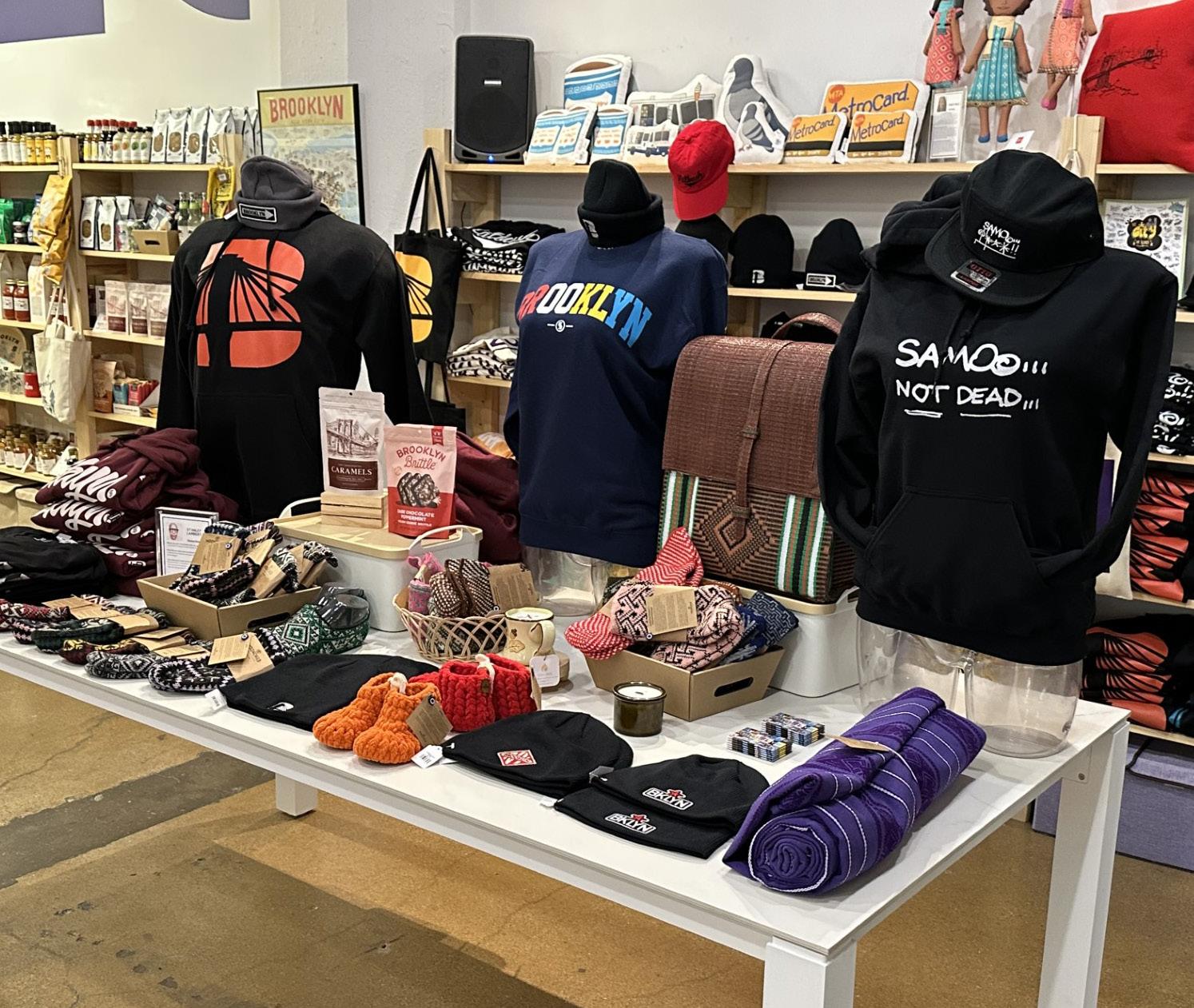
with rotating exhibitions called the Brooklyn Made Corner Gallery.
Industry City is a former heavy industrial campus spanning six million square feet that has been repurposed for the creative economy and retail sectors. It’s a work-play environment – there are food courts, restaurants, distillers, and Li-Lac Chocolates, one of the oldest chocolate makers in the state, alongside the Brooklyn Made Store, where we often hold events.
These initiatives highlight Brooklyn designers and creators who are from diverse communities. In fact, 83 percent of products on the shelves are made by minority and women-owned makers, designers, and business

“We’ve taken on a global role to help our businesses locally and leverage the Brooklyn brand on a worldwide scale”
– RANDY PEERS, PRESIDENT AND CEO, BROOKLYN CHAMBER OF COMMERCE
owners. As such, we recently held an event for Women’s History Month to celebrate these creatives.
OT: In what ways does the BCC put the borough on the map for international visitors?
RP: We have an international division of the BCC to conduct trade shows and exportation work on behalf of businesses who want to open up their markets overseas.
Our next step is leveraging the Brooklyn brand globally by working with foreign delegates, having held 38 delegations so far. What’s great is that delegates now come to New York City and visit the BCC to find out more


about the area. We generally roll out the red carpet and talk about all the wonderful things the borough has to offer, which they then take back to their home nations.
We collaborate frequently with South Korea and the city of Seoul, in particular. There’s actually a neighbourhood in the city called Seoungsu-Dong, which is known as the Brooklyn of Seoul.
We also work with Korean entrepreneurs who want to test their products in the US. Known as proof of concept, we help embed their products in Brooklyn-based companies so they can be analysed in the wider marketplace.
This is also an example of how we’ve taken on a global role to help our businesses locally and leverage the Brooklyn brand on a worldwide scale. Our international division’s tagline is ‘Brooklyn - a bridge to
the world’ in reference to the iconic Brooklyn Bridge.
OT: Finally, how does the organisation support local businesses to provide an authentic experience for visitors?
RP: We’ve started to notice many more visitors venture to smaller neighbourhoods seeking the authentic Brooklyn experience.
Rather than exclusively going to see popular cultural attractions like the museum, they want to experience the unique commercial corridors that reflect the immigrant and ethnic communities we have here. They also want to eat in small and intimate restaurants – we’ve got real, momand-pop, homegrown food, so why would you dine anywhere else?
Similarly, we have many supersmall businesses for people to enjoy. I encourage visitors to go to
Tompkins Avenue because many of the companies are owned by Black female entrepreneurs. Whether it’s food or fashion, they put on a big ‘Open Streets’ event every summer where they close the road to hold a street fair, so travellers can experience the real Brooklyn.
We’ve really got it all here – a short walk of just a few blocks and it can feel like a completely different place. We encourage visitors who are seeking out an authentic experience to visit the Brooklyn Made Store and we can link them to the different parts of the borough that they want to see.


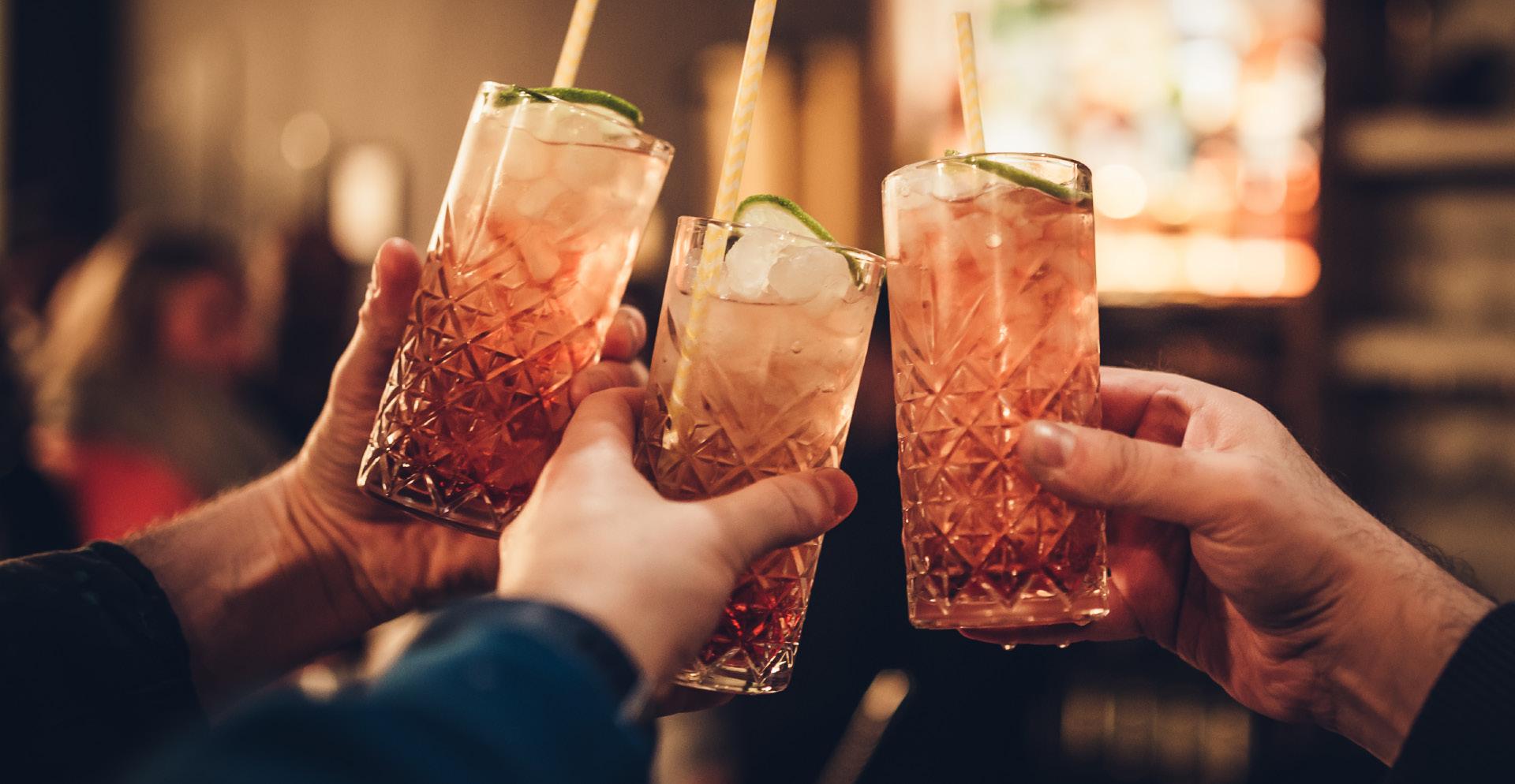
New York’s destination for eating and drinking, featuring the city’s top chefs, most-talked-about restaurants and the buzziest bars - plus the latest in arts and culture all huddled together under one roof. What happens when a slick media company endeavors to bring together the best of the city under one roof? You get Time Out Market, a diningand-culture experience curated and vetted by our editors.
It’s a concept our Time Out Portugal team created in 2014, then launched inside the city’s historic market, Mercado da Ribeira. With eight bars, a dozen shops, a high-end music venue
and 24 restaurants—from the best burger spot and the top steak joint to the tastiest sushi sensation— Lisbon’s finest eateries are all represented. This unique mix of traditional and trendy is

something you’ll find only at Time Out Market Lisbon. Across the Atlantic, Time Out Market New York picks up the baton and introduces Gotham to its own version of this tried-and-true concept right in the heart of Dumbo.
Spread across 24,000-squarefeet, the curated dining destination packs multiple eateries, three bars, a
fifth-floor rooftop and art installations into one space that encompasses the best food, drinks and culture that New York has to offer.
As in its predecessors, the New York outpost follows a simple rule when it comes to curation: If it’s great, it goes on the site; if it’s unmissable, it goes in the Market. A meal at Time Out Market New
York means you’re truly digging into NYC’s most delicious dishes, cooked by the most exciting talents in the city. What you’ll find inside is a hand-selected array of everything you could want to eat, drink and see in the greatest city in the world, all under one roof.


Everything you love about New York City’s best bars can be found at Time Out Market: cocktails worthy of a hidden speakeasy, panoramic views of the skyline to end your (work-from-home) day. Just like our curation of eateries, we’ve put in just as much thought when it comes to building our bar. Some of the city’s best bartenders were behind us on Day One with Instagrammable libations and today, the creativity keeps flowing we dare you to order just one.
Wayla was already poised for stardom shortly after first opening its doors on the Lower East Side in 2019, when seemingly everyone in NYC was salivating over its noodle-wrapped meatballs, clamoring for tables and snapping selfies. Even now, years later, prime-time reservations for chef Tom Naumsuwan’s homestyle Thai food still aren’t easy to come by. His attention to ingredients, focus on fresh flavors and market-inspired menus have folks filling up Wayla’s tables night after night. Lucky for you, there’s a seat with your name on it right here.
When Jacob’s Pickles opened on the Upper West Side in
2011, it was one of the first truly cool restaurants in a neighborhood better known for its sleepy dining scene than hip eateries and bars. The back-to-basics menu was one we could get behind (goodbye, stale chicken wings and greasy fries). The Southern-focused spot specializes in comfort foods: Nashville hot chicken, biscuits, mac and cheese and, of course, pickles. Now we have a taste of down-home cooking, punctuated with a fried Oreo for dessert, right here in Brooklyn.
Sugar Hill Creamery owners Nick Larsen and Petrushka Bazin Larsen’s seasonal ice cream flavors are often inspired by their Midwestern and Caribbean backgrounds as well as their longtime home of Harlem. The husband-and-wife team has been crafting distinct ingredient combinations out of their Central Harlem store since 2017, and devoted fans hungry for frozen treats that you won’t find in the supermarket led the pair to open a second location in Hamilton Heights just a few years later. Stop by often—there’s always an innovative new flavor to try. 917-810-4855
Positioned in the southernmost peninsula of Brooklyn, Coney Island is a treasure trove of good old-fashioned fun, adorned with the best amusements and entertainment the borough has to offer.


GENERATIONS OF FAMILIES sink into childlike nostalgia when visiting the site of the US’ oldest amusement park. Brought to life in 1895, Sea Lion Park was one of New York City’s biggest attractions before it was replaced by Luna Park, which remains an area of wonder and intrigue to this day.
As an emblem of Luna Park’s joyful heritage, avid thrill seekers can ride The Cyclone – a wooden rollercoaster that

reaches incredible speeds of 60 miles per hour, giving avid riders an exhilarating adrenaline rush.
If you’re looking for something on the more relaxing side, Luna Park also features the spectacular Wonder Wheel. Taking over 40 million people on a gentle journey since 1920, the famed Wonder Wheel has become synonymous with family fun and is the perfect way to see the whole of Coney Island’s coastline in all its glory.
Devoted carnival goers also cannot miss the Mermaid Parade, heralding in the long-awaited summer season with a wonderful kaleidoscope of colour that is a delight for anyone’s eyes. First held in 1983, it is the country’s largest art parade and gives local artists and creatives the opportunity to showcase their bright and bold interpretations of the ocean’s greatest creatures in all their nautical vibrancy.
From titans of the sea to legends of the land, Nathan’s Famous International Hot Dog Eating Contest takes this iconic American delicacy to the next level, as crowds flock to witness who can eat the most hot dogs in 10 minutes. Last year’s contest saw a seasoned veteran earn his 16th Mustard Yellow Belt after eating a staggering 62 hot dogs and buns. Taking place on 4th July every year, you have to see it to believe it.


FOR AN ECLECTIC HUB OF BROOKLYN’S MOST ADVENTUROUS FOOD CONNOISSEURS...
Time Out Market New York never misses, providing delightful platefuls of international and local cuisine amongst a lively and bountiful atmosphere full of Brooklyn’s biggest foodies. Whether it’s a relaxing post-office wind down with colleagues or the beginning of an action-packed night, Time Out Market New York has hundreds of restaurants that take you on a culinary journey.
With 21 highly unique food concepts, the market is home to some of New York City’s most highly-rated chefs and local restaurateurs, who each offer a handcrafted menu that has been personally taste tested and approved by the city’s top culinary experts.
Positioned in the centre of the lively Dumbo district, the market boasts three buzzing bars, the picturesque Roof Top Bar, and stunning art installations in and amongst the plethora of the most talked about restaurants across four floors.
Roof Top Bar has become one of the hottest event venues, accommodating the biggest parties with live acts, as well as the most intimate private dinners
with top-quality table service. Time Out Market New York also bestows regular, fun-filled events and gatherings, such as the expert-led Salsa Thursdays and Game Night Fridays that respectively grant action-packed foosball and endless laughs around the boardgame table.
To sample some of the best cuisine that not only Brooklyn, but the wider city has to offer, indulge yourself in the vibrant culinary creations of Time Out Market New York.

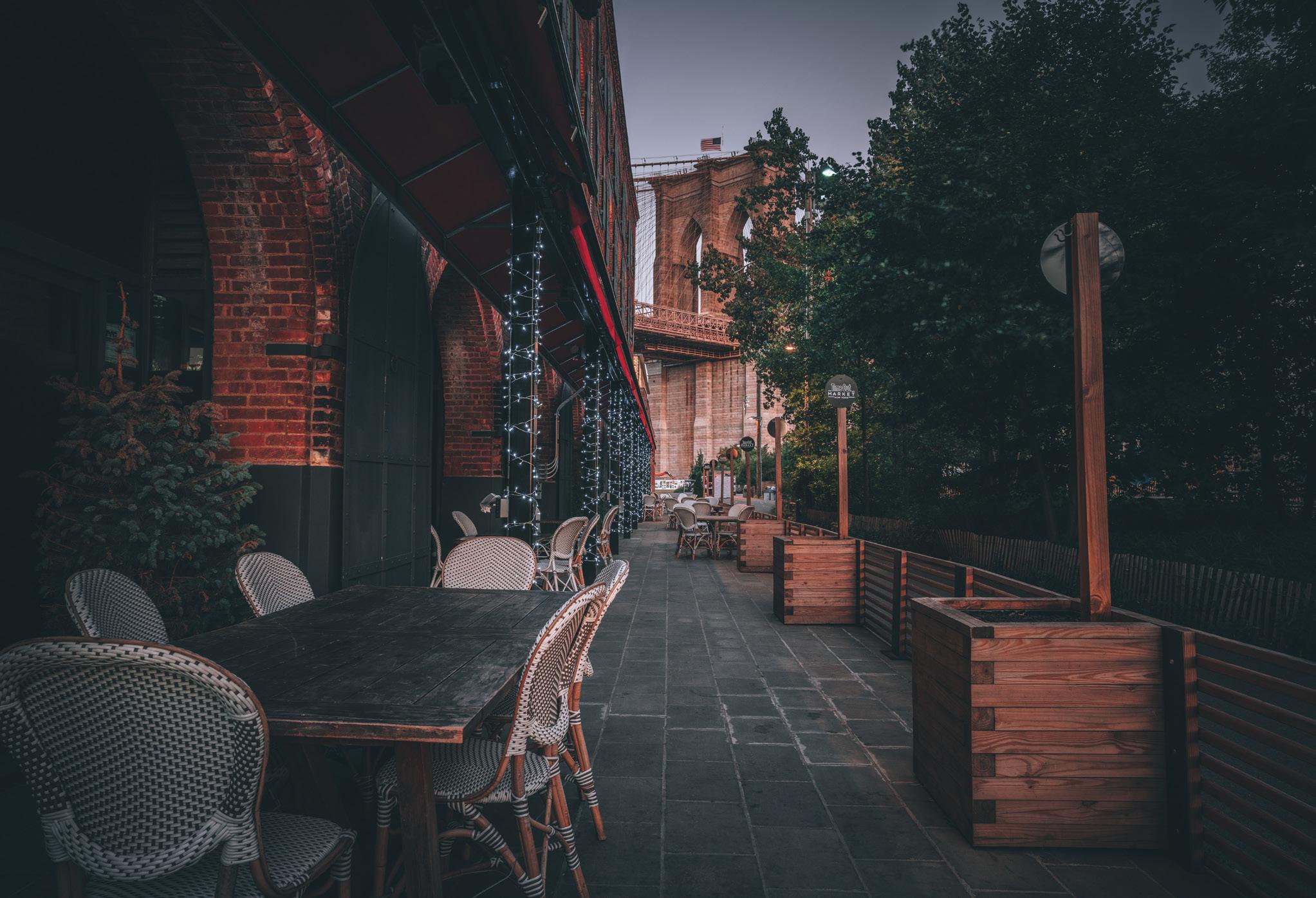
FOR UNLOCKING YOUR INNER FARMER AMONGST THE URBAN FLORA...
Brooklyn Grange is a top-of-the-range farming and intensive green roofing business that opens up the world’s largest rooftop soil farms to the public. The borough’s green-fingered innovators bring the soaring fields of the countryside to the bubbling activity of Sunset Park, highlighting the importance of green spaces amongst urban living.
Every Sunday, visitors to the area get the chance to see the grange in all its green glory. With free entry, agricultural lovers and budding farmers can rejoice in tours of the site, a flourishing farmer’s market, and some of the freshest food on offer in the local neighbourhood.
FOR A HOTEL STAY THAT LIVES AND BREATHES BROOKLYN’S INDUSTRIAL PAST...
Wythe Hotel is one the highest regarded stays in the city, as history lovers are attracted to the hotel’s riveting lineage. Located in the heart of Williamsburg, the original building was first opened as a cooperage

in 1901, manufacturing barrels for the borough’s thriving sugar refining industry.
Following its evolution into a textile factory throughout the 20th century, the building was eventually converted into a hotel in 2008. The hoteliers and architects worked hard to preserve as much of the original craftmanship as possible, so that structure wouldn’t lose any of its rustic charm.
With a vast range of rooms spanning 200 to 1,350 square feet, the spaces ooze industrial chic, with high wood panelled ceilings that provide a glimpse into the hotel’s history and vast windows letting in the brilliant Manhattan skyline. It is no wonder that guests of this magnificent boutique hotel always leave well rested and wanting more.
Created to preserve and celebrate Weeksville, one of North America’s first free Black communities, the centre’s fascinating teachings open visitors’ eyes to the importance of African American emancipation and empowerment through an intimate intersection of history, art, and culture. Guests can gain a glimpse into the lives of a community that has repeatedly pushed the boundaries of identity, making it a pillar of Brooklyn’s cultural diversity.

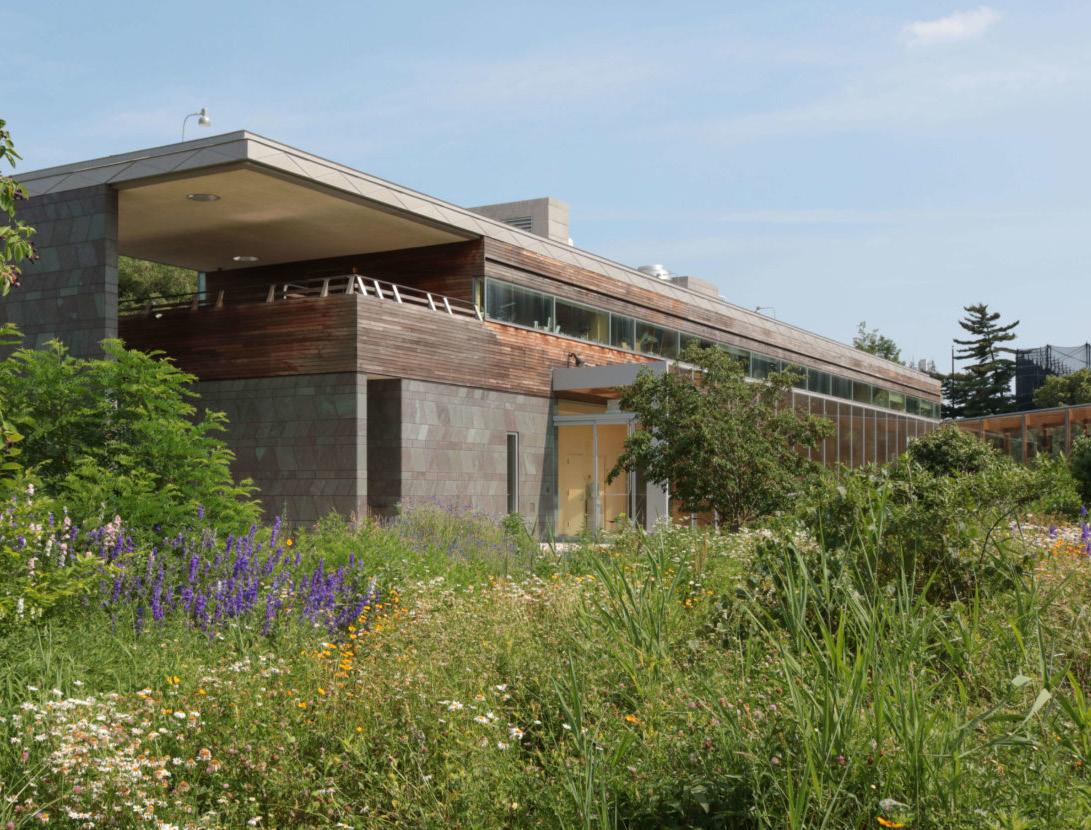


The beauty, prowess, and heritage of the beloved Brooklyn Bridge can never be overstated. Once standing as the largest suspension bridge in the world, thousands of labourers arduously worked on the iconic landmark between 1869 and 1883, many of whom were immigrants from Germany, Ireland, and Italy with roots in Brooklyn to this day.
Derived from a huge industrial complex dating from the early 20th century, Industry City is positioned at the heart of Brooklyn and is an urban metropolis that showcases some of the best and brightest underground creatives the borough has to offer. The 35-acre space is packed with restaurants, pop-up shops, budding entrepreneurs, and bustling outdoor hang-out spots, letting visitors delve deep into its eclectic biuniqueness.
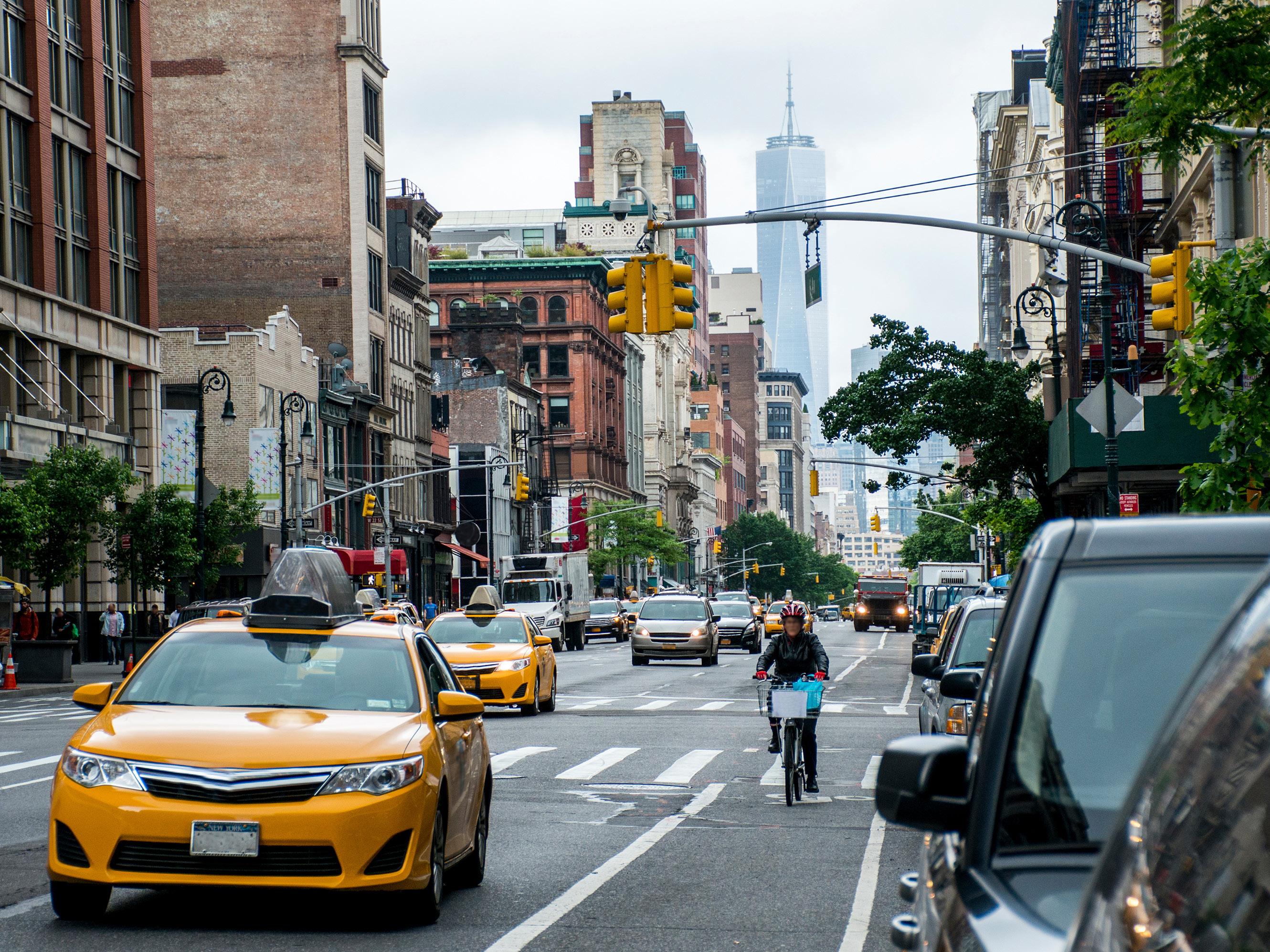
SITUATED IN THE city that never sleeps, travelling around Brooklyn could not be easier. For starters, New York City’s subway system is one of the most comprehensive and easiest to navigate in the world. The extensive network covers Manhattan, Queens, the Bronx, Staten Island, and Brooklyn, making it simple to travel between boroughs and runs at all hours, seven days a week.
If you need help navigating the extensive map and keeping up to date with any delays, download the MYmta app - a lifesaver for any subway riders.
Visitors can also make the
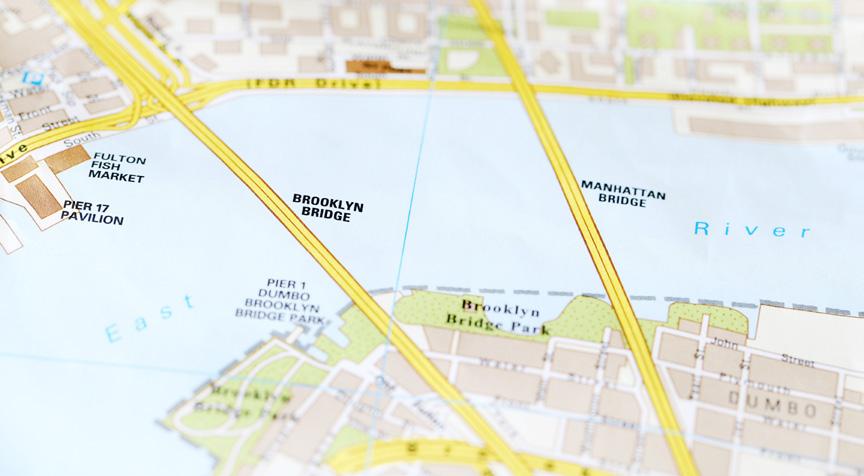
journey with a gentle stroll or bike ride across Brooklyn Bridge, featuring a stunning city skyline and the shimmering waters of the East River. It takes approximately 45 minutes to walk the length of the bridge, giving visitors plenty of time to take in the impressive stature and architecture

of one of the world’s most impressive structures. The bridge is accessed from Manhattan via a short walk from Brooklyn Bridge–City Hall/Chambers Street subway station.
Due to Brooklyn’s extensive size, which is often underestimated by visitors, using the subway or abundant bus services is advisable if you really want to experience the full potential of Brooklyn. The many bus lines can be accessed with a regular MetroCard or the maps available on the MYmta app.
Finally, fulfil your inner-city dreams by catching an iconic bright green taxi, which can be flagged down on main roads such as Atlantic Avenue or Flatbush Avenue.

A haven for white sand beaches, turquoise lagoons, never-ending rice terraces, and ancient Spanish colonial structures, the Philippines boasts not only a dream-like landscape, but a multifaceted and complex culture waiting to be discovered
WRITER: LAUREN KANIA | PROJECT MANAGER: ALFIE WILSON
The word ‘nirvana’ has been thrown around as a haphazard descriptor for ages, dulling the heartbreakingly magnificent allure of such unparalleled splendour.
This heavenly oasis of tranquillity and joy can only be found within exceptional destinations, ones that are ardent reminders of how the world around you is brimming with hope, possibility, and natural beauty.
The Philippines, a collection of 7,641 viridescent islands in the Western Pacific Ocean, is a shining example of such an Eden.
Defined by rolling emerald rice fields, sprawling megacities, towering volcanoes, sugary white beaches, hidden lagoons, and verdant forests teeming with distinctive bug-eyed tarsiers, the Philippines has long attracted a steady stream of adventurers.
Cut off from the Southeast Asian mainland by the South China Sea, the Philippines is often dismissed by travellers as just another island nation. However, the country is complex and culturally rich, offering a uniquely blended heritage and mesmerising scenery that is unlike anything you have ever seen.
The moment you land in the country, you’ll witness first-hand the rich melting pot of cultures – Islamic, Malay, Spanish, and American – all in full display through the annual exuberant festivals, a mouthwatering fusion of

cuisines, and the opulent remains of centuries-old colonial towns that have seemingly been plucked directly out of the streets of Latin America.
The country is encompassed by dazzling beaches swimming with lumbering dugongs and nimble thresher sharks, rugged limestone mountains that plunge directly into pristine waters, remote islands with miles of vibrant coral gardens, and the crumbling remains of Spanish churches –indicative of nearly three centuries of Spanish rule.
Filipinos are internationally regarded as some of the warmest and most hospitable people you’ll have the privilege to meet, proud to showcase their vast traditions and culture with those excited to learn more about the nation and its history.
Even though English is widely spoken throughout the islands, the Filipino people speak more than 150 languages and dialects and are variously descended from early Malay settlers, Muslim Sufis, Spanish conquistadors and friars, and Chinese traders.
This collective patchwork of cultural influences results in a truly unique country abundant with unparalleled experiences, people, and memories that will shape the way you view the world for years to come.
• Around 2,000 of the Philippines’ 7,641 islands are inhabited.
• The islands span approximately 300,000 square kilometres.
• The capital is Manila.
• The country is divided into three main geographical divisions: Luzon, Visayas, and Mindanao.
• The Philippines was named after Philip II, King of Spain, during the colonisation of the islands in the 16th century.
• The country is the second-most populous in Asia.
• The islands have more than 60 national parks and protected areas.
• The largest and most expensive pearl in the world was found in the Philippines, weighing a staggering 75 pounds and valued at USD$100 million.
• The Tarsier, one of the world’s smallest primates, can only be found in the Philippines.
• The country is the second-largest producer of coconut products in the world.
• The national bird is the Philippine eagle, also known as the monkey-eating eagle.
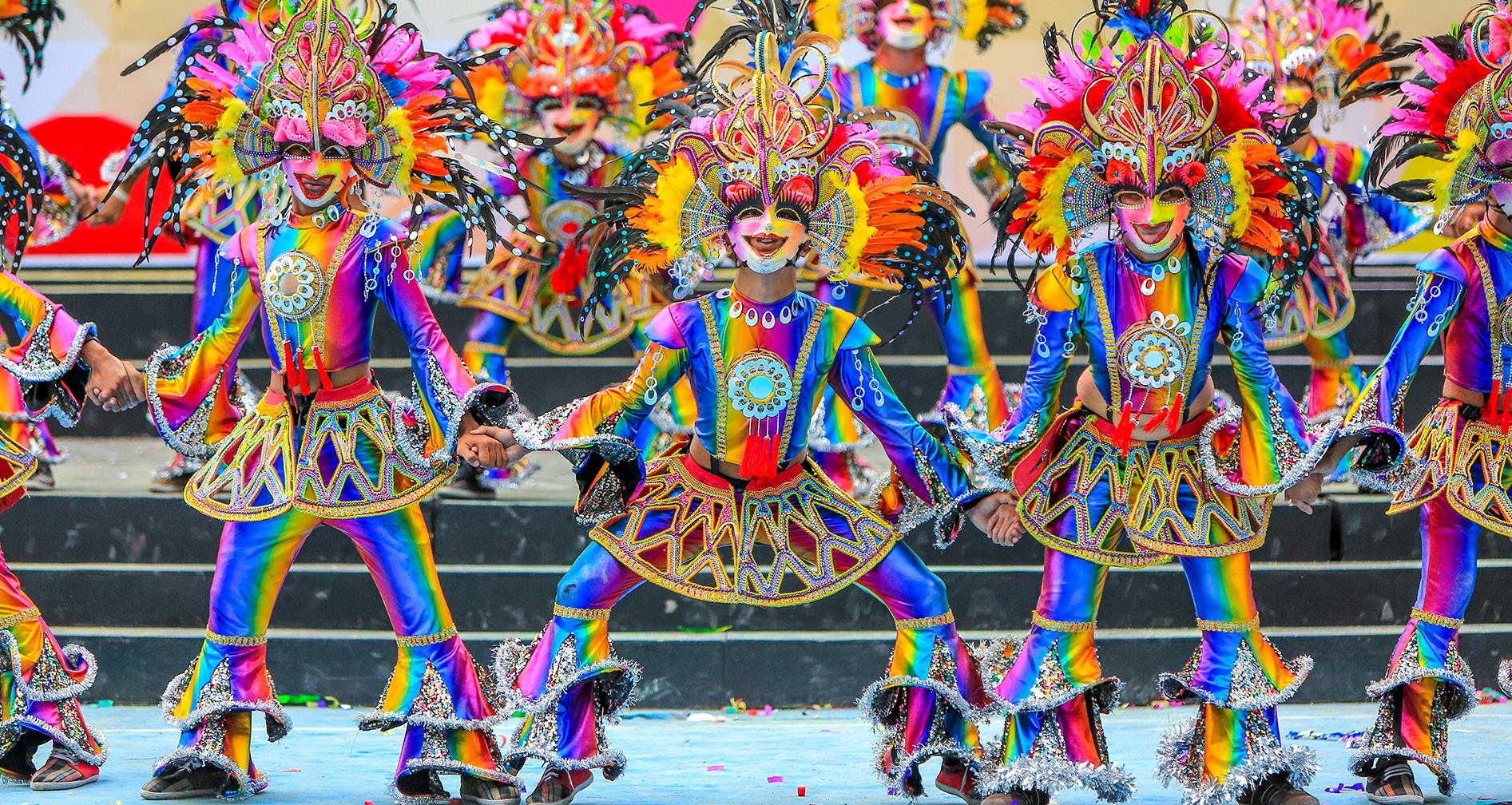

AS AN AGENCY attached to the Department of Tourism for the Philippines, the Tourism Promotion Board (TPB) Philippines markets and promotes the country both domestically and internationally as a world-class tourism and meetings, incentives, conferences, and exhibitions (MICE) destination.
This is in strategic partnership with private and public stakeholders to deliver a unique, high-value experience for visitors, significantly contributing to increased arrivals and investment in the country.
We speak to Maria Margarita Montemayor Nograles, COO of TPB, who tells us about the ways in which the board is championing the Philippines as a world-class, premier destination for every traveller.
Outlook Travel (OT): Can you talk us through the origins of TPB and its initial vision?
Maria Margarita Montemayor Nograles, COO (MMMN): TPB was first established as the Philippine Convention Bureau in 1976 before being renamed the Philippine Convention and Visitors Corporation (PCVC) in 1987. The primary goal of this institution was to boost tourism in the country by encouraging organisations to hold congresses and conventions in the Philippines.
In 2009, PCVC was restructured as TPB Philippines through the Tourism Act 2009. TPB still upholds PCVC’s previous objective and has the additional responsibility of marketing the Philippines domestically and internationally as a major global tourism destination.
OT: What are your organisation’s current goals?
MMMN: Our vision has always been to showcase the Philippines as a world-class destination for leisure and business travellers. There is so much to see and experience in our country, and there are many reasons to love the Philippines. Our unique artistry,
the stories of our communities, and breathtaking natural beauty are nothing short of wonderful, and these gifts are meant to be shared with the world.
This year, TPB also aims to assist the Philippine Department of Tourism (DOT) in achieving at least 7.7 million international visitors in the country. We surpassed our initial target last year, so we are optimistic that we will be able to reach or even exceed our target this year, especially now that our promotions are in full swing.
OT: How do you market the Philippines as a destination?
MMMN: The 7,641 islands of the Philippines are brimming with natural wonders and breathtaking scenery above and below ground. Our rich cultural heritage, shaped by different influences over centuries, adds a depth of experience to any visit.
In line with the DOT’s seven-point agenda for equal promotions, we are committed to promoting the Philippines as a destination that offers remarkable experiences on all its islands. TPB strives to highlight the unique attractions and activities each island offers, ensuring that no matter where you go in the Philippines,
“Our unique artistry, the stories of our communities, and breathtaking natural beauty are nothing short of wonderful, and these gifts are meant to be shared with the world”
– MARIA MARGARITA MONTEMAYOR NOGRALES, COO, TOURISM PROMOTION BOARD PHILIPPINES
renowned as a tropical paradise, there are plenty of activities that travellers can enjoy during the rainy season. Diving is one of the experiences people can enjoy all year round in the Philippines, with some of the best diving spots offering good visibility even during the wetter months. Our surfing attractions have also become popular in the off-season because the rain helps turn our crystal blue waters into towering waves.
you’ll discover something unique and worthwhile.
We also take great pride in the warmth and friendliness of our Filipino people, who make every visit feel like home. This genuine hospitality sets the Philippine experience apart from any other. Thus, we market the country as a destination where you can experience world-class hospitality, whether relaxing in a hotel, dining in a restaurant, or travelling from one island to another.
OT: How do you promote off-season travel?
MMMN: Although the Philippines is
The off-season also offers travellers a chance to experience the wellness services that the Philippines has to offer. Travellers can take this opportunity to relax their bodies through a traditional Filipino massage called ‘hilot’ or stay in wellness resorts where experts can provide treatments tailored to their needs.
Likewise, we collaborate with our members to create comprehensive packages that take you through our stunning islands and destinations safely, come rain or shine. Regarding promotions, we strategically place adverts on various digital and out-of-home platforms to ensure the Philippines remains a top-of-mind destination for travellers. This helps you plan your visit to our shores, regardless of the season.
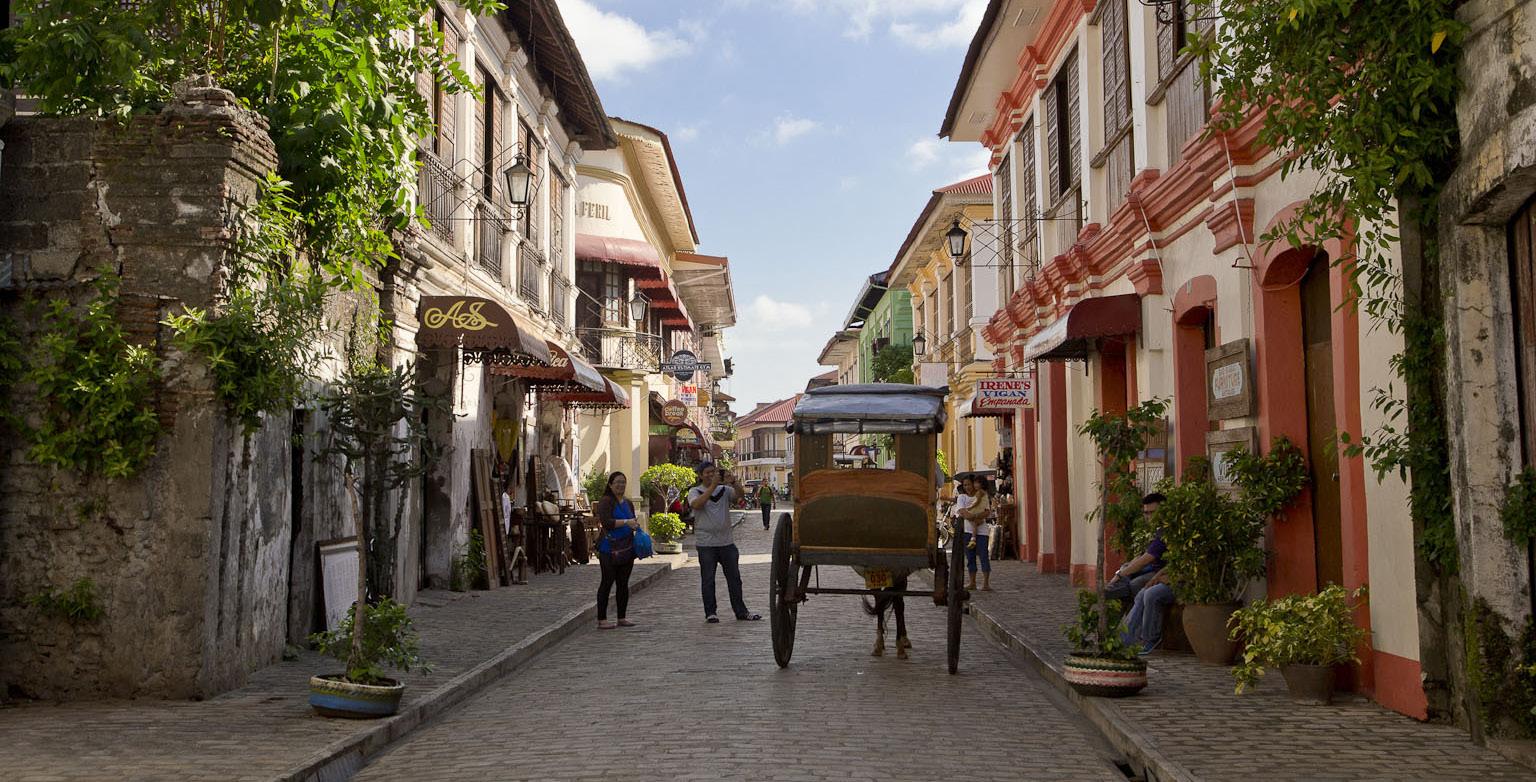

OT: Are there any interesting projects in the pipeline you wish to highlight?
MMMN: This is an exciting time for the Philippine tourism industry because numerous events are lined up in the country. TPB is already preparing for institutional events such as the Philippine Travel Exchange (PHITEX), MICE Conference (MICECON), and the Regional Travel Fair (RTF), which will be held later this year.
Likewise, we are also organising exciting projects that are in the pipeline. In July, we will launch a campaign targeting business travellers aligned with the “Love the Philippines” branding. This will strengthen our country’s status as a premier destination for businesses to hold events.
The Philippines will also host the prestigious World Travel Awards Ceremony 2024 during PHITEX in September. We are also getting ready to participate in World Expo 2025, where we will showcase the best of the Philippines and our people.
OT: Why, in your opinion, should someone visit the Philippines?
MMMN: Our tourism campaign calls
“The 7,641 islands of the Philippines are brimming with natural wonders and breathtaking scenery above and below ground. Our rich cultural heritage, shaped by different influences over centuries, adds a depth of experience to any visit”
– MARIA MARGARITA MONTEMAYOR NOGRALES, COO, TOURISM PROMOTION BOARD PHILIPPINES
for people to “Love the Philippines” because we believe that travellers will discover various attractions and experiences that they will love in the country, no matter what their interests may be.
Adventure seekers can discover thrilling activities in our country’s high mountains and deep blue seas. At the same time, other travellers can unwind from their busy days by joining wellness retreats or relaxing by our white sand beaches. Food lovers can also enjoy a feast in Iloilo City, our
UNESCO Creative City of Gastronomy, or savour freshly cooked ingredients in our seafood and farm-to-table restaurants.
On top of that, you will be greeted by the friendliest people you will ever meet wherever you go. With our world-class service, who would not love a visit to the Philippines?
OT: What are some of the country’s most unique landmarks?
MMMN: The Philippines boasts several unique landmarks that hold historical significance.
UNESCO World Heritage Sites that have withstood the test of time and bear witness to our country’s rich history include the Walled City of Intramuros in Manila, the Rice Terraces of the Philippine Cordilleras in Northern Luzon, and the Historic City of Vigan in the Ilocos region. The Chocolate Hills in Bohol, recently hailed as the Philippines’ first UNESCO Global Geopark, adds to the country’s long list of iconic landmarks.
Apart from historical sites, our country is also blessed with stunning islands that consistently rank among the best in the world. A few examples are Boracay, which is known for its white sand beaches and romantic sunsets; Palawan, which has clear blue waters surrounded by towering

limestones; and Cebu, which has a rich marine life that both snorkellers and divers would love to witness.
OT: What trends are transforming the tourism industry in the Philippines, and how are you utilising them?
MMMN: Several significant trends are shaping the travel landscape in the post-COVID-19 pandemic setting. Data shows a growing interest in leisure travel, unique cultural experiences, bespoke wellness services, and venturing to less-visited destinations.
Digitalisation is also a major factor in transforming the Philippine tourism industry. Thus, we at TPB offer a membership programme that can equip tourism stakeholders with the skills and knowledge they need in this digital era.
Our programme offers access to market intelligence so members can utilise data-driven insights to ensure that their offerings resonate well with travellers’ growing preferences, providing them with tailored and enriching experiences that capture the unique essence of the Philippines. The programme also offers training on digital marketing to help tourism stakeholders promote their services and products globally.
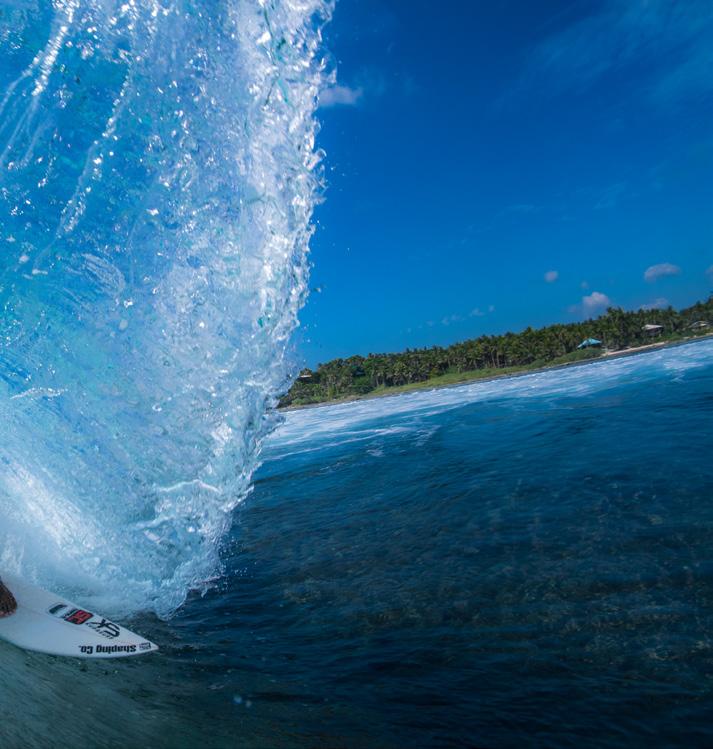
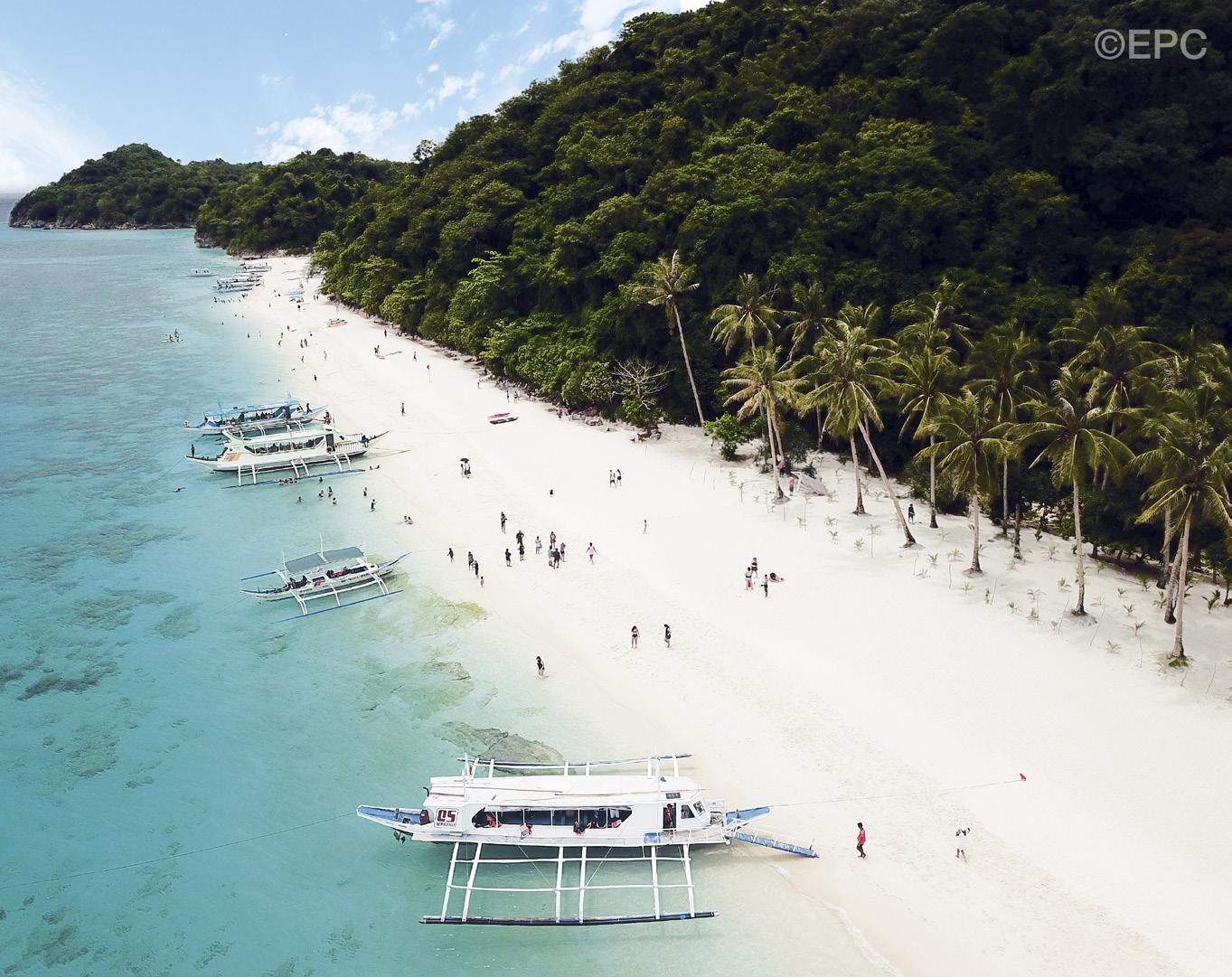
In addition, TPB also launched the enhanced Travel Philippines app, which makes it easier for tourists to look for destinations and activities in our country’s different regions. The app features accredited hotels, resorts, and tourist guides, making it easy for travellers to plan their vacations with a few taps.
There is also greater demand for luxury travel in the Philippines. TPB seized this opportunity by organising events that allow our local tourism stakeholders to partner with international businesses catering to luxury travellers. We also promote our top-of-the-line establishments and private resorts on magazines and media platforms, providing a glimpse of the exclusive and tailored experiences that await in the Philippines.
OT: What challenges does the tourist industry in the Philippines face?
MMMN: People only know the Philippines as a beach or dive destination, for which we have received multiple recognitions. However, there are more amazing things to discover in our country – our culinary offerings, UNESCO World Heritage Sites, natural wonders, and
unique living traditions that tourists will experience and love.
OT: Are you optimistic about the future of the tourism industry in the Philippines?
MMMN: I’m optimistic because I’m backed by a wonderful team and guided by the clear vision of the Secretary of Tourism, who empowers me in my mission to carry out TPB’s mandate.
I have also seen the amazing things our country offers and experienced the superb, world-class level of service we provide. At the end of the day, Filipino hospitality will always be our number one asset as we compete in the global tourism industry. On top of that, multiple local destinations also win international awards every year, serving as a testament to the Philippines’ beauty. Due to these factors, I do not doubt that many travellers will want to visit and fall in love with the islands.

Tel: +63 8525 9318 to 27 info@tpb.gov.p www.tpb.gov.ph

As a world-leading community for decision-makers in the travel industry, Connections Luxury is a data-driven, luxury travel pocket toolkit. Sam Blunsdon, Head of Commercial and Tourism Promotion, provides us with a deep dive into
the company’s success and partnership with TPB Philippines
OT: Firstly, can you talk us through the origins of Connections Luxury and your founding mission?
Sam Blunsdon, Head of Commercial and Tourism Promotion (SB): Connections Luxury was founded in 2014 with a belief in the power of human-to-human interaction. As a result, we developed the pioneering Connections Way format, which focuses on creating positive, shared emotions that fast track meaningful, long-lasting business relationships. 10 years on, Connections Luxury is now a world-leading community for decision makers in the travel industry and has run over 50 events globally across more than 30 destinations, connecting thousands of individuals together.
The luxury travel industry is centred around people, so it’s important to us that they are at the heart of everything we do.
OT: Please briefly introduce us to Connections Luxury and tell us more about the Connections Way.
SB: Connections Luxury is a worldleading community for decision makers in the travel industry.
Think of us as your data-driven, luxury travel pocket toolkit. Our directory of over 3,000 luxury travel decision makers includes vetted suppliers, buyers, media, charities, and destinations that unlock countless opportunities for meaningful business to happen fast.

SAM BLUNSDON, HEAD OF COMMERCIAL AND TOURISM PROMOTION
Nothing beats the power of humanto-human interaction. Our events are unlike any other in the trade calendar, built on the Connections Way of doing business, which combines one-to-one meetings with authentic, local experiences to create a positive, shared emotion to quickly build the trust necessary to conduct future business.
Connections Luxury is a powerful and evolving year-round solution to communicate, educate, and inspire our industry.
OT: How have you seen the luxury travel sector evolve since the inception of the company?
SB: This year marks our 10th anniversary and, as such, we have seen the luxury travel landscape shift massively. Whereas luxury was once seen as materialistic, with a focus on opulent accommodations and highend amenities, there has been a shift towards experiential luxury over the more recent years.
Today’s discerning travellers seek unique and authentic experiences which allow them to become immersed in the local culture and environment, with a focus on personalisation, sustainability, and those truly one-of-a-kind experiences. At Connections Luxury, our whole essence is about creating meaningful business relationships, and over the years, we have seen how the power of human-to-human connection has really driven the success of luxury travel and support for the industry.
OT: As a key partner for many notable tourism boards across the world, how does Connections Luxury ensure their success?
SB: It is important for any destination or partner to truly understand the needs of the client, alongside their strengths, challenges, and how Connections Luxury can support them on their journey and share their story with our international community.
In essence, each tourist board


wants to drive more luxury travellers into their destinations and showcase their unique products, services, and culture to international markets. Success comes from gaining a deep understanding of this, along with understanding the minds of our community and luxury buyers and bridging the gap so more effective business can be achieved. A lot of the time, all our destinations have so many incredible products and services. It’s about working with them to unlock these secrets about what makes them
special and promoting it to the world.
OT: How does Connections Luxury incorporate the culture of each country when working with different tourism boards?
SB: At Connections Luxury, we believe that the essence of luxury travel lies in authentic cultural immersion. To achieve this for all our events, we work with local companies and experts to advise us on what makes each destination unique.
A key component of our events is

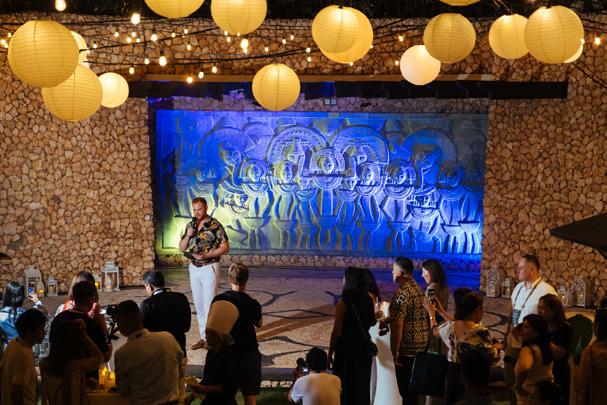


working with a local digital media controller. They have a breadth of knowledge about their destination and support us in finding hidden gems we may not know about.
We also make sure to incorporate a mixture of unique venues, as well as local and international luxury hotels, as our event partners to spotlight the variety of products each destination has.
The final step is making sure authentic, local experiences are injected into the event throughout


one-to-one meetings, group activities, cultural performances, and event entertainment, working collaboratively with local artisans, chefs, experience providers, musicians, and cultural experts to create experiences that reflect the true spirit of the destination.
OT: As the organisation runs its second edition of Connections Luxury Philippines in collaboration with TPB Philippines, what can people expect from this year’s partnership?
SB: This year’s Connections Luxury Philippines event was hosted from 19th – 22nd May in the beautiful Island of Boracay. We welcomed 37 handpicked luxury agencies from across the globe, including areas such as the US, UK, Europe, Asia Pacific, the Gulf Cooperation Council (GCC), India, and Northern Asia to meet and conduct business with 35 of the finest luxury travel products across the Philippines, putting a spotlight on this incredible country and how it’s a top destination for luxury travel.
With the event hosted in Shangri-La Boracay, Crimson Resort and Spa Boracay delegates were able to enjoy meetings injected with authentic, cultural experiences, showcasing the wonders the Philippines has to offer the luxury market.
Experiences included the Ati-Atihan


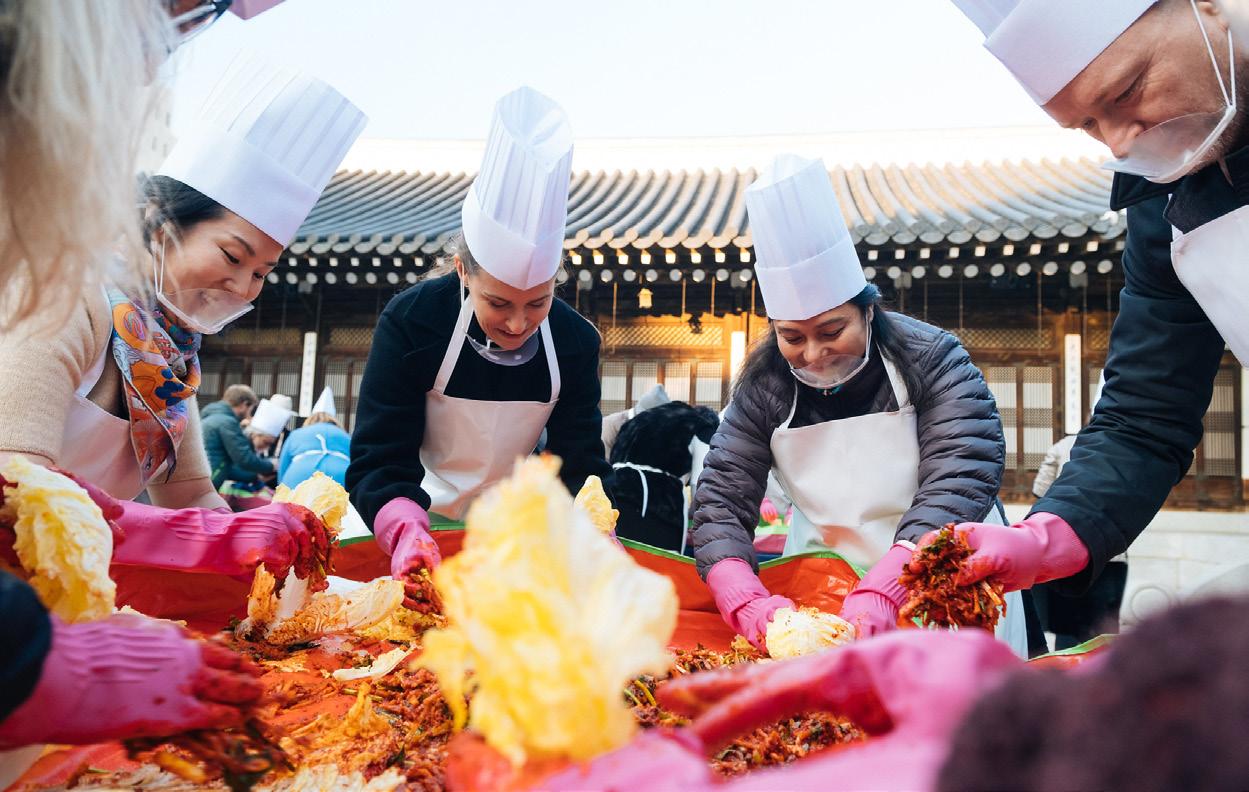
Festival, fish house making, halo-halo, and hydroponics, as well as working with local companies such as Distileria Barako to highlight local products. The aim of the event and partnership was to drive more luxury travellers into the destination and promote luxury Filipino products to an international stage.
The Philippines has so many incredible luxury products, and what is apparent from working with the local private sector is that hospitality and people are what make the destination shine, so working with TPB on this year’s products was about showing said hospitality and authentic experiences to our international community.
OT: How is the collaboration set to champion the Filipino tourism sector?
SB: Our collaboration with TPB is set to champion the Filipino tourism sector by bringing international attention to the country’s luxurious offerings and hidden gems. By highlighting the Philippines’ diverse products, from its pristine beaches and worldclass diving spots to its rich cultural heritage and culinary delights, we aim to attract high-net-worth individuals who value unique and meaningful travel experiences. This influx of luxury travellers will boost the local economy, create jobs, and enhance the global perception of the Philippines as a toptier travel destination.
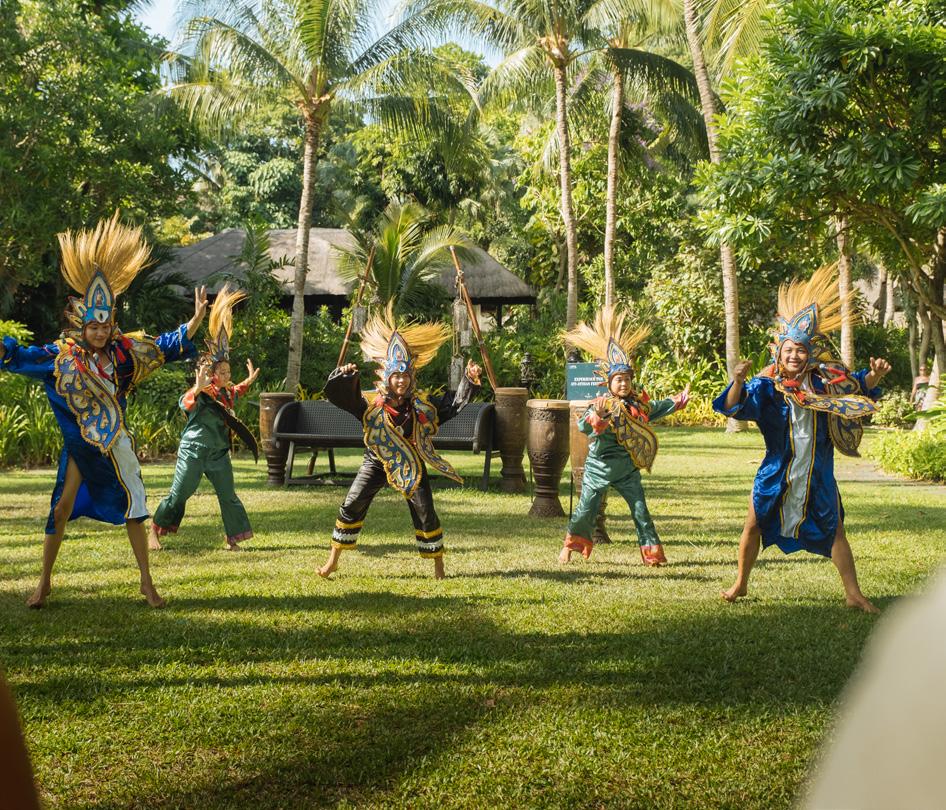
The collaboration is important for many reasons:
• This was an opportune time for the Philippines and TPB to solidify its stance as a preferred luxury destination in Asia, offering authentic experiences that leave a lasting impression of luxury with the world-renowned Filipino brand of hospitality.
• In 2023, the Philippines saw a significant boost in luxury travel, welcoming 5.45 million international visitors and generating USD$8 billion in tourism transactions.
• The Filipino government, through its National Tourism Development Plan 2023–2028, aims to further enhance the luxury tourism sector by improving infrastructure, promoting sustainable tourism practices, and increasing marketing efforts globally.


“At Connections Luxury, we believe that the essence of luxury travel lies in authentic cultural immersion. To achieve this for all our events, we work with local companies and experts to advise us on what makes each destination unique”
–
BLUNSDON, HEAD OF
OT: Looking ahead, how will the partnership between Connections Luxury and TPB Philippines evolve the country’s tourism industry over the next five years?
SB: As the Philippines’ positioning as a luxury destination strengthens, bringing more investment into the country, such as more highend accommodations, efficient transportation links, and bespoke experiences, the partnership is set to grow, and the Philippines will be seen more frequently as a key player for luxury industry events and a top destination for luxury buyers and clients within Asia.
Our aim is to continue bringing Connections Luxury Philippines to the forefront, thereby supporting the local luxury private sector to connect with international buyers and driving more luxury spend.
The last two years have been an excellent educational piece for the international community, with Filipino luxury products bridging the gap
between buyers’ and clients’ needs and the luxury services they provide. We aim to close this gap further over the next five years and support the destination in sharing its story with the international market and elevating what makes the Philippines so special for any traveller.



Solaire Resort Entertainment City (Solaire), ideally situated on the picturesque Manila Bay in the Philippines, is the country’s first luxury integrated resort. Boasting two impressive towers, Bay Tower and Sky Tower, the hotel offers a total of 793 well-appointed rooms, suites, and villas, each containing modern in-room features and amenities.

The resort’s gaming floor, split across two expansive levels, stands out as a considerable haven for those who have graced even the world’s most luxurious casinos. Boasting over 2,300 slot machines and more than 400 gaming tables, it rivals the likes of Macau and Las Vegas. The gaming floor also features Electronic Table Games that can be enjoyed in unison by up to 200 players, who can view their progress on one of the world’s largest curved LEDs. Solaire Club, an exclusive member’s experience, awaits Solaire’s gaming elite – an entire floor where unmatched service and stunning culinary offerings await discerning guests.
Duly awarded the Best AsiaPacific Integrated Resort and Best Gaming floor at the 2023 IAG Academy IR Awards, the facility’s excellence within the Asian gaming and hospitality industry can be attributed to its innovation and world-class service.

which boasts a state-of-theart Jacuzzi, a dry sauna, a steam room, and ten treatment rooms. Visitors can immerse themselves in the centre’s numerous massage facilities, alongside a salon with a variety of beauty and pampering services for the ultimate relaxing experience.
‘‘Duly awarded the Best Asia-Pacific Integrated Resort and Best Gaming floor at the 2023 IAG Academy IR Awards’’
Solaire’s vast and impressive swimming pool enjoys prideof-place at beneath the warm Manila sunshine. Guests can enjoy taking a dip in the cool water or sipping on their cocktail of choice from the wellstocked poolside cabana.
Nearby, the extensive 14,000-square foot (sqft) spa and wellness centre awaits,
In addition, a modern and wellequipped gym offers guests firstclass facilities to remain on top of their fitness game, whilst The Sky Range indoor shooting range is an exclusive luxury hub for target practice. Featuring a 25-meter-long shooting bay with 15 shooter lanes, alongside the latest technology in modular ballistic panels to ensure maximum safety, this unique offering certainly sets Solaire apart from the competition.
DELUXE DINING
Guests will also be delighted by the extensive dining options at Solaire, which include an impressive 13 restaurants and bars, plus four dining outlets
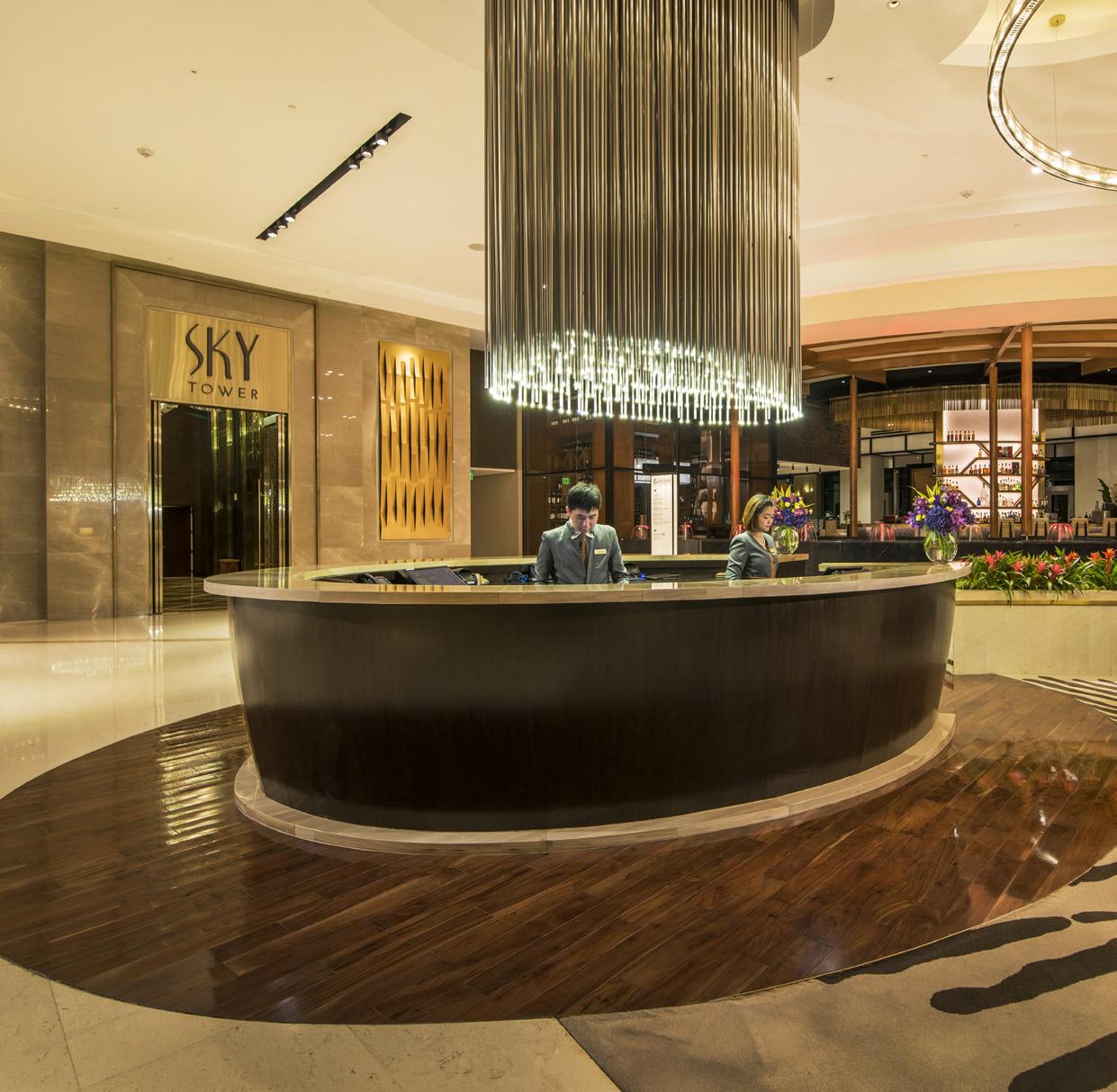
located at the VIP area. A feast for the senses, Solaire presents guests with an incredible range of delicious cuisines - from Korean fried chicken to traditional Filipino dishes, alongside three standout signature outlets that blend global cuisines with true Solaire flavour.
Finestra Italian Steakhouse restaurant features dishes such as Steak Florentine, pasta handcrafted daily, and Balik Salmon. It was acknowledged as one of Philippine Tatler’s Top 20 Best Restaurants in Manila in 2020.
‘‘Only the finest properties in the world achieve the Forbes Travel Guide 5-star rating’’
Yakumi restaurant presents a fresh and extensive selection of sushi, sashimi, and seafood flown exclusively from Tokyo’s Toyosu Fish Market, whilst Red Lantern restaurant offers tastes and flavours of China’s regional specialities.
For whisky connoisseurs, The Whisky Bar at Sky Tower presents an opportunity to sample some of the best whisky from across the globe, whilst music enthusiasts can enjoy countless live music experiences, including live piano music at Oasis Garden Café.
5-STAR LUXURY ACCOMMODATION
Only the finest properties in the world achieve the Forbes Travel Guide 5-star rating, one such property being the Sky Tower at Solaire, which has won the prestigious accolade and

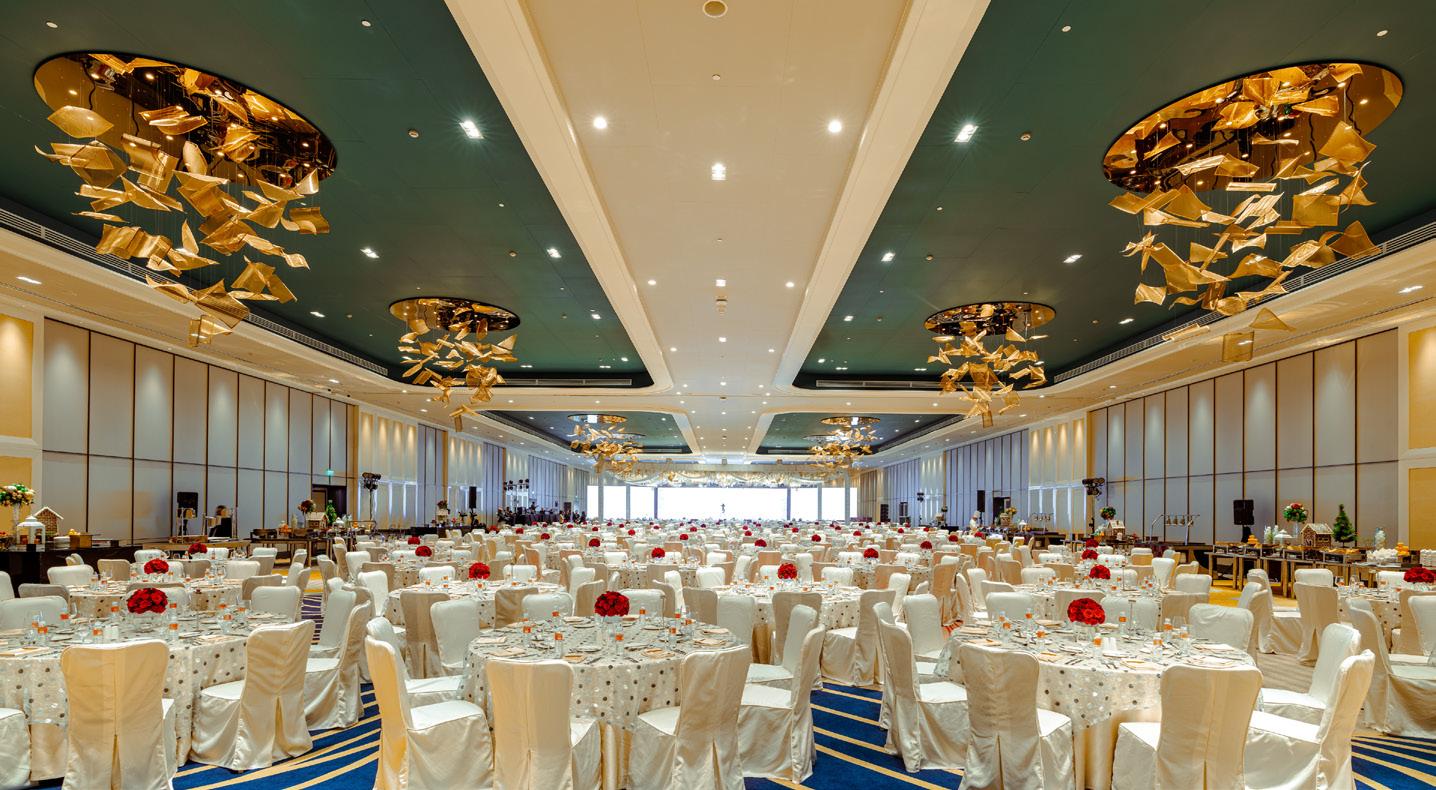
been listed as one of the World’s Most Luxurious Hotels for eight consecutive years. Renowned hotel and casino architect Paul Steelman designed the magnificent addition to the Manila resort’s growing complex which oozes opulence, from the entrance hall’s Lasvit glass chandelier to its unrivalled, panoramic views of Manila Bay. Sky Tower’s 312 exclusive rooms range from 700sqft to an impressive 2,023sqft. The 1,700sqft Signature Suite, a one-bedroom suite featuring a huge king bed and separate


dining and living spaces, offers couples and families sheer comfort and luxury. A 55-inch flat-screen television and a well-stocked pantry only contribute to the lavish feel of this accommodation.
Entertainment options are endless at Solaire, which prides itself on staging world-class productions by hosting hit Broadway shows, concerts, and unmissable theatre performances at its 1,740-seated theatre. Featuring a state-of-the-art Constellation

Acoustic System, theatre goers can enjoy rich audio paired with staggering visuals.
Furthermore, sophistication and style collide at The Shoppes, Solaire’s luxurious shopping arcade, which feature fashion brands such as Fendi, Louis Vuitton, and Prada, and Jewellers such as Bvlgari, Cartier, and Tiffany & Co. The Solaire Boutique, the resort’s signature shopping site, offers guests an opportunity to collect a unique souvenir.
In addition to its use as a consumer hotel, Solaire boasts versatile venues that have historically hosted impressive events such as corporate conferences, food fairs, and weddings. The Forum, furnished with impressive art pieces and the latest light and sound systems, presents a perfect
venue for meetings and events, whilst the Solaire Grand Ballroom, with 5-star banquet and catering services at guest’s disposal, can be tailored to suit any need.
To experience the true luxury against the stunning backdrop of the idyllic Manila Bay, Solaire presents not just a hotel resort, but a site of superiority.
+632 8888-8888
www.solaireresort.com

Don your most comfortable dancing shoes and vibrant clothing as you prepare to immerse yourself in the torrent of colourful and pulsating energy that is the Masskara Festival
WITH ORIGINS TRACING back to the 1980s, the Masskara Festival in the city of Bacolod is one of the Philippines’ largest annual festivals, boasting thousands of local and international visitors every year with an array of high-energy events, mouthwatering food, flamboyant parades, and sequin-adorned costumes.
Initially born out of crisis when the province’s main livelihood, sugar, was priced at an all-time low, resulting in one of the worst famines of the country’s history, the festival was created as a way to lift the spirits of the people and bring smiles back to their faces.
Hence, everywhere you look, you’ll see ornately decorated masks with smiling faces worn by performers and guests alike and even used as towering décor.
The smiling masks are a declaration of the city’s resilience and jubilant spirit, with the festival a testament

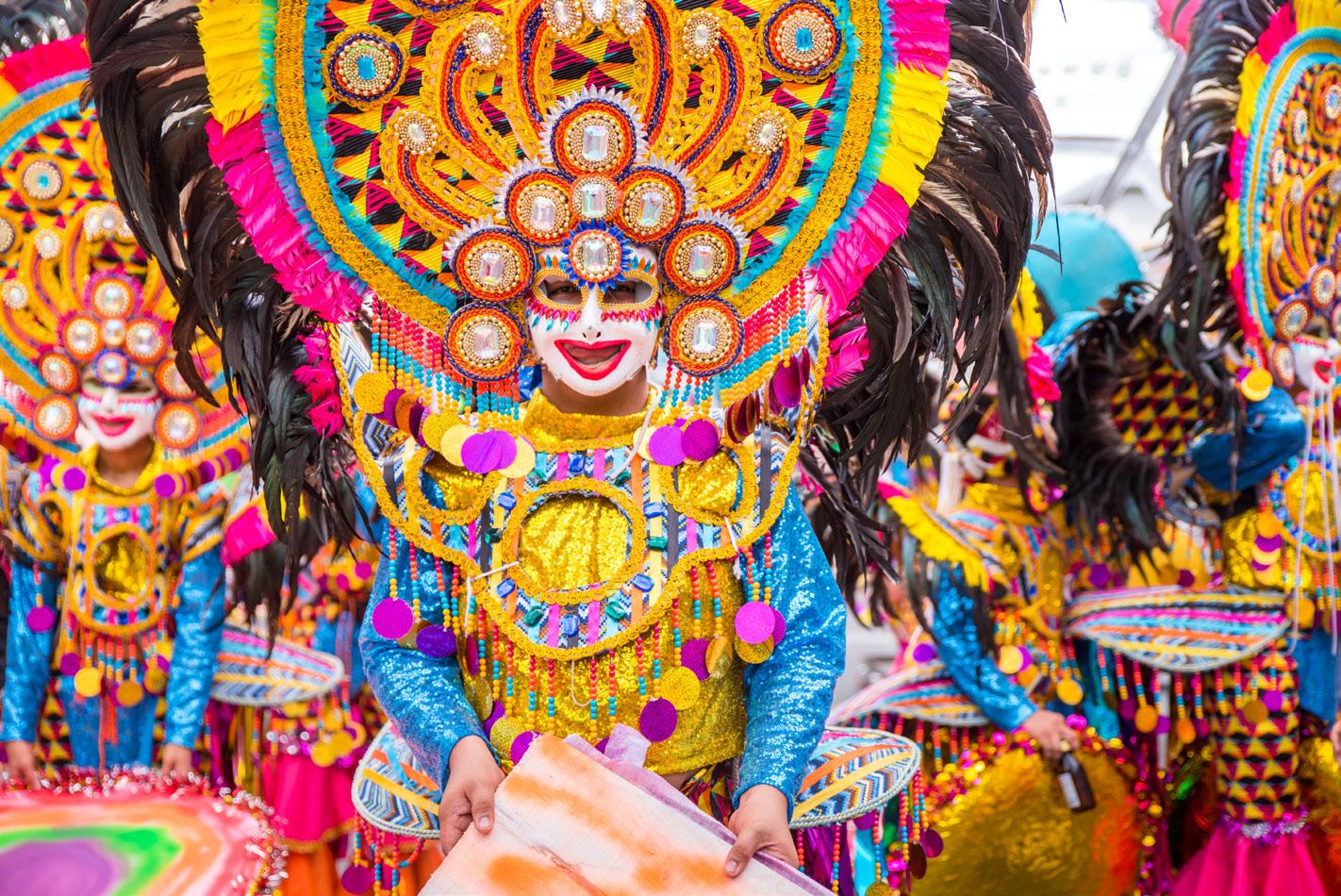
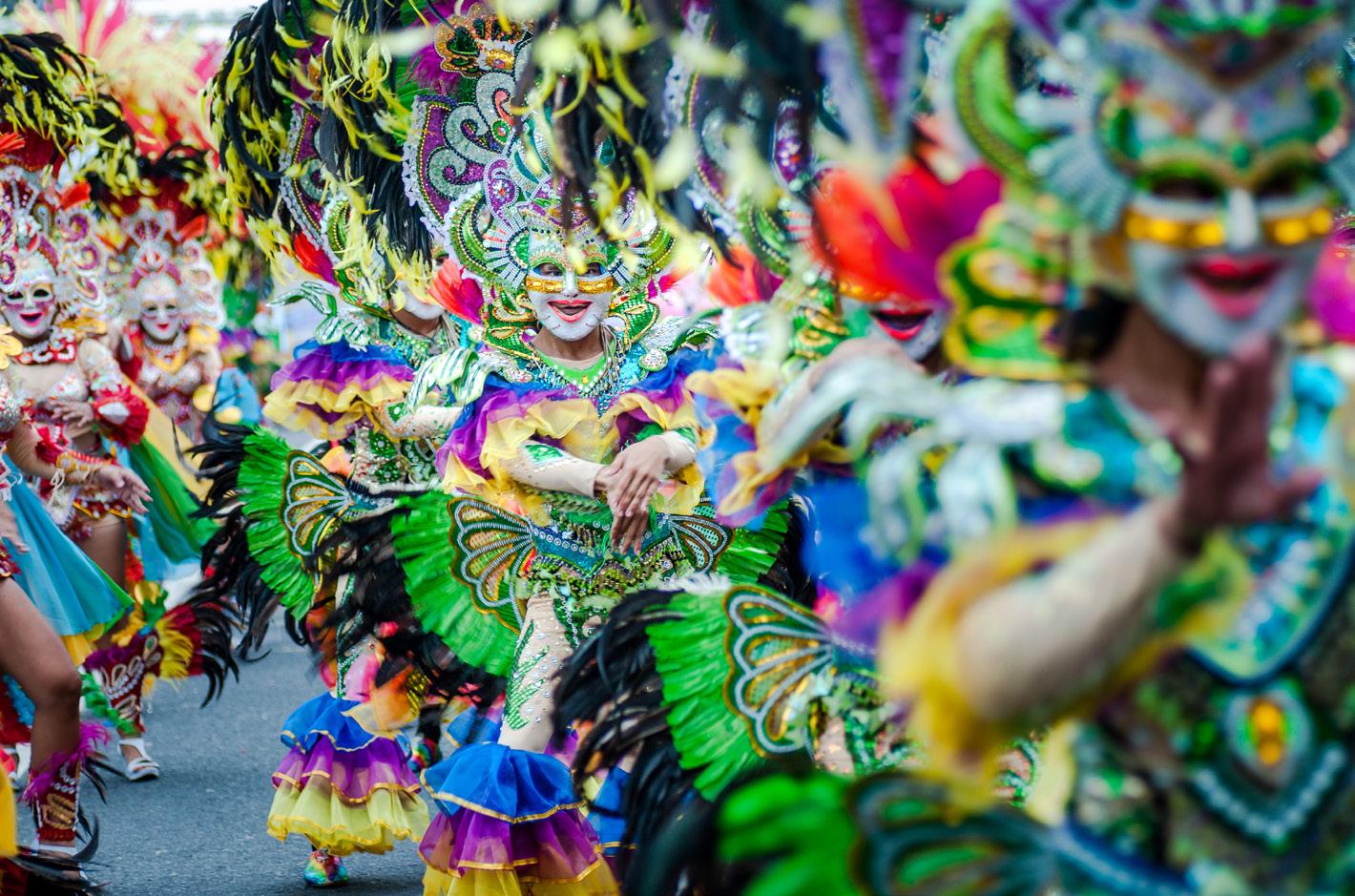
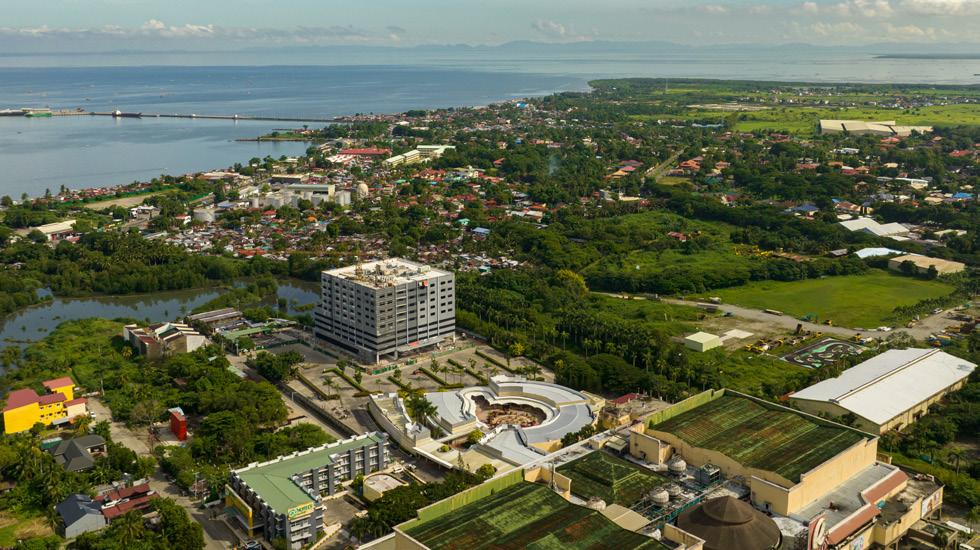
to the local people’s ability to turn adversity into a source of pride and joy. The masks are more than just accessories; they are an art form that tells a story with each handcrafted detail.
With an invigoratingly electric atmosphere, the streets of the city are converted into a canvas for dance competitions, street parties, tables for local craftsmen to display their
artistry in mask-making, and countless exhibitions that encapsulate Bacolod’s rich heritage and traditions.
A captivating and vibrant celebration, the festival features a harmonious blend of different styles of live music, from folk songs to Latin beat mixes and Philippine jazz, all accompanying the endless joyous dancing in the streets and creating a rhythmic pulse that draws people in from across the globe to participate in the revelry.
The festival culminates in a grand finale of spectacular fireworks and lights called the Electric Masskara – a night parade that features choreographed dancers wearing costumes and masks illuminated with neon and LED lights.
This final surge of energy is the collective embodiment of the hope, enthusiasm, perseverance, and vivacity of the Filipino people, ensuring the vibrancy of the festival resonates for years to come.

NUSTAR Resort and Casino, the first and only integrated resort in the Visayas and Mindanao, is the biggest luxury and lifestyle destination outside Metro Manila.
As the ultimate lifestyle and entertainment destination in the region, NUSTAR has been redefining luxury in gaming, entertainment, leisure, dining, and retail in Cebu and the rest of southern Philippines with its comprehensive range of amenities.
Since its opening in May 2022, NUSTAR has established itself as a premier venue for various events, from the prestigious Asia-Pacific Economic Cooperation Business Advisory Council III meeting to international boxing matches, boxoffice concerts, New Year’s Eve countdown parties, and the Sinulog, one of the grandest festivals in the Philippines.
NUSTAR is strategically situated on Kawit Island, off the spectacular coast
of the southern district of Cebu and right in the middle of the city’s emerging business and lifestyle district, the South Road Properties. Set against a backdrop of stunning sea views, lush tropical landscapes, and an ever-evolving city skyline, NUSTAR guarantees guests an unforgettable experience from the moment they arrive.
The sprawling resort complex, which has a gross floor area of 300,000 square metres, is about 30 minutes from the Mactan-Cebu International Airport via the Cebu-Cordova Link Expressway (CCLEX),

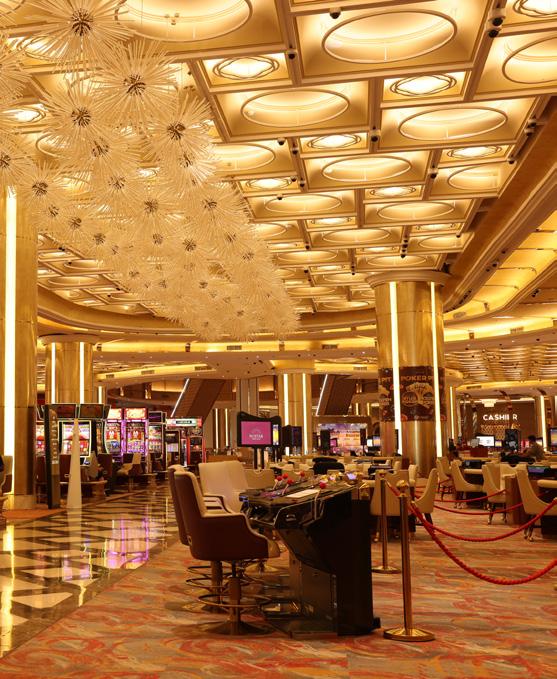


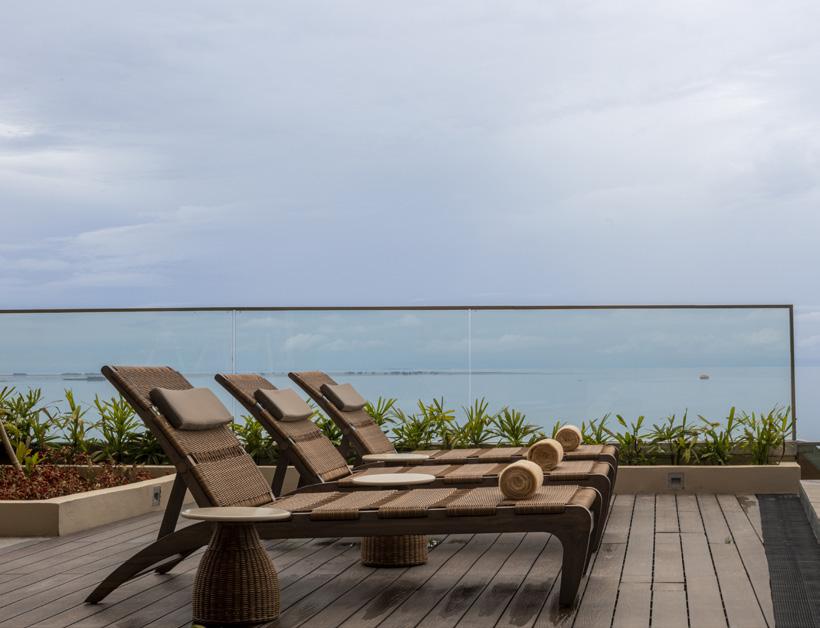
making it a short and scenic ride to the resort for guests. Alternatively, water transfers will be available through the Wharf, the integrated resort’s 35-metrelong private dock.
Guests can savour exquisite flavours from around the world at NUSTAR’s specialty restaurants. Now open are Italian steakhouse Il Primo; Filipino casual dining restaurant Fina; Xin Tian Di, a Southeast Asian restaurant that is open 24/7 on the casino floor; Axis Entertainment and Sports Bar, which hosts nightly live entertainment; and the first and only Mott 32 in the Philippines, renowned for its unique culinary flavours, innovative cocktails, and stunning interiors by Joyce Wang. Also on offer are coffee, cocktails, and light bites at the Fili Lobby Lounge, as well as an extensive and scrumptious selection of local and international cuisines at Fili Café, which has several action stations, including the first and only live lechon roasting station in the country. In addition to Kazuwa Japanese Restaurant, Barcino, Abaca Baking Co., Café Laguna, Koshima by Nonki, Tom N Tom’s Coffee, Good Luck Hotpot, Taiwan Sha-bu Sha-bu, and Yeonwha by Kaya, more dining options will be unveiled soon.
NUSTAR is home to a two-level casino with a mix of gaming tables and machines peppered across a 21,000 square metre floor area, making it the largest and most varied gaming floor in the region. With a wide array of table games, slot machines, plus a gaming stadium and exclusive VIP rooms, guests can discover an exhilarating gaming experience and the thrill of winning.
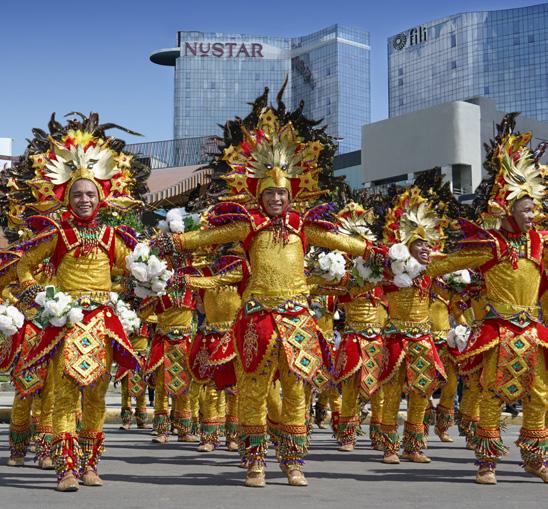
With its aggregate gross floor area of over 4,000 square metres, the meetings, incentives, conventions and exhibitions (MICE) area at NUSTAR, with its flexible ballrooms, is the largest outside Metro Manila. The NUSTAR Convention Center alone can host up to 2,000 guests, making it the perfect venue for private, corporate, and entertainment events. It is composed of three banquet halls, a lobby, a pre-function foyer and hallway, an open area lounge, and a bridal lounge. It also offers a range of dedicated spaces for different needs, and an open area lounge that is perfect for casual gatherings, networking sessions, and after-parties for guests. Furthermore, the spacious lobby, measuring 179 square metres, enhances the overall experience for guests as they arrive at the venue, with its sweeping view of Cebu’s clear blue waters.
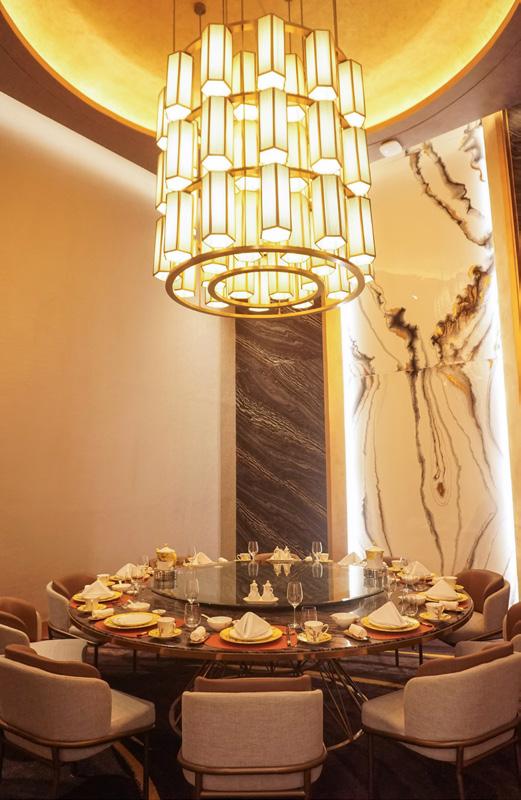
NUSTAR is the flagship project of Universal Hotels and Resorts, Inc. (UHRI), a privately owned corporation of the Gokongwei Group focused primarily on gaming and integrated resort developments across the Philippines. We have luxury accommodations, with Fili Hotel being the first hotel tower to rise within the property; and coveted luxury brands at The Mall, also a first in the Visayas and Mindanao.
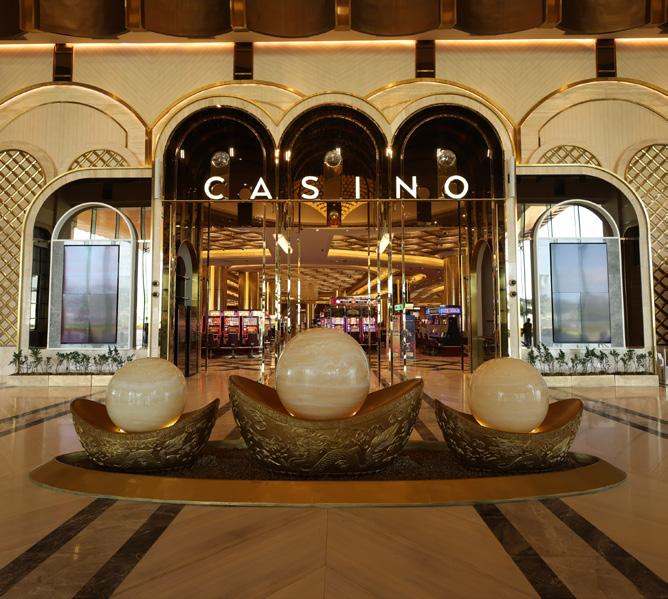


Immerse yourself in the luxury and warmth of Filipino hospitality at Fili Hotel, located at the vibrant NUSTAR Resort in Cebu.
Fili Hotel brings together first-rate amenities, exceptional service, and that genuine Filipino touch.
“Fili Hotel stands as the first authentic Filipino 5-star hotel in the country,” says Alan Teo, CEO of NUSTAR Resort and Casino.
Your Fili experience begins upon arrival with Fili’s Signature Welcome Drink, crafted using fresh local ingredients.
Guests staying in suites also get access to The Executive Club, which offers exclusivity, comfort, and fantastic views.

Inside Fili Hotel’s 379 spacious guest rooms and suites, you’ll find utmost relaxation. The contemporary Filipino interiors make you feel at home. Get incredible views of the sea or city skyline and all the space you could need. The beds are comfortable, so you can get a good night’s sleep and even sneak in a nap or two. The marble-lined bathrooms feature freestanding bathtubs to soak away stress and unwind.
Each room features a smart TV, high-speed internet access, in-room dining service, mini bar and Nespresso coffee machine, premium bath amenities, an in-room safe, IDD telephone and voicemail.
After turndown service, another sweet surprise: the Fili Hotel Signature Otap Puff, a reimagining of the beloved Cebu delicacy, elevated with harmonious textures and flavours.
Head over to Hagod Spa at Fili Hotel for extra pampering and revitalising treatments including

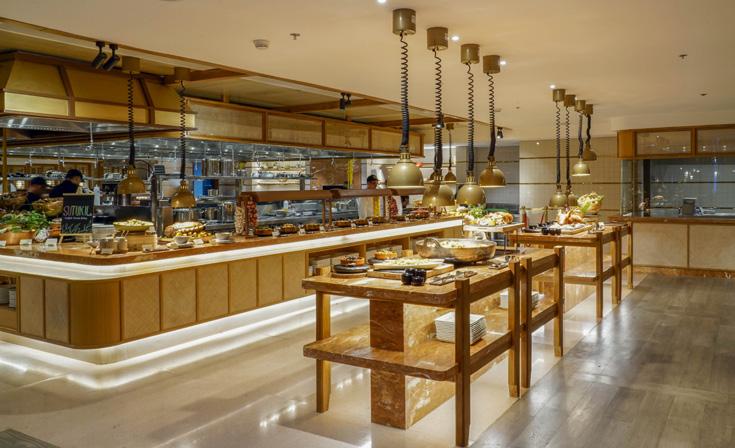
signature massages, facials, and body scrubs. Fili Hotel is also equipped with a state-of-the-art fitness center and outdoor pool with a beautiful view.
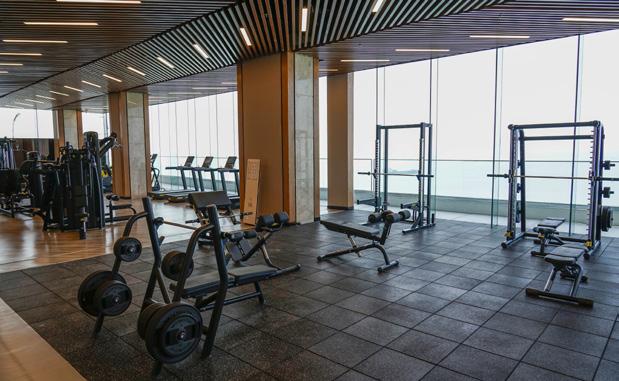
Fili Hotel celebrates the Philippines’ heritage and pride, with Filipino creativity and craftsmanship throughout. This distinct experience is enriched by Filipino culture and the local way of life.
Good food is a must, and guests are spoilt for choice at Fili Hotel, a great place to indulge in international flavours and local favourites.

Then there’s the world-famous Mott 32 from Hong Kong, inside NUSTAR Resort and Casino and mere steps away from Fili Hotel. This awardwinning restaurant serves “the best Peking duck in Hong Kong” and many other delights. Don’t miss Mott 32’s signature cocktails such as Forbidden Rose, Jade Road, and Hanami. There’s also the Fili Lobby Lounge on the ground floor of the hotel which serves salad shakers, sandwiches, pastries, desserts, coffee, cocktails, mocktails, and other drinks. Try the FILIpiniana or Dulce de Fili, and order the
Lechon Empanada, Chocolate Malagos Muffin and Bacon Ensaymada. You can also get Otap Puffs here in three varieties.
Fili Hotel promises a luxurious 5-star experience that is distinctly Filipino and uniquely Fili.

The newest uniquely Fili experience is Crucero, an unforgettable sunset cruise that’s a feast for the senses. Behold the stunning views, spot the CCLEX Bridge, enjoy the fresh air, and watch the sky change colours as day turns into night. Enjoy live entertainment and dig into delicious food curated by talented chefs.
Crucero is great for intimate celebrations and creating memorable moments. It’s more than just a cruise, it’s a uniquely Fili experience that’s for the books.

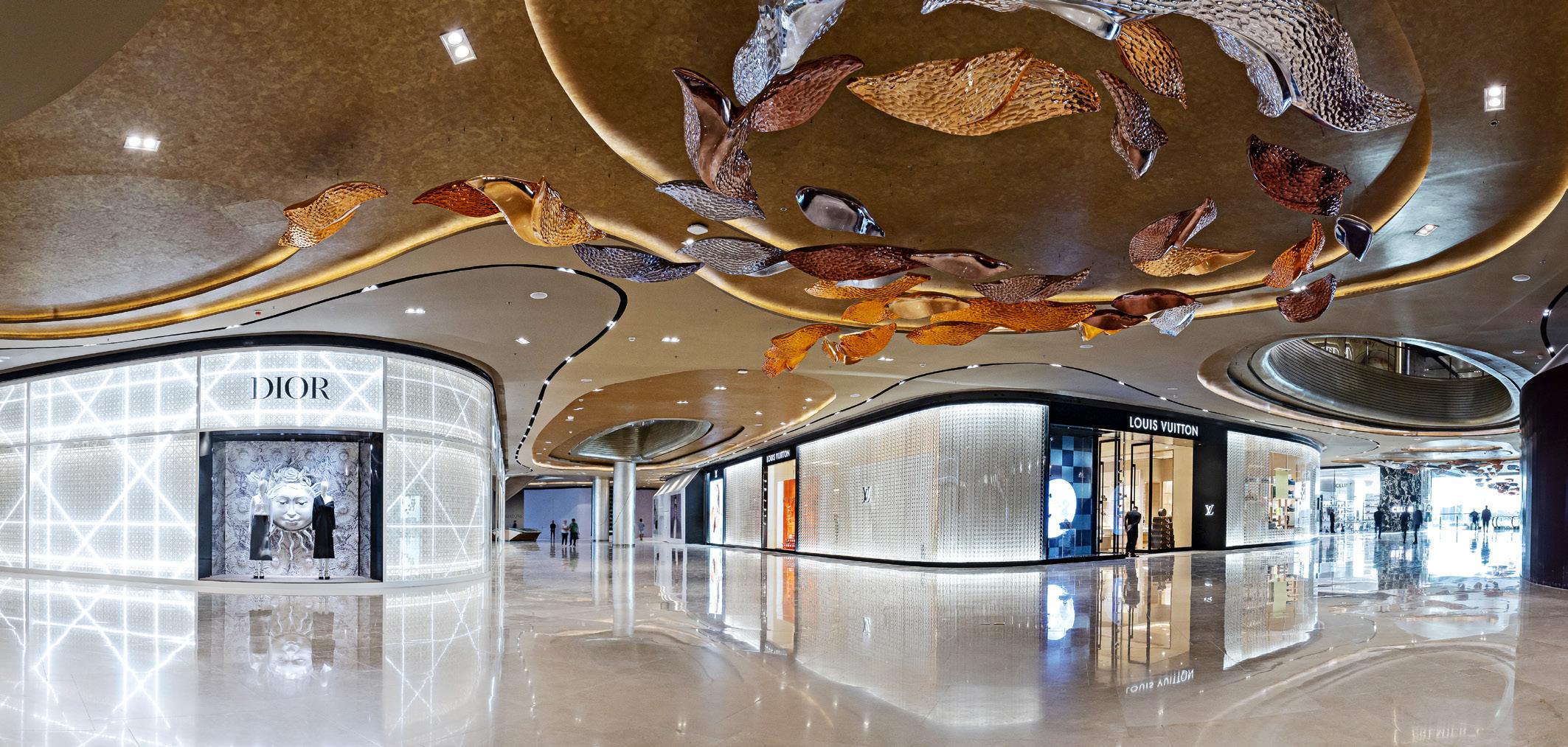
As the newest luxury shopping destination in the country and the first and only of its kind in the Visayas and Mindanao, The Mall | NUSTAR Cebu offers an exceptional retail experience tailored to the discerning taste of its esteemed clientele.
At The Mall, guests can explore a curated selection of top global luxury fashion and retail brands. From iconic fashion houses now open such as Louis Vuitton, Dior, Gucci, Bulgari, Tiffany, Celine, and Saint Laurent to popular brands such as, Givenchy, Ferragamo, Burberry, Loewe, Tory Burch, Off-White, BOSS, Porsche Design, RIMOWA and multi-brand store UNIVERS, The Mall boasts a host of upscale boutiques and specialty stores under one roof. Upcoming additions to the luxury mall will include
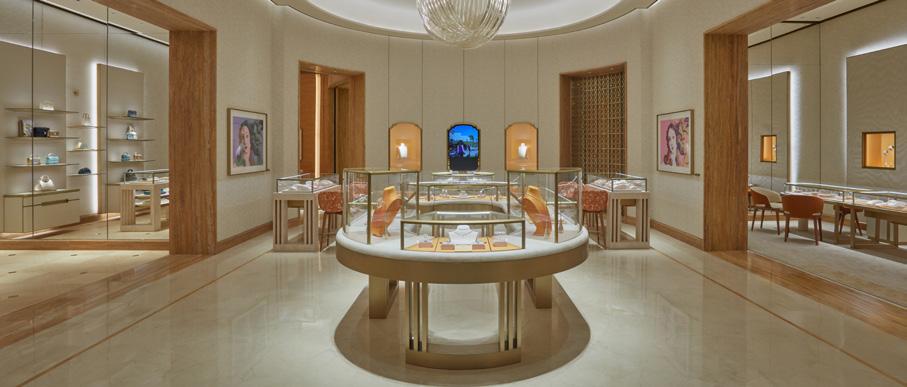
Balenciaga, Montblanc, KENZO, Versace, and more. From designer handbags to statement-making apparel, each brand is committed to personalized service and premium quality, ensuring that every interaction exceeds expectations and every product meets the highest standards. Whether customers are seeking the perfect ensemble for a special occasion or simply indulging in a welldeserved shopping spree, The Mall offers an unrivaled selection of luxury goods.
As The Mall expands its offerings with additional brands and amenities, it continues to deliver on its promise of unparalleled luxury retail to Cebu and the rest of the Philippines, making every visit to NUSTAR an experience of sheer indulgence.
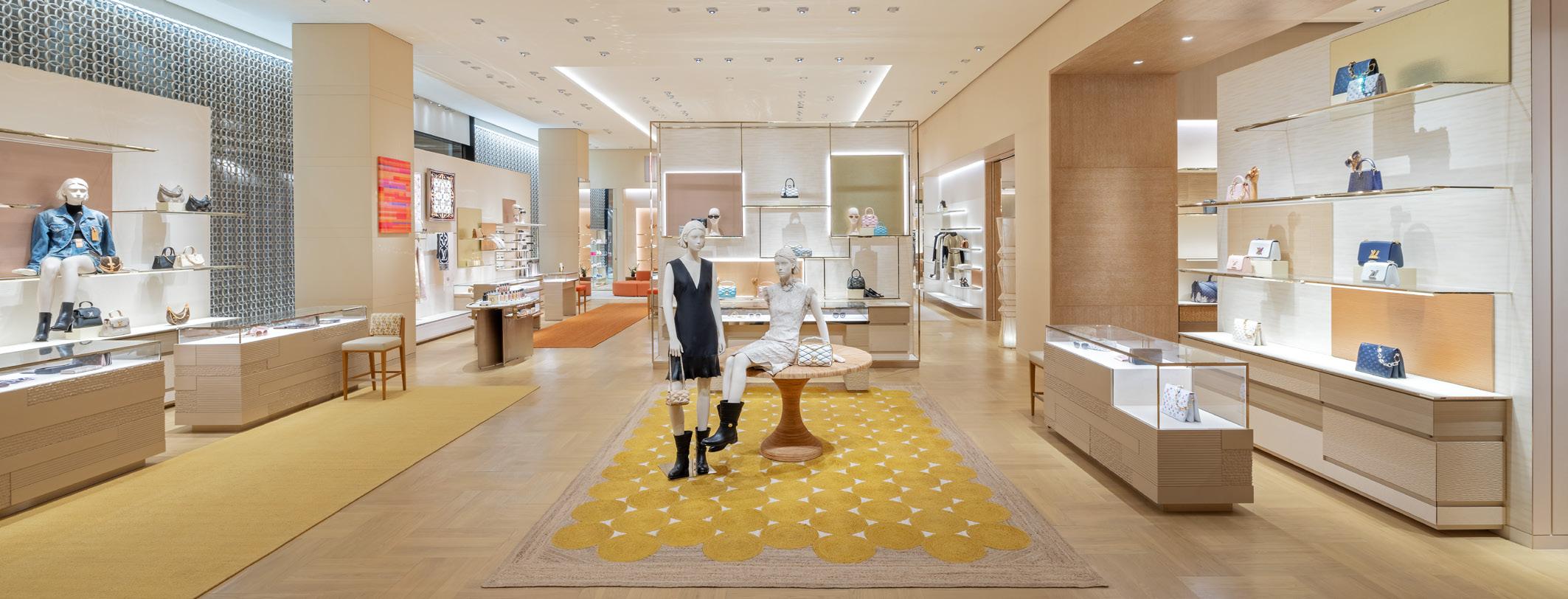

Be sure to leave your shoes at home when you dine at the Waterfalls Restaurant.
Located between a small river and waterfall at the Villa Escudero Plantations and Resort, this eatery puts you just feet away from the rushing water as you enjoy a delectable kamayan-style buffet served on banana leaves.
If you truly want to immerse yourself in Filipino culture, then sampling the local street food is a must. With some of the most diverse culinary options in the world due to the country’s history of colonialism and influences from both the West and Asia, understanding the Philippines’ extensive culture is best done through food.
Street food vendors can be found on nearly every corner, offering everything from the ever-popular isaw to the more divisive balut.


Indulge and unwind at NUSTAR Resort and Casino , a premier 5-star integrated resort in Cebu that is actively redefining what it means to experience luxury with world-class gaming, entertainment, events, and exclusive shopping and dining offers.
An oasis of luxury, the first premier hotel brand beyond Metro Manila boasts sweeping ocean vistas, private sundecks, lavish pools, and exquisite dining options, allowing you to indulge in a world of opulence and bespoke services.
Nestled just a stone’s throw away from the resort’s vibrant entertainment hub, discover a world-class casino that spans 21,000 square metres across two floors, perfectly setting the stage for an exceptional gaming experience.

Embrace a new standard of indulgence with a wide array of table games and slot machines, plus an electronic gaming stadium, exclusive VIP rooms, delectable dining options, and myriad events and promotions. Experience an exhilarating gaming atmosphere and the thrill of winning with 1,000 machines and 150 tables to explore.
With exceptional exclusivity, you’ll experience opulence at every turn. Tantalise both your palate and your tastebuds at speciality restaurants, which are conveniently located within the casino. Lose yourself in some of the world’s most delightful international dishes prepared by renowned chefs in
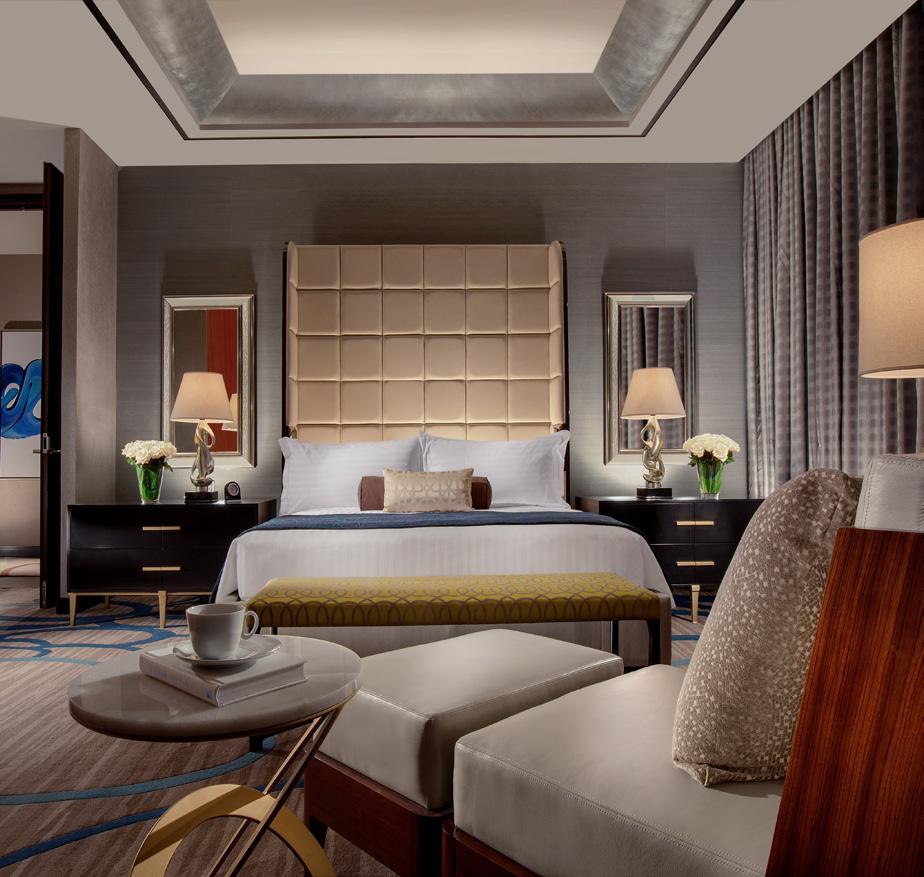
this multi-sensory feast of flavours.
NUSTAR Resort and Casino’s signature brand of Filipino hospitality is expressed through its genuine care, joyful nature, and efficient service, with guests feeling the warmth from the moment they arrive until the second they check out.
Embrace exquisite comfort today and book your stay at Cebu’s first and only premier integrated resort, where every moment is an invitation to experience the extraordinary.
Embark on an unforgettable journey where a luxurious world awaits.
Solaire Resort Entertainment City is the first integrated destination resort in Metro Manila’s Entertainment City, promising ultimate accommodation and amenities on an 8.3 hectare (ha) site.
Exceeding luxury expectations at every turn and proudly holding the Forbes Travel Guide 5-Star rating for the eighth year in a row, the resort is comprised of two exquisite towers awaiting your discovery.
The Sky Tower offers a unique and unmatched experience set against the romantic sunsets of Manila Bay and is located at the centre of culture and entertainment, enjoying proximity to major shopping centres, lifestyle hubs, and business districts. The perfect place to delight your eyes and ears.
Parallel in its opulence, the Bay Tower boasts sumptuously furnished rooms and suites that are incomparable. Step into luxury and relax in style in rooms fitted with furnishings and décor gathered from different parts of the world.
The colours were carefully chosen and put together to produce a sophisticated palette that accentuates the floor-to-ceiling windows, yielding breathtaking views of the enchanting skyline, which is particularly stunning in the evening.
The two towers boast a total of 793 luxurious resort-style accommodations, extensive dining options, impressive gaming facilities, and a state-ofthe-art lyric theatre that has changed the way people view resort casinos.
Solaire Resort Entertainment City offers a unique experience of comfort, elegance, and luxury, all underlined by the staff’s unparalleled Filipino hospitality. Book your stay today and experience international luxury right at your fingertips.

Philippine Airlines (PAL) is the Philippines’ flag carrier and only full-service network airline, as well as the first commercial airline in Asia.
PAL’s fleet of Boeing, Airbus, and De Havilland aircraft operate scheduled nonstop flights out of hubs in Manila, Cebu, Clark, and Davao to 32 destinations in the Philippines and 40 destinations in Asia, North America, Australia, and the Middle East.
Known for its hallmark heartwarming and gracious Filipino service, PAL also supports the global economy through air cargo and charter services, while serving the travel needs of overseas Filipinos as well as businesspeople, tourists, and families from all over the world.
At the dawn of the aviation age, throughout the 1940s, a pioneer spirit prevailed even as people began to experience the convenience of air travel. Meanwhile, a fledgling airline started its journey just as the war in the Pacific reached the Philippines’ shores.
Devastated by war but determined to serve its battered nation, PAL pressed its fleet into the war effort with the valiant support of its people. After the war, the company took up the mission of rebuilding the country through a growing network of air links across the islands and beyond to link to the wider world.
During 1946 and 1947, the world was still recovering from war and Philippine trade was growing, allowing PAL’s network to expand from Manila to as far east as London and as far west as San Francisco.
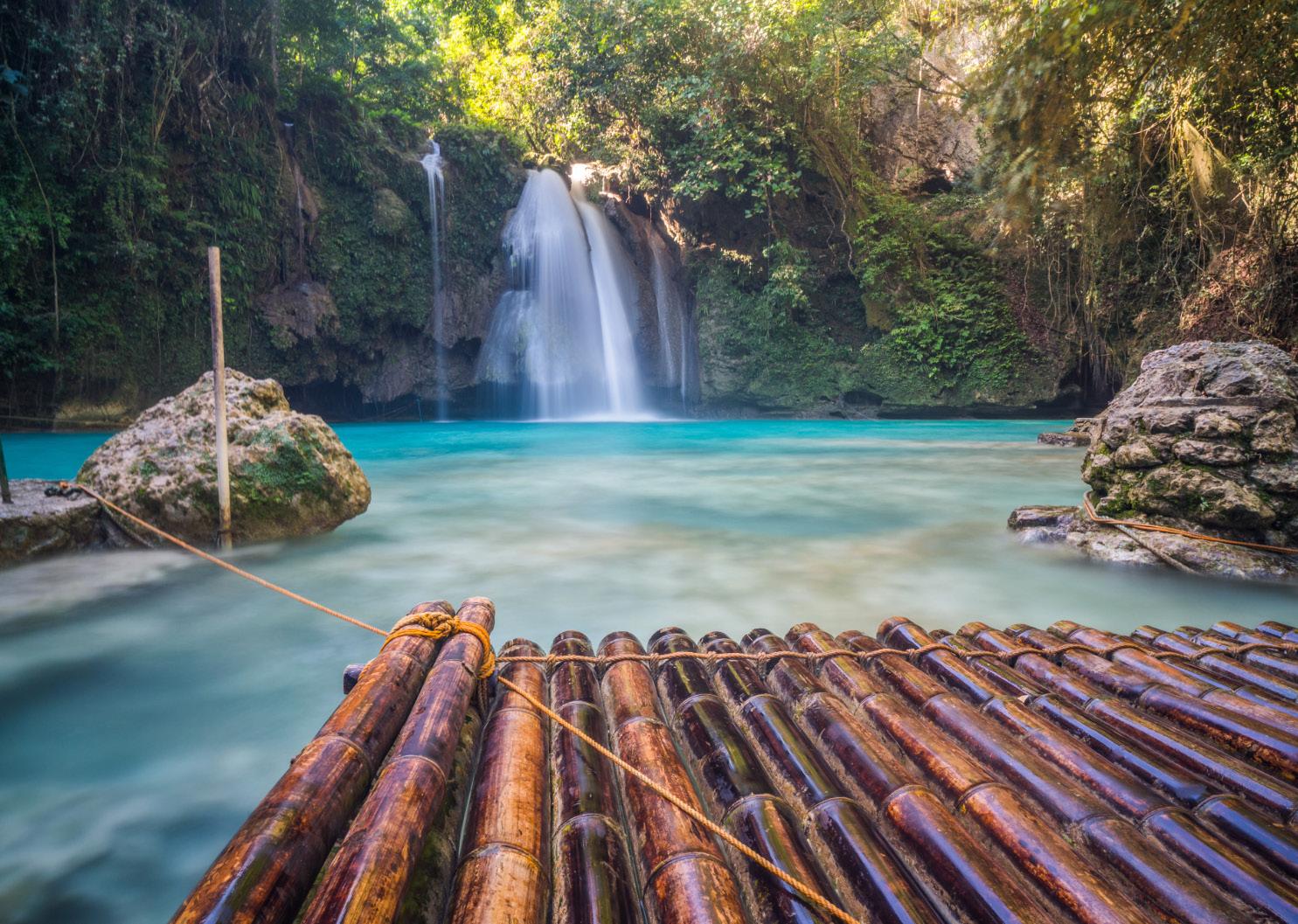
However, this progress was interrupted when, less than halfway through the decade, the government instructed the airline to suspend most international flights. As the 1960s approached, PAL renewed its long-haul ambitions and looked forward to jetpowered aircraft.
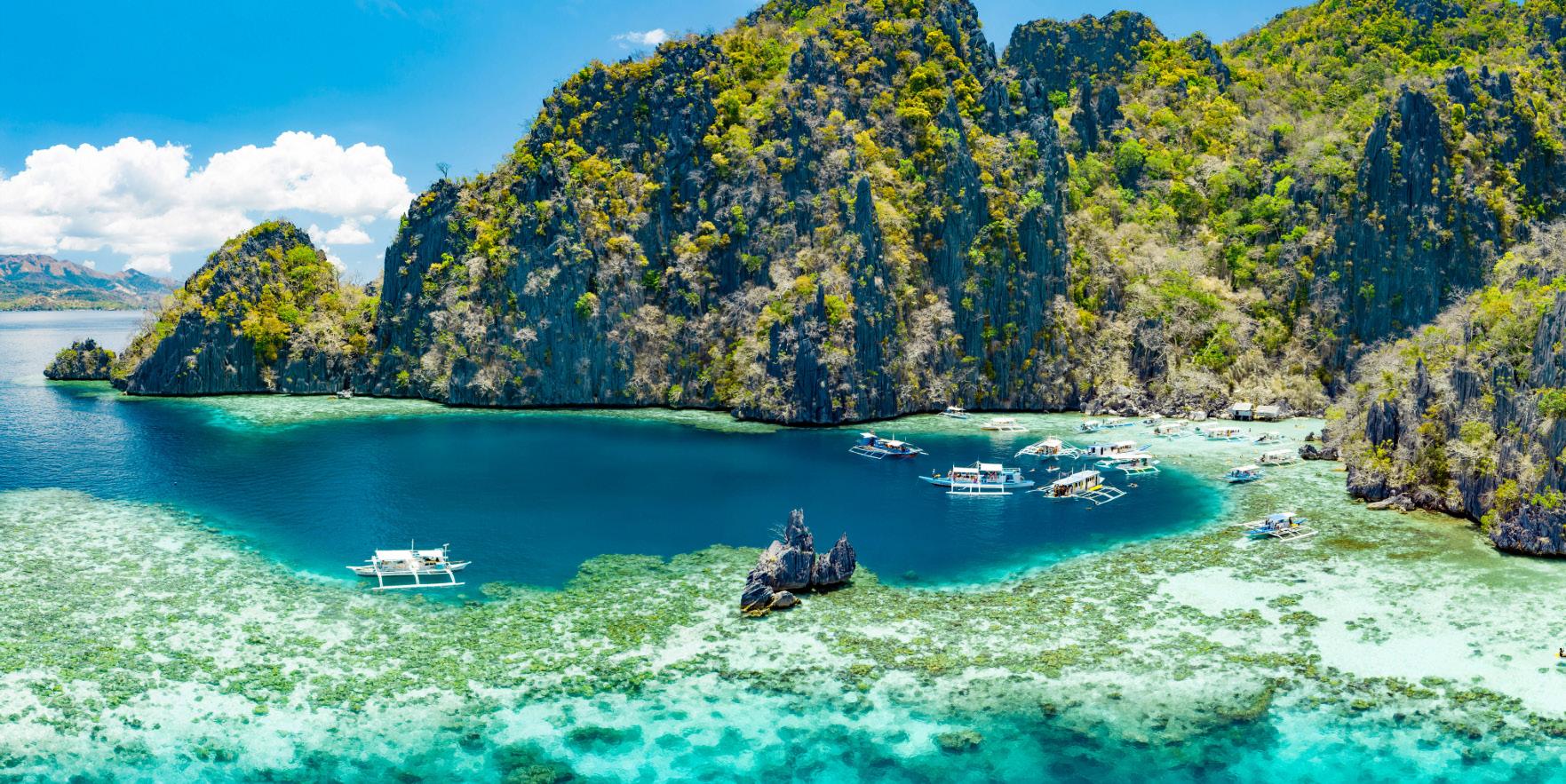
The flag carrier entered the next decade, (precisely 1962,) the age of jet-powered aircraft, and reestablished its mission to relink the Philippines to the rest of the world. Passengers began to sample the comforts of shorter travel times on Douglas DC-8s for international flights and BAC One Elevens on domestic flights.
Next, during the 1970s, the airline introduced more routes into its network, making Manila a true crossroads of Asia and a gateway between the East and West. A key 1974 merger made PAL the sole flag carrier of the Philippines.
PAL also then acquired its first widebody aircraft, the McDonnell Douglas DC-10, in a quest to compete more effectively on the highly contested trans-Pacific route.
Throughout the 1980s, PAL elevated its passenger experience with the introduction of the Boeing 747 for transpacific and European services, along with the twinjet Airbus A300 for regional services. The carrier continued to modernise its domestic fleet with Fokker 50s, Shorts SD 360s, and the best-selling Boeing 737.


PAL returned to private hands in the 1990s, after Dr. Lucio C. Tan acquired a majority stake in the airline. In its push to modernise, PAL ordered a wave of new aircraft including Boeing’s longer-range B747-400 and a family of Airbus A330s, A340s, and A320s.
Emerging from a challenging decade, in the 2000s, PAL recommitted to its network-building mission. The flag carrier restored more routes, rebuilt its secondary hub in Cebu, reintroduced turboprop services through its affiliate PAL Express, and accepted its first long-haul twinjet, the Boeing 777300ER.
Manila Landline(+632) 8539-0000 / (+632) 8855-8888
US/Canada - 1-800-435-9725
wecare@philippineairlines.com philippineairlines.com
Furthermore, in the 2010s, PAL continued to enhance its offerings with new, nonstop flights to the east coast of North America using new Trans-Polar routings, the comeback of Middle East services, and the entry of more advanced De Havilland Dash 8-400s for inter-island flights, as well as the Airbus A350-900s and Airbus A321 neos for premium quality service on international routes.
Now, in the last few years, PAL is recovering and moving forward after emerging from the destructive global COVID-19 pandemic. Asia’s first airline continues to innovate and enhance its products as part of a strategy of digital transformation and progressive network expansion – while serving the travel needs of Filipinos as well as businesspeople, tourists, and families from all over the world.
Today, PAL currently offers three classes of service: Business, Premium Economy, and Economy depending on the aircraft. Its Airbus A330s and Airbus A350s offer three classes, while its other aircraft offer two classes. On September 15, 2022, the airline rebranded its premium economy service to Comfort Class for its domestic flights.

For over 2,000 years, the mountains in the Ifugao province have been painstakingly cultivated into a series of terraced fields climbing thousands of feet in a seemingly endless vertigo of emerald green.
This harmony between man and nature is a sacred tradition that has been passed down for millennia. The Ifugao Rice Terraces serve as a window into past farming practices that work in tandem with the rugged beauty of the landscape. Witnessing this incredible engineering feat is a worthwhile trip that will leave you inspired.

Beginning millions of years ago as water channelled its way through the St Paul Mountain Range creating a series of vast chambers and caverns, the Puerto Princesa Underground River was formed.
As the world’s longest navigable underground river, this spectacular limestone karst landscape boasts pristine natural beauty and endemic wildlife and is both a UNESCO World Heritage Site and one of the New7Wonders of Nature.
Containing a unique ‘mountain-to-sea’ ecosystem with breathtaking cavern formations, this river is well worth a visit for any traveller seeking to experience the majesty that can only be created by nature.
A prime ecotourism destination surrounded by rolling hills and forested mountains, Lake Sebu is a tranquil haven tucked away in the highlands of South Cotabato.
With seven natural waterfalls cascading down the rugged terrain, the lake instantly captures the hearts of nature lovers and adventurers alike. This green paradise is home to crystal-clear springs, natural caves, and pristine trails lined with countless species of flora and fauna.
Travellers can enjoy different activities, including cruising across the water, bird watching, trekking, ziplining over waterfalls, and learning about the indigenous T’boli people who reside here.

Reaching the Philippines by air is a straightforward and easy process for most travellers. International visitors will most commonly arrive in the capital city, Manila, at Ninoy Aquino International Airport, the primary hub for Philippines Airlines (PAL), Cebu Pacific, and Philippines AirAsia, alongside a variety of other local and global airlines.
PAL is the nation’s flag carrier and only full-service network airline, as well as the first commercial airline in Asia. The company’s fleet of Boeing, Airbus, and De Havilland aircraft operate scheduled non-stop flights out of hubs in the cities of Manila, Cebu, Clark, and Davao to 33 destinations in the Philippines and 40 locations in Asia, North America, Australia, and the Middle East.
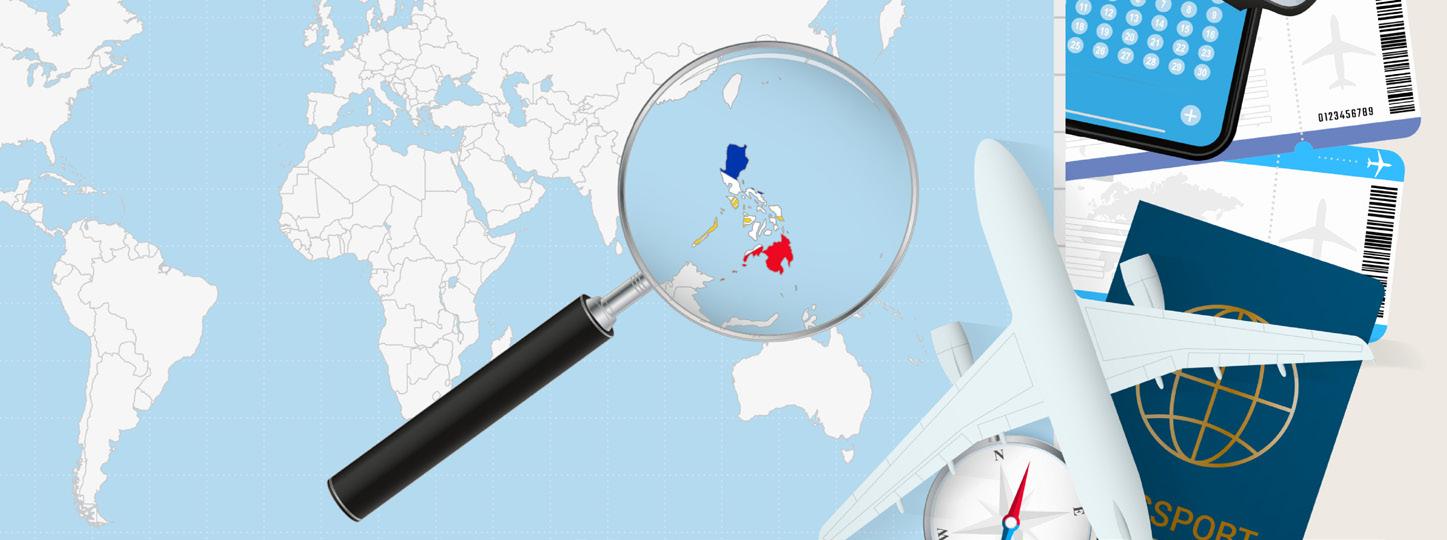
from across the globe.
Keep in mind that unless you are flying from the west coast of North America, such as Los Angeles, San Francisco, Las Vegas, or Vancouver, the majority of flights involve a small layover before arriving on the islands.
Dry season in the Philippines is from November to April, when tourists will be able to avoid the turbulent weather patterns and typhoons that form from June to October.
Once you have arrived in the country, transportation options include taxis, tricycles, motorbikes, colourful jeepneys, buses, minivans, ferries, and island-hopping flights.
patterns, and energy of the local jeepneys – a true icon of Filipino culture.
Jeepneys stem from the aftermath of World War II, when the US military left behind a fleet of jeeps that were cleverly repurposed, quickly becoming the most common mode of public transport within the country.
The jeepneys of today, typically hand-painted and adorned with a mirage of decorative stickers, can accommodate 12 to 24 passengers and still symbolise the resilience, adaptability, and innovative spirit of the Philippines.
Known for its warm Filipino hospitality, PAL supports the global economy through air cargo and charter services while serving the travel needs of Filipino citizens, businesspeople, tourists, and families
The latter is just as common as buses in the Philippines, so it is highly recommended to make use of the local airports when venturing to different areas of the country. Alternatively, a plethora of ferries can offer you an overnight trip to different islands – just be sure to find your sea legs before boarding!
On land, you’ll immediately notice the vibrant kaleidoscope of colours,
If you are looking for a more private mode of transport, consider renting a motorbike to explore the islands, or if you are able to splurge on your holiday, a private boat to venture from beach to beach at your own leisure.
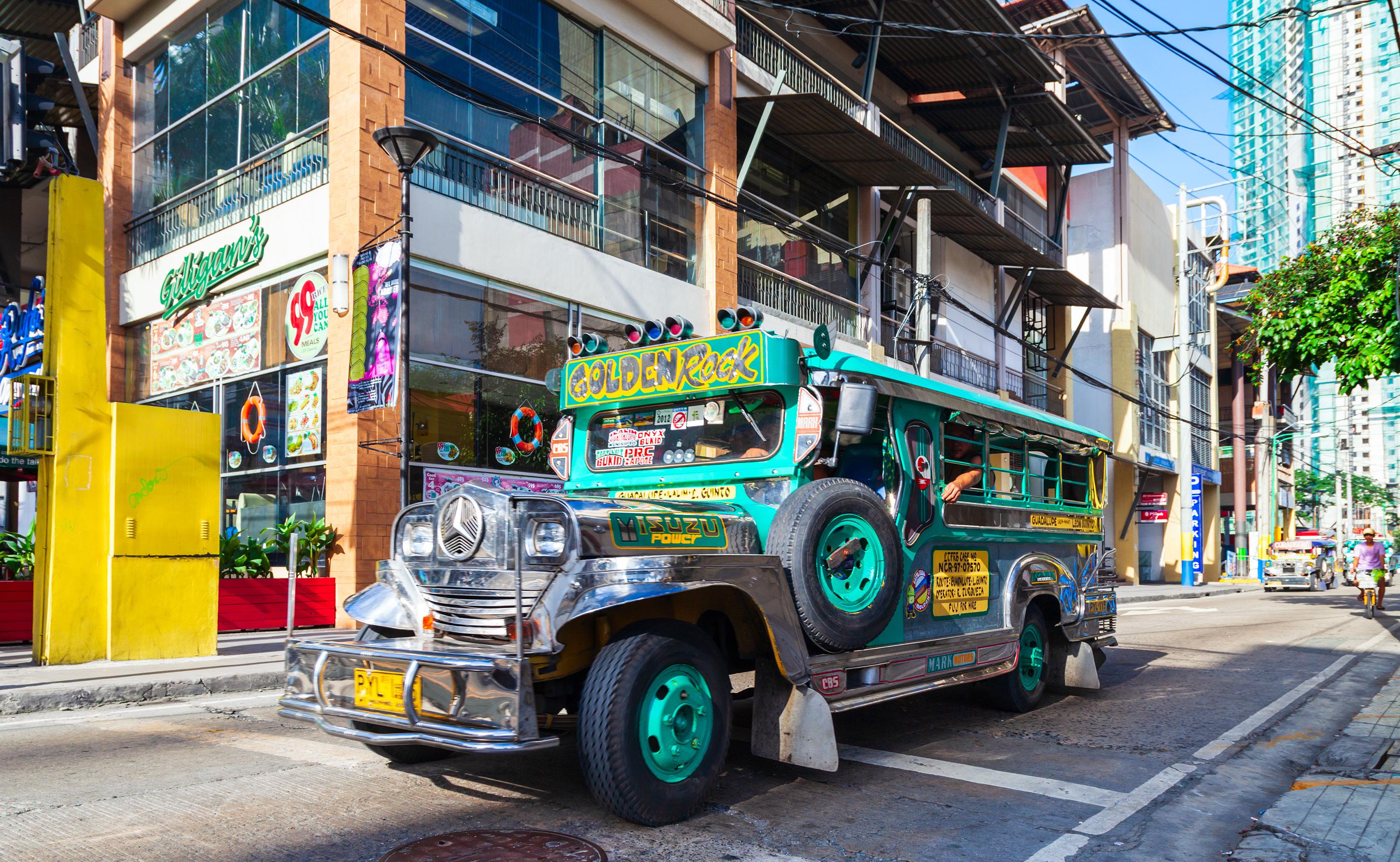
No matter how you decide to explore the vast collection of islands that comprise the Philippines, you will find treasure, adventure, and warm hospitality at every stop, making your trip truly one of a kind!

Showcasing outstanding indigenous wildlife, endless adventurous pursuits, vast, natural plains, unparalleled hospitality, and fascinating culture and cuisine, Tanzania emerges as a travel destination of choice
WRITER: LILY SAWYER | PROJECT MANAGER: ALFIE WILSON
Some of the planet’s rarest flora and fauna, most captivating Indigenous cultures, and stunning landscapes all combine to present Tanzania as one of Africa’s most diverse and varied travel destinations.
Playing host to the Big Five and the Great Migration – some of Earth’s most impressive natural phenomena – it’s no wonder Tanzania is considered a world-class safari destination. Serengeti National Park, in particular, which translates as ‘endless plains’, features sweeping savannahs, undulating mountains, and serene, glassy watering holes, and is home to every type of wildlife you could hope to encounter on the safari adventure of a lifetime.
For many years, Kilimanjaro has provided a source of intrigue, exploration, and discovery for climbing aficionados and travellers alike. Rising high into the vast skies above and looming impressively over the tawny grasslands and dense, verdant forestry that surround it, Africa’s highest peak is hard to miss.
In stark contrast to the adventurous heights of
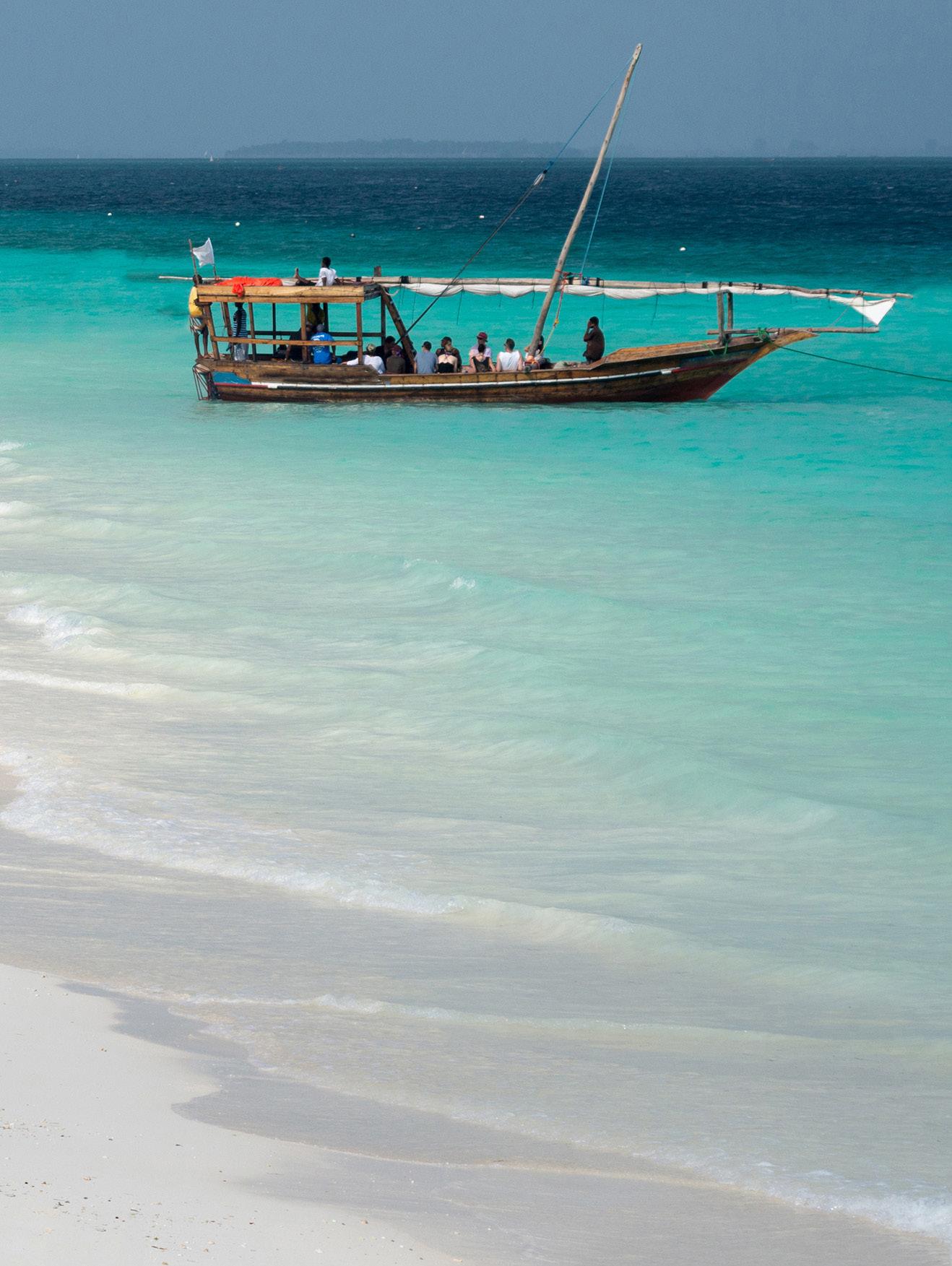
Kilimanjaro, Zanzibar, a charming and petite archipelago just over 100 kilometres off the coast of Dar es Salaam, presents a secluded oasis for those seeking peace and tranquillity. Turquoise waters, palm-fringed white sand beaches, and glowing, auburn sunsets present an idyllic island sanctuary.
The story of Zanzibar’s rich culinary landscape, which includes its abundance of natural spices such as cinnamon, cardamom, ginger, turmeric, and nutmeg, offers visitors plenty to discover. Notably, it is believed that the delicately aromatic ylang-ylang flower, which is native to the island, inspired perfumiers at Chanel to create its famous No. 5 scent.
So, whether you seek a stimulating safari adventure in one of the country’s many vast national parks, a demanding climbing challenge at Kilimanjaro, or a completely secluded island getaway on the archipelago of Zanzibar, amongst a choice of countless other attractions, Tanzania is the place for you.

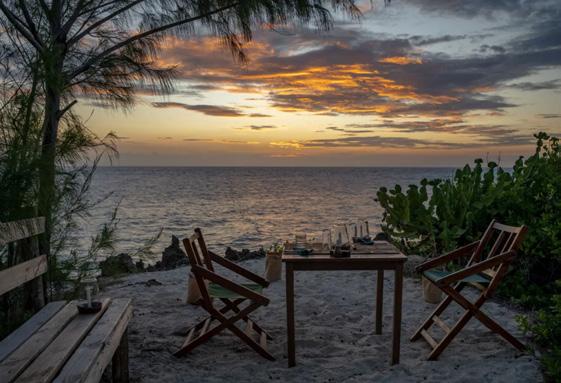


WE SPEAK TO Kennedy Edward, CEO of the Hotels Association of Tanzania (HAT), who outlines how the organisation advocates for the East African country as a strategic investment and business destination whilst supporting the sustainable conservation of natural resources and rare wildlife.
Outlook Travel (OT): Firstly, what are the overall aims of HAT?
Kennedy Edward, CEO (KE): HAT began as the Hotels Keepers Association back in the 1980s, when the hospitality sector migrated from government ownership to private
management.
Fast-forward to the early 2000s, and HAT as we know it today was born, registered as a company and limited by guarantee by private sector investors in the hospitality industry.
As we speak, the association has undergone another minor evolution, transitioning from a company limited by guarantee to a non-profit society.
HAT’s core vision is to see the tourism and hospitality sector thrive sustainably through key areas of focus, which include improving Tanzania’s investment and business environment, advocating for sustainable practices, and conserving the country’s natural resources.
OT: What are your organisation’s current goals and how do you plan to achieve them?
KE: The association’s current goals include campaigning for the development of Tanzania’s investment and business climate through strategic engagement with


the government in order to align policies and regulatory frameworks. Another area of focus is on practicing conservation and sustainability when utilising tourism resources. Given that tourism is the revenue-generating component of our conservation efforts, the association is keen to share its experiences and advise both private and public sector players on how to best make necessary reforms and boost revenue generation which, in turn, supports the sustainable conservation of resources.
OT: Why, in your opinion, should someone visit Tanzania?
KE: Tanzania is one of very few destinations in the world that has so much natural beauty to offer; from diverse wildlife, sandy beaches, and the highest peak in Africa to friendly people and mouthwatering African dishes.
Despite being known for Serengeti National Park, Kilimanjaro, and the island of Zanzibar, Tanzania has so much more to offer all types of tourists, from high-end, exclusive safari-goers to budget adventurers and thrill seekers.
The southern circuit, also known as the ‘true wilderness’, includes the likes of Ruaha National Park, Nyerere National Park, the Udzungwa

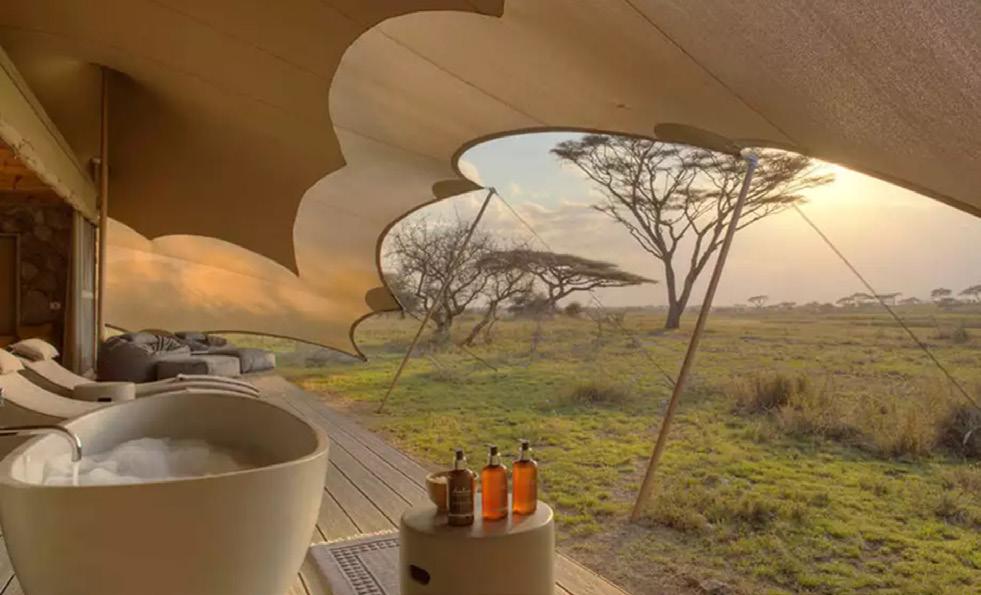

Mountains, and the virtually untouched Mafia Islands, which are yet to be widely explored.
On top of that, Tanzania has an extensive cultural heritage to discover, boasting over 120 native tribes and vast cities that can accommodate meetings, conferences, and exhibitions with a true African touch.
OT: As a culturally vibrant destination, what type of traveller does Tanzania typically attract?
KE: Over the years, we have witnessed a broad range of travellers visit the country, including celebrities such as Bill and Melinda Gates, Oprah Winfrey, and Will Smith, who typically desire high-end, exclusive safaris.
On the other hand, budget and solo travellers prove to be more adventurous and seek to explore the destination on a more intimate, ground level.
The dynamics of what Tanzania has to offer have historically catered to all types of travellers.
OT: What does the nation offer in terms of sustainable or eco-friendly travel experiences?
KE: Given that Tanzania is predominantly a wildlife and naturebased destination, sustainable and eco-friendly travel models are offered


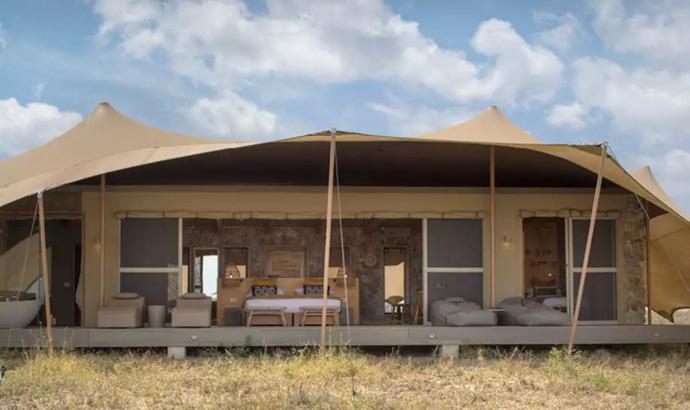
from the outset.
This is reflected by the fact Tanzania has dedicated over 30 percent of its territorial land to the conservation of protected areas such as national parks, game reserves, forest reserves, geoparks, and marine parks.
To complement this, travellers are offered customised services to showcase the country’s true ‘nature focus’. For example, we incorporate eco-friendly infrastructure design, sustainable ground-handling operations, and accommodation that caters to clients’ needs, whilst offering non-invasive activities in the wilderness.
OT: What recent trends are currently transforming tourism in Tanzania?
KE: Climate awareness, sustainable practices, and conservation are major recent trends and transformations taking place in the country and across the continent at large.
So far, this has been implemented at a grassroots level and, in the case of Tanzania specifically, through policy and regulatory frameworks and investment practices, which have trickled down to what is offered to travellers.
OT: Are you optimistic about the future of the tourism industry in Tanzania?
KE: The future looks bright, and it’s safe to say that Tanzania is one of the few countries in the world that has fully recovered from the COVID-19 pandemic.
This can be attributed to the proactive measures taken by both the private and public sector players in marketing the destination, alongside continuous collaboration in improving the services and products offered to international visitors.
OT: Finally, are there any particularly unique experiences or underrated activities that Tanzania has to offer?
KE: Yes! Alongside the southern circuit, Kilwa Kisiwani and Lindi are unique and untapped areas with great potential that are yet to be explored.
Additionally, rich cultural heritage, local cuisines, and marine research – especially in the great lakes of Tanganika and Nyasa – are other areas and activities that have huge potential and are yet to be tapped into.
And as for the wildlife safari side, the south has Nyerere, Ruaha, Mikumi, and Udzungwa National parks to cater for the adventurous experience away from the crowd.

Mobile:+255 717 055 292 info@hat-tz.org hat-tz.org







Showing the wild and natural experience of Africa with better value and more exciting safaris, we have served the world’s most respected institutions and organisations.
Explore the heart of Africa through an incredible safari in a 4x4 vehicle and you will discover the still untouched great parks of the planet, as well as natural spaces where life reaches its maximum peak.
During the tour you will traverse a great variety
of landscapes and will encounter tribal cultures like the Masai. You will also see primary forests with a rich bird population, green mountains, rosy lakes covered with flamingoes, endless savannahas like the wide open plains of the Serengeti, or the mythical Ngorongoro crater, which provides great shelter for wildlife.
Lions with their prey, the fast hunts of the cheetahs, thousands of ungulates in the great migration, elephant families, giraffes, hippopotamus, and many
more creatures will be the protagonists in this exciting adventure.
Our most popular tours include:
• Four day Tanzania safari
• Four day outstanding Tanzania safari
• Four day Tanzania and Kenya safari
• Five day Tanzania safari in Serengeti
• Five day Tanzania safari private tour
• Seven day midrange Tanzania safari in Tarangire
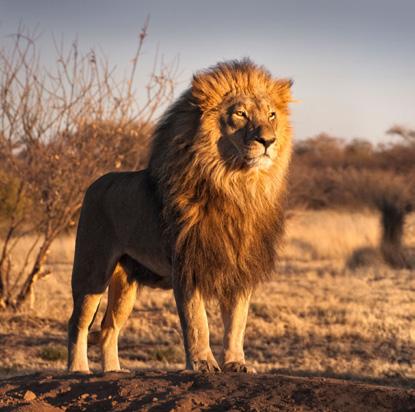


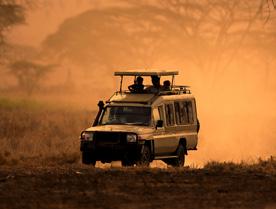




Many People Are Typically On Your Safaris?
Our standard land cruisers allow for a maximum of six travelers, plus a guide/ driver. Our minimum group size is generally 12, with a maximum of 100 on our Safari, which uses regular land cruisers instead of extended ones. It is common to have group sizes smaller than 20, which will give you a more exclusive time in the vehicles.


Can I Create A Custom Safari Tour Of Tanzania?
Yes, our safaris can be customised to focus on wildlife safari, photography, culture, a combination tour of trekking and safari, flying safari, or other general interests of the participants. In fact, nearly all itineraries are developed based on the desires of our customers. Our safaris provide the perfect adventure for families, couples, or individuals and we are happy to cater to special interests and requests of our travelers.
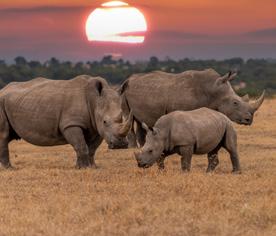

Is The Accommodations Like On Safari Tour?
For our camping safari you will sleep in a tent. We have tents for solo travelers, two travelers, three travelers, and four. We will provide you with camping equipment including tents, sleeping mattresses, tables, and chairs. Our professional chefs also have all of the cooking equipment required for safari.

Lodging and tented camp safari
One of the most important
aspects of your safari is maximising the amount of quality time in the field; there is so much to experience that we don’t want you to miss anything. We choose not only quality lodges and tented camps with en suite facilities, but we also consider their locations foremost in our planning. Our accommodations are located within and outside the national park and reserve boundaries whenever possible, to start each morning closer to the wildlife. The lodges we choose, as well as many of the tented camps, feature spectacular scenery, comfortable furnishings, and friendly and accommodating staff. Some even offer swimming pools for relaxing after a long safari drive! Note that while we make every effort to offer superior facilities, occasionally there may be
a particular location that necessitates visitors to stay in more basic mobile tented camps. What Is The Wildebeest Migration And When Is It?
The Great Migration, in Tanzania and Kenya, is one of nature’s greatest events, but how do you know where and when to go to actually witness it?
The vast Serengeti plains and the hills of Kenya’s Masai Mara are the setting for the world’s greatest wildlife spectacle, the 1.5 million animal ungulate (wildebeest) migrations.
Over 1.4 million wildebeest and 200,000 zebra and gazelle, relentlessly tracked by Africa’s great predators, migrate in a clockwise fashion over 1,800 miles
each year in search of rain ripened grass. Once the ‘short rains’ fall in November and December (sometimes as early as October), the migration moves from Kenya’s Masai Mara down through the eastern side of Tanzania’s Serengeti into its sweet and fertile southern-grass plain. Here, the wildebeest and other ungulates settle between January and April. In April and May, the ‘long’ rains set in and the migration starts moving from the depleted southern plains north to the long grass plains in the western corridor. Large river crossings on the Grumeti and Mara Rivers occur as the migration heads back into Kenya’s


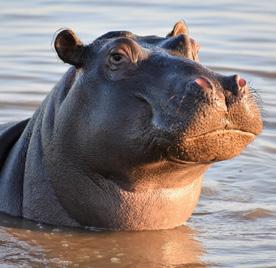
Masai Mara – the season dries out and fresh grazing and water can be found in the far north. The Masai Mara is usually at its best in August, September, and October.
Will I Be Able To Charge My Electronic Devices On Safari?
Most lodges have outlets so you will be able to recharge batteries. However, because the lodges are run on generators, the electrical current is not as strong as traditional electrical currents, and some lodges turn off their generators at midnight. Some of the campsites offer outlets in

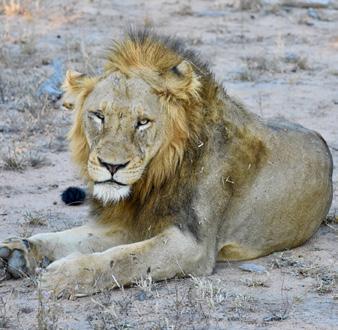

the dining area. Campsite etiquette dictates a firstcome-first-served principle. Our safari jeeps have charging ports that you can use to charge your phone/ camera or laptop while you’re on safari with us.
What Type Of Safari Jeep Is Used On A Safari? We use a combination of 4×4 4WD open roof Land Cruisers and Land Rovers to maximise our viewing opportunities in the field. Our vehicles feature pop-top roofs for all-around visibility, and open centre aisles for flexible maneuvering when stopped. All of our vehicles conform to safety regulations and are custom-built to take the rigors of a safari. All vehicles are driven by our



experienced and highly knowledgeable local guides, who are integral in explaining the intricacies of the ecological principals or animal behavior that you’ll be witnessing. Our vehicles provide maximum safety as well as ease of viewing. Many of our safaris take place in national parks and reserves, whose regulations require us to stay inside our vehicles due to danger from wild animals.



Authentic Tanzanian safari company, Royal Tiger Tours , is dedicated to showcasing the country’s diverse wildlife and endless nature.
Royal Tiger Tours offers participants the unique opportunity to explore the heart of Africa in an incredible 4x4 vehicle and discover the region’s great parks and natural spaces.
Traversing a variety of landscapes and witnessing Indigenous tribes such as the Masai, you will see forests with rich bird varieties, green mountains, serene lakes occupied by flamingos, and endless savannahs such as the wide-open plains of Serengeti National Park.
Expect to witness lions and cheetahs hunting their prey, thousands of ungulates cantering during the Great Migration, and elephants nursing their families.
A vast range of multi-day safari and trekking options present visitors with excursions to suit any preference, whilst the company’s Tanzania day trips offer an excellent alternative for those struggling for time.
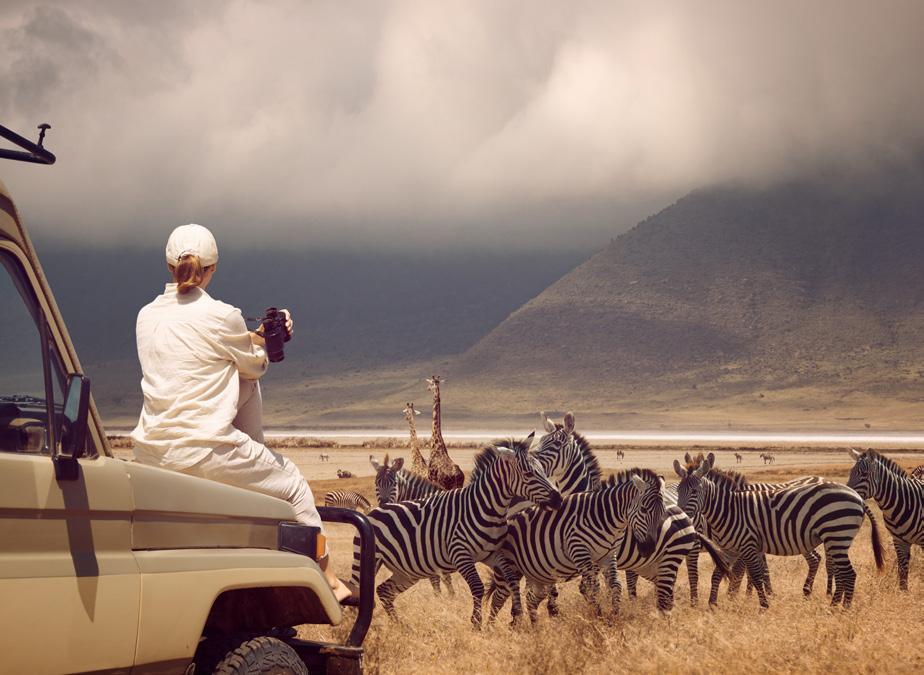
Packing all the magnificence of a rich safari into a daylong trip, this option takes place in Arusha National Park, where lush, forested dunes at the foothills of Mount Meru are home to wildlife such as gazelles, impalas, buffalos, wildebeest, hyenas, baboons, giraffes, hippos, flamingos, and tree-climbing lions.
Whether you seek week-long luxury, or a whistle-stop wildlife excursion, choose Royal Tiger Tours for all your Tanzanian safari needs.
FOR CATCHING A GLIMPSE OF THE BIG FIVE… Big Five Tanzania Safaris
The crater-rim dining room at Ngorongoro Serena Safari Lodge is a breathtaking, atmospheric viewpoint, offering diners the opportunity to observe the diverse wildlife of the Ngorongoro Crater over 2,000 feet below.
Featuring dishes such as marinated tilapia fish and Kilimanjaro coffee panna cotta, the restaurant’s culinary offerings are deeply imbued with the flavours of the landscapes that surround it.
Visit The Rock Restaurant Zanzibar, an iconic location just metres from the island’s sandy shores that offers panoramic, 360-degree views of the stunning azure waters of the Indian Ocean and Zanzibar itself.
With a menu featuring local seafood dishes with an Italian twist, such as parmesan and crab ravioli and coconut tiramisu, this culinary gem is not to be missed.




Visit Konokono Beach Resort , where 5-star luxury meets pristine nature on the Michamvi Peninsula.
Overlooking the enchanting Chwaka Bay on Zanzibar’s southeastern coast, the resort presents peace and tranquillity, alongside luxury villas, a beach bar, an on-site restaurant, and a pool and spa.
For an idyllic island escape, Konokono Beach Resort is your destination of choice.
Cherero Camp in Serengeti National Park offers all the wildlife without the thrum of the crowds, showcasing luxurious canvas tents set upon decked platforms and breathtaking views of the surrounding Musabi Plains. Named after the Swahili word for lovebird, this spot is ideal for couples and honeymooners looking to experience the best of Tanzania’s wildlife from a blissfully peaceful setting.


The Big Five Tanzania Safaris is a destination management company specialising in quality tours in Tanzania.
Our services include day tours, multi-day tours, and all-Tanzania safaris. Our expertise grew gradually to include all Tanzania trips with beaches, excursions, and all cultural activities. We customise services for your leisure groups, families, and individuals.
Our team of skilled mountaineering and safari guides possess excellent knowledge of local flora and fauna and are all well-trained in their jobs. We have guides that are proficient in English, German, and Spanish to make sure our clients have an unforgettable tour experience, accompanied by life-long memories of the wonderful countryside of Tanzania.



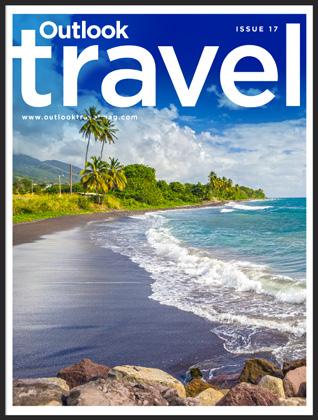



Standing at an impressive 5,895 metres, Kilimanjaro is not only Africa’s tallest peak, but Earth’s tallest free-standing mountain. The majestic snow-capped mountain is, in fact, a dormant volcano, and its summit, Uhuru Peak, has become an important site of personal triumph for advanced climbers and hikers across the world
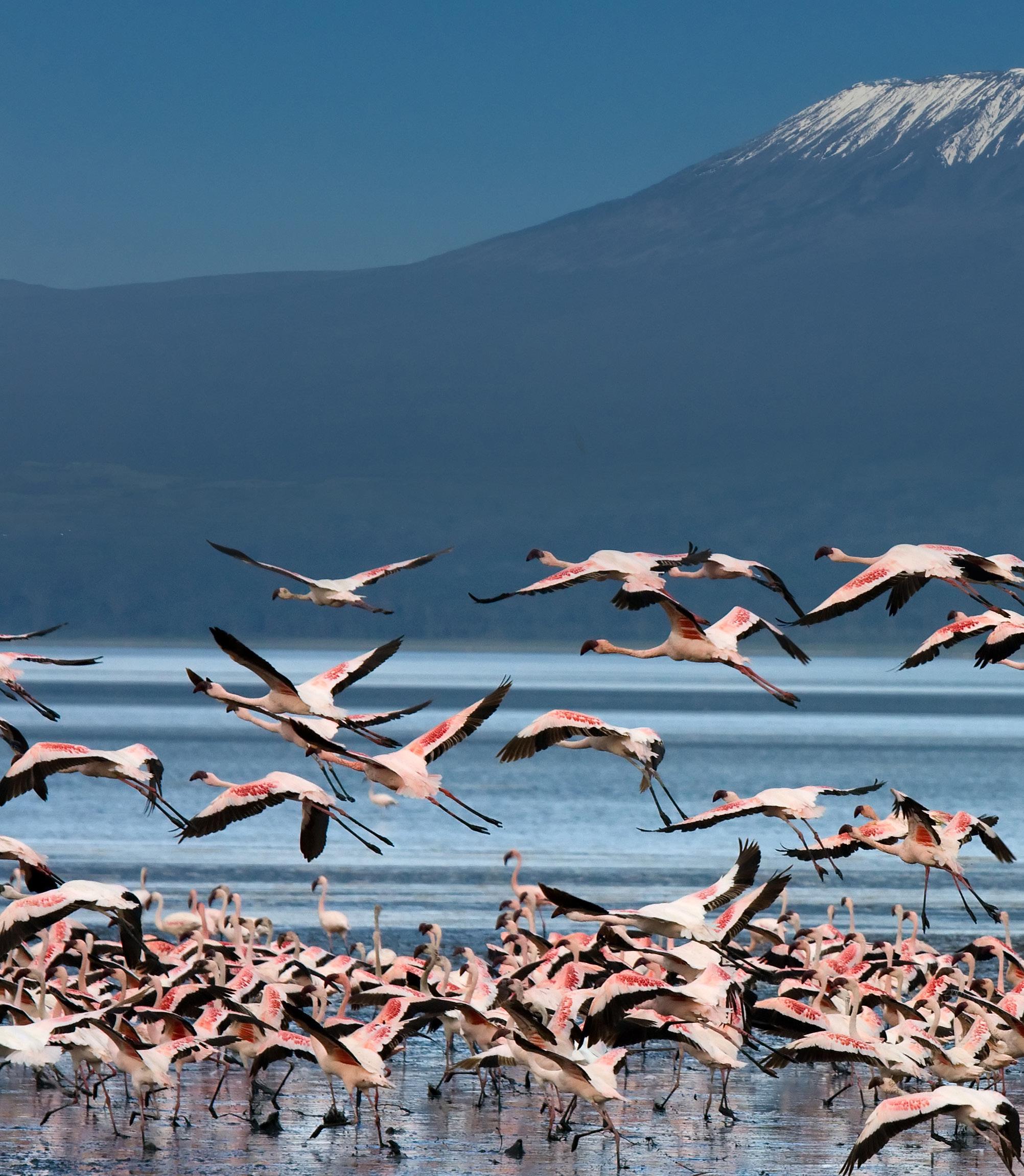
SNOW-COVERED UHURU POINT, which is Swahili for ‘freedom’, offers brave explorers who dare to make the treacherous ascent jaw-dropping vistas of the surrounding natural landscapes, including breathtaking sunrises and sunsets from Stella Point and Gilman’s Point. However, climbing Kilimanjaro is not solely about
reaching its summit; the journey upwards features some of the world’s most stunning natural beauty.
Amid the emerald green rainforests and towering canopies, visitors are wowed by the symphonic birdsong of turacos, majestic mountain buzzards, and the rare trumpeter hornbill.

In addition, the cultural significance of this magnificent mountain goes beyond its geographical prominence. Deeply intertwined with the local Chagga people, who hold Kilimanjaro in deep reverence as a sacred site, those that tackle the trek pay homage to the mountain’s spirituality. During your climb, you will discover coffee plantations and
banana farms managed by the Chagga community, who are proud to introduce you to the delicate ecosystem that presides Kilimanjaro.
For those that dare to undergo a life-changing experience of endurance, cultural discovery, and personal triumph, navigating Kilimanjaro is no mean feat.
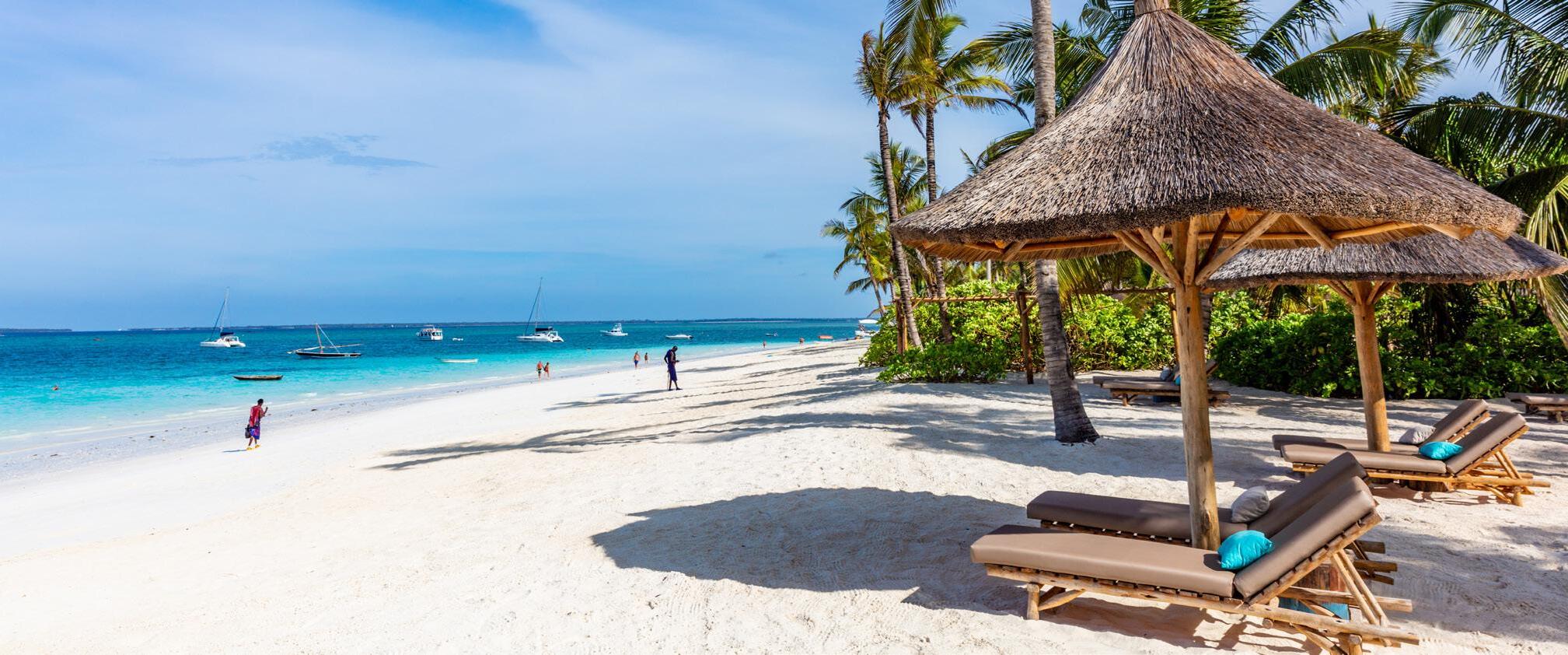
Situated off the coast of Dar es Salaam, Zanzibar presents the ultimate island experience, lapped by the warm tides of the Indian Ocean. With a fascinating history, incredible nature, and magnificent beaches, Zanzibar presents the perfect destination for exploration. Its unique night markets, verdant forests, and virtually untouched marine life provide a site of discovery. In addition, as one of the world’s leading spice producers, this locally nicknamed ‘spice island’ offers unique aromatic tours.
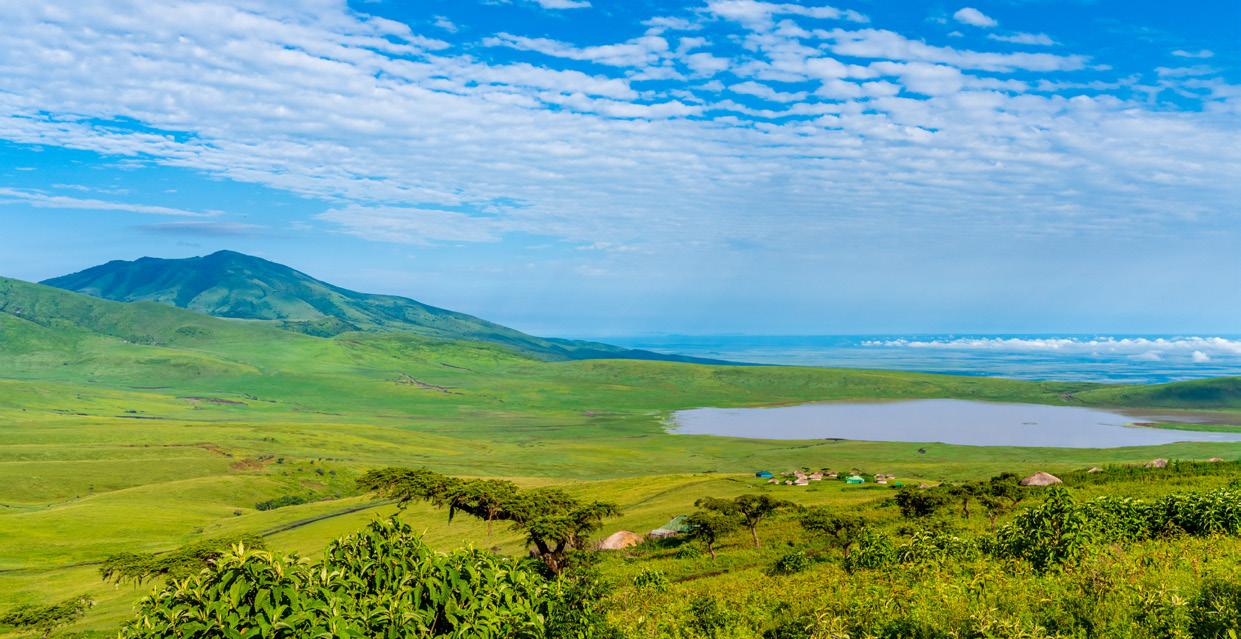
A UNESCO World Heritage Site, Serengeti National Park is teeming with wildlife and home to the Great Migration – the world’s largest animal migration where visitors can witness wildebeest, alongside other wildlife such as zebras and gazelles, move in mass across the vast savannah plains. Offering exclusive safaris and hot air ballon rides at sunrise and sunset, Serengeti National Park is not to be missed. In addition, on-site luxury safari camps and lodges present comfortable accommodation amidst the raw beauty of the wilderness.
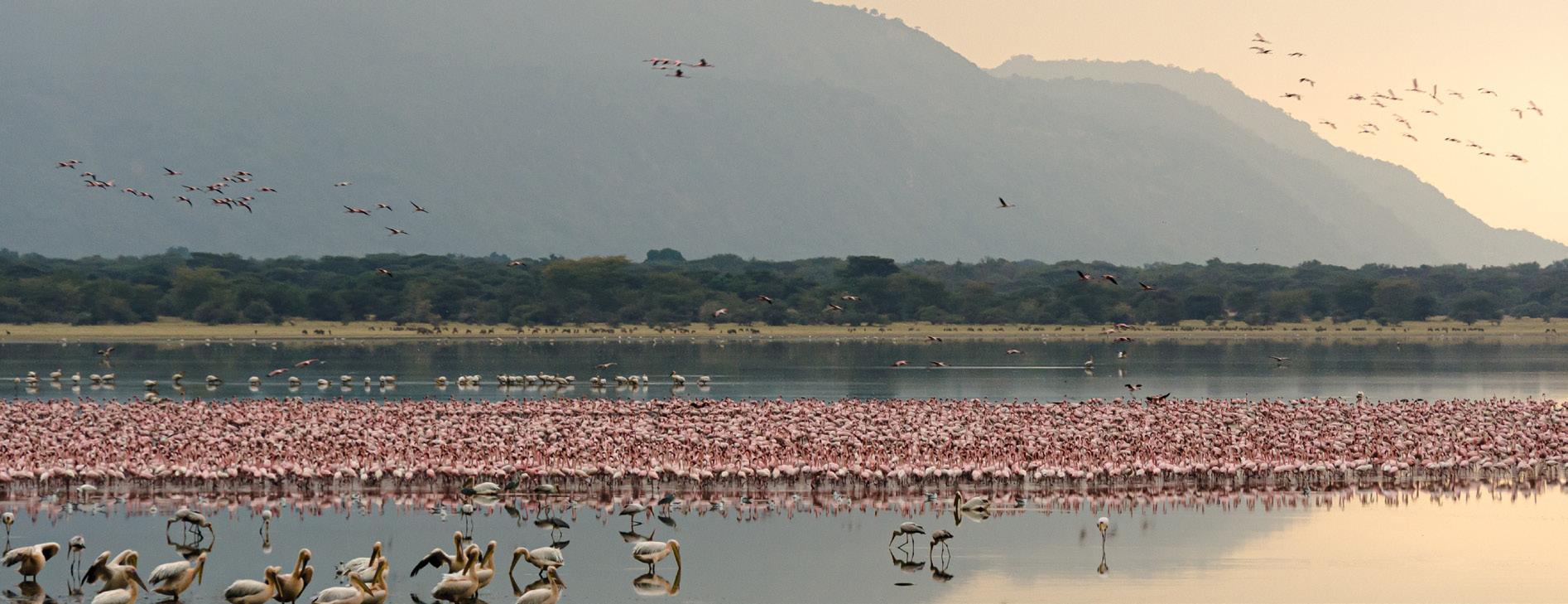
Lake Manyara National Park features the seventh-largest lake in Tanzania by surface area. Home to tree-climbing lions and pink flamingos, as well as one of the country’s largest elephant populations, the park attracts visitors year-round. Game drives throughout the day in four-wheel-drive vehicles provide visitors a perfect vantage point for wildlife, whilst a tree-top canopy walkway presents jaw-dropping views of the surrounding forest and up-close sightings of native animals, such as birds and monkeys.
three international airports, Kilimanjaro International Airport (JRO) is by far the most popular due to its variety of onward travel options for the popular northern safari circuit, which includes Serengeti National Park, the Ngorongoro Crater, Tarangire National Park, and Lake Manyara.
Alternatively, Julius Nyerere International Airport (DAR) provides a viable option for those who wish to visit Dar es Salaam or the southern circuit, whilst Abeid Amani Karume International Airport (ZNZ) is perfect for those heading to Zanzibar.
Driving into Tanzania is achievable from neighbouring countries such as Kenya, Uganda, Rwanda, and Burundi to the north, and Zambia, Malawi, and Mozambique from the south. The country boasts an extensive network of roads, however, only a small percentage are tarred and well-kept. As such, renting a robust four-wheeldrive vehicle is the most feasible option to explore Tanzania by road. Within most major cities and towns, dalla dalla (public minibuses), boda
boda (motorcycle taxis), and bajaji (tuk-tuks) all present cost-effective options compared to conventional taxi services, which often hike up their prices for tourists. However, these are far from comfortable and potentially dangerous for tourists in more rural areas, whilst timetables are generally unpredictable.
In addition, Tanzania Railways Corporation (TRC) runs frequent train services between popular routes such as Dar es Salaam and Kigoma, Arusha, and Moshi.
Furthermore, the Tanzania-Zambia Railway Authority (TAZARA) runs an express service, however visitors should note that services can be unreliable, and securing a first or second-class ticket at least two days in advance is advisable to guarantee yourself a seat.
Ultimately, booking a private transfer through a reputable agency is the most comfortable and secure travel option for most, whilst agreeing a price online or over the phone ahead of arrival will avoid unexpected costs.


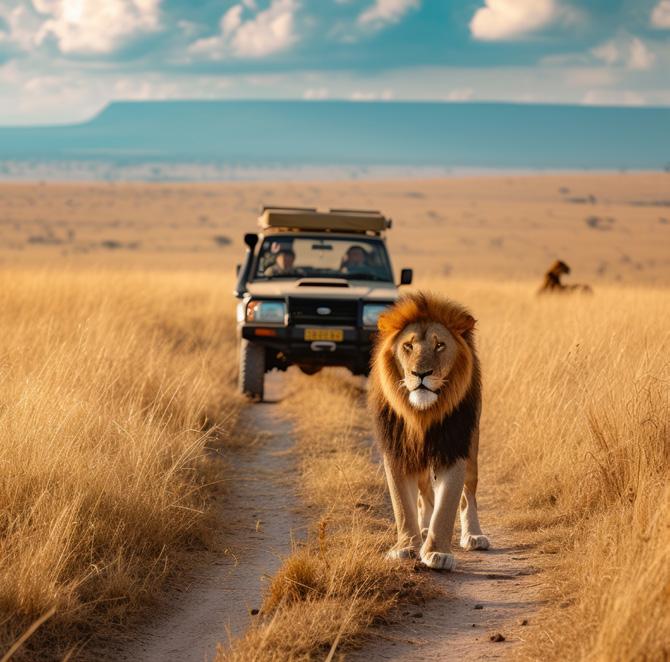
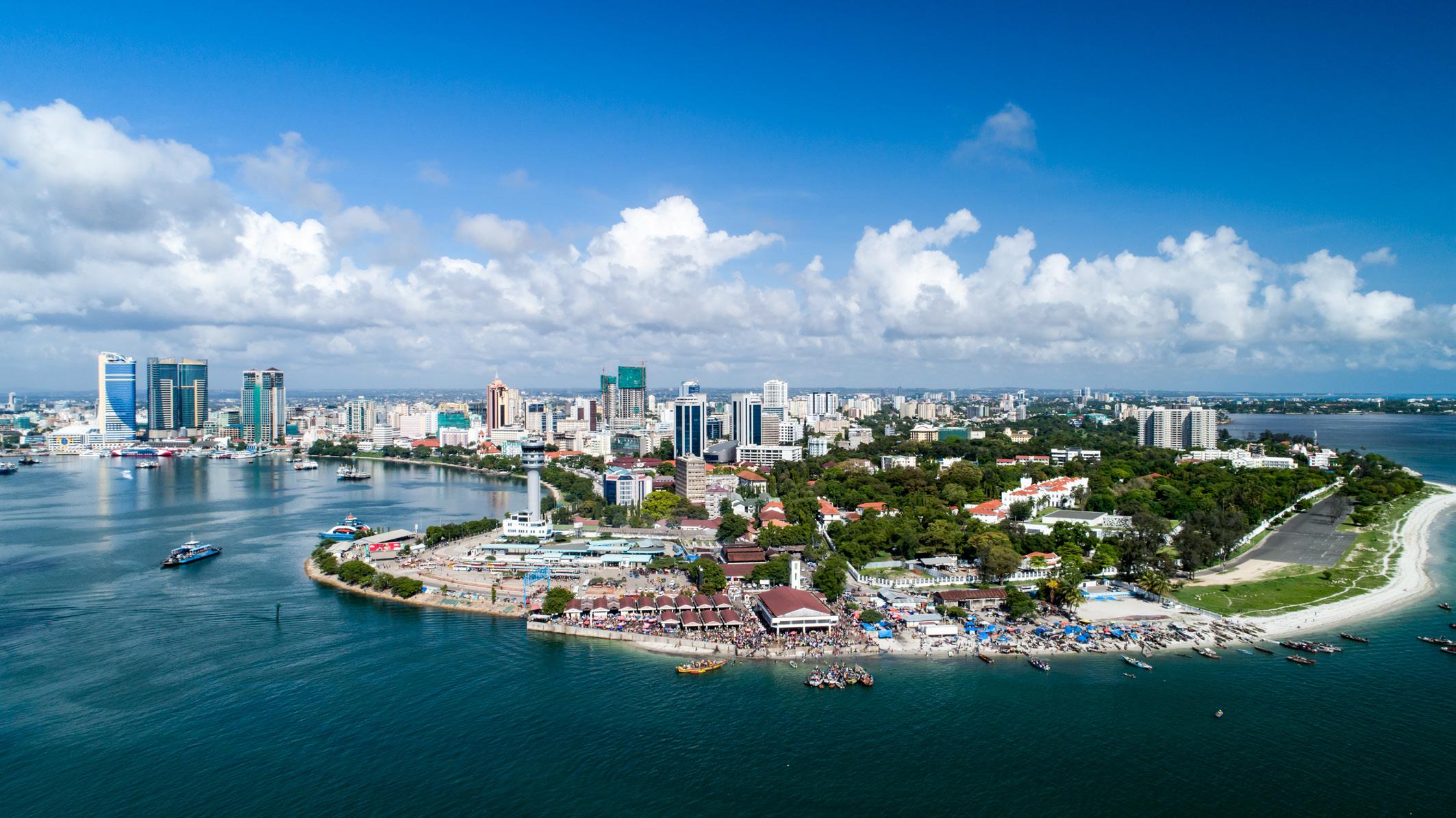



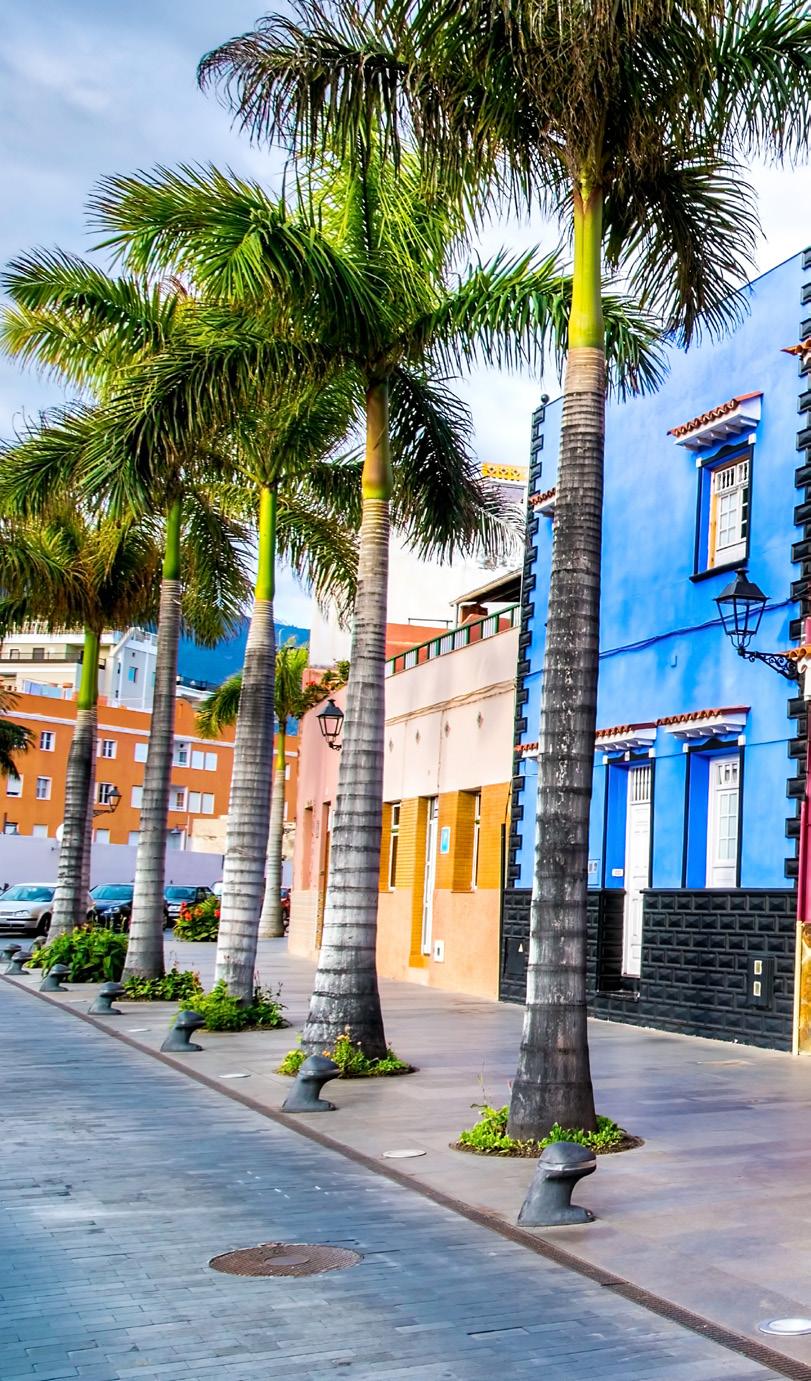


Discover the wild beauty of Tenerife with its lunar landscapes, prehistoric laurel forests, and volcanic valleys. An idyll for adventurers, beach enthusiasts, and culture vultures alike, the island invites travellers to dive into boundless delights, from mountain trekking and coastal swims to state-of-the-art galleries and historic cities
WRITER: RACHEL CARR
Located in the Atlantic Ocean, the Canary Islands is a Spanish archipelago comprising eight islands of volcanic origin in Macaronesia off the African coast.
In ancient times, it was known as the Fortunate Isles, and it’s easy to see why.
The islands benefit from trade winds and a subtropical climate, which keep temperatures between a stable 18 and 24 degrees Celsius throughout the year. This makes it an attractive destination for perennial travellers, with Tenerife the largest and most populous outpost in the chain.
Tenerife’s topography is paralleled by its other-worldly desert terrains, soaring mountains, and stunning seascapes. Natural wonders are abundant, including pools created by volcanic eruptions and fed by seawater, which offer a safer and more tranquil swimming environment than the ocean.
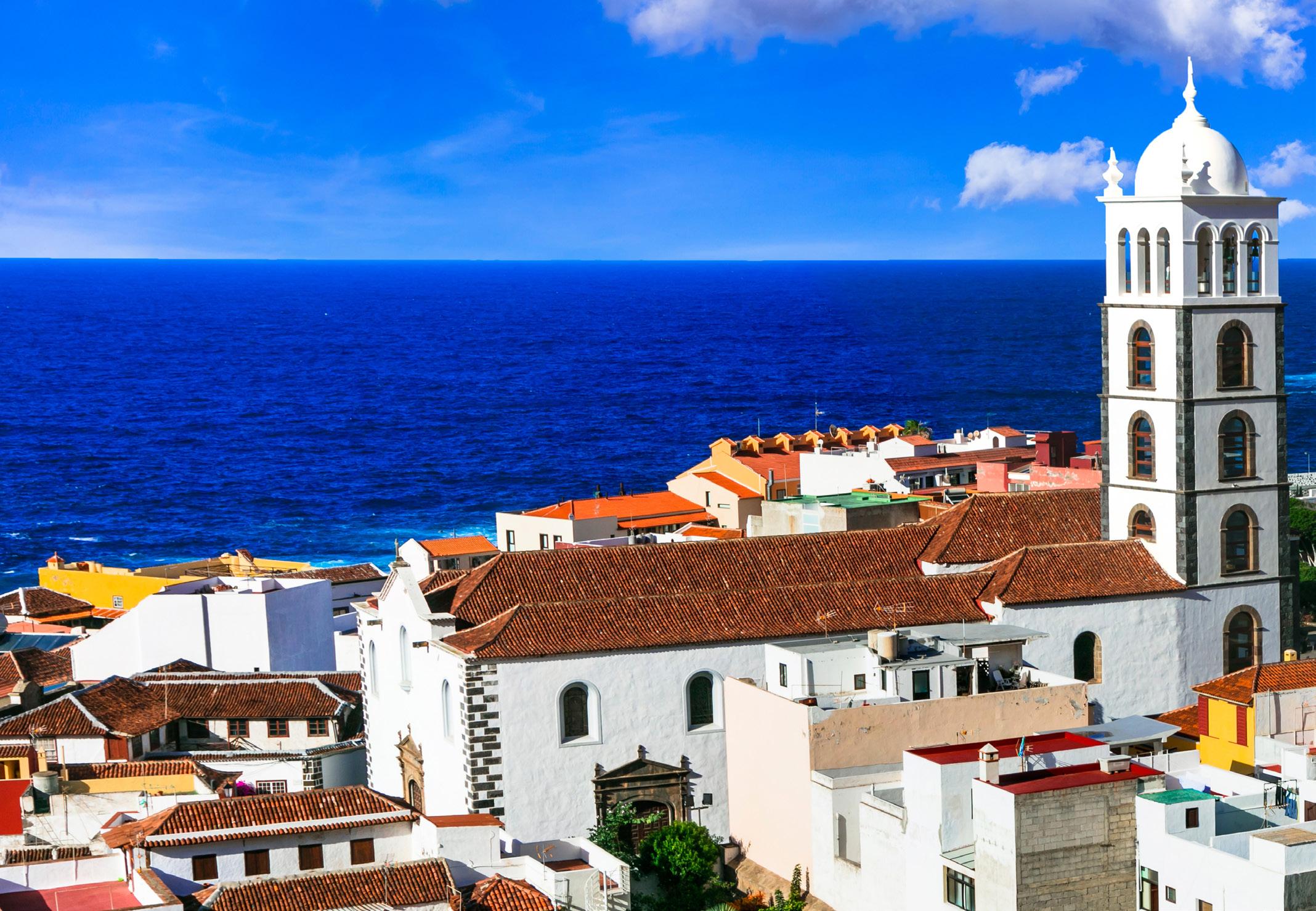
• With its subtropical climate and rich soil, Tenerife is an ideal place to grow bananas. Therefore, it makes sense that the island is home to the northernmost banana grove in the world.
• The island also houses the world’s largest solar observatory – the Observatorio del Teide. Located at an altitude of 2,390 metres (m) above sea level, scientists from all over the globe visit to study the sun and other astronomical phenomena.
• Tenerife boasts the highest peak in Spain – Mount Teide – which dominates the landscape and is situated in El Teide National Park. It is a stratovolcano, which means its violent eruptions often result in dramatic morphological changes. Although it is officially an active volcano, experts confirm it is safe to hike up.
• Tenerife’s flag is the same design as Scotland’s because both share St. Andrew as their patron saint.
• 43 percent of the Canary Islands’ population live in Tenerife.
• The canary bird was named after the island, not vice versa.

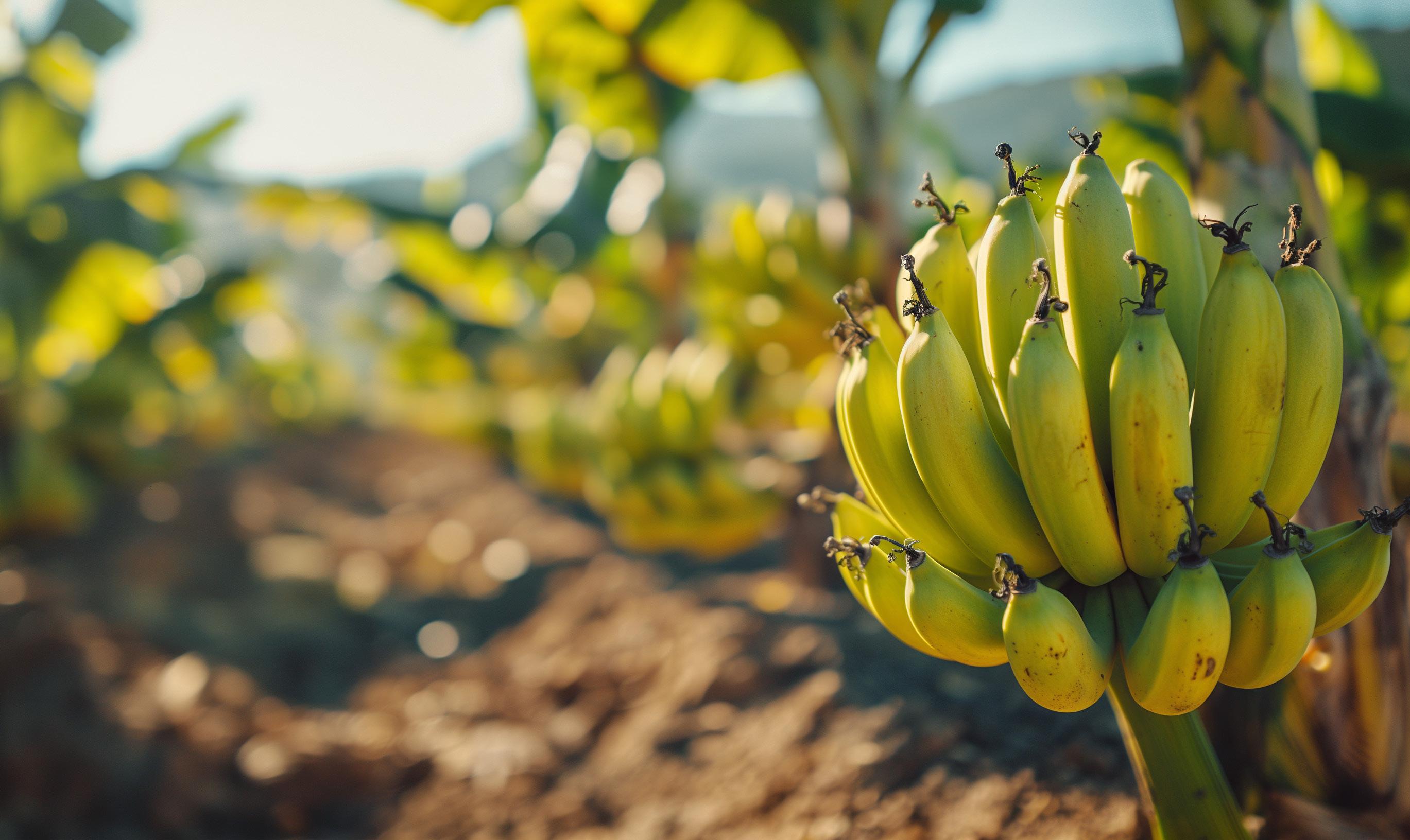
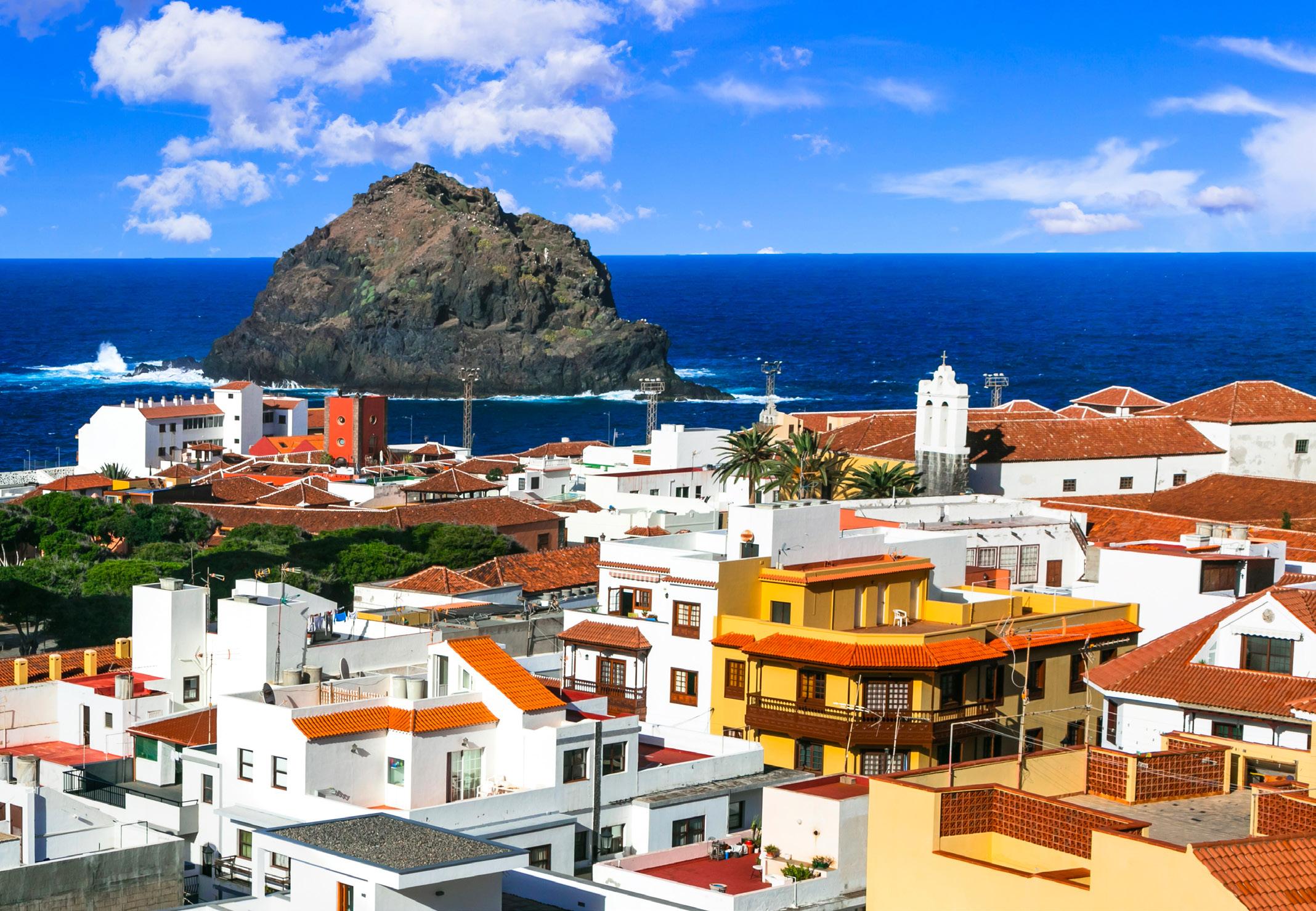
As the most verdant of the Canary Islands, Tenerife is the perfect blend of forests, beaches, volcanic mystery, and picturesque local towns. On the north side of the island, colonial Spanish cities such as La Laguna, a UNESCO World Heritage Site, await.
Look beyond the tourist spots of the famous southern beaches with their all-inclusive resorts and nightclubs and discover the island’s extraordinary beauty and diversity, with remote mountain-ridge villages, cultured port settlements, and charming ancient towns creating an authentic Tenerife experience.
From striking ravines and dramatic cliffs to disconnecting and unwinding on one of the beaches, most of which have been awarded Blue Flag certification, Tenerife is truly captivating.
Many of the beaches are manufactured due to the island’s volcanic nature, and those that are naturally formed have the characteristic black sand. Whilst there, lucky visitors might see green sea turtles, angel sharks, or even dolphin pods.
Known as a hiker’s paradise, the mountainous terrain offers breathtaking vistas where adventurers can meet the iconic Tenerife lizard, an endemic species. Indeed, the island’s biological diversity is impressive, with over 800 native species of flora and fauna.
Travelling to Tenerife doesn’t have to be expensive. easyjet offers direct low-cost flights from many UK airports, including Bristol, London Gatwick, London Luton, Edinburgh, Liverpool, and Manchester.
easyJet operates direct flights from other European cities, including Germany, France, Italy, the Netherlands, and Switzerland, to Tenerife South (TFS), the largest of the two airports on the island.
With Suntransfers, getting from the airport to the accommodation is hassle-free. Shuttle buses are available; alternatively, private taxis, minivans, mini-coaches, and minibuses ensure guests have a relaxing journey to their destination.
Whilst there, GetYourGuide, an online marketplace for travel activities, is recommended for booking tours and excursions.

Vast expanses of thermophilic forests give way to olive bushes, palm trees, and the odd dragon tree, symbolising the Canary Islands.
Furthermore, thanks to its mild year-round climate, there are always activities and experiences on offer. However, not everything is about the great outdoors, as there are plenty of indoor cultural places of interest to visit. The Museum of Nature and Archaeology (MUNA) in the port city of Santa Cruz has an abundance of exhibitions and collections, offering the chance to learn more about the natural riches of the islands.
Most importantly, visitors have the opportunity to discover the culture of the Guanches, the original inhabitants of Tenerife prior to the arrival of European settlers. For art enthusiasts, there are myriad galleries dotted around the island, and for the discerning ear, there is the Auditorio de Tenerife for performing arts, including festivals and operas.

Regarding sustenance, Tenerife is teeming with tapas and beach bars; the island even boasts seven Michelin-starred restaurants. Although the local fare is Canarian, there are a plethora of options for other cuisines. To accompany the food, one of the most popular refreshments is the barraquito – a must-try mixture of condensed milk, Licor 43, coffee, and cinnamon, garnished with a lemon twist and served layered in a tall glass.
The lush green island panorama and year-round sunshine make it the perfect wintertime escape –especially during carnival season when the palm-treelined streets are awash with colourful floats and masked revellers.
From El Teide National Park to the enchanting walls of Anaga, the Pyramids of Güimar, and the Los Gigantes cliffs, Tenerife is brimming with endless surprises waiting to be explored.
SLEEP:
FOR A BESPOKE STAY…
Villa Rosaluz transports guests away from generic hotel resorts and into a dreamy paradise in an Instagrammable setting. With four bedrooms all with ensuite bathrooms, a private heated pool, jacuzzi, cinema room, and private gym, it is tempting to never leave this blissful bubble; however, the beach and local village are just a short walk away.
FOR AN EXTRAORDINARY EXPERIENCE…
Oliver’s Travels’ poolside villas are the epitome of luxury, with stunning decor and aesthetically pleasing scenery when dining al fresco. These sumptous retreats are ideal for families, friends, celebrations, or relaxation, and there are 39 options to accommodate between two and 10 people.
DO:
FOR AN OCEAN ADVENTURE…
Explore the south coast of Tenerife with Las Galletas’ private luxury motor yacht. Cruise the waves while watching for whales and dolphins gliding through the brilliant blue of the Atlantic Ocean, stop for a buffet lunch and a spot of snorkelling, or just sit back, relax, and enjoy the shoreline vistas. The yacht is accompanied by a crew of two, food and drink, and snorkelling and fishing equipment.
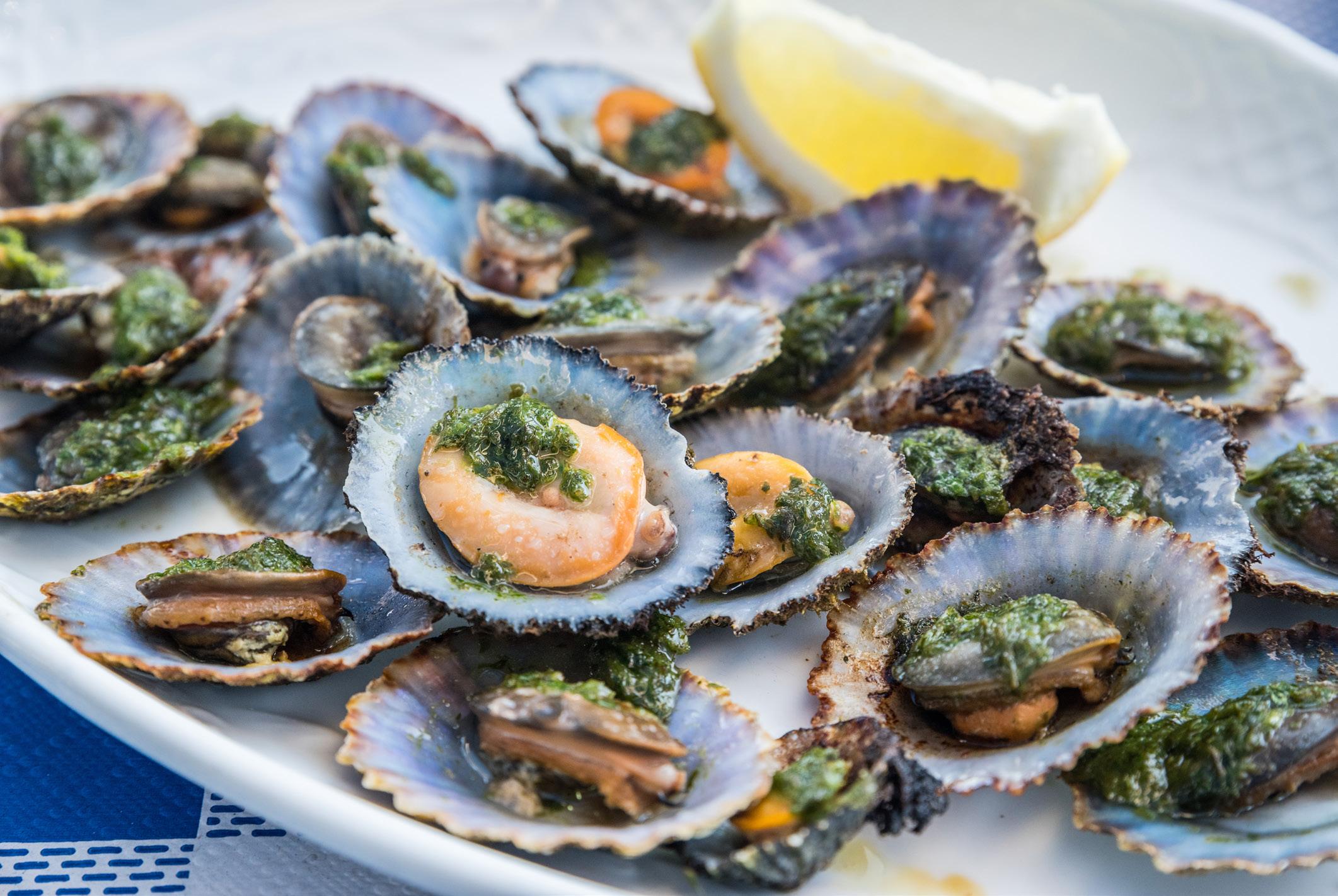


From unexpected events to crowded places, visiting different cities and countries can be challenging for autistic people. We delve into the unique globetrotting experiences of Alex Stratikis, Founder of Autism Adventures Abroad
WRITER: RACHEL CARR
Sensory overload is often an unavoidable aspect of travel, with the vibrant sights, sounds, and smells of diverse cultures and continents.
For autistic visitors, this can be overwhelming and stressful; this is where Alex Stratikis, Founder of Autism Adventures Abroad, steps in to provide support.
“I realised there wasn’t much of a platform for autistic voices to share their experiences with the tourism industry. Therefore, I started writing daily blogs to build my portfolio while formulating a website and honing my vision,” he opens.
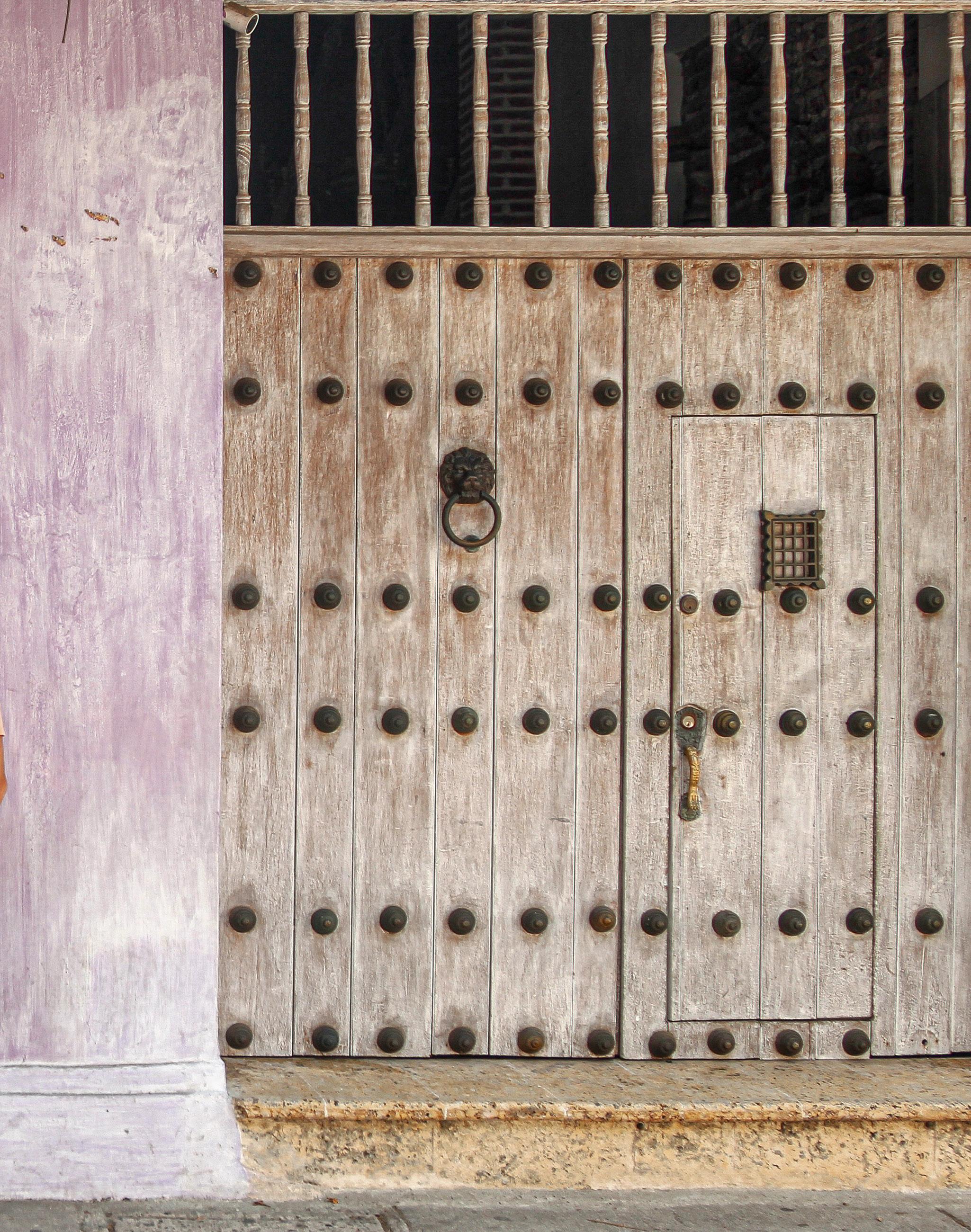



“There is a reason why the unemployment rate for autistic people in the UK – approximately 78 percent – is the highest of any disabled group, which is intrinsically linked to how society currently operates as a whole. This can often present us with insurmountable barriers despite our capabilities.”
After struggling to start his career, which had a detrimental effect on Stratikis’ mental health, he was motivated to bridge the gap between the current offerings in the tourism industry and the specific needs of autistic travellers.
Using his extensive travel experience, including solo trips to over 60 countries, Stratikis engages in accessible travel consultancy and advisory work alongside travel writing, photography, autistic and neurodivergent advocacy, and public speaking work.
Through his extensive travels, Stratikis has gained a broad view of the areas lacking support for autistic and neurodivergent travellers.
• Inspire young autistic adults to travel by sharing Stratikis’ journey, insights, hints, tips, and advice. This includes highlighting best practices in the travel, tourism, and hospitality sectors to ensure that autistic and neurodivergent individuals can confidently travel, knowing that their needs will be understood and supported by the staff.

• Work with the travel, tourism, and hospitality sectors to advise them on reviewing and improving their accessibility offerings to attract and support autistic adults – a huge untapped customer base. This is primarily informed by Stratikis’ lived experience as an autistic traveller and the invaluable skills, knowledge, and experience he has gained over the years.

However, he is reluctant to pinpoint which countries are more inclusive than others because a destination can fall short in one area but excel in another.
“I’ve encountered various approaches in different settings, although I find airports and airlines to be majorly lacking in support for autistic travellers overall – there is a lot of stress and anxiety surrounding the process for me. Additionally, there is an over-reliance on social cues and time management to get you through the flight,” he explains.
Dealing with unexpected delays and cancellations can also be challenging for autistic individuals during the flying experience.
“Immigration officers also put pressure on individuals while carefully scrutinising their word choices and body language, with some countries’ methods more excessive than others.”
The sunflower lanyard scheme, a widely recognised initiative in major international airports, is a prime example of practical support for autistic travellers. Trained staff can identify travellers with hidden disabilities who need additional assistance, support, and resources to ensure a pleasant experience.
“There has also been an upsurge in autistic travellers allowed to do a run through of the airport prior to their flight to alleviate any anxieties they may have. Neither programme is perfect, and comprehensive and standardised implementations must be adopted across the board with mandatory staff awareness training coming first and foremost,” urges Stratikis.
On a positive note, he has been pleasantly surprised by Italy’s comprehensive accessible tourism policy and execution. During his most recent visits, the staff were well-informed about accessibility protocols, leading to one of his most memorable trips.


Regarding must-see attractions, No.1 Royal Crescent, located in Bath, UK, stands out for Stratikis.
“Everything about this attraction was perfect; the website was well laid out with concise explanations on accessibility, and the staff were appropriately trained. Even the floor mapping that guides guests was amazingly executed.
“All neurodivergent visitors can pick up sensory bags upon entry, and detailed visual stories and sensory maps are available both online and in print for anyone who wishes to become more acquainted with the buildings, its features, and the exhibitions,” he informs.

Due to a heavy focus on social situations, autistic solo travellers often face challenges such as feeling overwhelmed and experiencing burnout.
“One of the most detrimental risks for me is staying in a hostel environment; this is one of the reasons why I now prefer to travel solo. Despite this, I enjoy meeting new people from diverse backgrounds and have made many close friends while travelling. It’s a great opportunity to connect with people who share your passions and interests whose paths you might otherwise not cross,” Startikis enthuses.



Alex Stratikis, Founder: “Many European countries, and a few outside the continent, offer visitors with disabilities free entry to attractions. For example, Italy provides access to all major sites without any cost – entrance is granted to individuals upon receipt of a valid form of proof.
“The ethos behind the scheme encourages travellers with disabilities to visit destinations and attractions. Many in the tourism industry now recognise the market potential for accessibility and inclusivity but have concurrently grasped that people with disabilities often fall into the most underprivileged areas of society due to challenges in employment.
“This is just one method of breaking down the barriers preventing people from travelling or fully experiencing new things. It always receives a phenomenal reception from those in the tourism industry whenever I raise the issue.
“It is also worth noting that the stipulations vary greatly between locations. Some may include free entry for a carer or companion, others provide free passes or allow line-skipping, and some have specific requirements regarding the type of proof you can use. Therefore, it’s always best to carefully research each attraction online beforehand to avoid any unpleasant surprises at the entrance.”
However, there are limits for Stratikis, as burnout can sometimes take days or weeks to fully recover from and participating in every activity and outing can negatively affect the remainder of the trip.
“Since travelling, I have learned more about myself than I previously knew – my wants, needs, desires, and most importantly, how to assert my boundaries. I am more comfortable declining things now, especially because I know it will leave me fatigued and exhausted.
“For example, I find nightclubs very overstimulating for extended periods; I prefer quieter options and would decline in most instances.”
The combination of loud, overcrowded environments, rapidly changing lights, a heavy focus on body language and eye contact, and socialising can be overwhelming for autistic travellers.
Therefore, having access to a private room within a hotel or hostel can provide the necessary space to recharge.
“If you want to travel, don’t let apprehension hold you back. Travel can be unpredictable, which is a scary concept for many autistic people due to many having a strong dependence on structure and routines. Nevertheless, understanding compromise has been a learning curve as I had to adjust while travelling to experience all the wonders of the world in the least
inimical way. Each subsequent journey builds upon past experiences, making future adventures smoother and more enjoyable.
“I encourage everyone to gain a better understanding of themselves before travelling, as each trip is personal to the individual. It’s important for autistic travellers to be aware of potential triggers to have a solid foundation for knowing what actions to take and avoid,” Stratikis concludes.


is committed to protecting the oceans, fueled by creating innovative partnerships, re-envisioning the way travel, and encouraging daily changes for a better healthier ocean planet. We dive in and find out more with CEO and President, Dr Drew Richardson
Writer: Ed Budds


The Professional Association of Diving Instructors (PADI) is a recreational diving membership and diver training organisation founded in 1966 by John Cronin and Ralph Erickson.
PADI, whose corporate headquarters is located in California, is the world’s largest purpose-driven scuba diving organisation with a global membership of 6,600 dive centres and 128,000 professionals operating in 180 countries and territories, along with over 30 million certified divers trained across the planet.
“Pivoting on our 50th anniversary as a global organisation in 2016, PADI doubled down on its dedication to exploring and saving our blue planet and making the wonder of the underwater world accessible to all –empowering people to experience, explore, and take meaningful action as ocean torchbearers to protect our planet beneath the surface. Our ‘Seek Adventure, Save the Ocean’ slogan encapsulates the soul of the organisation,” introduces Dr Drew Richardson, CEO and President.
“For over half a century, we have been the way the world learns to dive, setting the standard for the highest quality training, underwater safety, and conservation initiatives while also continuing to evolve the sport of scuba diving into a passionate lifestyle,” he sets out.
Positioning itself as for divers, by divers, the company is obsessed with transforming lives and, with its global foundation, PADI Aware, creating positive ocean change through meaningful diver citizen science work.
The PADI cultural diaspora is, by definition, a juggernaut – the company is a true force for good.
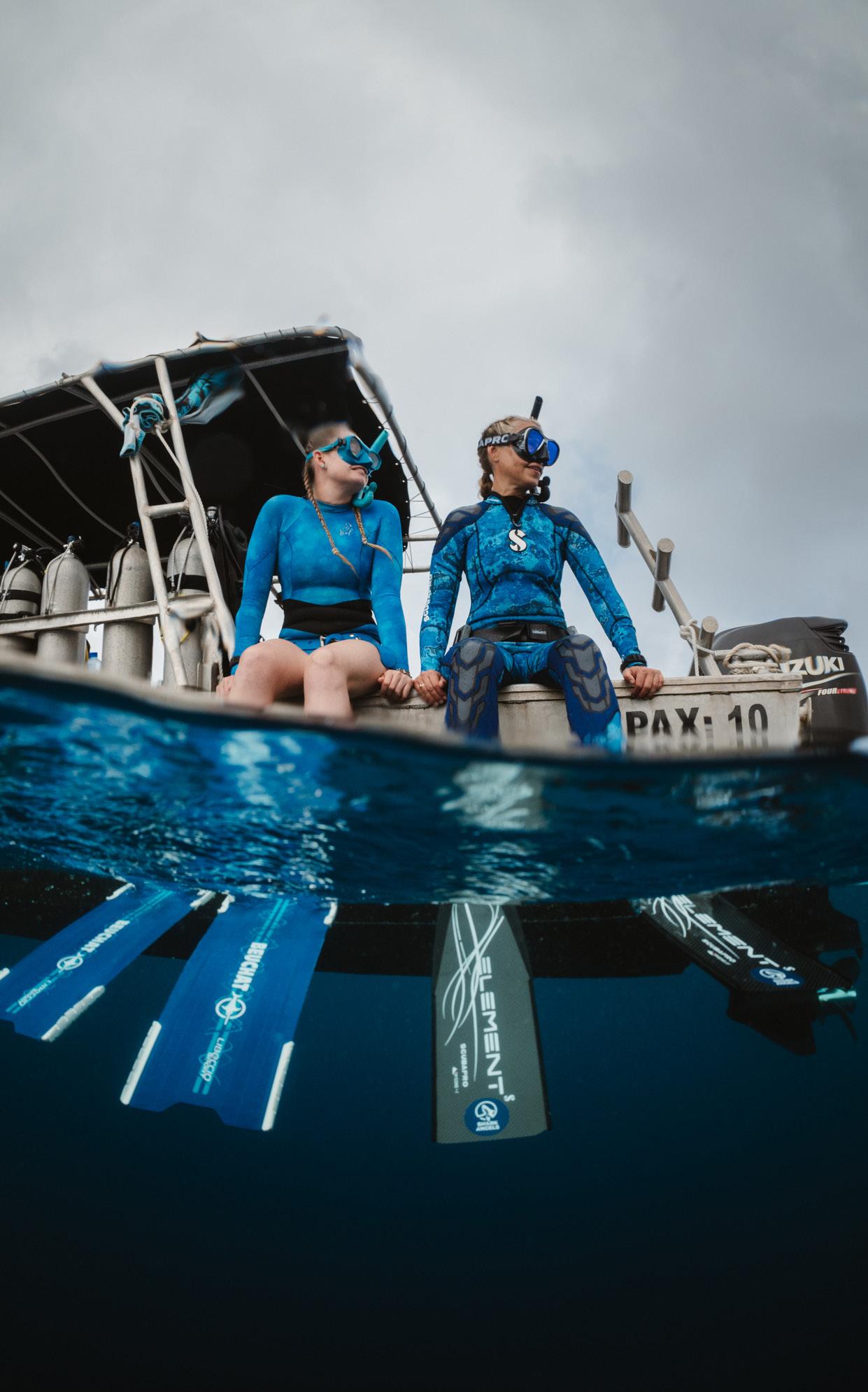
Consequently, in the mind of PADI, no constructive personal action is insignificant, and the entire organisation is therefore empowered to make a difference by taking meaningful action.
“We’ve collectively established innovative programs that are fuelled by individual actions, like snorkelling or scuba diving with a PADI Eco Centre or taking part in our Dive Against Debris programme that can scale into measurable and positive ocean change,” Richardson confirms.
PADI is innovating new ways to set into motion a movement by divers and water enthusiasts to restore and protect the ocean, both locally and globally.
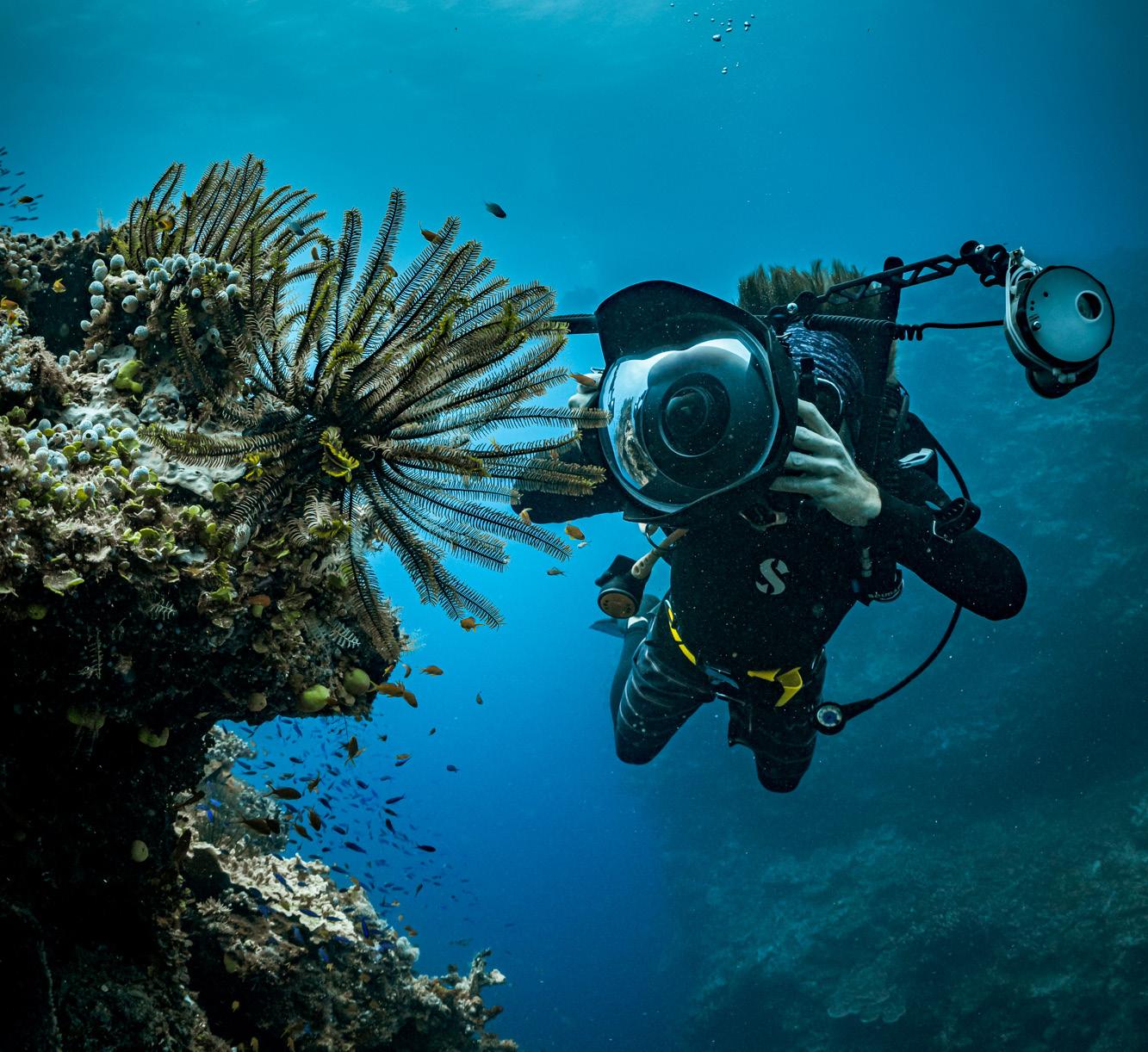


“THE FUTURE OF OUR SHARED BLUE PLANET HAS NEVER BEEN MORE DEPENDENT ON OUR INNOVATION, OUR DECISIONS, AND OUR ACTIONS TO PRIORITISE OCEAN LIFE SUPPORT, AS HUMANITY AND THE OCEAN ARE BOTH VULNERABLE AND CO-DEPENDENT”
– DR
DREW RICHARDSON, CEO AND PRESIDENT, PADI
“The future of our shared blue planet has never been more dependent on our innovation, our decisions, and our actions to prioritise ocean life support, as humanity and the ocean are both vulnerable and co-dependent,” he explains.
Thanks to the collection of innovative PADI programmes that create more superheroes for the planet, the company has collectively protected over 100 endangered
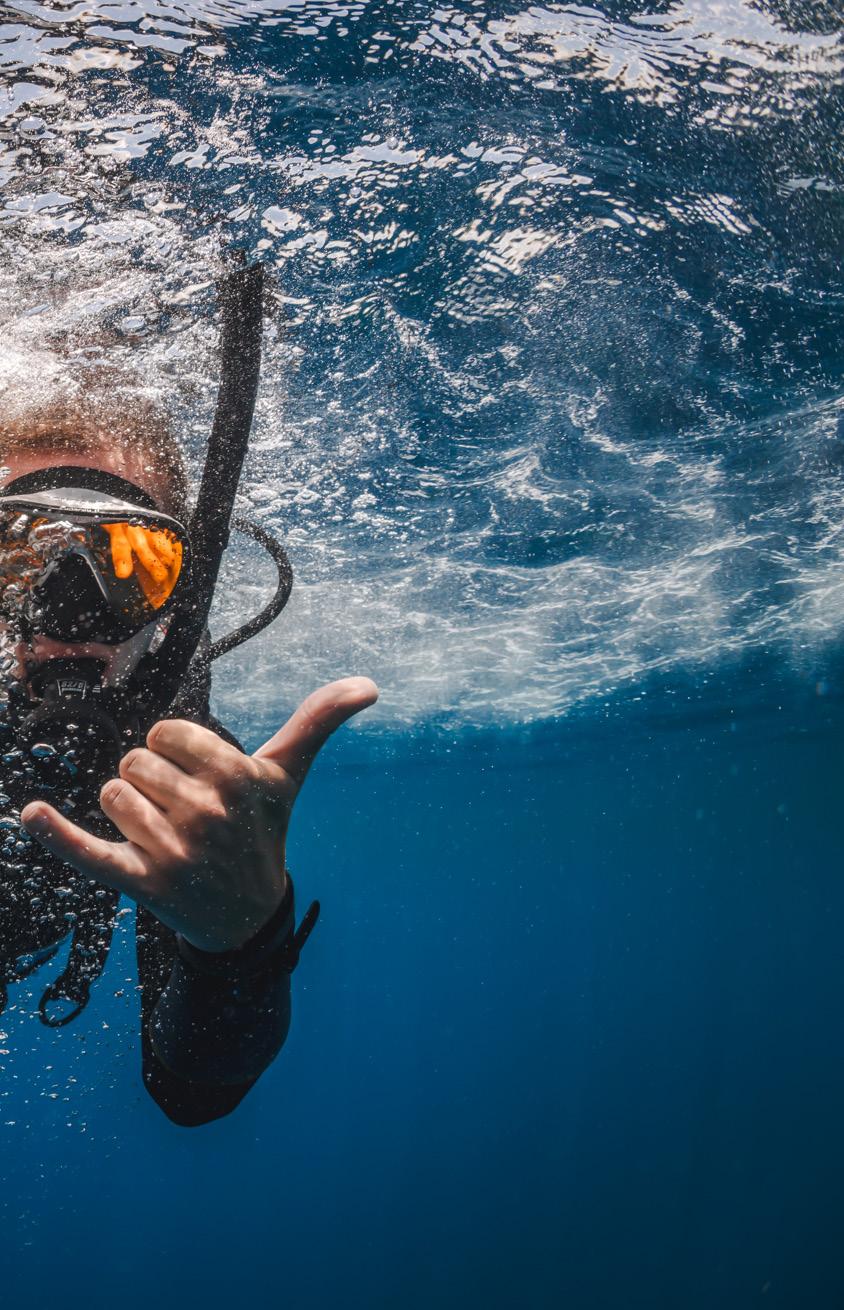

species of sharks and rays, now listed on the Convention of International Trade of Endangered Species (CITES) collection of wild fauna and flora.
Alongside this, PADI has successfully established the largest underwater marine debris citizen science database through the Dive Against Debris program, which has enlisted divers to remove and report over 2.3 million pieces of plastic from the ocean.
Additionally, to date, PADI has released more than 37,000 entangled animals from human-induced marine debris to live and perhaps reproduce their species.
“The honour of being named on Fast Company’s 2024 Most Innovative Companies list further proves that we all must be innovators to accomplish our shared goal of restoring ourselves, our relationship with each other, and this blue planet we all call home.”

PADI’s global network of 6,600 dive centers and resorts, referred to as mission hubs, continue to exist as the backbone for driving the organisation’s innovative programmes to create positive ocean change, enabling its people to engage in underwater citizen science, participate in conservation events, and advocate for local policy changes, all led locally by PADI members.
These mission hubs host volunteer conservation events, train confident and comfortable purpose-driven divers, participate in global campaigns like Dive Against Debris, lobby and advocate for local governments, and spearhead conservation initiatives.
“A powerful example is how, over the last three years, our mission hubs have helped secure protection for vulnerable shark and ray species. In 2021, they helped secure protection for mako sharks at the International Commission for the Conservation of Atlantic Tuna (ICCAT),” Richardson divulges.
Elsewhere, in 2022, PADI helped secure protection for requiem sharks, a group which includes 54 CITES shark and ray species.
These achievements were both accomplished by actively mobilizing PADI’s mission hubs, urging local governments to take action, and asking scuba diving communities to sign petitions.
“Another example is how our Dive Against Debris programme has been continually mobilized by our mission hubs and scuba divers alike, who log critical data in the world’s largest marine debris database,” he adds.
It was this data, collected in 2018, that largely influenced Vanuatu’s ban of plastic bags. As a result of this, a community-driven microeconomy emerged and Vanuatuan people created bags using banana and palm leaves.
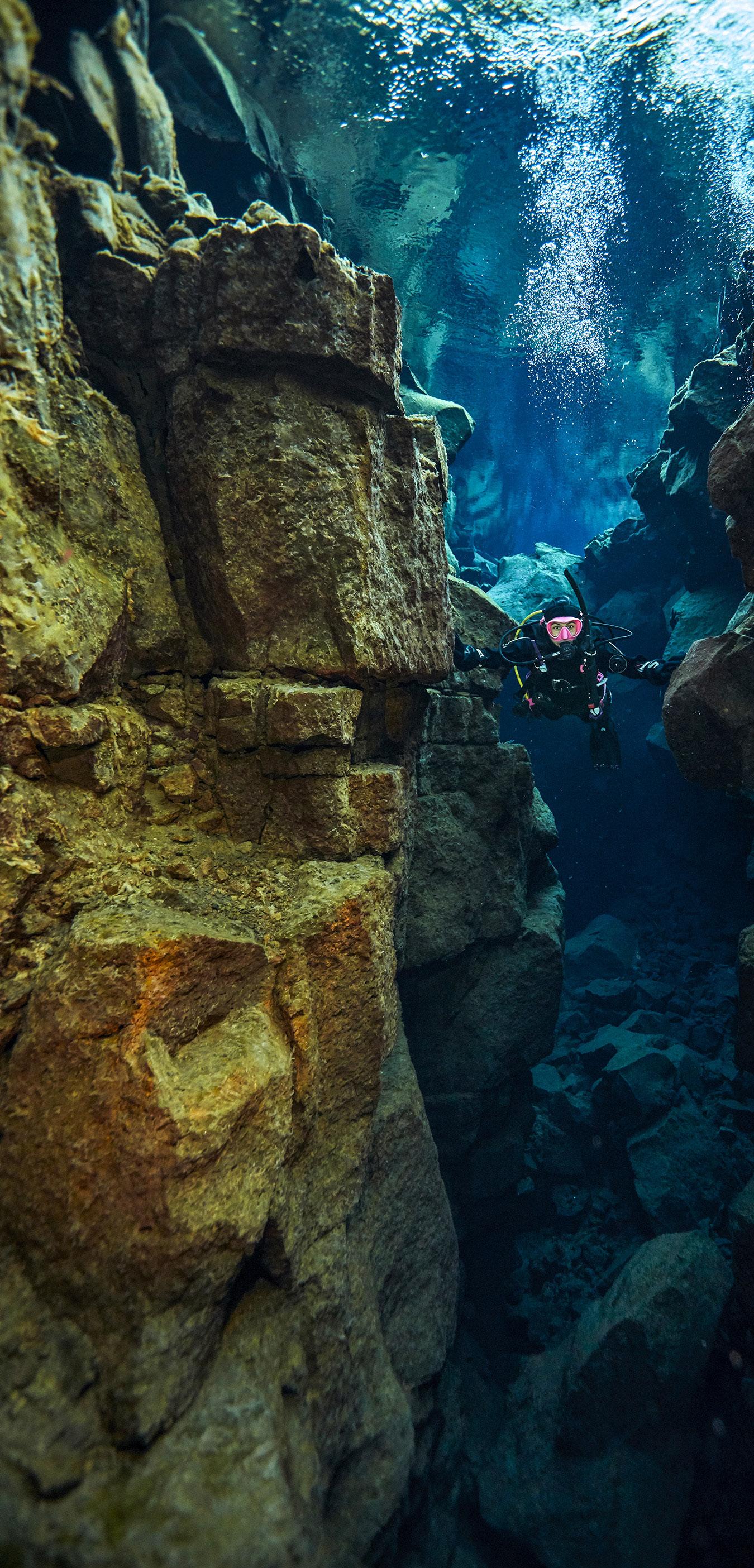

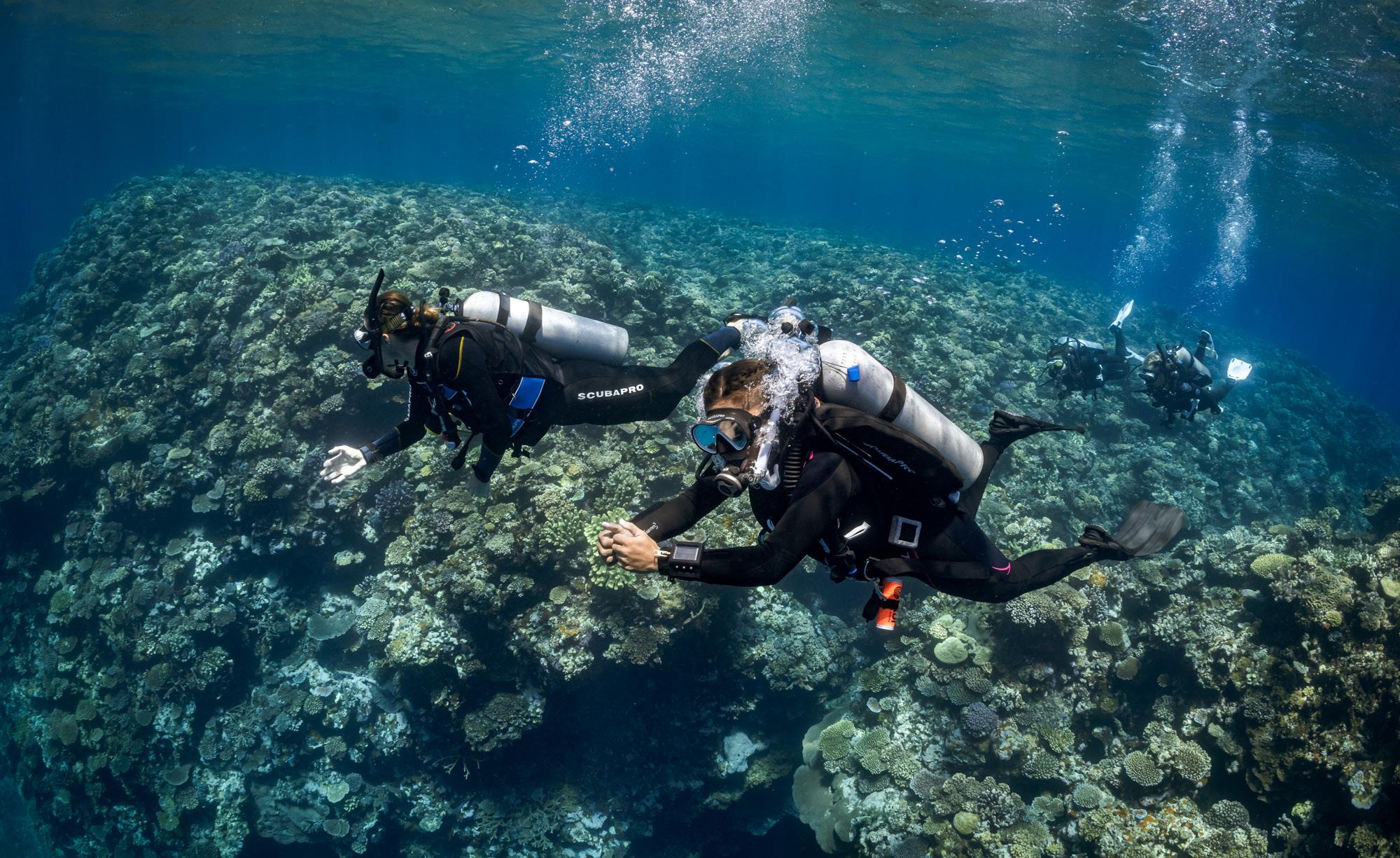
“THE
HONOUR OF BEING NAMED ON FAST COMPANY’S 2024 MOST INNOVATIVE COMPANIES LIST FURTHER PROVES THAT WE ALL MUST BE INNOVATORS TO ACCOMPLISH OUR SHARED GOAL OF RESTORING OURSELVES, OUR RELATIONSHIP WITH EACH OTHER, AND THIS BLUE PLANET WE ALL CALL HOME”
– DR DREW RICHARDSON, CEO AND PRESIDENT, PADI
“Due to the success of the policy decision, Vanuatu has become a champion country promoting international cooperation to tackle marine debris. This is living proof of how PADI’s innovative programmes drive local action that can truly have a global impact.”

For PADI’s 30 million scuba divers worldwide, one of the most important things when diving is knowing they are making sustainable and responsible decisions.
In 2022, PADI supported a Green Fins study that identified divers wanted to make an impact with their travel, with 75 percent of respondents willing to pay more for regenerative stays and experiences.
However, 85 percent of respondents also indicated it was difficult to find validated sustainable operators they could trust.
“To support the growing demand for regenerative diving and assist our global membership in taking constructive local action to protect their surrounding natural ecosystems, we launched the PADI Eco Center
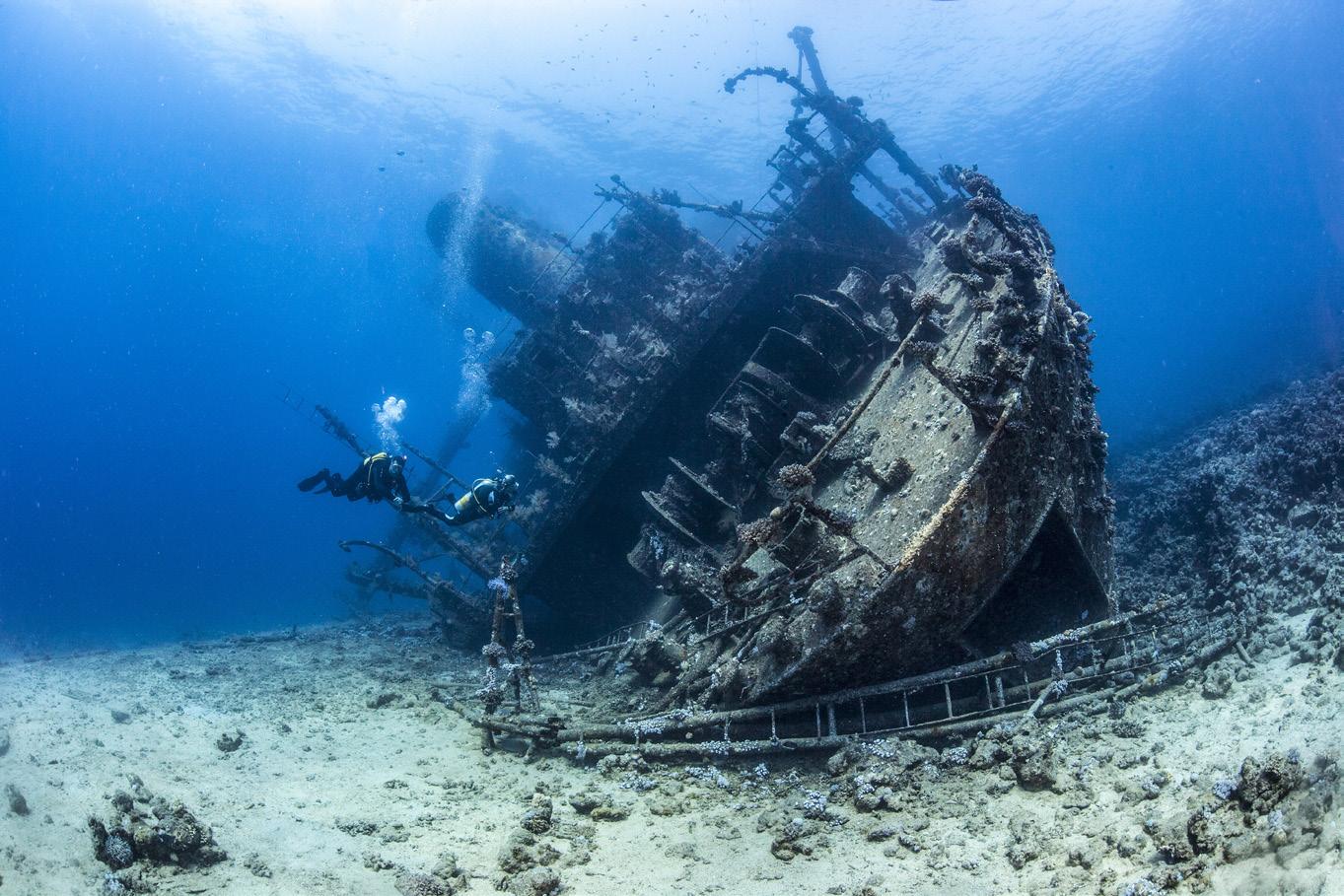

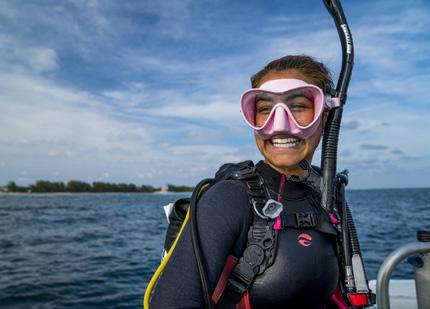

credentials on Earth Day 2023 to make dive tourism a force for good and allow consumers to confidently put their money towards sustainable and regenerative businesses,” Richardson recalls.
To honour and uphold the integrity of this credential programme, PADI uses the United Nations (UN) Environment Programme and the Reef-World Foundation’s Green Fins initiative to run the accreditation assessment and help elevate the planet’s most environmentally committed dive operators.
“We now have over 100 PADI Eco Centers accredited in 32 countries

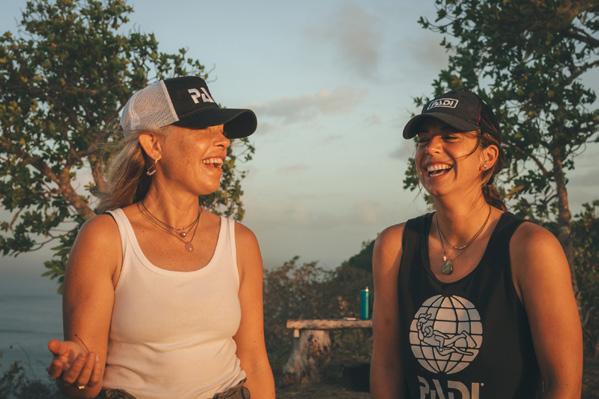

within the first year of the programme and are working to have over 10 percent of our membership base accredited by 2030. The growing popularity and success of this programme also led to PADI Eco Centers recently being named the number two ranked travel trend for 2024 by Conde Nast Traveller,” he enthuses.
Furthermore, PADI Eco Centers make it easier for travellers to choose to dive in protected marine areas, participate in citizen science initiatives, including education and volunteering on dive trips, and ensure their holiday really does give back
to the local community they are exploring.
“Choosing to seek adventure, explore, and steward the health of the ocean is our inspiring love story, and one which we all have the choice to share. We dive because we love the watery environment, and we have found that diving generously gives back more than it takes,” Richardson concludes proudly.














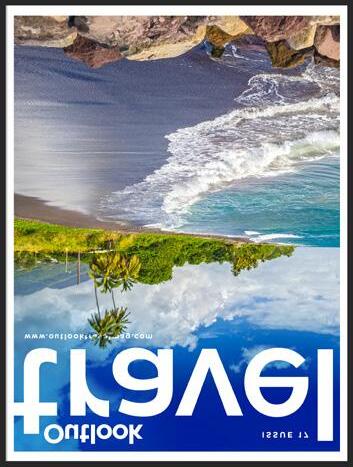
N, 11.3426°
SPORTING A VARIETY of nicknames including “La Grassa” – the Fat City – due to its rich and decadent cuisine; “La Rossa” – the Red City – based on its red-tiled roofs and leftist politics during its time as a stronghold against Nazi invasion; and “La Dotta” – the Learned City – as it boasts the world’s oldest university, Bologna is a medieval maze of elegant architecture and winding side streets, radiating charm far too often overlooked in favour of more touristic, neighbouring cities like Rome, Milan, or Florence.
The moment you enter the historic city centre, you will be hypnotised by the colonnaded history that envelops the streets and peels off in the orange Pantone layers of terracotta buildings, defining towers, elaborate streetlamps, and restaurants that spill out onto the pavement in a cascade of music, laughter, and food so sybaritic it tastes sinful.
Seemingly engulfed in a sepialike filter, the city is an intersection
of history and radical modernity, where sophisticated operagoers and gleefully inebriated students fuse together the glow of former Renaissance glory and graffitiembellished piazzas.
Old, beautiful, gritty, and vibrant, Bologna is famous for its extensive porticoes, which were recently declared a UNESCO World Heritage Site. Dating back to 1041, in an effort to expand living spaces, the porticoes cover more than 38 kilometres (km) within the centre and can reach up to 53km outside the city walls, adorned with murals, frescoes, and vermilionpainted concrete.
Founded in 1088, the University of Bologna is the oldest university in Europe and holds the formidable Teatro Anatomico, an ornate anatomical theatre built in 1636 entirely from wood and decorated with statues of ancient physicians, local athenaeum, and “spellati” –skinned figures. Lectures were once conducted here with cadavers laid out in the centre of the room on the marble slab for dissection. There is even a spy hole in the wall of the theatre where the church once watched classes to ensure not too
much progress was being sought.
Additionally, there is the Basilica de San Petronio, which, although started in 1390, appears noticeably unfinished, with the bottom half composed of striking red and white marble in stark contrast with the abrupt brick above. There are differing stories as to why this occurred, from the church running out of money to the Pope halting construction as he did not approve of a cathedral larger than St. Peter’s Basilica in Rome.
Quadrilatero is one of the most atmospheric areas of the city, whose narrow streets have served as the city’s market since the Middle Ages and are still ripe with stalls full of hanging mortadella, giant parmesan wheels, legs of ham that rival even the stoutest of toddlers, and a cornucopia of fragranced fruit and vegetables.
Despite having suffered considerable damage from bombings in the Second World War, Bologna is one of the few remaining walled cities in Europe, with the city centre containing an immense wealth of critically important Medieval, Renaissance, Baroque, and modernday culture, utterly perfect to lose yourself in.


The unrelenting demand to travel, both for business and leisure purposes, is showing no signs of slowing up, and for Outlook Publishing, the growing extent to which we are covering this industry across our existing titles has led to the launch of Outlook Travel magazine. The major component of the publication takes the form of our Outlook Travel Guides, providing executives, avid travellers and our existing 575,000 international subscribers with the ultimate rundown of all the major economic drivers and thriving hubs across the world, with exclusive input from tourism industry associations and stakeholders – the people who know these places the best.
You can join the vast numbers of tourism sector players enjoying the exposure we provide across our digital and print platforms with a range of options, from advertising through to free-of-charge editorials, extensive social media saturation, enhanced B2B networking opportunities, and a readymade forum to attract new investment and increase exposure.
For further information, visit www.outlooktravelmag.com



































Situated in the heart of Menlyn Maine, The Maslow Time Square is Sun International’s 238-room specialist business hotel. Not only a destination for professionals, but a portal for travellers. Boasting 17 floors that o er everything from business to leisure with tempting eateries, a relaxing business lounge and 13 bespoke conference rooms.






















209 Aramist Avenue, Pretoria, Gauteng, South Africa
Tel: 0860 846 377 / 0860 TIMESQ

For the perfect balance of business and pleasure, be our guest.



Central Reservations: +27 11 780 7800 timesquare.reservations@suninternational.com







